
The MIT Press Fall 2018
Inspired by hairy, semiaquatic mammals such as beavers and sea otters, a group of MIT researchers are fabricating fur-like rubbery pelts and are learning how these mammals stay warm and even dry while diving underwater. The researchers from Mechanical Engineering are Anette (Peko) Hosoi, Alice Nasto, José Alvarado; from applied mathematics, instructor Pierre-Thomas Brun as well as former visiting researcher Marianne Regli and Christophe Clanet, both of École Polytechnique in France.
CONTENTS
Trade 1-86
Academic Trade 87-93
Professional 94-127
Paperback Reprints 128-142 Journals 143-146
The Digital MIT Press 147 Order Information 148-151 Index 152-153
Essential Knowledge Backlist 154-155 Paperback Highlights 156-157
Recent Highlights 158-159
Gift Books 160-inside back cover
DISTRIBUTED BY THE MIT PRESS
Afterall Books 65
SA+P Press 66 Boston Review 67-68 Goldsmiths Press 69-70 Semiotext(e) 71-76
Zone Books 77-78
Strange Attractor Press 79-86
 Cover photo copyright Felice C. Frankel, from Picturing Science and Engineering
Illustration from Atlas of Poetic Botany.
Cover photo copyright Felice C. Frankel, from Picturing Science and Engineering
Illustration from Atlas of Poetic Botany.
current affairs | public health
Plagues and the Paradox of Progress
Why the World Is Getting Healthier in Worrisome Ways
Thomas J. Bollyky
Plagues and parasites have played a central role in world affairs, shaping the evolution of the modern state, the growth of cities, and the disparate fortunes of national economies. This book tells that story, but it is not about the resurgence of pestilence. It is the story of its decline. For the first time in recorded history, virus, bacteria, and other infectious diseases are not the leading cause of death or disability in any region of the world. People are living longer, and fewer mothers are giving birth to many children in the hopes that some might survive. And yet, the news is not all good. Recent reductions in infectious disease have not been accompanied by the same improvements in income, job opportunities, and governance that occurred with these changes in wealthier countries decades ago. There have also been unintended consequences. In this book, Thomas Bollyky explores the paradox in our fight against infectious disease: the world is getting healthier in ways that should make us worry.

Bollyky interweaves a grand historical narrative about the rise and fall of plagues in human societies with contemporary case studies of the consequences. Bollyky visits Dhaka—one of the most densely populated places on the planet—to show how low-cost health tools helped enable the phenomenon of poor world megacities. He visits China and Kenya to illustrate how dramatic declines in plagues have affected national economies. Bollyky traces the role of infectious disease in the migrations from Ireland before the potato famine and to Europe from Syria and elsewhere today.
Historic health achievements are remaking a world that is both worrisome and full of opportunities. Whether the peril or promise of that progress prevails, Bollyky explains, depends on what we do next.
Thomas J. Bollyky is the Director of the Global Health Program at the Council on Foreign Relations and an Adjunct Professor of Law at Georgetown University.
Why the news about the global decline of infectious diseases is not all good.
September 6 x 9, 272 pp. 52 illus.
$27.95T/£22.00 cloth 978-0-262-03845-4
A Council on Foreign Relations Book
TRADE 1 MITPRESS.MIT.EDU | FALL 2018
Why policies should be based on careful consideration of their costs and benefits rather than on intuition, popular opinion, interest groups, and anecdotes.
September 6 x 9, 288 pp.
$27.95T/£22.00 cloth 978-0-262-03814-0
The Cost-Benefit Revolution
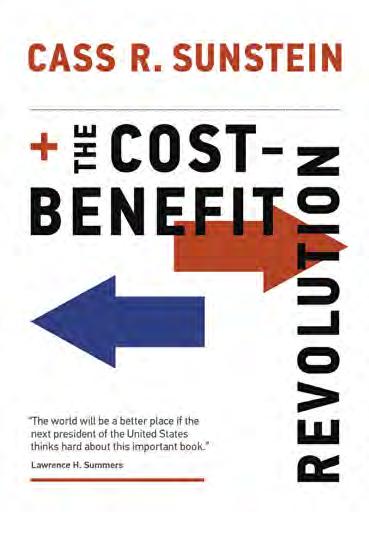 Cass R. Sunstein
Cass R. Sunstein
Opinions on government policies vary widely. Some people feel passionately about the child obesity epidemic and support government regulation of sugary drinks. Other people argue that people should be able to eat and drink whatever they like. Some people are alarmed about climate change and favor aggressive government intervention. Others don’t feel the need for any sort of climate regulation. In The Cost-Benefit Revolution, Cass Sunstein argues our major disagreements really involve facts, not values. It follows that government policy should not be based on public opinion, intuitions, or pressure from interest groups, but on numbers— meaning careful consideration of costs and benefits. Will a policy save one life, or one thousand lives? Will it impose costs on consumers, and if so, will the costs be high or negligible? Will it hurt workers and small businesses, and, if so, precisely how much?
As the Obama administration’s “regulatory czar,” Sunstein knows his subject in both theory and practice. Drawing on behavioral economics and his well-known emphasis on “nudging,” he celebrates the costbenefit revolution in policy making, tracing its defining moments in the Reagan, Clinton, and Obama administrations (and pondering its uncertain future in the Trump administration). He acknowledges that public officials often lack information about costs and benefits, and outlines state-of-the-art techniques for acquiring that information. Policies should make people’s lives better. Quantitative cost-benefit analysis, Sunstein argues, is the best available method for making this happen—even if, in the future, new measures of human well-being, also explored in this book, may be better still.
Cass R. Sunstein, Robert Walmsley University Professor at Harvard Law School, was Administrator of the White House Office of Information and Regulatory Affairs in the Obama administration from 2009 to 2012. He is the author of, among other books, Choosing Not to Choose, The Ethics of Influence, and (with Richard H. Thaler) Nudge: Improving Decisions about Health, Wealth, and Happiness. He is also the recipient of the 2018 Holberg Prize, one of the largest annual international research prizes awarded to scholars who have made outstanding contributions to research in the arts and humanities, social science, law, or theology.
TRADE 2 FALL 2018 | MITPRESS.MIT.EDU
political science | public policy
Blueprint
How DNA Makes Us Who We Are
Robert Plomin
In Blueprint, behavioral geneticist Robert Plomin describes how the DNA revolution has made DNA personal by giving us the power to predict our psychological strengths and weaknesses from birth. A century of genetic research shows that DNA differences inherited from our parents are the consistent lifelong sources of our psychological individuality—the blueprint that makes us who we are. This, says Plomin, is a game-changer. It calls for a radical rethinking of what makes us who were are.

Plomin has been working on these issues for almost fifty years, conducting longitudinal studies of twins and adoptees. He reports that genetics explains more of the psychological differences among people than all other factors combined. Genetics accounts for fifty percent of psychological differences—not just mental health and school achievement, but all psychological traits, from personality to intellectual abilities. Nature defeats nurture by a landslide.
Plomin explores the implications of this, drawing some provocative conclusions—among them that parenting styles don’t really affect children’s outcomes once genetics is taken into effect. Neither tiger mothers nor attachment parenting affects children’s ability to get into Harvard. After describing why DNA matters, Plomin explains what DNA does, offering readers a unique insider’s view of the exciting synergies that came from combining genetics and psychology.
Robert Plomin is Professor of Behavioural Genetics at the Institute of Psychiatry, Psychology, and Neuroscience at King’s College London. He previously held positions at the University of Colorado at Boulder and Pennsylvania State University. He was elected a Fellow of the Academy of Medical Sciences and of the British Academy for his twin studies and his groundbreaking work in behavioral genetics. He is the author or coauthor of many books, including G is for Genes: The Impact of Genetics on Education and Achievement (with Kathryn Asbury).
A top behavioral geneticist makes the case that DNA inherited from our parents at the moment of conception can predict our psychological strengths and weaknesses.
October 6 x 9, 256 pp. $27.95T/£22.00 cloth 978-0-262-03916-1
Not for sale in the UK or Commonwealth countries
TRADE 3 MITPRESS.MIT.EDU | FALL 2018 science
The world of Twitterbots, from botdom’s greatest hits to bot construction to the place of the bot in the social media universe. September 6 x 9, 360 pp. 98 illus.
$29.95T/£24.00 cloth 978-0-262-03790-7
Twitterbots
Making Machines that Make Meaning
Tony Veale and Mike Cook
Twitter offers a unique medium for creativity and curiosity for humans and machines. The tweets of Twitterbots, autonomous software systems that send messages of their own composition into the Twittersphere, mingle with the tweets of human creators; the next person to follow you on Twitter or to “like” your tweets may not be a person at all. The next generator of content that you follow on Twitter may also be a bot. This book examines the world of Twitterbots, from botdom’s greatest hits to the hows and whys of bot-building to the place of bots in the social media landscape.
In Twitterbots, Tony Veale and Mike Cook examine not only the technical challenges of bending the affordances of Twitter to the implementation of your own Twitterbots but also the greater knowledgeengineering challenge of building bots that can craft witty, provocative, and concise outputs of their own. Veale and Cook offer a guided tour of some of Twitter’s most notable bots, from the deadpan @big_ben_clock, which tweets a series of BONGs every hour to mark the time, to the delightful @pentametron, which finds and pairs tweets that can be read in iambic pentameter, to the disaster of Microsoft’s @TayAndYou (which “learned” conspiracy theories, racism, and extreme politics from other tweets). They explain how to navigate Twitter’s software interfaces to program your own Twitterbots in Java, keeping the technical details to a minimum and focusing on the creative implications of bots and their generative worlds. Every Twitterbot, they argue, is a thought experiment given digital form; each embodies a hypothesis about the nature of meaning making and creativity that encourages its followers to become willing test subjects and eager consumers of automated creation.
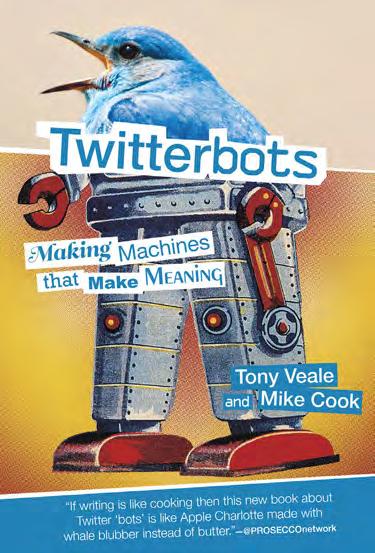
Tony Veale is Associate Professor of Computer Science at University College Dublin. Mike Cook is Senior Research Fellow at the University of Falmouth, UK.
“Some bots are as malevolent as their authors. Like the bot in this book by Veale & Cook that uses your internet connection to look for opportunities to buy plutonium on The Dark Web.”
—@PROSECCOnetwork
“If writing is like cooking then this new book about Twitter ‘bots’ is like Apple Charlotte made with whale blubber instead of butter.”
—@PROSECCOnetwork
These bot critiques were generated at https://cheapbotsdonequick.com/source/PROSECCOnetwork
TRADE 4 FALL 2018 | MITPRESS.MIT.EDU
media | technology
computer science
Bits to Bitcoin
How Our Digital Stuff Works
Mark Stuart Day illustrated by C. A. Jennings
Most of us feel at home in front of a computer; we own smartphones, tablets, and laptops; we look things up online and check social media to see what our friends are doing. But we may be a bit fuzzy about how any of this really works. In Bits to Bitcoin, Mark Stuart Day offers an accessible guide to our digital infrastructure, explaining the basics of operating systems, networks, security, and related topics for the general reader. He takes the reader from a single process to multiple processes that interact with each other; he explores processes that fail and processes that overcome failures; and he examines processes that attack each other or defend themselves against attacks.

Day tells us that steps are digital but ramps are analog; that computation is about “doing something with stuff” and that both the “stuff” and the “doing” can be digital. He explains timesharing, deadlock, and thrashing; virtual memory and virtual machines; packets and networks; resources and servers; secret keys and public keys; Moore’s law and Thompson’s hack. He describes how building in redundancy guards against failure and how endpoints communicate across the internet. He explains why programs crash or have other bugs, why they are attacked by viruses, and why those problems are hard to fix. Finally, after examining secrets, trust, and cheating, he explains the mechanisms that allow the Bitcoin system to record money transfers accurately while fending off attacks.
Mark Stuart Day was Chief Scientist at Riverbed Technology for a decade and is currently Visiting Lecturer at MIT. With more than thirty patented inventions, he has also made technical contributions at Dropbox, IBM, Cisco, Digital, and BBN.
An accessible guide to our digital infrastructure, explaining the basics of operating systems, networks, security, and other topics for the general reader.
September 6 x 9, 360 pp. 100 illus.
$29.95T/£24.00 cloth 978-0-262-03793-8
TRADE 5 MITPRESS.MIT.EDU | FALL 2018
What it takes to be a genius: nine essential and contradictory ingredients. September 5 3/8 x 8, 336 pp. 8 illus.
$27.95T/£22.00 cloth 978-0-262-03811-9
The Genius Checklist
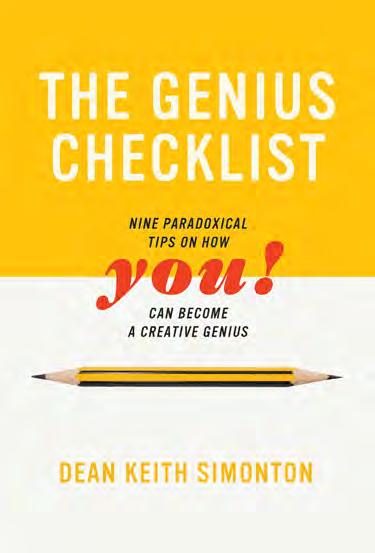
Nine Paradoxical Tips on How You Can Become a Creative Genius
Dean Keith Simonton
What does it take to be a genius? A high score on an IQ test? Brilliant physicist Richard Feynman’s IQ was too low for membership in Mensa. Suffering from varying degrees of mental illness? Creativity is often considered a marker of mental health. Be a child prodigy like Mozart, or a later bloomer like Beethoven? Die tragically young, like Keats, or live to a ripe old age like Goethe? In The Genius Checklist, Dean Keith Simonton examines the key factors in creative genius and finds that they are more than a little contradictory.
Simonton, who has studied creativity and genius for more than four decades, draws on both scientific research and stories from the lives of famous creative geniuses that range from Isaac Newton to Vincent van Gogh to Virginia Woolf. He explains the origin of IQ tests and the art of estimating the IQ of long-dead historical figures (John Stuart Mill: 200; Charles Darwin: 160). He compares IQ scores with achieved eminence as measures of genius, and he draws a distinction between artistic and scientific genius. He offers a nuanced view of birth order as an influential factor (in the James family, for example, three geniuses at three different birth-order positions: William James, firstborn; Henry James, second born; Alice James, born fifth and last); considers Malcolm Gladwell’s 10,000 Hour Rule; and describes how the “lone” genius gets enmeshed in social networks.
Genius, Simonton explains, operates in ways so subtle that they seem contradictory. Genius is born and made, the domain of child prodigies and their elders. Simonton’s checklist gives us a new, integrative way to understand geniuses—and perhaps even to nurture your own genius!
Dean Keith Simonton, an expert on creativity and genius, is Distinguished Professor Emeritus in the Department of Psychology at the University of California, Davis. He is the author of Origins of Genius, Creativity in Science, Genius 101, and other books.
TRADE 6 FALL 2018 | MITPRESS.MIT.EDU
psychology
Atlas of Poetic Botany
 Francis Hallé with Éliane Patriarca translated by Erik Butler
Francis Hallé with Éliane Patriarca translated by Erik Butler
This Atlas invites the reader to tour the farthest reaches of the rainforest in search of exotic—poetic—plant life. Guided in these botanical encounters by Francis Hallé, who has spent forty years in pursuit of the strange and beautiful plant specimens of the rainforest, the reader discovers a plant with just one solitary, monumental leaf; an invasive hyacinth; a tree that walks; a parasitic laurel; and a dancing vine. Further explorations reveal the Rafflesia arnoldii, the biggest flower in the world, with a crown of stamens and pistils the color of rotten meat that exude the stench of garbage in the summer sun; underground trees with leaves that form a carpet on the ground above them; and the biggest tree in Africa, which can reach seventy meters (more than 200 feet) in height, with a four-meter (about 13 feet) diameter. Hallé’s drawings, many in color, provide a witty accompaniment.
Like any good tour guide, Hallé tells stories to illustrate his facts. Readers learn about, among other things, Queen Victoria’s rubber tree; legends of the moabi tree (for example, that powder from the bark confers invisibility); a flower that absorbs energy from a tree; plants that imitate other plants; a tree that rains; and a fern that clones itself.
Hallé’s drawings represent an investment in time that returns a dividend of wonder more satisfying than the ephemeral thrill afforded by the photograph. The Atlas of Poetic Botany allows us to be amazed by forms of life that seem as strange as visitors from another planet.
Francis Hallé is a botanist and biologist who specializes in tropical rainforests and tree architecture. He is Professor Emeritus at the University of Montpellier.
Botanical encounters in the rainforest: trees that walk, a leaf as big as an awning, a plant that dances.
November 7 1/2 x 10 1/2, 128 pp. 42 color illus.
$24.95T/£20.00 cloth 978-0-262-03912-3
Illustrations from Atlas of Poetic Botany.


TRADE 7 MITPRESS.MIT.EDU | FALL 2018
nature
Portraits and texts recover lost queer history: the lives of people who didn’t conform to gender norms, from the fifteenth through the twentieth centuries. September 6 x 9, 88 pp. 28 color plates $24.95T/£20.00 cloth 978-0-262-03897-3
gender studies | art
Butch Heroes

Ria Brodell
Katherina Hetzeldorfer, tried “for a crime that didn’t have a name” (same sex sexual relations) and sentenced to death by drowning in 1477; Charles aka Mary Hamilton, publicly whipped for impersonating a man in eighteenth-century England; Clara, aka “Big Ben,” over whom two jealous women fought in 1926 New York: these are just three of the lives that the artist Ria Brodell has reclaimed for queer history in Butch Heroes Brodell offers a series of twenty-eight portraits of forgotten but heroic figures, each accompanied by a brief biographical note. They are individuals who were assigned female at birth but whose gender presentation was more masculine than feminine, who did not want to enter into heterosexual marriage, and who often faced dire punishment for being themselves.
Brodell’s detailed and witty paintings are modeled on Catholic holy cards, slyly subverting a religious template. The portraits and the texts offer intriguing hints of lost lives: cats lounge in the background of domestic settings; one of the figures is said to have been employed variously as “a prophet, a soldier, or a textile worker”; another casually holds a lit cigarette. Brodell did extensive research for each portrait, piecing together a life from historical accounts, maps, journals, paintings, drawings, and photographs, finding the heroic in the forgotten.

Ria Brodell is an artist and educator based in Boston who has had solo and group exhibitions throughout the United States and whose work has been featured in the Guardian, ARTNews, the Boston Globe, and New American Paintings. Brodell is a part-time lecturer at the School of the Museum of Fine Arts at Tufts University.

TRADE 8 FALL 2018 | MITPRESS.MIT.EDU
Illustrations from Butch Heroes.
The Autobiography of a Transgender Scientist
Ben Barres
foreword by Nancy Hopkins
Ben Barres was known for his groundbreaking scientific work and for his groundbreaking advocacy for gender equality in science. In this book, completed shortly before his death from pancreatic cancer in December 2017, Barres (born Barbara Barres in 1954) describes a life full of remarkable accomplishments—from his childhood as a precocious math and science whiz to his experiences as a female student at MIT in the 1970s to his female-to-male transition in his forties, to his scientific work and role as teacher and mentor at Stanford.

Barres recounts his early life—his interest in science, first manifested as a fascination with the mad scientist in Superman; his academic successes; and his gender confusion. Barres felt even as a very young child that he was assigned the wrong gender. After years of being acutely uncomfortable in his own skin, Barres transitioned from female to male. He reports he felt nothing but relief on becoming his true self. He was proud to be a role model for transgender scientists.
As an undergraduate at MIT, Barres experienced discrimination, but it was after transitioning that he realized how differently male and female scientists are treated. He became an advocate for gender equality in science, and later in life responded pointedly to Larry Summers’s speculation that women were innately unsuited to be scientists. Privileged white men, Barres writes, “miss the basic point that in the face of negative stereotyping, talented women will not be recognized.” At Stanford, Barres made important discoveries about glia, the most numerous cells in the brain, and he describes some of his work. “The most rewarding part of his job,” however, was mentoring young scientists. That, and his advocacy for women and transgender scientists, ensures his legacy.
Ben Barres (1954–2017) was Professor and Chair of the Department of Neurology at Stanford University and one of the world’s leading researchers on the role of the brain cells known as glia.
“A great scientist, leader, mentor, and friend; Ben leaves a towering legacy of goodness.”
—Jo Handelsman, Director,
for Discovery
Wisconsin Institute
A leading scientist describes his life, his gender transition, his scientific work, and his advocacy for gender equality in science.
October 5 3/8 x 8, 176 pp.
$21.95T/£16.99 cloth 978-0-262-03911-6
TRADE 9 MITPRESS.MIT.EDU | FALL 2018 science
biography
|
How colleges and universities can live up to their ideals of diversity, and why inclusivity and excellence go hand in hand. September 6 x 9, 528 pp.
$29.95T/£24.00 cloth 978-0-262-03784-6
education
An Inclusive Academy
Achieving Diversity and Excellence
Abigail Stewart and Virginia Valian
Most colleges and universities embrace the ideals of diversity and inclusion, but many fall short, especially in the hiring, retention, and advancement of faculty who would more fully represent our diverse world—in particular women and people of color. In this book, Abigail Stewart and Virginia Valian argue that diversity and excellence go hand in hand and provide guidance for achieving both.

Stewart and Valian, themselves senior academics, support their argument with comprehensive data from a range of disciplines. They show why merit is often overlooked; they offer statistics and examples of individual experiences of exclusion, such as being left out of crucial meetings; and they outline institutional practices that keep exclusion invisible, including reliance on proxies for excellence, such as prestige, that disadvantage outstanding candidates who are not members of the white male majority.
Perhaps most important, Stewart and Valian provide practical advice for overcoming obstacles to inclusion. This advice is based on their experiences at their own universities, their consultations with faculty and administrators at many other institutions, and data on institutional change. Stewart and Valian offer recommendations for changing structures and practices so that people become successful in ways that benefit everyone. They describe better ways of searching for job candidates; evaluating candidates for hiring, tenure, and promotion; helping faculty succeed; and broadening rewards and recognition.
Abigail Stewart is Sandra Schwartz Tangri Distinguished University Professor of Psychology and Women’s Studies at the University of Michigan. She is the coauthor of Theorizing Feminism: Parallel Trends in the Humanities and Social Sciences Virginia Valian is Distinguished Professor of Psychology, Linguistics, and Speech-Language-Hearing Sciences at Hunter College and CUNY Graduate Center. She is the author of Why So Slow: The Advancement of Women (MIT Press).
TRADE 10 FALL 2018 | MITPRESS.MIT.EDU
language | cultural studies
Dictionary of Gestures
Expressive Comportments and Movements in Use around the World
François Caradec translated by Chris Clarke illustrated by Philippe Cousin

Gestures convey meaning with a flourish. A vigorous nod of the head, a bold jut of the chin, an enthusiastic thumbs-up: all speak louder than words. Yet the same gesture may have different meanings in different parts of the world. What Americans understand as the “A-OK gesture,” for example, is an obscene insult in the Arab world. This volume is the reference book we didn’t know we needed—an illustrated dictionary of 850 gestures and their meanings around the world. It catalogs voluntary gestures made to communicate openly—as distinct from sign language, dance moves, involuntary “tells,” or secret handshakes—and explains what the gesture conveys in a variety of locations. It is organized by body part, from top to bottom, from head (nodding, shaking, turning) to foot (scraping, kicking, playing footsie).
We learn that “to oscillate the head while gently throwing it back” communicates approval in some countries even though it resembles the headshake of disapproval used in other countries; that “to tap a slightly inflated cheek” constitutes an erotic invitation when accompanied by a wink; that the middle finger pointed in the air signifies approval in South America. We may already know that it is a grave insult in the Middle East and Asia to display the sole of one’s shoe, but perhaps not that motorcyclists sometimes greet each other by raising a foot. Illustrated with clever line drawings and documented with quotations from literature (the author, François Caradec, was a distinguished and prolific historian of literature, culture, and humorous oddities, as well as a novelist and poet), this dictionary offers readers unique lessons in polylingual meaning.
François Caradec (1924–2008) was a French writer and a member of both the Collége de ’Pataphysique and the Oulipo. His voluminous oeuvre includes biographies of Raymond Roussel and Alfred Jarry, as well as an encyclopedia of practical jokes and a dictionary of French slang. Caradec was a devoted specialist in Alphonse Allais, compiling and editing his collected works, and was one of the first historians of the bande dessinée in France.
Illustrations from Dictionary of Gestures.


An illustrated guide to more than 850 gestures and their meanings around the world, from a nod of the head to a click of the heels.
October 6 x 9, 312 pp. 915 illus.
$24.95T/£20.00 cloth 978-0-262-03849-2
TRADE 11 MITPRESS.MIT.EDU | FALL 2018
A collection of writing about design from the influential, eclectic, and adventurous Design Observer . October 8 x 10, 240 pp. 77 color illus., 1 b&w illus. $34.95T/£27.00 cloth 978-0-262-03910-9

design
Culture Is Not Always Popular

Fifteen Years of Design Observer edited by Michael Bierut and Jessica
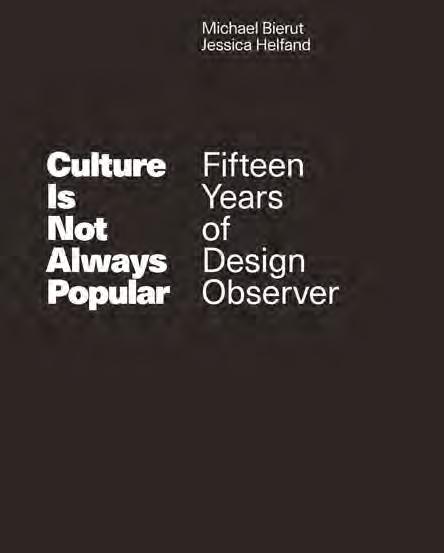 Helfand
Helfand
Founded in 2003, Design Observer inscribes its mission on its homepage: Writings about Design and Culture. Since its inception, the site has consistently embraced a broader, more interdisciplinary, and circumspect view of design’s value in the world—one not limited by materialism, trends, or the slipperiness of style. Dedicated to the pursuit of originality, imagination, and close cultural analysis, Design Observer quickly became a lively forum for readers in the international design community. Fifteen years, 6,700 articles, 900 authors, and nearly 30,000 comments later, this book is a combination primer, celebration, survey, and salute to a certain moment in online culture. This collection includes reassessments that sharpen the lens or dislocate it; investigations into the power of design idioms; off-topic gems; discussions of design ethics; and experimental writing, new voices, hybrid observations, and other idiosyncratic texts. Since its founding, Design Observer has hosted conferences, launched a publishing imprint, hosted three podcasts, and attracted more than a million followers on social media. All of these enterprises are rooted in the original mission to engage a broader community by sharing ideas on ways that design shapes—and is shaped by—our lives.
From the essay “I Believe in Design” by Kenneth FitzGerald (photo by author).
Michael Bierut is a partner in the New York office of Pentagram. His book How to Use Graphic Design to Sell Things, Explain Things, Make Things Look Better, Make People Laugh, Make People Cry, and (Every Once in a While) Change the World accompanied a 2015 retrospective of his work, which was part of the School of Visual Art’s Masters Series. Jessica Helfand is the author of numerous books on design and visual culture including Design: The Invention of Desire. Cofounders of Design Observer and cohosts of two podcasts, Bierut and Helfand are on the faculty at Yale School of Art and Yale School of Management. Each is a recipient of the AIGA Medal, the design profession’s highest honor. TRADE 12 FALL 2018 | MITPRESS.MIT.EDU
From the essay “Today” by Eric Baker (original artist unknown). From Culture Is
Not Always Popular
Illustrations
from Culture Is Not Always Popular.
Picturing Science and Engineering
 Felice C. Frankel
Felice C. Frankel
One of the most powerful ways for scientists to document and communicate their work is through photography. Unfortunately, most scientists have little or no training in that craft. In this book, celebrated science photographer Felice Frankel offers a guide for creating science images that are both accurate and visually stunning. Picturing Science and Engineering provides detailed instructions for making science photographs using the DSLR camera, the flatbed scanner, and the phone camera. The book includes a series of step-by-step case studies, describing how final images were designed for cover submissions and other kinds of visualizations. Lavishly illustrated in color throughout, the book encourages the reader to learn by doing, following Frankel as she recreates the stages of discovery that lead to a good science visual.
Frankel shows readers how to present their work with graphics—how to tell a visual story—and considers issues of image adjustment and enhancement. She describes how developing the right visual to express a concept not only helps make science accessible to nonspecialists, but also informs the science itself, helping scientists clarify their thinking. Within the book are specific URLs where readers can view Frankel’s online tutorials—visual “punctuations” of this printed edition. Additional materials, including tutorials and videos, can be found online at the book’s website.
Felice C. Frankel is an award-winning science photographer whose photographs have appeared in many publications. A research scientist at MIT, she is the author of Envisioning Science (MIT Press), No Small Matter (with G. M. Whitesides), On the Surface of Things (with G. M. Whitesides), and Visual Strategies (with Angela H. DePace).
A guide to making scientific photographs for presentations, journal submissions, and covers, featuring step-by-step instructions and case studies, by an award-winning science photographer; illustrated in color throughout.


November 9 x 10, 480 pp. 508 color illus.
$39.95T/£30.00 cloth 978-0-262-03855-3
Published with the help of funding from Furthermore: a program of the J. M. Kaplan Fund
TRADE 13 MITPRESS.MIT.EDU | FALL 2018
science | photography
Proteus colonies growing in agar in a petri dish taken with a camera and 105 macro lens.
An SEM (Scanning Electron Micrograph) of a morpho butterfly wing that has been digitally colored.
Images from Picturing Science and Engineering
How businesses can put artificial intelligence to work now: a guide to available technologies, the tasks they can do, and practical AI business strategy.
November 6 x 9, 256 pp. 6 illus.
$29.95T/£24.00 cloth 978-0-262-03917-8
Management on the Cutting Edge series
business
The AI Advantage
How to Put the Artificial Intelligence Revolution to Work Thomas H. Davenport
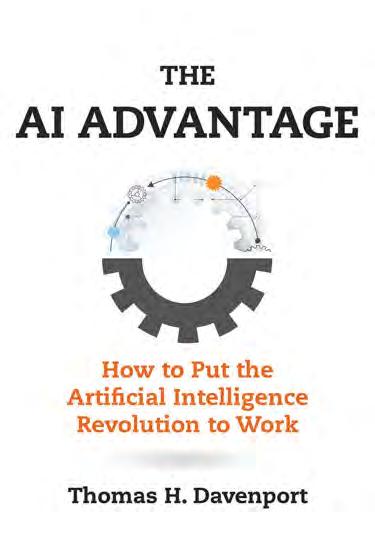
In The AI Advantage, Thomas Davenport offers a guide to using artificial intelligence—also known as cognitive technologies—in business. He describes what technologies are available and how companies can use them for business benefits and competitive advantage. He cuts through the hype of the AI craze—remember when it seemed plausible that IBM’s Watson could cure cancer?—to explain how businesses can put artificial intelligence to work now, in the real world. His key recommendation: don’t go for the “moonshot” (curing cancer, or synthesizing all investment knowledge); look for the “low-hanging fruit” to make your company more efficient.
Davenport explains that the business value AI offers is solid rather than sexy or splashy. AI will improve products and processes and make decisions better informed—important but largely invisible tasks. AI technologies won’t replace human workers but augment their capabilities, with smart machines to work alongside smart people. AI can automate structured and repetitive work; provide extensive analysis of data through machine learning (“analytics on steroids”), and engage with customers and employees via chatbots and intelligent agents. Companies should experiment with these technologies and develop their own expertise.
Davenport describes the major AI technologies and explains how they are being used, reports on the AI work done by large commercial enterprises like Amazon and Google, and outlines strategies and steps to becoming a cognitive corporation. This book provides an invaluable guide to the real-world future of business AI.
Management on the Cutting Edge
The world does not lack for management ideas. Thousands of researchers, practitioners, and other experts produce tens of thousands of articles, books, papers, posts, and podcasts each year. But only a scant few promise to truly move the needle on practice, and fewer still dare to reach into the future of what management will become. It is this rare breed of idea—meaningful to practice, grounded in evidence and built for the future— that we seek to present in this series.
—Paul Michelman, Editor-in-Chief, MIT Sloan Management Review
Thomas H. Davenport is President’s Distinguished Professor of Information Technology and Management at Babson College. He is the author of Only Humans Need Apply: Winners and Losers in the Age of Smart Machines (with Julia Kirby) and other books.
TRADE 14 FALL 2018 | MITPRESS.MIT.EDU
The Tales Teeth Tell

Development, Evolution, Behavior
Tanya M. Smith
Our teeth have intriguing stories to tell. These sophisticated time machines record growth, diet, and evolutionary history as clearly as tree rings map a redwood’s lifespan. Each day of childhood is etched into tooth crowns and roots—capturing birth, nursing history, environmental clues, and illnesses. The study of ancient, fossilized teeth sheds light on how our ancestors grew up, how we evolved, and how prehistoric cultural transitions continue to affect humans today. In The Tales Teeth Tell, biological anthropologist Tanya Smith offers an engaging and surprising look at what teeth tell us about the evolution of primates—including our own uniqueness.
Humans’ impressive set of varied teeth provides a multipurpose toolkit honed by the diet choices of our mammalian ancestors. Fossil teeth, highly resilient because of their substantial mineral content, are all that is left of some long-extinct species. Smith explains how researchers employ painstaking techniques to coax microscopic secrets from these enigmatic remains. Counting tiny daily lines provides a way to estimate age that is more powerful than any other forensic technique. Dental plaque—so carefully removed by dental hygienists today—records our ancestors’ behavior and health in the form of fossilized food particles and bacteria, including their DNA. Smith also traces the grisly origins of dentistry, reveals that the urge to pick one’s teeth is not unique to humans, and illuminates the age-old pursuit of “dental art.” The book is generously illustrated with original photographs, many in color.
Tanya M. Smith is Associate Professor in the Australian Research Centre for Human Evolution at Griffith University in Brisbane, Australia. She has held a professorship at Harvard University and fellowships at the Radcliffe Institute for Advanced Study and the Max Planck Institute for Evolutionary Anthropology.
What teeth can tell us about human evolution, development, and behavior.
November 6 x 9, 296 pp. 45 color illus., 20 b&w illus. $29.95T/£24.00 cloth 978-0-262-03871-3
TRADE 15 MITPRESS.MIT.EDU | FALL 2018
science | anthropology
How inclusive methods can build elegant design solutions that work for all.
September 5 3/8 x 8, 168 pp. 29 illus.
$22.95T/£17.99 cloth 978-0-262-03888-1
Simplicity: Design, Technology, Business, Life series
Also available in this series
The Storm of Creativity

Kyna Leski
$24.95T/£20.00 cloth 978-0-262-02994-0
Mismatch
How Inclusion Shapes Design
Kat Holmes foreword by John Maeda
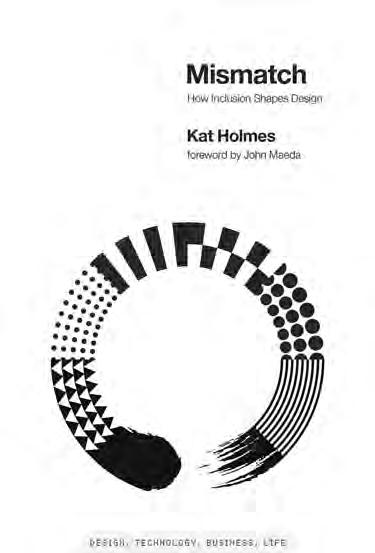
Sometimes designed objects reject their users: a computer mouse that doesn’t work for left-handed people, for example, or a touchscreen payment system that only works for people who read English phrases, have 20/20 vision, and use a credit card. Something as simple as color choices can render a product unusable for millions. These mismatches are the building blocks of exclusion. In Mismatch, Kat Holmes describes how design can lead to exclusion, and how design can also remedy exclusion. Inclusive design methods—designing objects with rather than for excluded users—can create elegant solutions that work well and benefit all.
Holmes tells stories of pioneers of inclusive design, many of whom were drawn to work on inclusion because of their own experiences of exclusion. A gamer and designer who depends on voice recognition shows Holmes his “Wall of Exclusion,” which displays dozens of game controllers that require two hands to operate; an architect shares her firsthand knowledge of how design can fail communities, gleaned from growing up in Detroit’s housing projects; an astronomer who began to lose her eyesight adapts a technique called “sonification” so she can “listen” to the stars.
Designing for inclusion is not a feel-good sideline. Holmes shows how inclusion can be a source of innovation and growth, especially for digital technologies. It can be a catalyst for creativity and a boost for the bottom line as a customer base expands. And each time we remedy a mismatched interaction, we create an opportunity for more people to contribute to society in meaningful ways.
Kat Holmes, named one of Fast Company’s “Most Creative People in Business” in 2017, is founder of Kata, a design firm with the mission of advancing inclusive product development. At Microsoft from 2010 to 2017, she led that company’s executive program for inclusive product innovation.
TRADE 16 FALL 2018 | MITPRESS.MIT.EDU design
business
|
computer science
How Smart Machines Think
Sean Gerrish preface by Kevin Scott, CTO of Microsoft
The future is here: Self-driving cars are on the streets, an algorithm gives you movie and TV recommendations, IBM’s Watson triumphed on Jeopardy over puny human brains, computer programs can be trained to play Atari games. But how do all these things work? In this book, Sean Gerrish offers an engaging and accessible overview of the breakthroughs in artificial intelligence and machine learning that have made today’s machines so smart.
Gerrish outlines some of the key ideas that enable intelligent machines to perceive and interact with the world. He describes the software architecture that allows self-driving cars to stay on the road and to navigate crowded urban environments; the million-dollar Netflix competition for a better recommendation engine (which had an unexpected ending); and how programmers trained computers to perform certain behaviors by offering them treats, as if they were training a dog. He explains how artificial neural networks enable computers to perceive the world—and to play Atari video games better than humans. He explains Watson’s famous victory on Jeopardy, and he looks at how computers play games, describing AlphaGo and Deep Blue, which beat reigning world champions at the strategy games of Go and chess. Computers have not yet mastered everything, however; Gerrish outlines the difficulties in creating intelligent agents that can successfully play video games like StarCraft that have evaded solution—at least for now.
Gerrish weaves the stories behind these breakthroughs into the narrative, introducing readers to many of the researchers involved, and keeping technical details to a minimum. Science and technology buffs will find this book an essential guide to a future in which machines can outsmart people.
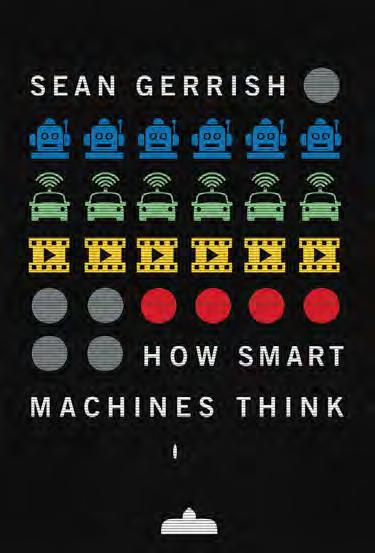
Sean Gerrish is a software engineer and machine learning geek. He has worked as an engineer at Teza Technologies and as an engineering manager for machine learning and data science teams at Google.
Everything you’ve always wanted to know about self-driving cars, Netflix recommendations, IBM’s Watson, and video game-playing computer programs.
September 6 x 9, 320 pp. 62 illus.
$27.95T/£22.00 cloth 978-0-262-03840-9
TRADE 17 MITPRESS.MIT.EDU | FALL 2018
An accessible and engaging guide to the atom, the smallest, most fundamental constituent of matter.
October
8 1/4 x 9 1/2, 192 pp. 150 illus., color throughout $33.00T cloth 978-0-262-03736-5
For sale in US and dependencies and Canada only
The Atom A
Visual Tour
Jack Challoner
Until now, popular science has relegated the atom to a supporting role in defining the different chemical elements of the periodic table. In this book, Jack Challoner places the atom at center stage. The Atom investigates the quest to identify the smallest, most fundamental constituents of matter—and how that quest helps us to understand what everything is made of and how it all works. Challoner covers a wide range of topics— including the development of scientific thinking about atoms and the basic structure of atoms; how atomic interactions account for the familiar properties of everyday materials; the power of the atomic nucleus; and what the mysterious quantum realm of subatomic particles can tell us about the very nature of reality.
Illustrated in color throughout, The Atom offers clear answers to questions we have all pondered, as well as some we have never even dreamed of. It describes the amazing discoveries scientists have made about the fundamental building blocks of matter—from quarks to nuclear fission to the “God particle”—and explains them accessibly and concisely. The Atom is the engaging and straightforward introduction to the topic that we didn’t get in school.
Jack Challoner is the author of more than forty books on science and technology, including The Cell: A Visual Tour of the Building Block of Life, which was shortlisted for the Royal Society of Biology Book Prize 2016, Maker Lab, and The Elements: The New Guide to the Building Blocks of the Universe
“Jack Challoner’s book on the venerable atom is a visually appealing introduction to the building block of the world around us. If you wanted a quick survey of the atomic realm, this book is a good place to start.”
—Don Lincoln, Senior Scientist, Fermilab; author of The Large Hadron Collider: The Extraordinary Story of the Higgs Boson and Other Stuff That Will Blow Your Mind

TRADE 18 FALL 2018 | MITPRESS.MIT.EDU
science
Ai Weiwei
Beijing Photographs, 1993–2003
Ai Weiwei, John Tancock, and Stephanie H. Tung
Ai Weiwei: Beijing Photographs 1993–2003 is an autobiography in pictures. Ai Weiwei is China’s most celebrated contemporary artist, and its most outspoken domestic critic. In April 2011, when Ai disappeared into police custody for three months, he quickly became the art world’s most famous missing person. Since then, Ai Weiwei’s critiques of China’s repressive regime have ranged from playful photographs of his raised middle finger in front of Tiananmen Square to searing memorials to the more than 5,000 schoolchildren who died in shoddy government construction in the 2008 Sichuan earthquake. Against a backdrop of strict censorship, Ai has become a hero on social media to millions of Chinese citizens.
This book, prohibited from publication in China, offers an intimate look at Ai Weiwei’s world in the years after his return from New York and preceding his imprisonment and global superstardom. The photographs capture Ai’s emergence as the uniquely provocative artist that he is today. There is no more revealing portrait of Ai Weiwei’s life in China than this.
The book contains more than 600 carefully sequenced images culled from an archive of more than 40,000 photographs taken by Ai: a narrative arc carefully shaped by an artist keenly aware of photography’s ability to tell stories. It includes a shattering series of photographs taken between 1993 and 1996 devoted to the final illness and death of Ai’s father Ai Qing. The book is a sequel to Ai Weiwei: New York 1983–1993, a privately published book that collected photographs taken by Ai during his years on the New York art scene.
Ai Weiwei is one of today’s most important and controversial artists. John Tancock and Stephanie H. Tung are art historians and coauthors of Ai Weiwei: New York 1983–1993. Together with Ai Weiwei, they sorted through more than 40,000 negatives to select the images included in this book.
An autobiography in pictures: photographs taken by Ai Weiwei that capture his emergence as the uniquely provocative artist that he is today. October 11 x 11, 432 pp. 232 color photographs, 382 b&w photographs
$75.00T/£58.00 cloth 978-0-262-03915-4

TRADE 19 MITPRESS.MIT.EDU | FALL 2018 art
| photography
How deep learning—from Google Translate to driverless cars to personal cognitive assistants—is changing our lives and transforming every sector of the economy. September 6 x 9, 336 pp. 88 color illus., 47 b&w illus.
$29.95T/£24.00 cloth 978-0-262-03803-4
technology | artificial intelligence
The Deep Learning Revolution
Terrence J. Sejnowski
The deep learning revolution has brought us driverless cars, the greatly improved Google Translate, fluent conversations with Siri and Alexa, and enormous profits from automated trading on the New York Stock Exchange. Deep learning networks can play poker better than professional poker players and defeat a world champion at Go. In this book, Terry Sejnowski explains how deep learning went from being an arcane academic field to a disruptive technology in the information economy.
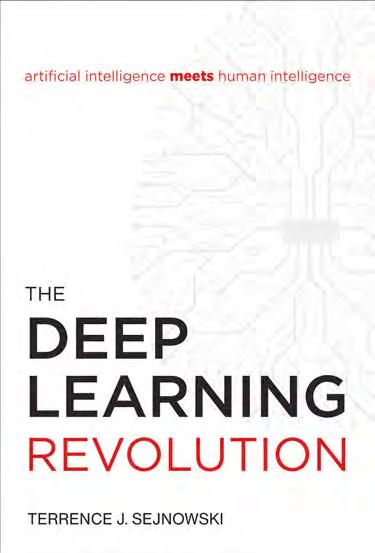
Sejnowski played an important role in the founding of deep learning, as one of a small group of researchers in the 1980s who challenged the prevailing logic-and-symbol based version of AI. The new version of AI Sejnowski and others developed, which became deep learning, is fueled instead by data. Deep networks learn from data in the same way that babies experience the world, starting with fresh eyes and gradually acquiring the skills needed to navigate novel environments. Learning algorithms extract information from raw data; information can be used to create knowledge; knowledge underlies understanding; understanding leads to wisdom. Someday a driverless car will know the road better than you do and drive with more skill; a deep learning network will diagnose your illness; a personal cognitive assistant will augment your puny human brain. It took nature many millions of years to evolve human intelligence; AI is on a trajectory measured in decades. Sejnowski prepares us for a deep learning future.
Terrence J. Sejnowski holds the Francis Crick Chair at the Salk Institute for Biological Studies and is a Distinguished Professor at the University of California, San Diego. He was a member of the advisory committee for the Obama administration’s BRAIN initiative and is President of the Neural Information Processing (NIPS) Foundation. He has published twelve books, including (with Patricia Churchland) The Computational Brain (25th Anniversary Edition, MIT Press).
TRADE 20 FALL 2018 | MITPRESS.MIT.EDU
Writers Under Surveillance
The FBI Files
edited by JPat Brown, B. C. D. Lipton, and Michael Morisy foreword by Cory Doctorow
Writers are dangerous. They have ideas. The proclivity of writers for ideas drove the FBI to investigate many of them—to watch them, follow them, start files on them. Writers Under Surveillance gathers some of these files, giving readers a surveillance-state perspective on writers including Hannah Arendt, Tom Clancy, Allen Ginsberg, Ernest Hemingway, Susan Sontag, Ayn Rand, and Hunter S. Thompson.
Obtained with Freedom of Information requests by MuckRock, a nonprofit dedicated to freeing American history from the locked filing cabinets of government agencies, the files on these authors are surprisingly wide ranging; the investigations were as broad and varied as the authors’ own works. James Baldwin, for example, was so openly antagonistic to the state’s security apparatus that investigators followed his every move. Ray Bradbury, on the other hand, was likely unaware that the Bureau had any interest in his work. (Bradbury was a target because an informant warned that science fiction was a Soviet plot to weaken American resolve.) Ernest Hemingway, true to form, drunkenly called the FBI Nazis and sissies. The files have been edited for length and clarity, but beyond that everything in the book is pulled directly from investigatory files. Some investigations lasted for years, others just a few days. Some are thrilling narratives. Others never really go anywhere. Some are funny, others quite harrowing. Despite the federal government’s periodic admission of past wrongdoing, investigations like these will probably continue to happen. Like all that seems best forgotten, the Bureau’s investigation of writers should be remembered. We owe it to ourselves.
FBI files on writers with dangerous ideas, including Hannah Arendt, Allen Ginsberg, Ernest Hemingway, and Susan Sontag. September 8 1/4 x 10 1/2, 416 pp. $24.95T/£20.00 paper 978-0-262-53638-7

The Writers
Hannah
JPat Brown is Executive Editor of MuckRock. B. C. D. Lipton is Senior Reporter at MuckRock. Michael Morisy is cofounder of MuckRock.
Arendt, James Baldwin, Ray Bradbury, Truman Capote, Tom Clancy, W. E. B. Du Bois, Allen Ginsberg, Ernest Hemingway, Aldous Huxley, Ken Kesey, Norman Mailer, Ayn Rand, Susan Sontag, Terry Southern, Hunter S. Thompson, Gore Vidal
TRADE 21 MITPRESS.MIT.EDU | FALL 2018 politics | history
Unexpected ways that individuals adapt technology to reclaim what matters to them, from working through conflict with smart lights to celebrating gender transition with selfies.
October 6 x 9, 184 pp. 8 illus.
$24.95T/£20.00 cloth 978-0-262-03913-0
technology | psychology
Left to Our Own Devices
Outsmarting Smart Technology to Reclaim Our Relationships, Health, and Focus Margaret E.
 Morris foreword by Sherry Turkle
Morris foreword by Sherry Turkle
We have been warned about the psychological perils of technology: distraction, difficulty empathizing, and loss of the ability (or desire) to carry on a conversation. But our devices and data are woven into our lives. We can’t simply reject them. Instead, Margaret Morris argues, we need to adapt technology creatively to our needs and values. In Left to Our Own Devices, Morris offers examples of individuals applying technologies in unexpected ways—uses that go beyond those intended by developers and designers. Morris examines these kinds of personalized life hacks, chronicling the ways that people have adapted technology to strengthen social connection, enhance well-being, and affirm identity.
Morris, a clinical psychologist and app creator, shows how people really use technology, drawing on interviews she has conducted as well as computer science and psychology research. She describes how a couple used smart lights to work through conflict; how a woman persuaded herself to eat healthier foods when her photographs of salads garnered “likes” on social media; how a trans woman celebrated her transition with selfies; and how, through augmented reality, a woman changed the way she saw her cancer and herself. These and the many other “offlabel” adaptations described by Morris, cast technology not just as a temptation that we struggle to resist but as a potential ally as we try to take care of ourselves and others. The stories Morris tells invite us to be more intentional and creative when left to our own devices.
Margaret E. Morris is a clinical psychologist, researcher, and creator of technologies to support well-being. A Senior Research Scientist at Intel from 2002 to 2016, she now conducts User Experience research at Amazon and is an adjunct faculty member in the Department of Human-Centered Design and Engineering at the University of Washington.
For many years, I have written about the power of evocative objects to provoke self-reflection. But some objects, and by extension, some technologies, are more evocative than others. Left to Our Own Devices can be read as a primer for considering what might make for the most evocative technology. And if you suspect you have one in your hand, how might you best use it? You can reframe this question: If you are working with a technology that might close down important conversations, can it be repurposed to open them up? —from the foreword by Sherry Turkle
TRADE 22 FALL 2018 | MITPRESS.MIT.EDU
Garage
Olivia Erlanger and Luis Ortega Govela
Frank Lloyd Wright invented the garage when he moved the automobile out of the stable into a room of its own. Steve Jobs and Steve Wozniak (allegedly) started Apple Computer in a garage. Suburban men turned garages into man caves to escape from family life. Nirvana and No Doubt played their first chords as garage bands. What began as an architectural construct became a cultural construct. In this provocative history and deconstruction of an American icon, Olivia Erlanger and Luis Ortega Govela use the garage as a lens through which to view the advent of suburbia, the myth of the perfect family, and the degradation of the American dream.
The stories of what happened in these garages became self-fulfilling prophecies the more they were repeated. Hewlett-Packard was founded in a garage that now bears a plaque: The Birthplace of Silicon Valley. Google followed suit, dreamed up in a Menlo Park garage a few decades later. Also conceived in a garage: the toy company Mattel, creator of Barbie, the postwar, posthuman representation of American women. Garages became guest rooms, game rooms, home gyms, wine cellars, and secret bondage lairs, a no-commute destination for makers and DIYers— surfboard designers, ski makers, pet keepers, flannel-wearing musicians, weed-growing nuns. The garage was an aboveground underground, offering both a safe space for withdrawal and a stage for participation— opportunities for isolation or empowerment.
Olivia Erlanger is an artist based in New York and Los Angeles. She received the inaugural BMW Open Work Frieze commission, and has been a visiting artist and lecturer at Brown University and the Architectural Association, London. Luis Ortega Govela is a architect based in Los Angeles. He has lectured at the Architectural Association and is a founder of the arts collective ÅYR. They are at work on a documentary film about the garage.
A secret history of the garage as a space of creativity, from its invention by Frank Lloyd Wright to its use by start-ups and garage bands.

September 6 x 8 3/8, 224 pp. 52 color illus.
$24.95T/£20.00 cloth 978-0-262-03834-8
TRADE 23 MITPRESS.MIT.EDU | FALL 2018 architecture
art
|
An architect and a photographer explore a community of squatters, artists, snowbirds, migrants, and survivalists inhabiting a former military base in the California desert. September 7 x 9, 192 pp. 41 color illus.
$35.00T/£27.00 cloth 978-0-262-03835-5
Slab City
Dispatches from the Last Free Place
Charlie Hailey photographs by Donovan Wylie
Under the unforgiving sun of southern California’s Colorado Desert lies Slab City, a community of squatters, artists, snowbirds, migrants, survivalists, and homeless people. Called by some “the last free place” and by others “an enclave of anarchy,” Slab City is also the end of the road for many. Without official electricity, running water, sewers, or trash pickup, Slab City dwellers also live without law enforcement, taxation, or administration. Built on the concrete slabs of Camp Dunlap, an abandoned Marine training base, the settlement maintains its off-grid aspirations within the site’s residual military perimeters and gridded street layout; off-grid is really in-grid. In this book, architect Charlie Hailey and photographer Donovan Wylie explore the contradictions of Slab City.
In a series of insightful texts and striking color photographs, Hailey and Wylie capture the texture of life in Slab City. They show us Slab Mart, a conflation of rubbish heap and recycling center; signs that declare Welcome to Slab City, T’ai Chi on the Slabs Every morning, and Don’t fuck around; RVs in conditions ranging from luxuriously roadworthy to immobile; shelters cloaked in pallets and palm fronds; and the alarmingly opaque water of the hot springs.

At Camp Dunlap in the 1940s, Marines learned how to fight a war. In Slab City, civilians resort to their own wartime survival tactics. Is the current encampment an outpost of freedom, a new “city on a hill” built by the self-chosen, an inversion of Manifest Destiny, or is it a last vestige of freedom, tended by society’s dispossessed? Officially, it is a town that doesn’t exist.
Hailey, Professor in the School of Architecture
the University of Florida, is the author of Camps: A Guide to 21st Century Space (MIT Press) and other books. Donovan Wylie, a photographer based in Belfast, is Professor in Photography at Ulster University and the author of A Good and Spacious Land
Charlie
at
TRADE 24 FALL 2018 | MITPRESS.MIT.EDU architecture
Craft Weed

Family Farming and the Future of the Marijuana Industry
Ryan Stoa
What will the marijuana industry look like as legalization spreads? Will corporations sweep in and create Big Marijuana, flooding the market with mass-produced weed? Or will marijuana agriculture stay true to its roots in family farming, and reflect a sustainable, local, and artisanal ethic? In Craft Weed, Ryan Stoa argues that the future of the marijuana industry should be powered by small farms—that its model should be more craft beer than Anheuser-Busch.
To make his case for craft weed, Stoa interviews veteran and novice marijuana growers, politicians, activists, and investors. He provides a history of marijuana farming and its post-hippie resurgence in the United States. He reports on the amazing adaptability of the cannabis plant and its genetic gifts, the legalization movement, regulatory efforts, the tradeoffs of indoor versus outdoor farms, and the environmental impacts of marijuana agriculture. To protect and promote small farmers and their communities, Stoa proposes a Marijuana Appellation system, modeled after the wine industry, which would provide a certified designation of origin to local crops. A sustainable, local, and artisanal farming model is not an inevitable future for the marijuana industry, but Craft Weed makes clear that marijuana legalization has the potential to revitalize rural communities and the American family farm.
As the era of marijuana prohibition comes to an end, now is the time to think about what kind of marijuana industry and marijuana agriculture we want. Craft Weed will help us plan for a future that is almost here.
How the future of postlegalization marijuana farming can be sustainable, local, and artisanal. November 6 x 9, 248 pp. $27.95T/£22.00
Ryan Stoa is Associate Professor of Law at Concordia University School of Law in Boise, Idaho.
TRADE 25 MITPRESS.MIT.EDU | FALL 2018
cloth 978-0-262-03886-7
agribusiness | current affairs
What we can learn from the aftermath of cybersecurity breaches and how we can do a better job protecting online data. November 6 x 9, 336 pp.
$29.95T/£24.00 cloth 978-0-262-03885-0
Information Policy series
current affairs | privacy & surveillance
You’ll See This Message When It Is Too Late
The Legal and Economic Aftermath of Cybersecurity Breaches Josephine Wolff

Cybersecurity incidents make the news with startling regularity. Each breach—the theft of 145. 5 million Americans’ information from Equifax, for example, or the Russian government’s theft of National Security Agency documents, or the Sony Pictures data dump—makes headlines, inspires panic, instigates lawsuits, and is then forgotten. The cycle of alarm and amnesia continues with the next attack, and the one after that. In this book, cybersecurity expert Josephine Wolff argues that we shouldn’t forget about these incidents, we should investigate their trajectory, from technology flaws to reparations for harm done to their impact on future security measures. We can learn valuable lessons in the aftermath of cybersecurity breaches.
Wolff describes a series of significant cybersecurity incidents between 2005 and 2015, mapping the entire life cycle of each breach in order to identify opportunities for defensive intervention. She outlines three types of motives underlying these attacks—financial gain, espionage, and public humiliation of the victims—that have remained consistent through a decade of cyberattacks, offers examples of each, and analyzes the emergence of different attack patterns. The enormous TJX breach in 2006, for instance, set the pattern for a series of payment card fraud incidents that led to identity fraud and extortion; the Chinese army conducted cyberespionage campaigns directed at U.S.-based companies from 2006 to 2014, sparking debate about the distinction between economic and political espionage; and the 2014 breach of the Ashley Madison website was aimed at reputations rather than bank accounts.
Josephine Wolff is Assistant Professor in the Public Policy Department and Computing Security Department at Rochester Institute of Technology. She is a Faculty Associate at Harvard’s Berkman Klein Center for Internet & Society and a Fellow at the New America Cybersecurity Initiative. She has written for Internet Policy Review, Slate, the Atlantic, Scientific American, the New Republic, and other publications.
TRADE 26 FALL 2018 | MITPRESS.MIT.EDU
Altered States of Consciousness
Experiences Out of Time and Self
Marc Wittmann
translated by Philippa Hurd
During extraordinary moments of consciousness—shock, meditative states and sudden mystical revelations, out-of-body experiences, or drug intoxication—our senses of time and self are altered; we may even feel time and self dissolving. These experiences have long been ignored by mainstream science, or considered crazy fantasies. Recent research, however, has located the neural underpinnings of these altered states of mind. In this book, neuropsychologist Marc Wittmann shows how experiences that disturb or widen our everyday understanding of the self can help solve the mystery of consciousness.
Wittmann explains that the relationship between consciousness of time and consciousness of self is close; in extreme circumstances, the experiences of space and self intensify and weaken together. He considers the emergence of the self in waking life and dreams; how our sense of time is distorted by extreme situations ranging from terror to mystical enlightenment; the experience of the moment; and the loss of time and self in such disorders as depression, schizophrenia, and epilepsy. Dostoyevsky reported godly bliss during epileptic seizures; neurologists are now investigating the phenomenon of the epileptic aura. Wittmann describes new studies of psychedelics that show how the brain builds consciousness of self and time, and discusses pilot programs that use hallucinogens to treat severe depression, anxiety, and addiction.

If we want to understand our consciousness, our subjectivity, Wittmann argues, we must not be afraid to break new ground. Studying altered states of consciousness leads us directly to the heart of the matter: time and self, the foundations of consciousness.
What altered states of consciousness—the dissolution of feelings of time and self— can tell us about the mystery of consciousness.
September 5 3/8 x 8, 192 pp. 6 illus.
$24.95T/£20.00 cloth 978-0-262-03831-7
Also available Felt Time

The Science of How We Experience Time Mark Wittman
$15.95T/£12.99 paper 978-0-262-53354-6
Marc Wittmann is Research Fellow at the Institute for Frontier Areas of Psychology and Mental Health in Freiburg, Germany, and the author of Felt Time: The Psychology of How We Perceive Time (MIT Press).
TRADE 27 MITPRESS.MIT.EDU | FALL 2018 science
| psychology
Why we learn the wrong things from narrative history, and how our love for stories is hard-wired. October 6 x 9, 296 pp. 37 illus.
$27.95T/£22.00 cloth 978-0-262-03857-7
How History Gets Things Wrong
The Neuroscience of our Addiction to Stories Alex Rosenberg
To understand something, you need to know its history. Right? Wrong, says Alex Rosenberg in How History Gets Things Wrong. Feeling especially well-informed after reading a book of popular history on the best-seller list? Don’t. Narrative history is always, always wrong. It not just incomplete or inaccurate but deeply wrong, as wrong as Ptolemaic astronomy. We no longer believe that the earth is the center of the universe. Why do we still believe in historical narrative? Our attachment to history as a vehicle for understanding has a long Darwinian pedigree and a genetic basis. Our love of stories is hard-wired. Neuroscience reveals that human evolution shaped a tool useful for survival into a defective theory of human nature. Stories historians tell, Rosenberg continues, are not only wrong but harmful. Israel and Palestine, for example have dueling narratives of dispossession that prevent one side from compromising with the other. Henry Kissinger applied lessons drawn from the Congress of Vienna to American foreign policy with disastrous results. Human evolution improved primate mind reading—the ability to anticipate the behavior of others, whether predators, prey, or cooperators—to get us to the top of the African food chain. Now, however, this hard-wired capacity makes us think we can understand history—what the Kaiser was thinking in 1914, why Hitler declared war on the United States—by uncovering the narratives of what happened and why. In fact, Rosenberg argues, we will only understand history if we don’t make it into a story.
Alex Rosenberg is R. Taylor Cole Professor of Philosophy at Duke University. He is the author of The Atheist’s Guide to Reality: Enjoying Life without Illusions and other books.

TRADE 28 FALL 2018 | MITPRESS.MIT.EDU science
| history
Inventing Future Cities
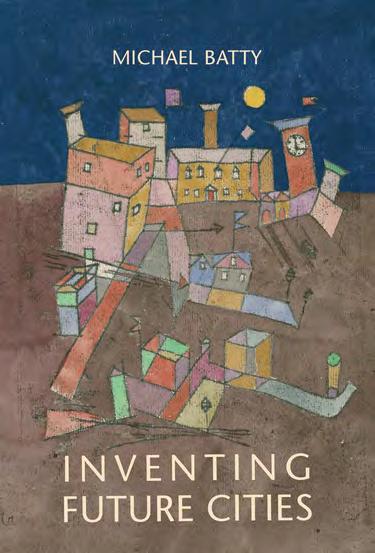 Michael Batty
Michael Batty
We cannot predict future cities, but we can invent them. Cities are largely unpredictable because they are complex systems that are more like organisms than machines. Neither the laws of economics nor the laws of mechanics apply; cities are the product of countless individual and collective decisions that do not conform to any grand plan. They are the product of our inventions; they evolve. In Inventing Future Cities, Michael Batty explores what we need to understand about cities in order to invent their future.
Batty outlines certain themes—principles—that apply to all cities. He investigates not the invention of artifacts but inventive processes. Today form is becoming ever more divorced from function; information networks now shape the traditional functions of cities as places of exchange and innovation. By the end of this century, most of the world’s population will live in cities, large or small, sometimes contiguous, and always connected; in an urbanized world, it will be increasingly difficult to define a city by its physical boundaries.
Batty discusses the coming great transition to a world of all cities; argues that future cities will be defined as clusters in a hierarchy; describes the future “high-frequency,” real-time streaming city; considers urban sprawl and urban renewal; and maps the waves of technological change, which grow ever more intense and lead to continuous innovation—an unending process of creative destruction out of which future cities will emerge.
How we can invent —but not predict— the future of cities.
November 6 x 9, 312 pp. 46 illus.
$27.95T/£22.00 cloth 978-0-262-03895-9
Also available
The New Science of Cities
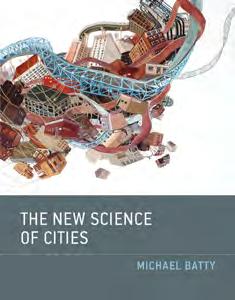
Michael Batty
$35.00S/£27.00 paper 978-0-262-53456-7
Michael Batty is Bartlett Professor of Planning at University College London and the author of Cities and Complexity and The New Science of Cities, both published by the MIT Press.
TRADE 29 MITPRESS.MIT.EDU | FALL 2018
urbanism | technology
Contact Warhol
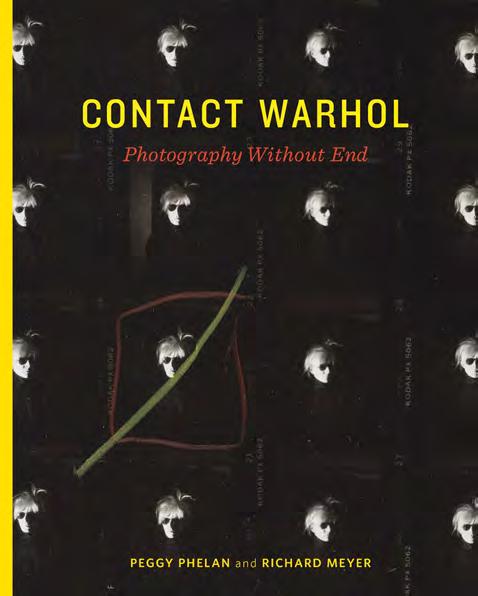
Photography without End
edited by Peggy Phelan and Richard Meyer
From 1976 until his death in 1987, Andy Warhol was never without his camera. He snapped photos at discos, dinner parties, flea markets, and wrestling matches. Friends, boyfriends, business associates, socialites, celebrities, passers by: all captured Warhol’s attention—at least for the moment he looked through the lens. In a way, Warhol’s daily photography practice anticipated our current smart phone habits—our need to record our friends, our families, and our food. Warhol printed only about 17 percent of the 130,000 exposures he left on contact sheets. In 2014, Stanford’s Cantor Center for the Arts acquired the 3,600 contact sheets from the Warhol Foundation. This book examines and documents for the first time these contact sheets and photographs—Warhol’s final body of work
Peggy Phelan and Richard Meyer analyze the contact sheets, never before seen, and their importance in Warhol’s oeuvre. Accompanying their text and other essays are reproductions of contact sheets, photographs, and other visual material. The contact sheets present Warhol’s point of view, unedited; we know where he was every minute because a photograph remembers it.
Peggy Phelan is Ann O’Day Maples Chair in the Arts Professor of Theater and Performance at Stanford University. She is the author of Unmarked: The Politics of Performance and Mourning Sex: Performing Public Memories and was a contributor to WACK! Art and the Feminist Revolution (MIT Press). Richard Meyer is Robert and Ruth Halperin Professor in Art History at Stanford University. He is the author of What Was Contemporary Art? (MIT Press) and other books.
“A picture means I know where I was every minute. That’s why I take pictures.” —Andy Warhol
Warhol’s daily practice of photography during the last decade of his life, examined and documented for the first time.
9 1/4 x 10
$34.95T/£27.00 cloth 978-0-262-03899-7 Copublished with the Cantor Arts Center TRADE 30 FALL 2018 | MITPRESS.MIT.EDU art EXHIBITION Contact Warhol: Photography without End Cantor Arts Center, Stanford University September 29, 2018 – January 6, 2019
Andy
October
3/4, 232 pp. 130 illus.
politics science| technology
Extremism
J. M. Berger
A rising tide of extremist movements threatens to destabilize civil societies around the globe. It has never been more important to understand extremism, yet the dictionary definition—a logical starting point in a search for understanding—tells us only that extremism is “the quality or state of being extreme.” In this volume in the MIT Press Essential Knowledge series, J. M. Berger offers a nuanced introduction to extremist movements, explaining what extremism is, how extremist ideologies are constructed, and why extremism can escalate into violence. Berger shows that although the ideological content of extremist movements varies widely, there are common structural elements.
Berger, an expert on extremist movements and terrorism, explains that extremism arises from a perception of “us versus them,” intensified by the conviction that the success of “us” is inseparable from hostile acts against “them.” Extremism differs from ordinary unpleasantness—run-of-the-mill hatred and racism—by its sweeping rationalization of an insistence on violence. Berger illustrates his argument with case studies and examples from around the world and throughout history, from the destruction of Carthage by the Romans—often called “the first genocide”—to the apocalyptic jihadism of Al Qaeda, America’s new “alt-right,” and the anti-Semitic conspiracy tract The Protocols of the Elders of Zion. He describes the evolution of identity movements, individual and group radicalization, and more. If we understand the causes of extremism, and the common elements of extremist movements, Berger says, we will be more effective in countering it.
J. M. Berger is the author of Jihad Joe: Americans Who Go to War in the Name of Islam and coauthor (with Jessica Stern) of ISIS: The State of Terror. He is a fellow with the Counter-Terrorism Strategic Communications Project and a nonresident Fellow with the Alliance for Securing Democracy.

September | 5 x 7, 200 pp. | 4 illus. $15.95T/£11.95 paper 978-0-262-53587-8
The MIT Press Essential Knowledge series
GPS
Paul E. Ceruzzi
GPS is ubiquitous in everyday life. GPS mapping is standard equipment in many new cars and geolocation services are embedded in smart phones. GPS makes Uber and Lyft possible; driverless cars won’t be able to drive without it. In this volume in the MIT Press Essential Knowledge series, Paul Ceruzzi offers a concise history of GPS, explaining how a once-obscure space technology became an invisible piece of our infrastructure, as essential to modern life as electric power or clean water.

GPS relays precise time and positioning information from orbiting satellites to receivers on the ground, at sea, and in the air. It operates worldwide, and its basic signals are free, although private companies can commodify the data provided. Ceruzzi recounts the origins of GPS and its predecessor technologies, including early aircraft navigation systems and satellites. He describes the invention of GPS as a space technology in the post-Apollo, pre-Space Shuttle years and its first military and commercial uses. Ceruzzi explains how the convergence of three major technological developments—the microprocessor, the internet, and cellular telephone—enabled the development and application of GPS technology. Recognizing the importance of satellite positioning systems in a shifting geopolitical landscape—and perhaps doubting U.S. assurances of perpetual GPS availability—other countries are now building or have already developed their own systems, and Ceruzzi reports on these efforts in the European Union, Russia, India, China, and Japan.
Paul E. Ceruzzi is Curator at the National Air and Space Museum at the Smithsonian Institution. He is the author of Computing: A Concise History, A History of Modern Computing, and Internet Alley: High Technology in Tysons Corner, 1945–2005, all published by the MIT Press, and other books.
October | 5 x 7, 208 pp. | 21 illus. $15.95T/£11.95 paper 978-0-262-53595-3
31 MITPRESS.MIT.EDU | FALL 2018
TRADE THE MIT PRESS ESSENTIAL KNOWLEDGE SERIES
The MIT Press Essential Knowledge series
technology environment | technology
Haptics
Lynette A. Jones

Haptics, or haptic sensing, refers to the ability to identify and perceive objects through touch. This is active touch, involving exploration of an object with the hand rather than the passive sensing of a vibration or force on the skin. The development of new technologies, including prosthetic hands and tactile surfaces for flat screen displays, depends on our knowledge of haptics. In this volume in the MIT Press Essential Knowledge series, Lynette Jones offers an accessible overview of haptics, or active touch sensing, and its applications.
Jones explains that haptics involves integrating information from touch and kinesthesia—that is, information both from sensors in the skin and from sensors in muscles, tendons, and joints. The challenge for technology is to reproduce in a virtual world some of the sensations associated with physical interactions with the environment.
Jones maps the building blocks of the tactile system, the receptors in the skin and the skin itself, and how information is processed at this interface with the external world. She describes haptic perception, the processing of haptic information in the brain; haptic illusions, or distorted perceptions of objects and the body itself; tactile and haptic displays, from braille to robotic systems; tactile compensation for other sensory impairments; surface haptics, which creates virtual haptic effects on physical surfaces such as touch screens; and the development of robotic and prosthetic hands that mimic the properties of human hands.
Carbon Capture
Howard J. Herzog
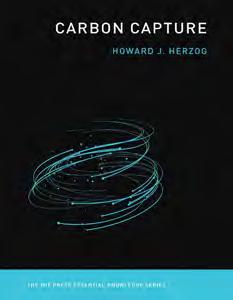
The burning of fossil fuels releases carbon dioxide (CO2), and these CO2 emissions are a major driver of climate change. Carbon capture offers a path to climate change mitigation that has received relatively little attention. In this volume in the MIT Press Essential Knowledge series, Howard Herzog offers a concise guide to carbon capture, covering basic information as well as the larger context of climate technology and policy. Carbon capture, or carbon dioxide capture and storage (CCS), refers to a suite of technologies that reduce CO2 emissions by “capturing” CO2 before it is released into the atmosphere and then transporting it to where it will be stored or used. It is the only climate change mitigation technique that deals directly with fossil fuels rather than providing alternatives to them.
Herzog, a pioneer in carbon capture research, begins by discussing the fundamentals of climate change and how carbon capture can be one of the solutions. He explains capture and storage technologies, including chemical scrubbing and the injection of CO2 deep underground. He reports on current efforts to deploy CCS at factories and power plants and attempts to capture CO2 from the air itself. Finally, he explores the policies and politics in play around CCS and argues for elevating carbon capture in the policy agenda.
Howard J. Herzog is Senior Research Engineer in the MIT Energy Initiative. He ran an industrial consortium on CCS from 2000 to 2016, served as a US delegate to the Carbon Sequestration Leadership Forum’s Technical Group from 2003 to 2007, and was a Coordinating Lead Author for the IPCC (Intergovernmental Panel on Climate Change) Special Report on Carbon Dioxide Capture and Storage (2005).
September | 5 x 7, 224 pp. | 7 illus.
September | 5 x 7, 176 pp. | 15 illus. $15.95T/£11.95 paper 978-0-262-53580-9
The MIT Press Essential Knowledge series
$15.95T/£11.95 paper 978-0-262-53575-5
The MIT Press Essential Knowledge series
FALL 2018 | MITPRESS.MIT.EDU
Lynette A. Jones is Senior Research Scientist in the Department of Mechanical Engineering at MIT and is Editor-in-Chief of the IEEE Transactions on Haptics
32 TRADE THE MIT PRESS ESSENTIAL KNOWLEDGE SERIES
Spaceflight
A Concise History
Michael J. Neufeld
Spaceflight is one of the greatest human achievements of the twentieth century. The Soviets launched Sputnik, the first satellite, in 1957; less than twelve years later, the American Apollo astronauts landed on the Moon. In this volume of the MIT Press Essential Knowledge series, Michael Neufeld offers a concise history of spaceflight, mapping the full spectrum of activities that humans have developed in space.
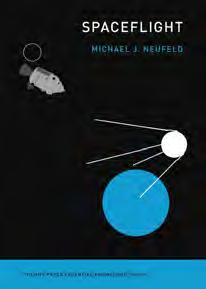
Neufeld explains that “the space program” should not be equated only with human spaceflight. Since the 1960s, unmanned military and commercial spacecraft have been orbiting near the Earth, and robotic deepspace explorers have sent back stunning images of faraway planets. Neufeld begins with the origins of space ideas and the discovery that rocketry could be used for spaceflight. He then discusses the Soviet-U.S. Cold War space race and reminds us that NASA resisted adding female astronauts even after the Soviets sent the first female cosmonaut into orbit. He analyzes the two rationales for the Apollo program: prestige and scientific discovery (this last something of an afterthought). He describes the internationalization and privatization of human spaceflight after the Cold War, the cultural influence of space science fiction, including Star Trek and Star Wars, space tourism for the ultra-rich, and the popular desire to go into space. Whether we become a multiplanet species, as some predict, or continue to call Earth home, this book offers a useful primer.
Michael J. Neufeld is Senior Curator in the Space History Department of the Smithsonian National Air and Space Museum. He has appeared on History Channel, PBS, NPR, and BBC programs, and is the author of the award-winning The Rocket and the Reich, Von Braun, and other books.
October | 5 x 7, 216 pp. | 12 illus. $15.95T/£11.95 paper 978-0-262-53633-2
The MIT Press Essential Knowledge series
School Choice
David R. Garcia
The issues and arguments surrounding school choice are sometimes hijacked to make political points about government control, democratic ideals, the public good, and privatization.
In this volume in the MIT Press Essential Knowledge series, David Garcia avoids partisan arguments to offer an accessible, objective, and comprehensive guide to school choice. He first outlines the different types of school choice, including home schooling, private schools, freedom-of-choice plans, magnet schools, charter schools, vouchers, and education savings accounts. Two themes emerge as particularly resonant in the American school choice debate: the long history of school desegregation, and debates over the roles and responsibilities of government. Is education a public good, for the collective benefit of society, or a private good, to benefit the individual?
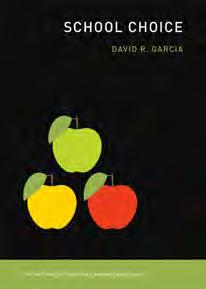
Garcia describes and evaluates the major arguments supporting school choice policies: the elimination of government bureaucracies, the introduction of competition into education through market forces, the promotion of parental choice, and the casting of school choice as a civil right. He examines the research on the effects of school choice and summarizes general trends. Finally, he considers how school choice policies are likely to evolve. He notes that the Trump administration’s Secretary of Education, Betsy DeVos, is an advocate for school choice, and that the administration’s budget allocations signal a deliberate shift from long-standing federal policies that provide supplemental funding for low-income schools. Instead, new policies provide incentives for low-income families to leave public schools altogether through choice. This book will be an essential resource for participating in the debates that are sure to follow.
October | 5 x 7, 184 pp. $15.95T/£11.95 paper 978-0-262-53590-8
The MIT Press Essential Knowledge series
33 MITPRESS.MIT.EDU | FALL 2018
science | history education
David R. Garcia is Associate Professor at the Mary Lou Fulton Teachers College at Arizona Sate University.
TRADE THE MIT PRESS ESSENTIAL KNOWLEDGE SERIES
Quanta Magazine ’s stories of mathematical explorations show that “inspiration strikes willy-nilly,” revealing surprising solutions and exciting discoveries. November 6 x 9, 288 pp. 26 illus. $19.95T/£14.99 paper 978-0-262-53635-6
Copublished with Quanta Magazine
The Prime Number Conspiracy
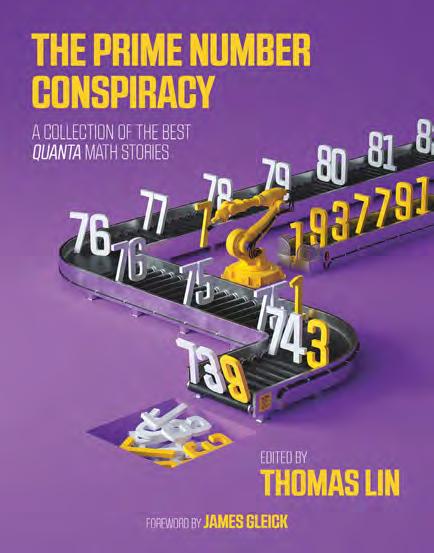
A Collection of the Best Quanta Math Stories edited
by Thomas Lin foreword by James Gleick
These stories from Quanta Magazine map the routes of mathematical exploration, showing readers how cutting-edge research is done, while illuminating the productive tension between conjecture and proof, theory, and intuition. The stories show that, as James Gleick puts it in the foreword, “inspiration strikes willy-nilly.” One researcher thinks of quantum chaotic systems at a bus stop; another suddenly realizes a path to proving a theorem of number theory while in a friend’s backyard; a statistician has a “bathroom sink epiphany” and discovers the key to solving the Gaussian correlation inequality. Readers of The Prime Number Conspiracy, says Quanta Editor-in-Chief Thomas Lin, are headed on “breathtaking intellectual journeys to the bleeding edge of discovery strapped to the narrative rocket of humanity’s never-ending pursuit of knowledge.”
Quanta is the only popular publication that offers in-depth coverage of the latest breakthroughs in understanding our mathematical universe. It communicates mathematics by taking it seriously, wrestling with difficult concepts and clearly explaining them in a way that speaks to our innate curiosity about our world and ourselves. Readers of this volume will learn that prime numbers have decided preferences about the final digits of the primes that immediately follow them (the “conspiracy” of the title); consider whether math is the universal language of nature (allowing for “a unified theory of randomness”); discover surprising solutions (including a pentagon tiling proof that solves a century-old math problem”); ponder the limits of computation; measure infinity; and explore the eternal question: “Is mathematics good for you?”
Thomas Lin is the founding Editor-in-Chief of Quanta Magazine, an online publication that reports on developments in science and mathematics, with content syndicated in such publications as Wired, the Atlantic, and Scientific American. Lin previously worked for the New York Times, and he has also written for the New Yorker, Tennis, and other publications. James Gleick has written several popular books about science and technology, including Time Travel: A History and Chaos
Contributors
Ariel Bleicher, Robbert Dijkgraaf, Kevin Hartnett, Erica Klarreich, Thomas Lin, John Pavlus, Siobhan Roberts, Natalie Wolchover
TRADE 34 FALL 2018 | MITPRESS.MIT.EDU
mathematics
Alice and Bob Meet the Wall of Fire
A Collection of the Best Quanta Science Stories
edited by Thomas Lin foreword by Sean Carroll
These stories reveal the latest efforts to untangle the mysteries of the universe. Bringing together the best and most interesting science stories appearing in Quanta Magazine over the past five years, Alice and Bob Meet the Wall of Fire reports on some of the greatest scientific minds as they test the limits of human knowledge. Quanta, under editor-in-chief Thomas Lin, is the only popular publication that offers in-depth coverage of today’s challenging, speculative, cutting-edge science. It communicates science by taking it seriously, wrestling with difficult concepts and clearly explaining them in a way that speaks to our innate curiosity about our world and ourselves.
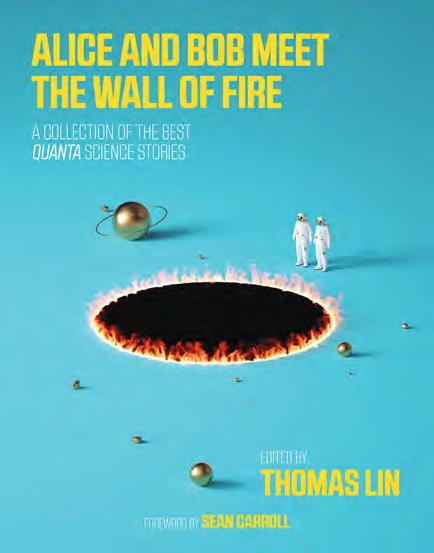
In the title story, Alice and Bob—beloved characters of various thought experiments in physics—grapple with gravitational forces, possible spaghettification, and a massive wall of fire as Alice jumps into a black hole. Another story considers whether the universe is impossible, in light of experimental results at the Large Hadron Collider. We learn about quantum reality and the mystery of quantum entanglement; explore the source of time’s arrow and witness a eureka moment when a quantum physicist exclaims: “Finally, we can understand why a cup of coffee equilibrates in a room.” We reflect on humans’ enormous skulls and the Brain Boom; consider the evolutionary benefits of loneliness; peel back the layers of the newest artificial-intelligence algorithms; follow the “battle for the heart and soul of physics”; and mourn the disappearance of the “diphoton bump,” revealed to be a statistical fluctuation rather than a revolutionary new particle. These stories from Quanta give us a front-row seat to scientific discovery.
Thomas Lin is the founding Editor-in-Chief of Quanta Magazine, an online publication that reports on developments in science and mathematics, with content syndicated in such publications as Wired, The Atlantic, and Scientific American Lin previously worked for the New York Times, and he has written for the New Yorker, Tennis, and other publications. Sean Carroll is a theoretical physicist at Caltech and the author of popular science books, including The Big Picture: On the Origins of Life, Meaning, and the Universe Itself
Contributors
Philip Ball, K. C. Cole, Robbert Dijkgraaf, Dan Falk, Courtney Humphries, Ferris Jabr, Katia Moskvitch, George Musser, Michael Nielsen, Jennifer Ouellette, John Pavlus, Emily Singer, Andreas von Bubnoff, Frank Wilczek, Natalie Wolchover, Carl Zimmer
Accessible and essential coverage of today’s challenging, speculative, cutting-edge science from Quanta Magazine .
November 6 x 9, 288 pp. 11 illus.
$19.95T/£14.99 paper 978-0-262-53634-9
Copublished with Quanta Magazine
TRADE 35 MITPRESS.MIT.EDU | FALL 2018
science
An updated edition of a guide to the basic science of climate change, and a call to action. October 5 3/8 x 8, 88 pp. 2 illus. $15.95T/£12.99 paper 978-0-262-53591-5
What We Know about Climate Change
updated edition
Kerry Emanuel with a new foreword by Bob Inglis
The vast majority of scientists agree that human activity has significantly increased greenhouse gases in the atmosphere—most dramatically since the 1970s. Yet global warming skeptics and ill-informed elected officials continue to dismiss this broad scientific consensus.
In this updated edition of his authoritative book, MIT atmospheric scientist Kerry Emanuel outlines the basic science of global warming and how the current consensus has emerged. Although it is impossible to predict exactly when the most dramatic effects of global warming will be felt, he argues, we can be confident that we face real dangers. Emanuel warns that global warming will contribute to an increase in the intensity and power of hurricanes and flooding and more rapidly advancing deserts. But just as our actions have created the looming crisis, so too might they avert it. Emanuel calls for urgent action to reduce greenhouse gases and criticizes the media for downplaying the dangers of global warming (and, in search of “balance,” quoting extremists who deny its existence).
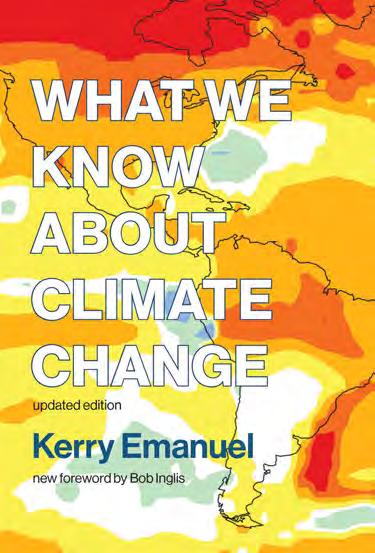
This edition has been updated to include the latest climate data, a discussion of the earth’s carbon cycle, the warming hiatus of the first decade of this century, the 2017 hurricanes, advanced energy options, the withdrawal from the Paris climate agreement, and more. It offers a new foreword by former U.S. Representative Bob Inglis (R-SC), who now works on climate action through his organization RepublicEN.
Kerry Emanuel is Professor of Atmospheric Science in the Department of Earth, Atmospheric, and Planetary Science at MIT. He is the author of Divine Wind: The History and Science of Hurricanes and Atmospheric Convection.
Praise for earlier editions “Emanuel’s words are measured and authoritative. His book should help reduce the huge gap between what is understood by the scientific community and what is known by the people who need to know, the public and policymakers.”
—James Hansen, former Director, NASA Goddard Institute for Space Studies
“Perhaps even the single best thing written about climate change for a general audience.“
—Justin Gillis, the New York Times Green blog
TRADE 36 FALL 2018 | MITPRESS.MIT.EDU science
| environment
Overgrown
Practices between Landscape Architecture and Gardening
Julian Raxworthy
foreword by Fiona Harrisson
Addressing one of the most repressed subjects in landscape architecture, this book could only have been written by someone who is both an experienced gardener and a landscape architect. With Overgrown, Julian Raxworthy offers a watershed work in the tradition of Ian McHarg, Anne Spirn, Kevin Lynch, and György Kepes.

As a discipline, landscape architecture has distanced itself from gardening, and landscape architects take pains to distinguish themselves from gardeners and landscapers. Landscape architects tend to imagine gardens from the office, representing plants with drawings or other simulations, whereas gardeners work in the dirt, in real time, planting, pruning, and maintaining. In Overgrown, Raxworthy calls for the integration of landscape architecture and gardening. Each has something to offer the other: landscape architecture can design beautiful spaces, and gardening can enhance and deepen the beauty of garden environments over time. Growth, says Raxworthy, is the medium of garden development; landscape architects should leave the office and go into the garden in order to know growth in an organic, nonsimulated way.
Raxworthy proposes a new practice for working with plant material that he terms “the viridic” (after “the tectonic” in architecture), from the Latin word for green, with its associations of spring and growth. He builds his argument for the viridic through six generously illustrated case studies of gardens that range from “formal” to “informal” approaches— from a sixteenth-century French Renaissance water garden to a Scottish poet-scientist’s “marginal” garden, barely differentiated from nature. Raxworthy argues that landscape architectural practice itself needs to be “gardened,” brought back into the field. He offers a “Manifesto for the Viridic” that casts designers and plants as vegetal partners in a renewed practice of landscape gardening.
Julian Raxworthy is a landscape architect from Australia. He convenes the Landscape Architecture and Urban Design programs in the School of Architecture, Planning, and Geomatics at the University of Cape Town.
A call for landscape architects to leave the office and return to the garden.
October 7 x 9, 336 pp. 12 color illus., 137 b&w illus.
$24.95T/£20.00 cloth 978-0-262-03853-9
TRADE 37 MITPRESS.MIT.EDU | FALL 2018
landscape architecture | gardening
An innovative investigation of the inner workings of Spotify that traces the transformation of audio files into streamed experience. December 6 x 9, 288 pp. 37 illus.
$27.95T/£22.00 cloth 978-0-262-03890-4
Spotify Teardown
Inside the Black Box of Streaming Media

Maria Eriksson, Rasmus Fleischer, Anna Johansson, Pelle Snickars, and Patrick Vonderau
Spotify provides a streaming service that has been welcomed as disrupting the world of music. Yet such disruption always comes at a price. Spotify Teardown contests the tired claim that digital culture thrives on disruption. Borrowing the notion of “teardown” from reverse-engineering processes, in this book a team of five researchers have playfully disassembled Spotify’s product and the way it is commonly understood.
Spotify has been hailed as the solution to illicit downloading, but it began as a partly illicit enterprise that grew out of the Swedish filesharing community. Spotify was originally praised as an innovative digital platform but increasingly resembles a media company in need of regulation, raising questions about the ways in which such cultural content as songs, books, and films are now typically made available online.
Spotify Teardown combines interviews, participant observations, and other types of analysis of Spotify’s “front end” with experimental, covert investigations of its “back end.” The authors engaged in a series of interventions, which include establishing a record label for research purposes, intercepting network traffic with packet sniffers, and web-scraping corporate materials. The authors’ innovative digital methods earned them a stern letter from Spotify accusing them of violating its Terms of Use; the company later threatened their research funding. Thus, the book itself became an intervention into the ethics and legal frameworks of corporate behavior.
Maria Eriksson is a social anthropologist and a PhD candidate at the Department of Culture and Media Studies at Umeå University. Rasmus Fleischer is a postdoctoral Researcher at the Department of Economic History at Stockholm University. Anna Johansson is an Associate Senior Lecturer in Ethnology at HUMlab at Umeå University. Pelle Snickars is Professor of Media and Communication Studies at Umeå University. Patrick Vonderau is Professor of Media Studies at Stockholm University.
TRADE 38 FALL 2018 | MITPRESS.MIT.EDU
business | music
When Innovation Moves at Digital Speed
Strategies and Tactics to Provoke, Sustain, and Defend Innovation in Today’s Unsettled Markets
MIT Sloan Management Review
All organizations grapple with what digitalization means for their business and, in particular, how digital forces will drive their approaches to innovation. But very few organizations have clearly defined the scale, speed, and scope of their engagement with the digital world. These essays, from the pages of the preeminent journal MIT Sloan Management Review, offer practical advice from experts on how to create, facilitate, and manage innovation in and for today’s digital markets.
The essays emphasize the power of intersections, where different mindsets and skills collide. These connections can be external—LEGO, for example, has engaged more than 100,000 adult fans in user communities—or internal, as when “brokers,” “connectors,” and “energizers” act within organizations. Contributors stress the value of action over analysis, citing examples show that affirm the power of trial-and-error experimentation. They demonstrate that innovation success requires thinking beyond technology. Innovation is not created by white-coated scientists in a lab; it is not the job of the few but of the many. And finally, the contributors warn that the greatest enemy lies within; innovators often encounter fierce internal resistance. They consider innovations in the innovation process itself, describing the promise and pitfalls of “design thinking” and offering advice on how to manage the tension between new and existing business models.
Innovation is not a magical act practiced by a select few with rare gifts. Innovation is a discipline that can be measured, managed, and improved. When Innovation Moves at Digital Speed provides practical guidance for innovation success.
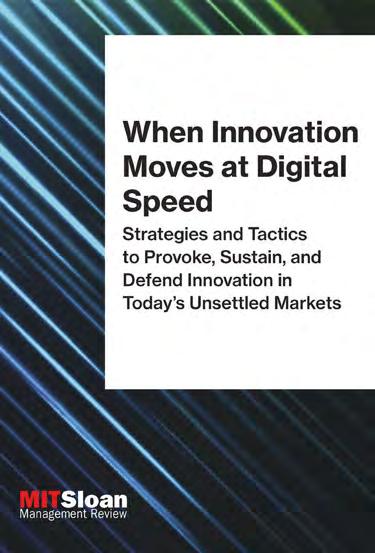
Contributors
Daniel Amaral, Jamie Anderson, Scott D. Anthony, Yun Mi Antorini, Michael Arena, Tormod Askildsen, Michael Ballé, Thomas Bartman, Jennie Björk, Marcel Bogers, Anna Brattström, Clayton M. Christensen, Edivandro Carlos Conforto, Rob Cross, Charles Dhanaraj, Thomas Fink, Nicolai J. Foss, Johan Frishammar, Johann Harnoss, Srivardhini K. Jha, Lâle Kesebi, Rishikesha T. Krishnan, Martin Kupp, Sean Looram, Mats Magnusson, Ann Majchrzak, Arvind Malhotra, James Morgan, Albert M. Muñiz, Jr., Ramiro Palma, Ishwardutt Parulkar, Eric Rebentisch, Jörg Reckhenrich, Martin Reeves, Anders Richtnér, Dave Rochlin, Duncan Simester, Jonathan Sims, Joseph V. Sinfield, Durward K. Sobek II, Freddy Solis, Kristian J. Sund, Mary Uhl-Bien, Derek van Bever, J. Andrei Villarroel, Amy Webb
Practical advice from experts on how to create, manage, measure, and improve innovation in and for today’s digital markets.
September 5 3/8 x 8, 280 pp. 17 illus.
$19.95T/£14.99 paper 978-0-262-53571-7
The Digital Future of Management
Also available in this series
How to Go Digital Practical Wisdom to Help Drive Your Organization’s Digital Transformation
MIT Sloan Management Review $19.95T/£14.99 paper 978-0-262-53498-7
What the Digital Future Holds 20 Groundbreaking Essays on How Technology Is Reshaping the Practice of Management
MIT Sloan Management Review
$19.95T/£14.99 paper 978-0-262-53499-4
TRADE 39 MITPRESS.MIT.EDU | FALL 2018 business
design
Design Unbound
volume 1: Designing for Emergence in a White Water World volume 2: Ecologies of Change for a White Water World
Ann M. Pendleton-Jullian and John Seely Brown
Tools
for navigating today’s hyper-connected, rapidly changing, and radically contingent white water world.
November volume 1 7 x 10, 440 pp. 96 illus.
$34.95T/£27.00 paper 978-0-262-53579-3
volume 2 7 x 10, 440 pp. 145 illus.
$34.95T/£27.00 paper 978-0-262-53582-3
Infrastructures series

Design Unbound presents a new tool set for having agency in the twentyfirst century, in what the authors characterize as a white water world— rapidly changing, hyperconnected, and radically contingent. These are the tools of a new kind of practice that is the offspring of complexity science, which gives us a new lens through which to view the world as entangled and emerging, and architecture, which is about designing contexts. In such a practice, design, unbound from its material thingness, is set free to design contexts as complex systems.
In a world where causality is systemic, entangled, in flux, and often elusive, we cannot design for absolute outcomes. Instead, we need to design for emergence. Design Unbound not only makes this case through theory but also presents a set of tools to do so. With case studies that range from a new kind of university to organizational, and even societal, transformation, Design Unbound draws from a vast array of domains: architecture, science and technology, philosophy, cinema, music, literature and poetry, even the military. It is presented in five books, bound as two volumes. Different books within the larger system of books will resonate with different reading audiences, from architects to people reconceiving higher education to the public policy or defense and intelligence communities. The authors provide different entry points allowing readers to navigate their own pathways through the system of books.
Ann M. Pendleton-Jullian is an architect, writer, and educator. She is a Fellow at Stanford University’s Center for Advanced Study in the Behavioral Sciences (CASBS), Professor and former Director at the Knowlton School of Architecture at Ohio State University, and Distinguished Visiting Professor of Design at Georgetown University and the Pardee RAND Graduate School of Public Policy. Previously, she was a Professor at MIT for fifteen years. John Seely Brown is the former Chief Scientist at Xerox and Director of its Palo Alto Research Center (PARC). He is currently Independent Cochair for Deloitte’s Center for the Edge and advisor to the Provost at University of Southern California. He is coauthor of The Social Life of Information and other books.
TRADE 40 FALL 2018 | MITPRESS.MIT.EDU
Lena Nyadbi, Hideout, 2002. Art Gallery of New South Wales. © Lena Nyadbi. Licensed by Viscopy, Sydney. From Design Unbound
design

Discursive Design
Critical, Speculative, and Alternative Things
Bruce M. Tharp and Stephanie M. Tharp
Good design provides solutions to problems. It improves our buildings, medical equipment, clothing, and kitchen utensils, among other objects. But what if design could also improve societal problems by prompting positive ideological change? In this book, Bruce and Stephanie Tharp survey recent critical design practices and propose a new, more inclusive field of socially minded practice: discursive design. While many consider good design to be unobtrusive, intuitive, invisible, and undemanding intellectually, discursive design instead targets the intellect, prompting self-reflection and igniting the imagination. Discursive design (derived from “discourse”) expands the boundaries of how we can use design— how objects are, in effect, good(s) for thinking.
Discursive Design invites us to see objects in a new light, to understand more than their basic form and utility. Beyond the different foci of critical design, speculative design, design fiction, interrogative design, and adversarial design, Bruce and Stephanie Tharp establish a more comprehensive, unifying vision as well as innovative methods. They not only offer social criticism but also explore how objects can, for example, be used by counselors in therapy sessions, by town councils to facilitate a pre-vote discussions, by activists seeking engagement, and by institutions and industry to better understand the values, beliefs, and attitudes of those whom they serve. Discursive design sparks new ways of thinking, and it is only through new thinking that our sociocultural futures can change.
Bruce and Stephanie Tharp run the design studio Materious, established in 2005, where they have done work for such companies as Ligne Roset, MoëtHennessy, The Art Institute of Chicago, Crate & Barrel, and Kikkerland. They are both Associate Professors in the Penny W. Stamps School of Art & Design at University of Michigan.
Exploring how design can be used for good—prompting self-reflection, igniting the imagination, and affecting positive social change.
November 6 15/16 x 9 13/16, 432 pp. 311 color illus.
$39.95T/£30.00 cloth 978-0-262-03898-0
Design Thinking, Design Theory series
TRADE 41 MITPRESS.MIT.EDU | FALL 2018
A new vision of the future of games and game design, enabled by AI. October 5 3/8 x 8, 192 pp. 29 illus.
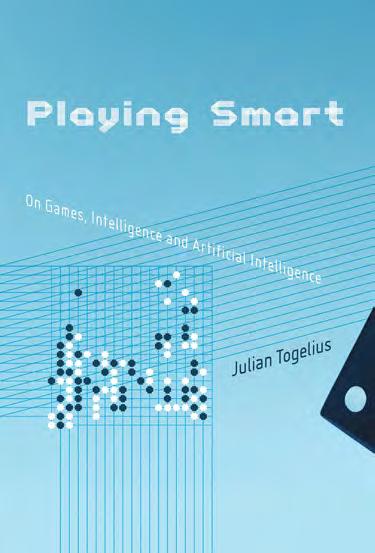
$21.95T/£16.99 cloth 978-0-262-03903-1
Playful Thinking series
game studies | artificial intelligence
Playing Smart
On Games, Intelligence and Artificial Intelligence
Julian Togelius
Can games measure intelligence? How will artificial intelligence inform games of the future? In Playing Smart, Julian Togelius explores the connections between games and intelligence to offer a new vision of future games and game design. Video games already depend on AI. We use games to test AI algorithms, challenge our thinking, and better understand both natural and artificial intelligence. In the future, Togelius argues, game designers will be able to create smarter games that make us smarter in turn, applying advanced AI to help design games. In this book, he tells us how.
Games are the past, present, and future of artificial intelligence. In 1948, Alan Turing, one of the founding fathers of computer science and artificial intelligence, handwrote a program for chess. Today we have IBM’s Deep Blue and DeepMind’s AlphaGo, and huge efforts go into developing AI that can play such arcade games as Pac-Man. Programmers continue to use games to test and develop AI, creating new benchmarks for AI while also challenging human assumptions and cognitive abilities. Game design is at heart a cognitive science, Togelius reminds us—when we play or design a game, we plan, think spatially, make predictions, move, and assess ourselves and our performance. By studying how we play and design games, Togelius writes, we can better understand how humans and machines think. AI can do more for game design than providing a skillful opponent. We can harness it to build game-playing and game-designing AI agents, enabling a new generation of AI-augmented games. With AI, we can explore new frontiers in learning and play.
Julian Togelius is Associate Professor in the Department of Computer Science and Engineering at New York University and Codirector of the NYU Game Innovation Lab.
TRADE 42 FALL 2018 | MITPRESS.MIT.EDU
The Blockchain and the New Architecture of Trust
 Kevin Werbach
Kevin Werbach
The blockchain entered the world on January 3, 2009, introducing an innovative new trust architecture: an environment in which users trust a system—for example, a shared ledger of information—without necessarily trusting any of its components. The cryptocurrency Bitcoin is the most famous implementation of the blockchain, but hundreds of other companies have been founded and billions of dollars invested in similar applications since Bitcoin’s launch. Some see the blockchain as offering more opportunities for criminal behavior than benefits to society. In this book, Kevin Werbach shows how a technology resting on foundations of mutual mistrust can become trustworthy.
The blockchain, built on open software and decentralized foundations that allow anyone to participate, seems like a threat to any form of regulation. In fact, Werbach argues, law and the blockchain need each other. Blockchain systems that ignore law and governance are likely to fail, or to become outlaw technologies irrelevant to the mainstream economy. That, Werbach cautions, would be a tragic waste of potential. If, however, we recognize the blockchain as a kind of legal technology, which shapes behavior in new ways, it can be harnessed to create tremendous business and social value.
Kevin Werbach is Associate Professor of Legal Studies and Business Ethics at the Wharton School of the University of Pennsylvania. Founder of the technology consulting firm Supernova Group, he has advised the FCC and Department of Commerce on communication policy. He is the coauthor of For the Win: How Game Thinking Can Revolutionize Your Business
How the blockchain—a system built on foundations of mutual mistrust—can become trustworthy. November 6 x 9, 312 pp. 7 illus.
$27.95T/£22.00 cloth 978-0-262-03893-5
Information Policy series
TRADE 43 MITPRESS.MIT.EDU | FALL 2018
economics | technology
Demystifying consciousness: how subjective experience can be explained by natural brain and evolutionary processes. September 5 3/8 x 8, 192 pp. 10 color illus., 30 b&w illus.

$24.95T/£20.00 cloth 978-0-262-03881-2
science | neuroscience
Consciousness Demystified
Todd E. Feinberg and Jon M. Mallatt
Consciousness is often considered a mystery. How can the seemingly immaterial experience of consciousness be explained by the material neurons of the brain? There seems to be an unbridgeable gap between understanding the brain as an objectively observed biological organ and accounting for the subjective experiences that come from the brain (and life processes). In this book, Todd Feinberg and Jon Mallatt attempt to demystify consciousness—to naturalize it, by explaining that the subjective, experiencing aspects of consciousness are created by natural brain processes that evolved in natural ways. Although subjective experience is unique in nature, they argue, it is not necessarily mysterious. We need not invoke the unknown or unknowable to explain its creation.
Feinberg and Mallatt flesh out their theory of neurobiological naturalism (after John Searle’s biological naturalism) that recognizes the many features that brains share with other living things, lists the neural features unique to conscious brains, and explains the subjective–objective barrier naturally. They investigate common neural features among the diverse groups of animals that have primary consciousness—the type of consciousness that experiences both sensations received from the world and affects such as emotions. They map the evolutionary development of consciousness and find an uninterrupted progression over time, without inserting any mysterious forces or exotic physics. Finally, bridging the previously unbridgeable, they show how subjective experience, although different from objective observation, can be naturally explained.
Todd E. Feinberg is Clinical Professor of Psychiatry and Neurology at Icahn School of Medicine at Mount Sinai, New York. Jon M. Mallatt is Clinical Associate Professor in the WWAMI Medical Education Program at the University of Washington and the University of Idaho. Feinberg and Mallatt are authors of The Ancient Origins of Consciousness: How the Brain Created Experience (MIT Press).
TRADE 44 FALL 2018 | MITPRESS.MIT.EDU
Anxiety and the Equation
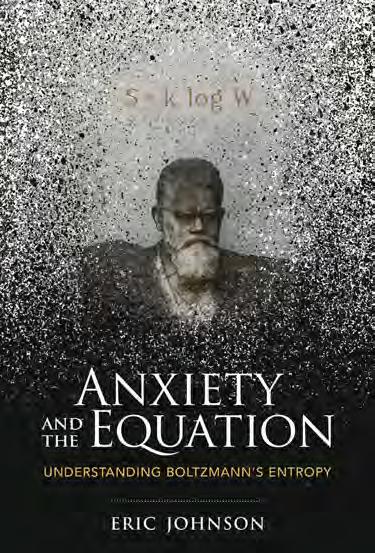
Understanding Boltzmann’s Entropy Eric Johnson
Ludwig Boltzmann’s grave in Vienna’s Central Cemetery bears a cryptic epitaph: S = k log W. This equation was Boltzmann’s great discovery, and it contributed significantly to our understanding of the second law of thermodynamics. In Anxiety and the Equation, Eric Johnson tells the story of a man and his equation: the anxiety-plagued nineteenth-century physicist who did his most important work as he struggled with mental illness.
Johnson explains that “S” in Boltzmann’s equation refers to entropy, and that entropy is the central quantity in the second law of thermodynamics. The second law is always on, running in the background of our lives, providing a way to differentiate between past and future. We know that the future will be a state of higher entropy than the past, and we have Boltzmann to thank for discovering the equation that underlies that fundamental trend. Johnson, accessibly and engagingly, reassembles Boltzmann’s equation from its various components and presents episodes from Boltzmann’s life—beginning at the end, with “Boltzmann Kills Himself” and “Boltzmann Is Buried (Not Once, But Twice).” Johnson explains the second law in simple terms, introduces key concepts through thought experiments, and explores Boltzmann’s work. He argues that Boltzmann, diagnosed by his contemporaries as neurasthenic, suffered from an anxiety disorder. He was, says Johnson, a man of reason who suffered from irrational concerns about his work, worrying especially about opposition from the scientific establishment of the day.
Johnson’s clear and concise explanations will acquaint the nonspecialist reader with such seemingly esoteric concepts as microstates, macrostates, fluctuations, the distribution of energy, log functions, and equilibrium. He describes Boltzmann’s relationships with other scientists, including Max Planck and Henri Poincaré, and, finally, imagines “an alternative ending,” in which Boltzmann lived on and died of natural causes.
Johnson is Associate Professor in the Department of Chemistry at Mount St. Joseph University in Cincinnati.
A man and his equation: the anxiety-plagued nineteenth-century physicist who contributed significantly to our understanding of the second law of thermodynamics.
September 5 3/8 x 8, 200 pp. 24 illus.
$19.95T/£14.99 cloth 978-0-262-03861-4
Eric
TRADE 45 MITPRESS.MIT.EDU | FALL 2018 science
| physics
A generously illustrated examination of the boom in luxurious, resort-style scientific laboratories and how this affects scientists’ work. December 7 x 9, 280 pp. 64 color illus.
$29.95T/£24.00 cloth 978-0-262-03892-8
Laboratory Lifestyles
The Construction of Scientific Fictions edited by Sandra Kaji-O’Grady, Chris L. Smith, and Russell Hughes
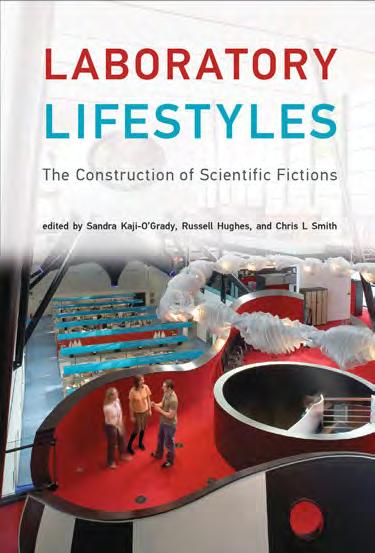
The past decade has seen an extraordinary laboratory-building boom. This new crop of laboratories features spectacular architecture and resort-like amenities. The buildings sprawl luxuriously on verdant campuses or sit sleekly in expensive urban neighborhoods. Designed to attract venture capital, generous philanthropy, and star scientists, these laboratories are meant to create the ideal conditions for scientific discovery. Yet there is little empirical evidence that shows if they do. Laboratory Lifestyles examines this new species of scientific laboratory from architectural, economic, social, and scientific perspectives. Generously illustrated with photographs of laboratories and scientists at work in them, the book investigates how “lifestyle science” affects actual science. Are scientists working when they stretch in a yoga class, play volleyball in the company tournament, chat in an on-site café, or show off their facilities to visiting pharmaceutical executives?
The book describes, among other things, the role of beanbag chairs in the construction of science at Xerox PARC; the southern California vibe of the RAND Corporation (Malibu), General Atomic (La Jolla), and Hughes Research Laboratories (Malibu); Biosphere 2’s “bionauts” as both scientists and scientific subjects; and interstellar laboratories. Laboratory Lifestyles (the title is an allusion to Bruno Latour and Steve Woolgar’s influential Laboratory Life) documents a shift in what constitutes scientific practice; these laboratories and their lifestyles are as experimental as the science they cultivate.
Sandra Kaji-O’Grady is Professor and Head of the School of Architecture at the University of Queensland. Chris L. Smith is Associate Professor of Architectural Design and Techne at the University of Sydney. Russell Hughes is an honorary Fellow in the School of Architecture at the University of Queensland.
Contributors
Kathleen Brandt, Russell Hughes, Tim Ivison, Sandra Kaji-O’Grady, Stuart W. Leslie, Brian Lonsway, Sean O’Halloran, Simon Sadler, Chris L. Smith, Nicole Sully, Ksenia Tatarchenko, William Taylor, Julia Tcharfas, Albena Yaneva, Stelios Zavos
TRADE 46 FALL 2018 | MITPRESS.MIT.EDU
design
media | internet studies
Designing an Internet
David D. Clark
How do you design an internet? The architecture of the current internet is the product of basic design decisions made early in its history. What would an internet look like if it were designed, today, from the ground up? In this book, MIT computer scientist David Clark explains how the internet is actually put together, what requirements it was designed to meet, and why different design decisions would create different internets. He does not take today’s internet as a given but tries to learn from it, and from alternative proposals for what an internet might be, in order to draw some general conclusions about network architecture.
Clark discusses the history of the internet, and how a range of potentially conflicting requirements—including longevity, security, availability, economic viability, management, and meeting the needs of society— shaped its character. He addresses both the technical aspects of the internet and its broader social and economic contexts. He describes basic design approaches and explains, in terms accessible to nonspecialists, how networks are designed to carry out their functions. (An appendix offers a more technical discussion of network functions for readers who want the details.) He considers a range of alternative proposals for how to design an internet, examines in detail the key requirements a successful design must meet, and then imagines how to design a future internet from scratch. It’s not that we should expect anyone to do this; but, perhaps, by conceiving a better future, we can push toward it.
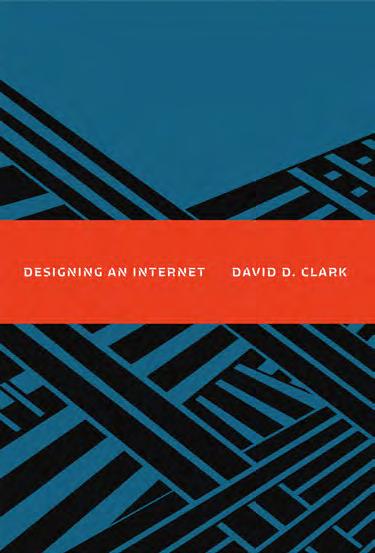
David D. Clark is a Senior Research Scientist at the MIT Computer Science and Artificial Intelligence Lab and a leader in the design of the internet since the 1970s.
Why the internet was designed to be the way it is, and how it could be different, now and in the future.
October 6 x 9, 416 pp. 1 illus.
$32.95T/£26.00 cloth 978-0-262-03860-7
Information Policy series
TRADE 47 MITPRESS.MIT.EDU | FALL 2018
How art makes visible what had been invisible—the effects of radiation, the lives of atomic bomb survivors, and the politics of the atomic age. December 6 x 9, 424 pp. 168 illus. $34.95T/£27.00 cloth 978-0-262-03854-6 A Leonardo Book
art
Invisible Colors
The Arts of the Atomic Age Gabrielle Decamous
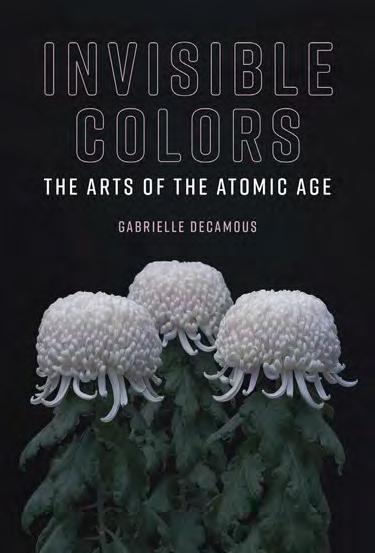
The effects of radiation are invisible, but art can make it and its effects visible. Artwork created in response to the events of the nuclear era allow us to see them in a different way. In Invisible Colors, Gabrielle Decamous explores the atomic age from the perspective of the arts, investigating atomic-related art inspired by the work of Marie Curie, the bombings of Hiroshima and Nagasaki, the disaster at Fukushima, and other episodes in nuclear history.
Decamous looks at the “Radium Literature” based on the work and life of Marie Curie; “A-Bomb literature” by Hibakusha (bomb survivor) artists from Nagasaki and Hiroshima; responses to the bombings by Western artists and writers; art from the irradiated landscapes of the Cold War—nuclear test sites and uranium mines, mainly in the Pacific and some African nations; and nuclear accidents in Fukushima, Chernobyl, and Three Mile Island. She finds that the artistic voices of the East are often drowned out by those of the West. Hibakusha art and Japanese photographs of the bombing are little known in the West and were censored; poetry from the Marshall Islands and Moruroa is also largely unknown; Western theatrical and cinematic works focus on heroic scientists, military men, and the atomic mushroom cloud rather than the aftermath of the bombings.
Emphasizing art by artists who were present at these nuclear events— the “global Hibakusha”—rather than those reacting at a distance, Decamous puts Eastern and Western art in dialogue, analyzing the aesthetics and the ethics of nuclear representation.
Gabrielle Decamous is Associate Professor in the Faculty of Languages and Cultures at Kyushu University in Fukuoka, Japan. She has taught at Goldsmiths, University of London, and was the recipient of a Hilla Rebay International Fellowship, working with curators at museums in New York, Bilbao, and Venice and the recipient of a KAKENHI (Grants-in-aid for Scientific Research) in Japan.
TRADE 48 FALL 2018 | MITPRESS.MIT.EDU
The Death Algorithm and Other Digital Dilemmas
Roberto Simanowski
translated by Jefferson Chase
In The Death Algorithm and Other Digital Dilemmas, Roberto Simanowski wonders if we are on the brink of a society that views social, political, and ethical challenges as technological problems that can be fixed with the right algorithm, the best data, or the fastest computer. For example, the “death algorithm” is programmed into a driverless car to decide, in an emergency, whether to plow into a group of pedestrians, a mother and child, or a brick wall. Can such life-and-death decisions no longer be left to the individual human?
In these incisive essays, Simanowski asks us to consider what it means to be living in a time when the president of the United States declares the mainstream media to be an enemy of the people—while Facebook transforms the people into the enemy of mainstream media. Simanowski describes smart phone zombies (or “smombies”) who remove themselves from the physical world to the parallel universe of social media networks; calls on Adorno to help parse Trump’s tweeting; considers transmedia cannibalism, as written text is transformed into a post-literate object; compares the economic and social effects of the sharing economy to a sixteen-wheeler running over a plastic bottle on the road; and explains why philosophy might become the most important element in the automotive and technology industries.
Roberto Simanowski is a scholar of media and cultural studies and the author of Digital Art and Meaning, Data Love, Facebook Society, Waste: A New Media Primer (MIT Press), and other books.

Provocative takes on cyberbullshit, smart phone zombies, instant gratification, the traffic school of the information highway, and other philosophical concerns of the internet age.
November 4 1/2 x 7, 192 pp.
$18.95T/£14.99 paper 978-0-262-53637-0
Untimely Meditations series
TRADE 49 MITPRESS.MIT.EDU | FALL 2018 philosophy
media
|
On Facebook and fake news, selfies and selfconsciousness, selling our souls to the internet, and other topics. November 4 1/2 x 7, 160 pp.
$17.95T/£13.99 paper 978-0-262-53627-1
Untimely Meditations series
Waste
A New Media Primer Roberto Simanowski translated by Amanda DeMarco and Susan H. Gillespie
With these engaging and provocative essays, Roberto Simanowski considers what new media has done to us. Why is digital privacy being eroded and why does society seem not to care? Why do we escape from living and loving the present into capturing, sharing, and liking it? And how did we arrive at a selfie society without self-consciousness?
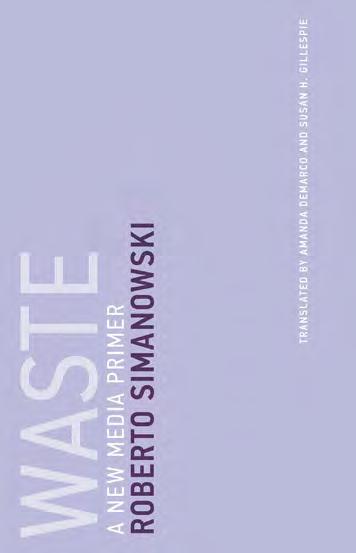
Simanowski, who has been studying the internet and social media since the 1990s, goes deeper than the conventional wisdom. For example, on the question of Facebook’s responsibility for the election of Donald Trump, he argues that the problem is not the “fake news” but the creation of conditions that make people susceptible to fake news. The hallmark of the internet is its instantaneousness, but, Simanowski cautions, speed is the enemy of depth. On social media, he says, “complex arguments are jettisoned in favor of simple slogans, text in favor of images, laborious explorations at understanding the world and the self in favor of amusing banalities, deep engagement in favor of the click.” Simanowski wonders if we have sold our soul to Silicon Valley, as Faust sold his to the Devil; credits Edward Snowden for making privacy a news story; looks back at 1984, 1984, and Apple’s famous sledgehammer commercial; and considers the shitstorm, mapping waves of Internet indignation—including one shitstorm that somehow held Adidas responsible for the killing of dogs in Ukraine. “Whatever gets you through the night,” sang John Lennon in 1974. Now, Simanowski says, it’s Facebook that gets us through the night; and we have yet to grasp the implications of this.
and Other Digital Dilemmas (MIT Press), and other books.
Roberto Simanowski is a scholar of media and cultural studies and the author of Digital Art and Meaning, Data Love, Facebook Society, The Death Algorithm
TRADE 50 FALL 2018 | MITPRESS.MIT.EDU philosophy
media
|
German Philosophy
A Dialogue
Alain Badiou and Jean-Luc Nancy edited by Jan Völker translated by Richard Lambert
In this book, Alain Badiou and Jean-Luc Nancy, the two most important living philosophers in France, discuss German philosophy from a French perspective. Written in the form of a dialogue, and revised and expanded from a 2016 conversation between the two philosophers at the Unversität der Künste Berlin, the book offers not only Badiou’s and Nancy’s reinterpretations of German philosophers and philosophical concepts, but also an accessible introduction to the greatest thinkers of German philosophy. Badiou and Nancy discuss and debate such topics as the legacies of Kant, Hegel, and Marx, as well as Nietzsche, Adorno, Fichte, Schelling, and the unavoidable problem of Heidegger and Nazism. The dialogue is contentious, friendly, and often quotable, with strong—at times passionate—positions taken by both Badiou and Nancy, who find themselves disagreeing over Kant, for example, and in unexpected agreement on Marx, for another.

What does it mean, then, to conduct a dialogue on German philosophy from a French perspective? As volume editor Jan Völker observes, “German philosophy” and “French philosophy” describe complex constellations that, despite the reference to nation-states and languages, above all encompass shared concepts and problems—although these take a range of forms. Perhaps they can reveal their essential import only in translation.
Alain Badiou is a French philosopher and Rene Descartes Chair and Professor of Philosophy at the European Graduate School, Switzerland. Jean-Luc Nancy is a French philosopher and the Georg Wilhelm Friedrich Hegel Chair and Professor of Philosophy at the European Graduate School.
Two eminent French philosophers discuss German philosophy— including the legacy of Kant, Hegel, Nietzsche, Adorno, Fichte, Marx, and Heidegger —from a French perspective.
September 4 1/2 x 7, 88 pp.
$12.95T/£9.99 paper 978-0-262-53570-0
Untimely Meditations series
TRADE 51 MITPRESS.MIT.EDU | FALL 2018
philosophy
What happens to the relationship between business and literature when storytelling becomes a privileged form of communication for organizations. September 4 1/2 x 7, 160 pp. 1 illus.
$14.95T/£11.99 paper 978-0-262-53574-8
Untimely Meditations series
Portrait of the Manager as a Young Author
On Storytelling, Business, and Literature
Philipp Schönthaler translated by Amanda DeMarco
Corporations love a good story. Microsoft employs a chief storyteller, who heads a team of twenty-five corporate storytellers. IBM, Coca-Cola, and the World Bank are among other organizations that have worked with storytelling methods. And, of course, Steve Jobs was famous for his storytelling. Today, narrative is a privileged form of communication for organizations. In Portrait of the Manager as a Young Author, Philipp Schönthaler explains this unlikely alliance between business and storytelling.
The contradictions are immediately apparent. If, as the philosopher Hans Blumenberg writes, stories are told to pass the time, managers would seem to have little time to spare. And yet, Schönthaler reports, stories are useful in handling complexity. When digital information flows too quickly and exceeds the capacity of the human brain, narrative can provide communicative efficiency and effectiveness. Words and numbers both vouch for truth, are both instrumentalized by management, and are inextricably interdependent.
But what happens if narrative becomes ubiquitous? Does the commercialization of narratives have an effect on literature? Through the lens of storytelling, Schönthaler explores the relationship between economics and literature and describes a form of writing that takes place in their shared spheres. Most books on storytelling in the corporate world are written by business writers; this book offers the perspective of an award-winning literary author, who considers both the impact of storytelling on business and the impact of business on literature.
Philipp Schönthaler, a Stuttgart-born writer, is the author of Nach oben ist das Leben offen (Life Opens Upwards), winner of the 2012 Clemens Brentano Prize. The German edition of Portrait of the Manager as a Young Author was awarded the Stuttgart Business Club Prize in 2016.
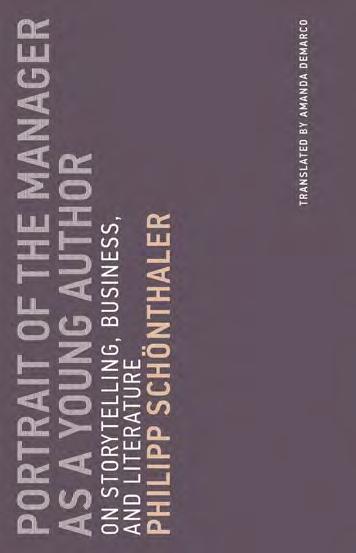
TRADE 52 FALL 2018 | MITPRESS.MIT.EDU
philosophy | literature
An Unfi nished Encyclopedia of Scale Figures without Architecture



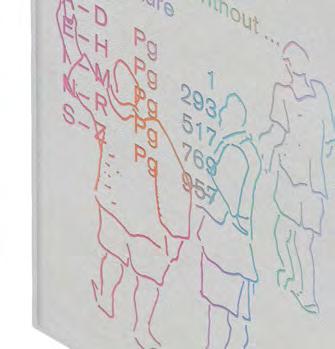

 edited by Michael Meredith, Hilary Sample, & MOS foreword by Martino Srierli afterword by Raymund Ryan
edited by Michael Meredith, Hilary Sample, & MOS foreword by Martino Srierli afterword by Raymund Ryan
Architects draw buildings, and the buildings they draw are usually populated by representations of the human figure—drawn, copied, collaged, or inserted—most often to suggest scale. It is impossible to represent architecture without representing the human form. This book collects more than 1,000 scale figures by 250 architects but presents them in a completely unexpected way: it removes them from their architectural context, displaying them on the page, buildingless, giving them lives of their own. They are presented not thematically or chronologically but encyclopedically, alphabetically by architect (Aalto to Zumthor). In serendipitous juxtapositions, the autonomous human figures appear and reappear, displaying endless variations of architecturally rendered human forms.
Some architects’ entries are casually scrawled; others are drawn carefully by hand or manipulated by Photoshop; some are collaged and pasted, others rendered in charcoal or watercolors. Leon Battista Alberti presents a trident-bearing god; the Ant Farm architecture group provides a naked John and Yoko; Archigram supplies its Air Hab Village with a photograph of a happy family. Without their architectural surroundings, the scale figures present themselves as architecture’s refugees. They are the necessary but often overlooked reference points that give character to spaces imagined for but not yet occupied by humans. Here, they constitute a unique sourcebook and an architectural citizenry of their own.

Michael Meredith is a Principal at MOS, an internationally recognized architectural practice based in New York. His writing has appeared in Artforum, LOG, Perspecta, Harvard Design Magazine, and other publications. Hilary Sample is a Principal at MOS, Associate Professor at Columbia University’s Graduate School of Architecture, Planning, and Preservation, and author of Maintenance Architecture (MIT Press). MOS, cofounded by Meredith and Sample in 2003, was the recipient of the 2015 Cooper Hewitt, Smithsonian Design Museum National Design Award in Architecture, the 2010 American Academy of Arts and Letters Architecture Award, and the 2008 Architectural League of New York Emerging Voices Award.
More than 1,000 representations of the human fi gure in architectural drawings by architects ranging from Aalto to Zumthor, removed from their architectural context
October 8 x 11, 1,280 pp. 1,248 illus.
$85.00T/£66.00 cloth 978-0-262-03867-6
TRADE 53 MITPRESS.MIT.EDU | FALL 2018
architecture
How electric light created new spaces that transformed the built environment and the perception of modern architecture. September 7 x 9, 296 pp. 27 color illus., 109 b&w illus.

$45.00T/£35.00 cloth 978-0-262-03817-1
history | cultural studies
Electric Light
An Architectural History
Sandy Isenstadt
In this book, Sandy Isenstadt examines electric light as a form of architecture—as a new, uniquely modern kind of building material. Electric light was more than just a novel way of brightening a room or illuminating a streetscape; it brought with it new ways of perceiving and experiencing space itself. If modernity can be characterized by rapid, incessant change, and modernism as the creative response to such change, Isenstadt argues, then electricity—instantaneous, malleable, ubiquitous, evanescent—is modernity’s medium.
Isenstadt shows how the introduction of electric lighting at the end of the nineteenth century created new architectural spaces that altered and sometimes eclipsed previously existing spaces. He constructs an architectural history of these new spaces through five examples, ranging from the tangible miracle of the light switch to the immaterial and borderless gloom of the wartime blackout. He describes what it means when an ordinary person can play God by flipping a switch; when the roving cone of automobile headlights places driver and passenger at the vertex of a luminous cavity; when lighting in factories is seen to enhance productivity; when Times Square became an emblem of illuminated commercial speech; and when the absence of electric light in a blackout produced a new type of space. In this book, the first sustained examination of the spatial effects of electric lighting, Isenstadt reconceives modernism in architecture to account for the new perceptual conditions and visual habits that followed widespread electrification.
Sandy Isenstadt is a Professor in the Art History Department and Director of the Center for Material Culture Studies at the University of Delaware. He is the author of The Modern American House: Spaciousness and Middle-Class Identity
TRADE 54 FALL 2018 | MITPRESS.MIT.EDU
architectural
Perspecta 51

Medium
The
Yale Architectural Journal edited by Shayari de Silva, Dante Furioso, and Samantha Jaff
Since the arrival of radio and television in the twentieth century, understandings of space have become visibly intertwined with what is commonly referred to as the media. But what is a medium? Dictionaries define “medium” as something in the middle, or, a means of conveyance, and this elemental understanding of medium has nourished early conversations of networks and cybernetics, as well as recent media theory. Yet today, midcentury architectural fictions and fantasies are reality—nomadic devices connect people, rooms, buildings, and cities to vast networks of data, capital, and energy; media are palpably enmeshed in the concrete built environment surrounding us. This volume of Perspecta—the oldest and most distinguished student-edited architectural journal in America—takes a broad view of medium to take stock of and unpack unexpected relationships.
The study of medium is transscalar and transhistorical. Therefore, media are part of a continuum, and architecture is inseparable from medium. For this reason, Perspecta 51 does not focus exclusively on the “new media” of today or predictions about the future; instead, it presents a conversation among varied theories on medium set against a series of architectural case studies. These include articles about about images and digital commons, heating systems and thermostats, sea level rise and flood-monitoring apps, search lights and public space, media walls and megastructures, social media capitals and suburban sprawl, surveillance and library architecture. These stories are grounded in the theories of medium design, mediascapes, and media politics. Perspecta 51 provides new histories and fresh responses to the notion of medium that might illuminate possibilities for its productive use (and misuse) by architects.
Contributors
Shamsher Ali, Nick Axel, åyr, Aleksandr Bierig, Francesco Casetti, Beatriz Colomina, Keller Easterling, Moritz Gleich, Evangelos Kotsioris, Reinhold Martin, Christine Shannon Mattern, Marshall McLuhan, Scott McQuire, Ginger Nolan, Shveta Sarda, Jeffrey Schnapp, Dubravka Sekulic, Prasad Shetty, Molly Steenson, Neyran Turan, Christina Varvia, Richard Vijgen
Essays, interviews, and projects that consider the notion of medium and the possibilities for its productive use (and misuse) by architects.
August 9 x 12, 360 pp. 140 color illus., 60 b&w illus. $29.95T/£24.00 paper 978-0-262-53592-2
Shayari de Silva, Dante Furioso, and Samantha Jaff are practicing architects and graduates of the Yale School of Architecture.
TRADE 55 MITPRESS.MIT.EDU | FALL 2018
architecture
An examination of a 1970s Conceptual art project— advertisements for fictional shows by fictional artists in a fictional gallery— that hoodwinked the New York art world. September 5 1/2 x 8 1/2, 400 pp. 53 color illus., 82 b&w illus.
$27.95T/£22.00 cloth 978-0-262-03846-1
The Jean Freeman Gallery Does Not Exist
 Christopher Howard
Christopher Howard
From the summer of 1970 to March 1971, advertisements appeared in four leading art magazines—Artforum, Art in America, Arts Magazine, and ARTnews—for a group show and six solo exhibitions at the Jean Freeman Gallery at 26 West Fifty-Seventh Street, in the heart of Manhattan’s gallery district. As gallery goers soon discovered, this address did not exist—the street numbers went from 16 to 20 to 24 to 28—and neither did the art supposedly exhibited there. The ads were promoting fictional shows by fictional artists in a fictional gallery. The scheme, eventually exposed by a New York Times reporter, was concocted by the artist Terry Fugate-Wilcox as both work of art and critique of the art world. In this book, Christopher Howard brings this forgotten Conceptual art project back into view.
Howard demonstrates that Fugate-Wilcox’s project was an exceptionally clever embodiment of many important aspects of Conceptualism, incisively synthesizing the major aesthetic issues of its time—documentation and dematerialization, serialism and process, text and image, publishing and publicity. He puts the Jean Freeman Gallery in the context of other magazine-based work by Mel Bochner, Judy Chicago, Yoko Ono, and Ed Ruscha, and compares the fictional artists’ projects with actual Earthworks by Walter De Maria, Peter Hutchinson, Dennis Oppenheim, and more. Despite the deadpan perfection of the Jean Freeman Gallery project, the art establishment marginalized its creator, and the project itself was virtually erased from art history. Howard corrects these omissions, drawing on deep archival research, personal interviews, and investigation of fine-printed clues to shed new light on a New York art world mystery.
Christopher Howard is an art historian, critic, and editor based in New York. His writing has appeared in Artforum, Art Papers, the Brooklyn Rail, and other publications.
TRADE 56 FALL 2018 | MITPRESS.MIT.EDU art
Russian Dada 1914–1924
edited by Margarita Tupitsyn
This is the first book to approach Russian avant-garde art from the perspective of the anti-art canons associated with the international Dada movement. The works described and documented in Russian Dada were produced at the height of Dada’s flourishing, between World War I and the death of Vladimir Lenin—who, incidentally, was a frequent visitor to Cabaret Voltaire in Zurich, the founding site of Dada. Like the Dadaists, the Russian avant-gardists whose works appear in this volume strove for internationalism, fused the verbal and visual, and engaged in eccentric practices and pacifist actions, including outrageous performances and anti-war campaigns.
The works featured in this lavishly illustrated volume thrive on negation, irony, and absurdity, with the goal of constructing a new aesthetic paradigm that is an alternative to both positivist and rationalist Constructivism as well as metaphysical and cosmic Suprematism. The text and images show that, while not neglecting the serious project of public agitation for Marxist ideology, the artists often pushed the Dadaesque into Russian mass culture, in the form of absurdist and chance-based collages and designs. In such works, Russian “da, da (yes, yes)” was converted into a defiant “nyet, nyet (no, no)”.
Russian Dada, which accompanies a major exhibition at the Museo Reina Sofia, Madrid, includes 250 images, almost all in color, and essays by leading art historians. An appendix provides a wide selection of primary texts—historical writings by such key figures as Nikolai Punin, Kazimir Malevich, Varvara Stepanova, and Aleksandr Rodchenko.
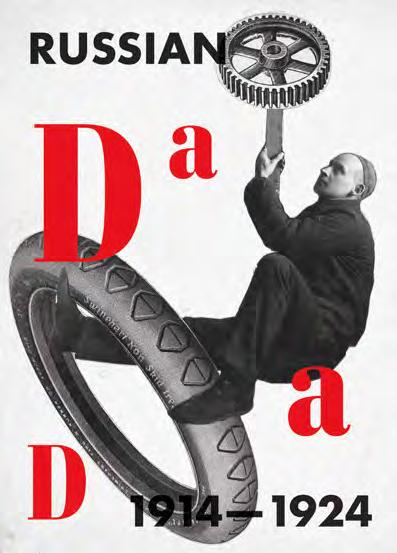
Margarita Tupitsyn, an independent scholar and curator, is the author of Moscow Vanguard Art 1922–1992. Her curatorial projects include the Russian Pavilion of the 56th Venice Biennial and Rodchenko and Popova: Defining Constructivism (Tate Modern, London, MNCARS, Madrid, 2009–2010).
Essays by Margarita Tupitsyn, Victor Tupitsyn, Natasha Kurchanova, Olga Burenina-Petrova
Artists
Natan Altman, Vasilii Ermilov, 41°, Ivan Kluin, Gustav Klutsis, Aleksei Kruchenykh, Valentina Kulagina, Vladimir Lebedev, Kazimir Malevich, Aleksei Morgunov, the Nothingdoers, Ivan Puni, Aleksandr Rodchenko, Olga Rozanova, Sergei Sharshun, Varvara Stepanova, Wladyslaw Strzeminski, Vladimir Tatlin, Igor Terentiev, Nadezhda Udaltsova, Ilya Zdanevich, Kirill Zdanevich
A lavishly illustrated volume that views Russian avant-garde art through the lens of Dada.
September 7 x 9 1/2, 350 pp. 200 color illus., 50 b&w illus. $50.00T/£40.00 paper 978-0-262-53639-4
Copublished with the Museo Nacional Centro de Arte Reina Sofía (MNCARS), Madrid
EXHIBITION
Museo Nacional Centro de Arte Reina Sofía, Madrid June 5–October, 22, 2018
TRADE 57 MITPRESS.MIT.EDU | FALL 2018 art
The first book to document how artists of the early twentieth century responded to new scientific conceptions of reality. September 7 x 9, 336 pp. 56 color illus., 54 b&w illus.
$34.95T/£27.00 cloth 978-0-262-03847-8
Copublished with the Mead Art Museum, Amherst College
Dimensionism
Modern Art in the Age of Einstein edited
by Vanja V. Malloy foreword by David Little
In the early twentieth century, influenced by advances in science that included Einstein’s theory of relativity and newly powerful microscopic and telescopic lenses, artists were inspired to expand their art—to capture a new metareality that went beyond human perception into unseen dimensions. In 1936, the Hungarian poet Charles Sirató authored the Dimensionist Manifesto, signaling a new movement that called on artists to transcend “all the old borders and barriers of the arts.” The manifesto was the first attempt to systematize the mass of changes that we now call modern art, and was endorsed by an impressive array of artists, including Jean Arp, Alexander Calder, Robert Delaunay, Sonia Delaunay, César Domela, Marcel Duchamp, Wassily Kandinsky, Joan Miró, László Moholy-Nagy, Ben Nicholson, Enrico Prampolini, and Sophie TaeuberArp. Dimensionism is the first book in English to explore how these and other “Dimensionists” responded to the scientific breakthroughs of their era.

The book, which accompanies a traveling exhibition, reproduces works by the manifesto’s initial endorsers and by such artists as Georges Braque, Joseph Cornell, Helen Lundeberg, Man Ray, Herbert Matter, Isamu Noguchi, Pablo Picasso, Kay Sage, Patrick Sullivan, and Dorothea Tanning. It also offers essays by prominent art historians that examine Sirató’s now almost-forgotten text and the artists who searched for a means of expression that obliterated old conceptions and parameters. Appearing for the first time in English is Sirató’s own “History of the Dimensionist Manifesto,” written in 1966. The book brings a longforgotten voice and text back into circulation.
Vanja V. Malloy is Curator of American Art at Amherst College’s Mead Art Museum. She was previously Chester Dale Fellow in the Department of Modern and Contemporary Art at the Metropolitan Museum of Art.
EXHIBITION
Berkeley Art Museum and Pacific Film Archive (BAMPFA) November 7, 2018–March 3, 2019
Mead Art Museum, Amherst College March 2019–June 2019
Essays
by Oliver A. I. Botar, Linda Dalrymple Henderson, Vanja V. Malloy, Gavin Parkinson
Artists include Alexander Archipenko, Jean Arp, Georges Braque, Alexander Calder, Joseph Cornell, Robert Delaunay, Sonia Delaunay, Marcel Duchamp, Max Ernst, Naum Gabo, Barbara Hepworth, Wassily Kandinsky, Helen Lundeberg, Man Ray, Joan Miró, László Moholy-Nagy, Henry Moore, Isamu Noguchi, Pablo Picasso, Kay Sage, Sophie Taeuber-Arp, Yves Tanguy, Dorothea Tanning
TRADE 58 FALL 2018 | MITPRESS.MIT.EDU
art | science
Dissidence
The Rise of Chinese Contemporary Art in the West Marie Leduc
Interest in Chinese contemporary art increased dramatically in the West shortly after the 1989 Tiananmen Square protests. Sparked by political sympathy and the mediatized response to the event, Western curators, critics, and art historians were quick to view the new art as an expression of dissident resistance to the Chinese regime. In this book, Marie Leduc proposes that this attribution of political dissidence is not only the result of latent Cold War perceptions about China, but also indicative of the art world’s demand for artistically and politically provocative work—a demand that mirrors the valorization of free expression in liberal democracies.
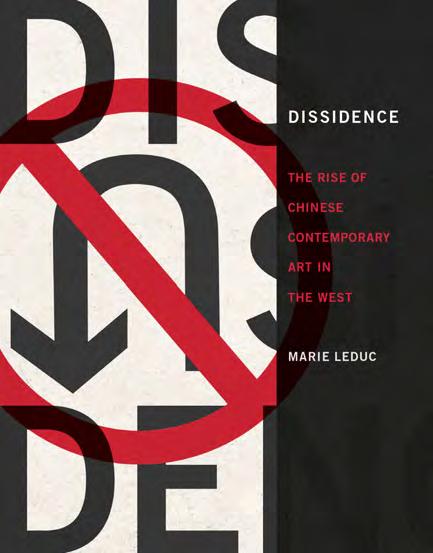
Focusing on nine Chinese artists—Wang Du, Wang Keping, Huang Yong Ping, Yang Jiechang, Chen Zhen, Yan Pei-Ming, Shen Yuan, Ru Xiaofan, and Du Zhenjun—who migrated to Paris in and around 1989, Leduc explores how their work was recognized before and after the Tiananmen Square incident. Drawing on personal interviews with the artists and curators, and through an analysis of important exhibitions, events, reviews, and curatorial texts, she demonstrates how these and other Chinese artists have been celebrated both for their artistic dissidence—their formal innovations and introduction of new media and concepts—and for their political dissidence—how their work challenges political values in both China and the West. As Leduc concludes, the rise of Chinese contemporary art in the West highlights the significance of artistic and political dissidence in the production of contemporary art, and the often-unrecognized relationship between contemporary art and liberal democracy.
Marie Leduc is an art historian and writer who has lectured internationally on contemporary art. In addition to teaching at universities in Canada, she has published reviews, feature articles, and interviews in Canadian Art, Yishu: Journal of Contemporary Chinese Art, and Media-N: The Journal of the New Media Caucus.
How the valorization of artistic and political dissidence has contributed to the rise of Chinese contemporary art in the West.
September 7 x 9, 240 pp. 21 color illus., 2 b&w illus. $32.95T/£26.00 cloth 978-0-262-03852-2
TRADE 59 MITPRESS.MIT.EDU | FALL 2018 art
The story of the experimental zeitgeist in Eastern European art, seen through personal encounters, pioneering dialogues, collaborative projects, and cultural exchanges. December 7 x 9, 400 pp. 36 color illus., 198 b&w illus.
$49.95T/£40.00 cloth 978-0-262-03830-0
Networking the Bloc
Experimental Art in Eastern Europe 1965–1981
Klara Kemp-Welch
Throughout the 1970s, a network of artists emerged to bridge the EastWest divide. Originating with a series of creative initiatives by artists, art historians, and critics based in places like Budapest, Poznań, and Prague, this experimental dialogue involved Western participation but is today largely forgotten in the West. In Networking the Bloc, Klara KempWelch vividly recaptures this lost chapter of art history, documenting an elaborate web of artistic connectivity that came about through a series of personal encounters, pioneering dialogues, collaborative projects, and cultural exchanges. Countering the conventional Cold War narrative of Eastern bloc isolation, Kemp-Welch shows how artistic ideas were relayed among like-minded artists across ideological boundaries and national frontiers.
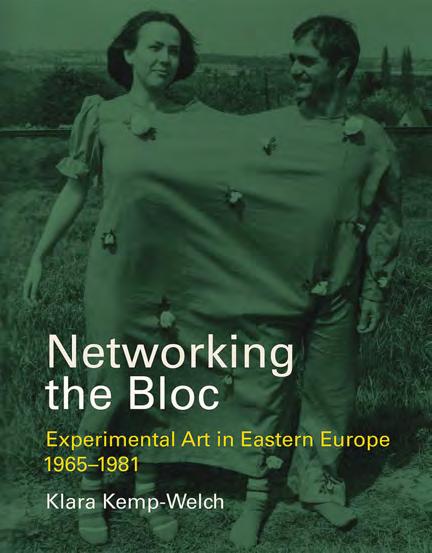
Much of the work created was collaborative, and personal encounters were at its heart. Drawing on archival documents and interviews with participants, Kemp-Welch focuses on the exchanges and projects themselves rather than the personalities involved. Each of the projects she examines relied for its realization on a network of contributors. She looks first at the mobilization of the network, from 1965 to 1972, exploring five pioneering cases: a friendship between a Slovak artist and a French critic, an artistic credo, an exhibition, a conceptual proposition, and a book. She then charts a series of way stations for experimental art from the Soviet bloc between 1972 and 1976—points of distribution between studios, private homes, galleries, and cities. Finally, she investigates convergences—a succession of shared exhibitions and events in the second half of the 1970s in locations ranging from Prague to Milan to Moscow. Networking the Bloc invites us to rethink the art of the late Cold War period from Eastern European perspectives.
Klara Kemp-Welch is a Lecturer in twentieth-century modernism at the Courtauld Institute of Art, London. She is the author of Antipolitics in Central European Art.
TRADE 60 FALL 2018 | MITPRESS.MIT.EDU art
Why Art Museums?

The Unfinished Work of Alexander Dorner edited by Sarah
Ganz Blythe and Andrew Martinez
Alexander Dorner (1893–1957) became Director of the Rhode Island School of Design Museum in 1938, and immediately began a radical makeover of the galleries, drawing on theories he had developed in collaboration with modernist artists during his directorship of the Provinzialmuseum in Hanover, Germany. Dorner’s saturated environments sought to inspire wonderment and awe, immersing the museum visitor in the look and feel of a given period. Music, literature, and gallery talks (offered through a pioneering audio system) attempted to recreate the complex worlds in which the objects once operated. Why Art Museums? considers Dorner’s legacy and influence in art history, education, and museum practice. It includes the first publication of a 1938 speech made by Dorner at Harvard as well as galleys of Dorner’s unpublished manuscript, “Why Have Art Museums?,” both of which explore the meaning and purpose of museums and art in society.
In Germany, Dorner formed close relationships with the Bauhaus artists and made some of the first acquisitions of works by Lázló Moholy-Nagy, Kazimir Malevich, El Lissitzky, and others. The Nazi regime actively opposed Dorner’s work, and he fled Germany for the United States. At the RISD Museum, Dorner clashed with RISD officials and Providence society and contended with wartime anti-German bias. His tenure at RISD was brief but highly influential. The essays and unpublished material in Why Art Museums? make clear the relevance of Dorner’s ideas about progressive education, public access to art and design, and the shaping of environments for experience and learning.
Sarah Ganz Blythe is Deputy Director of Exhibitions, Education, and Programs at the RISD Museum and coauthor of Looking at Dada Andrew Martinez is an Archivist at RISD and the coeditor of Infinite Radius: Founding Rhode Island School of Design.
Contributors
Alexander Dorner, Sarah Ganz Blythe, Daniel Harkett, Andrew Martinez, Dietrich Neumann, Rebecca Uchill
Alexander Dorner’s radical ideas about the purpose of museums and art, examined through his tenure as Director of the RISD Museum.
September 8 x 11, 272 pp. 28 color illus., 52 illus. $39.95T/£30.00 cloth 978-0-262-03914-7
Copublished with the RISD Museum
TRADE 61 MITPRESS.MIT.EDU | FALL 2018 art
A history of craft told through lost and overlooked texts that illuminate our understanding of current art practice. September 5 3/4 x 8 1/4, 240 pp. $24.95T 978-0-262-53583-0
Documents of Contemporary Art series
Copublished with Whitechapel Gallery, London
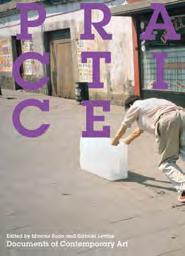
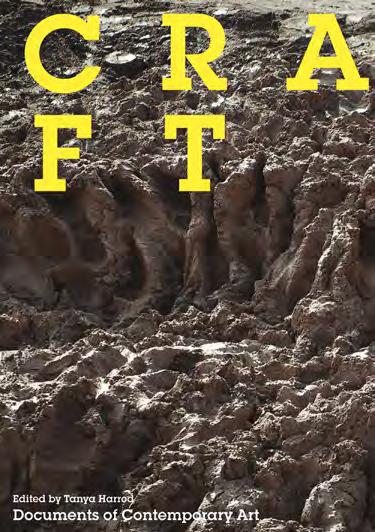
Not for sale in the UK or Europe
Also in this series Practice
edited by Marcus Boon and Gabriel Levine $24.95T paper 978-0-262-53539-7
edited by Tanya Harrod
“Craft” is a contested concept in art history and a vital category through which to understand contemporary art. Through craft, materials, techniques, and tools are investigated and their histories explored in order to reflect on the politics of labor and on the extraordinary complexity of the made world around us. This anthology offers an ethnography of craft, surveying its shape-shifting identities in the context of progressive art and design through writings by artists and makers as well as poetry, fiction, anthropology, and sociology. It maps a secret history of craft through lost and overlooked texts that consider pedagogy, design, folk art, the factory, and new media in ways that illuminate our understanding of current art practice.
Recently, the idea of craft has been employed strategically: to confront issues of gender or global development, to make a stand against artistic academicism, or to engage with making processes—some distinctly archaic—employed to suggest the abject and the everyday. Craft activism, or craftivism, suggests a new political purpose for the handmade. Deep anxieties drive today’s technophilia, and artists, designers, and makers turn such anxieties into a variety of dynamic engagements. The contributors’ reflections on new technologies and materials, lost and found worlds of handwork, and the politics of work all throw light on craft as process, product, and ideology. Craft will serve as a vital resource for understanding technologies, materials, techniques, and tools through the lens of craft in contemporary art.
Tanya Harrod is an independent design historian living in London who writes widely on craft, art, and design. She is coeditor of the Journal of Modern Craft.
Artists surveyed include Anni Albers, Magdalena Abakanowicz, El Anatsui, Carl Andre, Phyllida Barlow, Louise Bourgeois, Annie Cattrell, Richard Deacon, Sam Durant, Antje Ehmann, Harun Farocki, Lucio Fontana, Theaster Gates, Sabrina Geschwantner, Harmony Hammond, Brian Jungen, Henry Krokatsis, Jim Lambie, Ana Lupas, Enzo Mari, Ethel Mairet, Agnes Martin, Robert Morris, Simon Periton, Martin Puryear, Jessi Reaves, Hannah Ryggen, Gerhard Richter, Bridget Riley, Lu Shengzhong, Studio Formafantasma, Thomas Thwaites, Troy Town Art Pottery, Francis Uprichard, Peter Voulkos, Edmund de Waal
Writers include
Glenn Adamson, W. H. Auden, Elissa Auther, Reyner Banham, Jean Baudrillard, John Berger, Walter Benjamin, Juliet Bingham, Michel de Certeau, Iftikhar Dadi, Daniel Defoe, John Dewey, Vilém Flusser, Alfred Gell, Walter Gropius, Martin Heidegger, Joan Key, Primo Levi, Sarat Marahraj, Karl Marx, Lev Manovich, William Morris, Sadie Plant, Rainer Maria Rilke, Jenni Sorkin, Richard Sennett, Julia Bryan-Wilson
Craft
TRADE 62 FALL 2018 | MITPRESS.MIT.EDU art
Bruce Nauman
edited by Taylor Walsh
This volume collects essential texts on the work of Bruce Nauman (b. 1941), an artist of exceptional range whose work continues to probe the fundamentals of both life and art. These critical writings, scholarly essays, and an interview span five decades of Nauman’s career, ranging from the first substantive feature on his work, published in 1967, to a catalog essay from his 2018 retrospective. Written by prominent critics, art historians, and curators, the individual texts consider his work in various media, from photography and artists’ books to sculpture, video, and room-scaled installations.
Taken together, the essays trace the arc of critical reception given to Nauman’s work, charting the (somewhat uneven) path to his current eminence as one of our truly indispensable living artists.
Taylor Walsh is a PhD candidate at Harvard University and a Curatorial Assistant at the Museum of Modern Art, New York, where she is a co-organizer of the retrospective Bruce Nauman: Disappearing Acts.
Contributors
Kathryn
CONTENTS
The Art of Bruce Nauman (1967) Fidel A. Danieli
PheNAUMANology (1970) Marcia Tucker
Bruce Nauman: Another Kind of Reasoning (1972) Robert Pincus-Witten
Breaking the Silence: An Interview with Bruce Nauman (1988) Bruce Nauman and Joan Simon
Three Statements on the Recent Reception of Bruce Nauman (1995) John Miller, Pamela M. Lee, and Isabelle Graw
Nauman’s Beckett Walk (1998) Kathryn Chiong
Dependent Participation: Bruce Nauman’s Environments (2003) Janet Kraynak
Nauman’s Body of Sculpture (2007) Anne M. Wagner
Video promenades: Nauman Taking Architecture for a Walk (2011) Rosalind Krauss
Bruce Nauman: Going Solo (2012) Robert Slifkin
Deceptive Practice (2018) Jeffrey Weiss
Small Fires Burning: Bruce Nauman and the Activation of Conceptual Art (2018) Taylor Walsh
Essential texts on the work of Bruce Nauman, spanning the five decades of the artist’s career. September 6 x 9, 240 pp. 69 illus. $21.95T/£16.99 paper 978-0-262-53567-0 $50.00X/£40.00 cloth 978-0-262-03836-2
October Files
 Chiong, Fidel A. Danieli, Isabel Graw, Rosalind Krauss, Janet Kraynak, Pamela M. Lee, John Miller, Robert Pincus-Witten, Joan Simon, Robert Slifkin, Marcia Tucker, Anne M. Wagner, Taylor Walsh, and Jeffrey Weiss
Chiong, Fidel A. Danieli, Isabel Graw, Rosalind Krauss, Janet Kraynak, Pamela M. Lee, John Miller, Robert Pincus-Witten, Joan Simon, Robert Slifkin, Marcia Tucker, Anne M. Wagner, Taylor Walsh, and Jeffrey Weiss
TRADE 63 MITPRESS.MIT.EDU | FALL 2018
art
Texts—including essays, reviews, and statements by the artist—on the work of Sherrie Levine. September 6 x 9, 240 pp. 38 illus.

$24.95T/£20.00 paper 978-0-262-53572-4
$45.00X/£35.00 cloth 978-0-262-03858-4
October Files
Sherrie Levine
edited by Howard Singerman
The artist Sherrie Levine (b. 1947) is best known for her appropriations of work by other artists—most famously for her rephotographs of Edward Weston, Eliot Porter, and other masters of modern photography. Since those works of the early 1980s, she has continued to work on and “after” artists whose names have come to define modernism, making sculpture after Brancusi and Duchamp, paintings after Malevich and Blinky Palermo, watercolors after Matisse and Miró, photographs after Monet and Cezanne as well as Alfred Stieglitz. Throughout, Levine’s practice effectively uncompleted, decentered, and extended works of art that were once singular and finished, posing critical rebuttals to some of the basic assumptions of modernist aesthetics. Her work was central to the theorization of postmodernism in the visual arts—most notably as it emerged in the pages of October magazine. It challenged authorial sovereignty and aesthetic autonomy and invited readings that opened onto gender, history, and the economic and discursive processes of the art world. This collection gathers writings on Levine from art magazines, exhibition catalogs, and academic journals, spanning much of her career.
The volume begins with texts by Douglas Crimp, Rosalind Krauss, and Craig Owens that situate Levine in postmodernist discourse and link her early work to October. The essays that follow draw on these first critical forays and complicate them, at once deepening and resisting them, as Levine’s own work has done. All the essays attempt to understand the relationship between Levine and the artists she cites and the objects that she recasts. In these pages, Levine’s oddly doubled works appear as chimeras, taxidermy, fandom, pratfalls, even Poussin’s Blind Orion.
Howard Singerman is Phyllis and Joseph Caroff Chair of the Department of Art and Art History at Hunter College, City College of New York. He is the author of Art Subjects: Making Artists in the American University and Art History, after Sherrie Levine
Contributors
Michel Assenmaker, Douglas Crimp, Erich Franz, Catherine Ingraham, David Joselit, Susan Kandel, Rosalind Krauss, Sylvia Lavin, Sherrie Levine, Maria Loh, Stephen Melville, Craig Owens, Howard Singerman
TRADE 64 FALL 2018 | MITPRESS.MIT.EDU art
Walker Evans
Kitchen Corner
Olivier Richon

Kitchen Corner, Tenant Farmhouse, Hale County, Alabama shows a painstakingly clean-swept corner in the house of an Alabama sharecropper. Taken in 1936 by Walker Evans as part of his work for the Farm Security Administration, Kitchen Corner was not published until 1960, when it was included in a new edition of Walker Evans and James Agee’s classic Let Us Now Praise Famous Men. The 1960 reissue of Evans and Agee’s book had an enormous impact on Americans’ perceptions of the Depression, creating a memory-image retrospectively through Walker’s iconic photographs and Agee’s text. In this latest addition to the Afterall One Work series, photographer Olivier Richon examines Kitchen Corner. The photograph is particularly significant, he argues, because it uses a documentary form that privileges detachment, calling attention to overlooked objects and to the architecture of the dispossessed. Given today’s growing economic inequality, the photograph feels pointedly relevant.
The FSA, established in 1935, commissioned photographers to document the impact of the Great Depression in America and used the photographs to advertise aid relief. For four weeks in the summer of 1936, Evans collaborated with Agee on an article about cotton farmers in the American South. The result of that project was the landmark publication Let Us Now Praise Famous Men, documenting three sharecropper families and their environment. These photographs were intimate, respectful portraits of the farmers, and of their homes, furniture, clothing, and rented land. Kitchen Corner powerfully evokes Agee’s observations of the significance of “bareness and space” in these homes: “general odds and ends are set very plainly and squarely discrete from one another. . . [giving] each object a full strength it would not otherwise have.”
An examination of one of Walker Evans’s iconic photographs of the Great Depression.
October 6 x 8 1/2, 88 pp. 24 photographs
$19.95T/£14.99 paper 978-1-84638-198-0

One Work series Distributed for Afterall Books, London
Also available in this series
Glenn Ligon
Untitled (I Am a Man)

Gregg Bordowitz
$19.95T/£14.99 paper 978-1-84638-192-8
Olivier Richon, a photographer based in London, is Professor of Photography at the Royal College of Art.
65 MITPRESS.MIT.EDU | FALL 2018
DISTRIBUTED BY THE MIT PRESS
art | photography
Projects and texts that address architecture’s role in taking on complex global challenges including climate change, housing, migration, and social justice.

October 6 1/2 x 9 1/2, 350 pp.
300 illustrations in color and b&w $35.00S/£27.00 cloth 978-0-9981170-6-5
Agendas in Architecture series Distributed for SA+P Press
Also available from SA+P Press Centerbook
The Center for Advanced Visual Studies and the Evolution of Art-Science-Technology at MIT
Elizabeth Goldring and Ellen Sebring $45.00S/£35.00 cloth 978-0-9981170-5-8
architecture
Architecture and Action
edited by J. Meejin Yoon and Irina Chernyakova
What is the role of architecture and design in addressing complex global challenges? How does one define “action” in terms of architectural scholarship and practice? How is architecture at MIT uniquely positioned to lead? Architecture education at MIT, celebrating its 150th anniversary, today encompasses research and teaching projects that address large—and sometimes highly charged—topics, including urban resilience in the face of climate change, energy use and futures, refugee housing or disaster, water management, infrastructure, the teaching of global architectural history, and explorations into the self-assembly of materials.
Architecture and Action focuses on the agency of architects and architecture within the overlapping spheres of the institution, the discipline, and the profession. Through a presentation of projects and texts, the book reveals how students and faculty—whether architects, artists, historians, technologists, or scientists—define action, considering its possible forms, procedures, and scales, as well as its potency and limits. The selected work exemplifies the wide range of approaches and zones of intervention, bringing together projects that find space for action while questioning assumptions about where architectural value is located. Whether advocating for utopian idealism, systemic overhaul, instrumental tools, or pragmatic arguments, all of the work collected here presents a powerful case for architecture’s embrace of agency and action.
J. Meejin Yoon is an architect, designer, and educator. She is Professor and Head of the Department of Architecture at MIT and cofounder of Höweler + Yoon Architecture LLP and MY Studio. Irina Chernyakova manages communications, including book and journal publications, and public programs at the MIT Department of Architecture, from which she graduated with a master’s degree in the history, theory, and criticism of architecture and art.
Contributors
Azra Aksamija, Brandon Clifford, Rania Ghosn, Mark Jarzombek, Caroline Jones, Sheila Kennedy, Miho Mazereeuw, Ana Miljacki, Nasser Rabbat, Christoph Reinhart, Rafi Segal, Skylar Tibbits
66 FALL 2018 | MITPRESS.MIT.EDU
SA + P PRESS DISTRIBUTED BY THE MIT PRESS
The Agendas in Architecture series features student and faculty design, research, and scholarship from the MIT Department of Architecture.
Monica Hutton, Ranu Singh, and Daya Zhang, “Zi Kopalni: Out of the Mines,” Poland Urban Design Studio, taught by Rafi Segal and Marie Law Adams with Garine Boghossian, Spring 2017.
literature
Evil Empire
 edited by Junot Díaz
edited by Junot Díaz
Following the popular Global Dystopias, bestselling author and Boston Review editor Junot Díaz assembles another collection of genre fiction, interviews, and essays that turn a critical lens on society. With a title that is an allusion to Ronald Reagan’s characterization of the Soviet Union, Evil Empire explores imaginary empires alongside historical ones, considering gender and racial regimes as well as the ascendancy of technology.
Featuring some of the biggest names in fiction as well as relative newcomers, Evil Empire offers a wide variety of genres, including science fiction, fantasy, historical fiction, techno-thrillers, and more. In their investigation of power and dominion, these writers raise a multitude of challenging questions. One writer, for example, imagines “the algorithmic governance of affect”—a world in which the credit scores of misbehaving and dissenting citizens are marked down at government request; another revisits Reagan’s 1983 “Evil Empire” speech and considers the burdensome legacy of Reagan’s words. Díaz interviews Tom Morello, guitarist with Rage Against the Machine, whose 1996 album was titled “Evil Empire.”
Junot Díaz is the author of the Pulitzer Prize-winning novel The Brief Wondrous Life of Oscar Wao and the short story collections Drown and This Is How You Lose Her. His work has appeared in The New Yorker, The Paris Review, Story, and Best American Short Stories. Associate Professor in the Writing and Humanistic Studies Program at MIT, he is fiction editor of Boston Review
Contributors include Junot Díaz, Michael Kimmage, Tom Morello, Frank Pasquale, Arundhati Roy
Investigation of power and dominion, through the lens of genre fi ction, interviews, and essays.
November 6 5/8 x 10 1/4, 128 pp. $16.00T/£12.99 paper 978-1-946511-11-9
Distributed for Boston Review
Also available Global Dystopias edited by Junot Díaz $19.95T/£14.99 paper 978-1-946511-04-1

Distributed for Boston Review

67 MITPRESS.MIT.EDU | FALL 2018
DISTRIBUTED BY THE MIT PRESS
Feminist scholars and writers consider whether technology has made good on its promise to liberate women —sexually, biologically, economically, and politically. September 6 5/8 x 10 1/4, 128 pp.

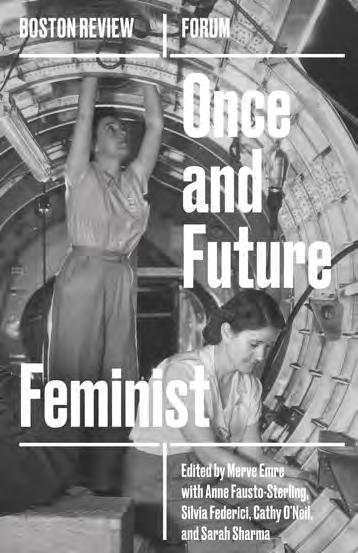
women’s studies
Once and Future Feminist
edited by Merve Emre
In Once and Future Feminist, editor and lead essayist Merve Emre turns a critical eye on the role of technology in feminism both past and present. With her starting point the “fertility benefits” offered by Silicon Valley tech companies, Emre posits that such reproductive technologies as egg freezing and in vitro fertilization aren’t inherently emancipatory; they often make women even more vulnerable to exploitation in the workplace. Almost fifty years ago, radical feminist Shulamith Firestone viewed developments in reproductive technology with skepticism, arguing in The Dialectic of Sex that they are only “incidentally in the interests of women when at all.”
Engaging other feminist writers and scholars, this collection broadens out to examine whether technology in general has made good on its promise to liberate women—sexually, biologically, economically, and politically. In this context, Once and Future Feminist considers not only whether or not a radical, emancipatory feminism is possible today but what such a feminism might look like.
Merve Emre is Assistant Professor of English Literature at McGill University. She is the author of Paraliterary: The Making of Bad Readers in Postwar America and an editor at Los Angeles Review of Books. Her book on the history of personality testing is forthcoming in 2018.
Contributors include Anne Fausto-Sterling, Sylvia Federici, Jack Halberstam, Cathy O’Neill, Sarah Sharma
68 FALL 2018 | MITPRESS.MIT.EDU
$16.00T/£12.99 paper 978-1-946511-10-2 Distributed for Boston Review
DISTRIBUTED BY THE MIT PRESS
| women’s studies
The Broadcast 41
Women and the Anti-Communist Blacklist
Carol A. Stabile
At the dawn of the Cold War era, forty-one women working in American radio and television were placed on a media blacklist and forced from their industry. The ostensible reason: so-called Communist influence. But in truth these women—among them Dorothy Parker, Lena Horne, and Gypsy Rose Lee—were, by nature of their diversity and ambition, a threat to the traditional portrayal of the American family on the airwaves. This book from Goldsmiths Press describes what American radio and television lost when these women were blacklisted, documenting their aspirations and achievements.
Through original archival research and access to FBI blacklist documents, The Broadcast 41 details the blacklisted women’s attempts in the 1930s and 1940s to depict America as diverse, complicated, and inclusive. The book tells a story about what happens when non-male, non-white perspectives are excluded from media industries, and it imagines what the new medium of television might have looked like had dissenting viewpoints not been eliminated at such a formative moment. The all-white, male-dominated Leave it to Beaver America about which conservative politicians wax nostalgic existed largely because of the forcible silencing of these forty-one women and others like them. For anyone concerned with the ways in which our cultural narrative is constructed, this book offers an urgent reminder of the myths we perpetuate when a select few dominate the airwaves.

Carol A. Stabile is Chair of the Department of Women’s Studies at the University of Maryland and the author of Feminism and the Technological Fix, White Victims, Black Villains: Gender, Race, and Crime News in US Culture, and other books.
How forty-one women— including Dorothy Parker, Gypsy Rose Lee, and Lena Horne—were forced out of American television and radio in the 1950s “Red Scare.”
November 6 x 9, 320 pp. 19 b&w illus.
$27.95T/£22.00 cloth 978-1-906897-86-4
Distributed for Goldsmiths Press
69 MITPRESS.MIT.EDU | FALL 2018
GOLDSMITHS PRESS DISTRIBUTED BY THE MIT PRESS
politics
Exploring sex—bodily capacities, appetites, orientations, and connections—in terms of play and playfulness. November 6 x 9, 208 pp. 10 illus.
$25.00S/£20.00 cloth 978-1-906897-82-6
Distributed for Goldsmiths Press
cultural studies
Many Splendored Things
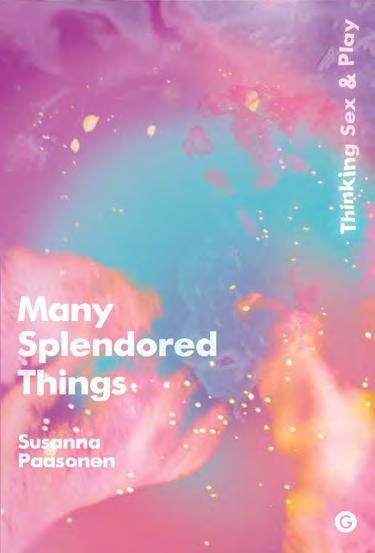
Thinking Sex and Play Susanna Paasonen
We all know that sex involves a quest for pleasure, that sexual palates vary across people’s lifespans, and that playful experimentations play a key role in how people discover their diverse sexual turn-ons and turn-offs. Yet little attention has been paid to thinking through the interconnections of sex and play, sexuality and playfulness. In Many Splendored Things from Goldsmiths Press, Susanna Paasonen considers these interconnections. Paasonen examines the notions of playfulness and play as they shed light on the urgency of sexual pleasures, the engrossing appeal of sex, and the elasticity of sexual desires, and considers their connection to categories of identity. Drawing on a broad range of scholarship on sexuality, play, and the media, Paasonen moves from the conceptual to the concrete, examining advice literature on sexual play, the vernacular aesthetics of the Fifty Shades series, girls’ experiences of online sexual role-playing, popular media coverage of age-play, and Jan Soldat’s documentary films on BDSM culture.
Paasonen argues that play in the realm of sexuality involves experimentation with what bodies can feel and do and what people may imagine themselves as doing, liking, and preferring. Play involves the exploration of different bodily capacities, appetites, orientations, and connections. Occasionally strained, dark, and even hurtful in the forms that it takes and the sensory intensities that it engenders, sex presses against previously perceived and imagined horizons of embodied potentiality. Play pushes sexual identifications into motion.
Susanna
Paasonen is Professor of Media Studies at the University of Turku in Finland and the author of Carnal Resonance: Affect and Online Pornography (MIT Press).
70 FALL 2018 | MITPRESS.MIT.EDU
DISTRIBUTED BY THE MIT PRESS GOLDSMITHS PRESS
Social Practices
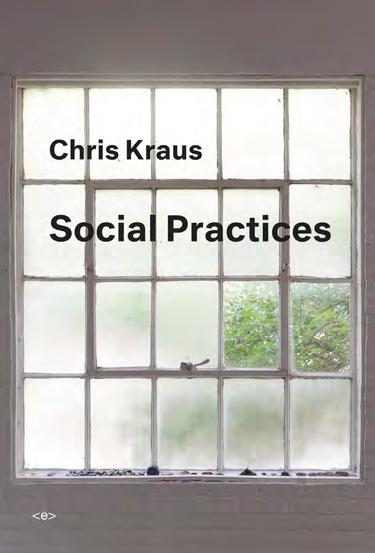 Chris Kraus
Chris Kraus
A border isn’t a metaphor. Knowing each other for over a decade makes us witnesses to each other’s lives. My escape is his prison. We meet in a bar and smoke Marlboros.
—from Social Practices
Mixing biography, autobiography, fiction, criticism, and conversations among friends, with Social Practices Chris Kraus continues the anthropological exploration of artistic lives and the art world begun in 2004 with Video Green: Los Angeles Art and the Triumph of Nothingness.
Social Practices includes writings from and around the legendary “Chance Event—Three Days in the Desert with Jean Baudrillard” (1996), and “Radical Localism,” an exhibition of art and media from Puerto Nuevo’s Mexicali Rose that Kraus co-organized with Marco Vera and Richard Birkett in 2012. Attuned to the odd and the anomalous, Kraus profiles Elias Fontes, an Imperial Valley hay merchant who has become an important collector of contemporary Mexican art, and chronicles the demise of a rural convenience store in northern Minnesota. She considers the work of such major contemporary artists as Jason Rhoades, Channa Horowitz, Simon Denny, Yayoi Kusama, Henry Taylor, Julie Becker, Ryan McGinley, and Leigh Ledare. Although Kraus casts a skeptical eye at the genre that’s come to be known as “social practice,” her book is less a critique than a proposition as to how art might be read through desire and circumstance, delirium, gossip, coincidence, and revenge. All art, she implies, is a social practice.
Chris Kraus is the author of four novels, including I Love Dick and Summer of Hate; two books of art and cultural criticism; and most recently, After Kathy Acker: A Literary Biography. She received the College Art Association’s Frank Jewett Mather Award in Art Criticism in 2008, and a Warhol Foundation Art Writing grant in 2011. She lives in Los Angeles.
Essays on and around art and art practices by the author of I Love Dick .
October 6 x 9, 272 pp.
$17.95T/£13.99 paper 978-1-63590-039-2
Active Agents series Distributed for Semiotext(e)

Also available from Semiotext(e)
Where Art Belongs Chris Kraus
$13.95T/£10.99 paper 978-1-58435-098-9
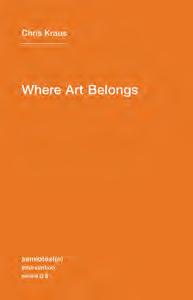
71 MITPRESS.MIT.EDU | FALL 2018
DISTRIBUTED BY THE MIT PRESS
literature
The fi rst authorized biography of postmodernism’s literary hero, Kathy Acker. September 6 x 9, 352 pp.
$16.95T paper 978-1-63590-056-9
$24.95T cloth 978-1-63590-006-4
Active Agents series Distributed for Semiotext(e)

For sale in North America only
literature | biography now in paper
After Kathy Acker
A Literary Biography
Chris Kraus
Acker’s life was a fable; and to describe the confusion and love and conflicting agendas behind these memorials would be to sketch an apocryphal allegory of an artistic life in the late twentieth century. It is girls from which stories begin, she wrote in her last notebook. And like other lives, but unlike most fables, it was created through means both within and beyond her control. —from After Kathy Acker
Rich girl, street punk, lost girl and icon. . . scholar, stripper, victim, and media-whore: the late Kathy Acker’s legend and writings are wrapped in mythologies, created mostly by Acker herself. Twenty years after her death, Acker’s legend has faded, making her writing more legible.
In this first fully authorized biography, Chris Kraus approaches Acker both as a writer and as a member of the artistic communities from which she emerged. At once forensic and intimate, After Kathy Acker traces the extreme discipline and literary strategies Acker used to develop her work, and the contradictions she longed to embody. Using exhaustive archival research and ongoing conversations with mutual colleagues and friends, Kraus charts Acker’s movement through some of the late twentieth century’s most significant artistic enterprises.
Beginning in her mid-teens, Acker lived her ideal of the Great Writer as Cultural Hero, and as Kraus argues, she may well have been the only female writer to succeed in assuming this role. She died of untreated cancer at an alternative clinic in Tijuana when she was fifty years old, but the story that After Kathy Acker tells indicates that the real pathos of Acker’s life may have been in the fact that by then she’d already outlived her ideal.
Chris Kraus is the author of four novels, including Aliens & Anorexia, I Love Dick, and Torpor, and two books of art and cultural criticism, all published by Semiotext(e). She was a 2016 Guggenheim Fellow and teaches writing at the European Graduate School.
“Hardly anyone writes better or more insightfully than Chris Kraus about the lives of women or artists.”
—Julie Phillips, author of The Double Life of Alice B. Sheldon
“Chris Kraus, one of our most innovative art critics, who is also one of our best fiction writers, now becomes one of our more adventuous biographers.”
—Holland Cotter, Best Art Books of 2017, New York Times
“Chris Kraus’ After Kathy Acker is the smartest, cruelest, most intimately clinical, which is to say, best biography of Acker one could hope for.”
—David Velasco, Bookforum

72 FALL 2018 | MITPRESS.MIT.EDU
DISTRIBUTED BY THE MIT PRESS
literature | art criticism
Vile Days
The Village Voice Art Columns, 1985–1988

 Gary Indiana
edited by Bruce Hainley
Gary Indiana
edited by Bruce Hainley
In 1985, the Village Voice offered me a job as senior art critic. This made my life easier and lousy at the same time. I now had to actually enter all those galleries instead of peeking in the windows. At times, the only tangible perk was having the chump for a fifth of vodka whenever twenty more phonies had flattered my ass off in the course of a working week.
—from Vile Days
From March 1985 through June 1988 in The Village Voice, Gary Indiana reimagined the weekly art column. Thirty years later, Vile Days brings together for the first time all of those vivid dispatches, too long stuck in archival limbo, so that the fire of Indiana’s observations can burn again. In the midst of Reaganism, the grim toll of AIDS, and the frequent jingoism of postmodern theory, Indiana found a way to be the moment’s Baudelaire. He turned the art review into a chronicle of life under siege.
As a critic, Indiana combines his novelistic and theatrical gifts with a startling political acumen to assess art and the unruly environments that give it context. No one was better positioned to elucidate the work of key artists at crucial junctures of their early careers, from Sherrie Levine and Richard Prince to Jeff Koons and Cindy Sherman, among others. But Indiana also remained alert to the aesthetic consequence of sumo wrestling, flower shows, public art, corporate galleries, and furniture design. Edited and prefaced by Bruce Hainley, with an afterword by Tobi Haslett, Vile Days provides an opportunity to track Indiana’s emergence as one of the most prescient writers of his generation.
Gary Indiana is a novelist, playwright, critic, essayist, filmmaker, and artist. Hailed by The Guardian as “one of the most important chroniclers of the modern psyche,” and by The Observer as “one of the most woefully underappreciated writers of the last 30 years, he published a memoir, I Can Give You Anything But Love, in 2015.
Gary Indiana’s collected columns of art criticism from The Village Voice, documenting, from the front lines, the 1980s New York art scene.
October 6 x 9, 584 pp.
$29.95T/£24.00 cloth 978-1-63590-037-8
Active Agents series
Distributed for Semiotext(e)
Also available from Semiotext(e)
Three Month Fever

The Andrew Cunanan Story
Gary Indiana
$15.95T/£12.99 paper 2017, 978-1-58435-198-6
Resentment

A Comedy
Gary Indiana
$15.95T/£12.99 paper 2015, 978-1-58435-172-6
73 MITPRESS.MIT.EDU | FALL 2018
DISTRIBUTED BY THE MIT PRESS
How the brutalities of working life are transformed into exhaustion, shame, and self-doubt: a writer’s account of her experience working in an Amazon fulfi llment center.
September 5 3/8 x 8, 224 pp.
$16.95T/£13.99 paper 978-1-63590-036-1
Native Agents series Distributed for Semiotext(e)

Also available from Semiotext(e)
Surveys

Natasha Stagg
$15.95T/£12.99 paper 978-1-58435-178-8
Book of Mutter
Kate Zambreno
$17.95T/£13.99 cloth 978-1-58435-196-2
literature
Seasonal Associate

Heike Geissler
afterword by Kevin Vennemann translated by Katy Derbyshire
No longer able to live on the proceeds of her freelance writing and translating income, German novelist Heike Geissler takes a seasonal job at Amazon Order Fulfillment in Leipzig. But the job, intended as a stopgap measure, quickly becomes a descent into humiliation, and Geissler soon begins to internalize the dynamics and nature of the post-capitalist labor market and precarious work. Driven to work at Amazon by financial necessity rather than journalistic ambition, Heike Geissler has nonetheless written the first and only literary account of corporate flex-time employment that offers “freedom” to workers who have become an expendable resource. Shifting between the first and the second person, Seasonal Associate is a nuanced expose of the psychic damage that is an essential working condition with mega-corporations. Geissler has written a twenty-first-century account of how the brutalities of working life are transformed into exhaustion, shame, and self-doubt.
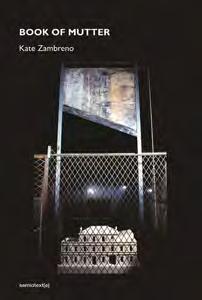 Heike Geissler is a freelance German writer and translator based in Leipzig. She has published a number of books, including the novel Rosa, which was awarded the Alfred Döblin Prize in 2001.
Heike Geissler is a freelance German writer and translator based in Leipzig. She has published a number of books, including the novel Rosa, which was awarded the Alfred Döblin Prize in 2001.
74 FALL 2018 | MITPRESS.MIT.EDU
DISTRIBUTED BY THE MIT PRESS
Fascination Memoirs
Kevin Killian
edited by Andrew Durbin
Fascination brings together an early memoir, Bedrooms Have Windows (1989) and a previously unpublished prose work, Bachelors Get Lonely, by the poet and novelist Kevin Killian, one of the founding members of the New Narrative movement. The two together depict the author’s early years struggling to become a writer in the sexed-up, boozy, drug-ridden world of Long Island’s North Shore in the 1970s. Fascination offers a moving and often funny view of the loneliness and desire that defined gay life of that era—a time in which Richard Nixon’s resignation intersected with David Bowie’s Diamond Dogs—from one of the leading voices in experimental gay writing of the past thirty years. “Move along the velvet rope,” Killian writes in Bedrooms Have Windows, “run your shaky fingers past the lacquered Keith Haring graffito: ‘You did not live in our time! Be Sorry!’”

Kevin Killian is a San Francisco-based poet, novelist, playwright, and art writer. Recent books include the poetry collections Tony Greene Era and Tweaky Village. He is the coauthor of Poet Be Like God: Jack Spicer and the San Francisco Renaissance. With Dodie Bellamy, he coedited Writers Who Love Too Much: New Narrative Writing, 1977–1997
A memoir of gay life in 1970s Long Island by one of the leading proponents of the New Narrative movement.
November 6 x 9, 296 pp. $16.95T/£13.99 paper 978-1-63590-040-8
Native Agents series Distributed for Semiotext(e)

Also available from Semiotext(e)

When the Sick Rule the World Dodie Bellamy
$17.95T/£13.99 paper 978-1-58435-168-9
Communal Nude Robert Glück
$18.95T/£14.99 paper 978-1-58435-175-7
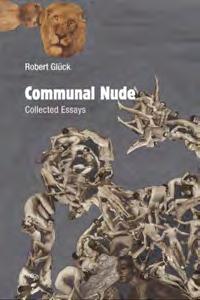
75 MITPRESS.MIT.EDU | FALL 2018 literature DISTRIBUTED BY THE MIT PRESS
An analysis of contemporary semio-capitalism’s overloading of subjectivity, leading to a deep mutation in the psychosphere. November 4 1/2 x 7, 136 pp.
$13.95T/£10.99 paper 978-1-63590-038-5
Intervention Series Distributed for Semiotext(e)

Also available from Semiotext(e)
The Uprising Franco “Bifo” Berardi $13.95T/£10.99 paper 978-1-58435-112-2

And
Phenomenology of the End Franco “Bifo” Berardi $17.95T/£13.99 paper 978-1-58435-170-2

Breathing
Chaos and Poetry
 Franco “Bifo” Berardi
Franco “Bifo” Berardi
Franco “Bifo” Berardi’s newest book is an analysis of changes our aesthetic and emotional sensibility has undergone recently—all the result of semio-capitalism’s capturing of the inner resources of the subjective process: our experience of time, our sensibility, our means of relating to each other, and our ability to imagine a future. The precarization and fractalization of labor today has provoked a deep mutation in the psychosphere, and this is visible in the rise of such psychopathologies as post-traumatic stress disorder, autism, panic, and attention deficit disorder. Sketching out an aesthetic genealogy of capitalist globalization, Berardi shows how we have reached a point of such complexity in the semiotic flows of capital that we can no longer process its excessive currents of information. A swarm effect now rules: it has become impossible to say “no.” Social behavior is trapped in inescapable patterns of interaction coded by techno-linguistic machines, smartphones, screens of all sizes, and all of these sensory and emotional devices destroy our organism’s sensibility by submitting it to the stress of competition and acceleration.
Arguing for disentanglement rather than resistance, Berardi ends by evoking the myth of La Malinche, the daughter of a noble Aztec family, a translator and traitor who betrayed her own people. Yet what she portends is the rebirth of the world from the collapse of the old.
Franco Berardi, aka “Bifo,” founder of the famous “Radio Alice” in Bologna and an important figure of the Italian Autonomia Movement, is a writer, media theorist, and media activist. He currently teaches Social History of the Media at the Accademia di Brera, Milan.
76 FALL 2018 | MITPRESS.MIT.EDU politics | philosophy DISTRIBUTED BY THE MIT PRESS
The Chinese Pleasure Book
Michael Nylan
In The Chinese Pleasure Book, Michael Nylan takes up one of the most important themes in Chinese thought: the relation of pleasurable activities to bodily health and the health of the body politic. In a notable contrast to Western writings on the subject, early Chinese writings oppose pleasure not with pain but with insecurity. All assume that it is right and proper to seek and take pleasure, as well as short-term delight, and all are equally certain that long-term relational pleasures are more easily sustained—as well as potentially more satisfying and less damaging. The pleasures that become deeper and more ingrained over the long term, as one invests time and effort into their cultivation, include friendship and music, sharing with others, developing integrity and greater clarity, reading and classical learning, and going home. Nylan explores each of these fields of activity through the early sources (mainly fourth century BC to the eleventh century AD), providing new translations for both well-known and seldom-cited texts.

Michael Nylan is Professor in the Department of History at the University of California, Berkeley. Her recent publications include Chang’an 26 BCE: An Augustan Age in China, Exemplary Figures (a complete translation of Yang Xiong’s Fayan), and Yang Xiong and the Pleasures of Reading and Classical Learning in China
“A fascinating exploration of ‘pleasure’ as understood by major thinkers of ancient China. Nylan’s impeccable scholarship and psychological insight illuminate the ancient texts and their radical challenge to our contemporary Western subjectivism and individualism.”
—Herbert Fingarette, American philosopher and Emeritus Professor of Philosophy, University of California, Santa Barbara
“’What bearing does pleasure have on a well-lived life?’ ‘What are its contours and limits?’ ‘How do we best understand and modulate it so that it heals us and binds us to others?’—these are just some of the questions that Michael Nylan puts to the classical texts of early China in this groundbreaking study.”
—Robert Kaster, Department of Classics, Princeton University
“The first question you ask yourself before diving into this book is whether you should read it sitting at your desk or cuddling in your bed—which does not mean that it should be read EITHER as an academic theory of pleasure OR as a feel-good self-help manual (there are many more pleasures to life than food and sex, although these are admittedly an essential part of it), but rather as a renowned American sinologist’s reflections about a lifetime of befriending ancient Chinese thinkers and poets, as well as contemporary writers and philosophers, and the pleasure she derived from their conversation. In her own distinctive style of reading and writing, Michael Nylan surely ‘knows the tone,’ as well as she knows the tune.”
—Anne Cheng, Collège de France, Paris
An examination of pleasure —short-term delight and the cultivation of longer-term satisfaction—in early Chinese thought.
October 6 x 9, 472 pp. 12 illus.
$37.95T/£30.00 cloth 978-1-942130-13-0
Distributed for Zone Books
77 MITPRESS.MIT.EDU | FALL 2018 philosophy
reannouncement ZONE BOOKS DISTRIBUTED BY THE MIT PRESS
| China studies
A Million Years of Music
The Emergence of Human Modernity Gary Tomlinson
What is the origin of music? In the last few decades this centuries-old puzzle has been reinvigorated by exciting new archaeological evidence and by developments in the fields of cognitive science, linguistics, and evolutionary theory. In this path-breaking book, renowned musicologist Gary Tomlinson draws from these areas to construct a new narrative for the emergence of human music. Starting at a period of human prehistory long before Homo sapiens or music existed, Tomlinson describes the incremental attainments that, changing the communication and society of prehuman species, laid the foundation for musical behaviors in more recent times. He traces in Neanderthals and early Homo sapiens the accumulation and development of these capacities, and he details their coalescence into modern musical behavior across the last hundred millennia.
But A Million Years of Music is not about music alone. As Tomlinson tells his story, he draws in other emerging human traits: language, symbolism, a metaphysical imagination and the ritual it gives rise to, complex social structure, and the use of advanced technologies. His model of evolution provides a new way of understanding the appearance of humanity in its modern form.
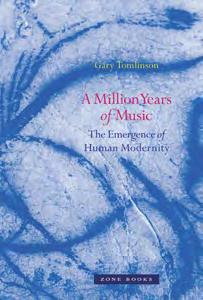
Gary Tomlinson is John Hay Whitney Professor of Music and Humanities, and Director of the Whitney Humanities Center at Yale University. His books include The Singing of the New World: Indigenous Voice in the Era of European Contact and Metaphysical Song: An Essay on Opera
September | 6 x 9, 368 pp. | 2 color illus, 8 b&w illus. $21.95T/£16.99 paper 978-1-890951-52-8
cloth 978-1-935408-65-9
Distributed for Zone Books
Rated Agency

Investee Politics in a Speculative Age
Michel Feher
translated by Gregory Elliott
The hegemony of finance compels a new orientation for everyone and everything: companies care more about the moods of their shareholders than about longstanding commercial success; governments subordinate citizen welfare to appeasing creditors; and individuals are concerned less with immediate income from labor than with appreciation of their capital goods, skills, connections, and reputations. In this book, in clear and compelling prose, Michel Feher explains the extraordinary shift in conduct and orientation generated by financialization.
That firms, states, and people depend more on their ratings than on the product of their activities also changes how capitalism is resisted. For activists, the focus of grievances shifts from the extraction of profit to the conditions under which financial institutions allocate credit. While the exploitation of employees by their employers has hardly been curbed, the power of investors to select investees— to decide who and what is deemed creditworthy—has become a new site of social struggle. Above all, Feher articulates the new political resistances and aspirations that investees draw from their rated agency.
Michel Feher, a Belgian philosopher, is the author of Powerless by Design: The Age of the International Community and the editor of Nongovernmental Politics and Europe at a Crossroads, among other titles. Founder of Cette France-là, a monitoring group on French immigration policy, Feher is also a founding editor of Zone Books. 6 x 8, 192 pp. $25.95T/£20.00 cloth 978-1-942130-12-3 Near Futures series Distributed for Zone Books
FALL 2018 | MITPRESS.MIT.EDU
music
now
78 DISTRIBUTED BY THE MIT PRESS ZONE BOOKS
| science | anthropology
in paper reannouncement political philosophy
Dead Fashion Girl
A Situationist Detective Story
 Fred Vermorel
Fred Vermorel
In 1954, Jean Mary Townsend was strangled with her own scarf and stripped of her underwear but not sexually assaulted. The subsequent police investigation was bungled, leading to a six-decade cover-up, ensuring that this twenty-one-year-old fashion designer was effectively killed twice: first bodily, and then as her significance and her memory were erased. Fred Vermorel’s forensic, troubling (and trouble-making) investigation digs deep into Jean Townsend’s life and times, and her transgressive bohemian milieu. It disentangles the lies and bluffs that have obscured this puzzling case for over half a century and offers a compelling solution to her murder and the official secrecy surrounding it.
More than just a true crime story, Vermorel’s investigation deploys Townsend’s death as a wild card methodology for probing the 1950s: a cesspit of vice and violence, from coprophiles to bombsite gangs and flick knives in the cinema. Densely illustrated with archival material, Dead Fashion Girl is a heavily researched, darkly curious exposé of London’s 1950s society that touches on celebrity, royalty, the postwar establishment, and ultimately, tragedy.
Fred Vermorel is a pioneer of the in-depth study of celebrity and fan cultures, best known for his controversial “anti-biographies” of pop icons including the Sex Pistols, Kate Bush, Vivienne Westwood, and Kate Moss.
A crime and a six-decade cover-up: the death of a fashion designer in the cesspit of vice and violence that was 1950s London.
January 5 3/8 x 8, 196 pp. 100 illus.
$19.95T/£14.99 paper 978-1-907222-71-9
Distributed for Strange Attractor Press
79 MITPRESS.MIT.EDU | FALL 2018
DISTRIBUTED BY THE MIT PRESS STRANGE ATTRACTOR PRESS
cultural studies
Out of print for fifty years, Jeff Nuttall’s legendary exploration of radical 1960s art, music, and protest movements. December 5 3/8 x 8, 224 pp. 24 illus.
$19.95T/£14.99 paper 978-1-907222-70-2
Distributed for Strange Attractor Press
art | cultural studies
Bomb Culture
Jeff Nuttall
50th anniversary edition edited by Douglas Field and Jay Jeff Jones
Out of print for fifty years, Jeff Nuttall’s Bomb Culture has achieved legendary status as a powerful, informative, and spirited exploration of 1960s alternative society and counterculture. Nuttall’s confessional account of the period investigates the sources of its radical art, music, and protest movements as well as the beliefs, anxieties, and conceits of its key agitators, including his own.

Nuttall argued that a tangible psychic dread of nuclear holocaust pervaded both high and low cultures, determining their attitude and content, much as the horrors of World War I had nourished the tactics and aesthetics of Dadaism.
Accompanying the original text is a new foreword by author Iain Sinclair, who was closely acquainted with Jeff Nuttall and participated in the turbulent underground culture described in Bomb Culture. This anniversary edition is rounded out with an afterword by writer Maria Fusco and a contextual introduction by the book’s editors which includes photographs and images of Nuttall’s distinctive artwork as well as further archival materials.
Douglas Field is Senior Lecturer in Twentieth-Century American Literature at the University of Manchester and a frequent contributor to the Times Literary Supplement. He is the author of All Those Strangers: The Art and Lives of James Baldwin. Jay Jeff Jones is a journalist, playwright, and magazine editor who has worked in San Francisco, London, British Columbia, and Manchester. He was a friend of Nuttall’s and published his work in the literary quarterly, New Yorkshire Writing.
“Bomb Culture is an abscess that lances itself. An extreme book, unreasonable but not irrational. Abrasive, contemptuous, attitudinizing, ignorant and yet brilliant.”
—Dennis Potter
80 FALL 2018 | MITPRESS.MIT.EDU
STRANGE ATTRACTOR PRESS DISTRIBUTED BY THE MIT PRESS
Faunus
The
Decorative Imagination of Arthur Machen edited
by James Machin
For twenty years, Faunus, the biannual journal of the Friends of Arthur Machen, has been publishing an astonishing range of scholarship, debate, archival material, and esoterica relating to the writer H. P. Lovecraft described as a “modern master of the weird tale.”

Arthur Machen (1863–1947) was not only an author of weird and decadent horror fiction lauded by Stephen King and Guillermo del Toro (among many others); he was also a journalist and essayist who, over decades, produced a vast body of nonfiction on subjects ranging from High Church theology to curry recipes. This anthology gathers some of the highlights of Faunus, from its very first issue to its most recent. Subjects include the Great War, the Celtic Church, the “real” little people, Machen and Modernism, Machen and the occult, and myriad other investigations into Machen’s life and legacy.
With a new introduction by long-term Friend of Arthur Machen member Stewart Lee, the book makes newly available reprints of rare pieces by Machen himself as well as items from the Faunus archive by writers including Tessa Farmer, Rosalie Parker, Ray Russell, Mark Samuels, and Mark Valentine.
James Machin is a writer and researcher and coeditor of Faunus, the journal of the Friends of Arthur Machen. He has published work in journals including Textual Practice, and taught at Birkbeck, University of London, and the Royal College of Art.
Scholarship, debate, archival material, and esoterica relating to Arthur Machen, a “modern master of the weird tale.”
February 5 3/8 x 8, 224 pp. 33 illus.
$19.95T/£14.99 paper 978-1-907222-75-7
Distributed for Strange Attractor Press
81 MITPRESS.MIT.EDU | FALL 2018
DISTRIBUTED BY THE MIT PRESS STRANGE ATTRACTOR PRESS
literature
Liberty Realm
Cathy Ward

Pulsing and surging with dark energies, Cathy Ward’s mesmerising drawings capture a restlessly inquiring spirit through the meticulous rendering of organic forms. Their mystery, emotional depth, and enveloping sensuality recall an occluded art-historical canon of weird psychedelia, hermetic alchemical illustrations and outsider horror vacui Liberty Realm presents a broad survey of works ranging from the acclaimed drawings exhibited recently in “Phantasmata” at The Good Luck Gallery (Los Angeles), “Talespinning” at the Drawing Center (New York), “Romantic detachment” at PS1 MoMA (New York), and “Utopia” at the John Michael Kohler Arts Center (Sheboygan, Wisconsin), to new explorations and insightful glimpses of her earlier output and formative practice. Substantial essays by Doug Harvey and Robert Wallis further untangle these fascinating phantasmal worlds.
Cathy Ward was born in Kent, England. In a career spanning more than thirty years, she has exhibited in such major venues as PS1/MoMA, the Drawing Center, the Walker Art Gallery, and the Whitechapel Gallery. She was appointed artist-in-residence for the “Madge Gill: Medium & Visionary” retrospective at Orleans House Gallery in London and her work has been featured in many underground and cultural spaces, including the Horse Hospital (London), and Maggs Counterculture (London). Her work is in the permanent collection of the College of Psychic Studies (London).
$31.95T/£25.00 paper 978-1-907222-73-3 Distributed for Strange Attractor Press 82 FALL 2018 | MITPRESS.MIT.EDU art STRANGE ATTRACTOR PRESS DISTRIBUTED BY THE MIT PRESS
The fascinating phantasmal worlds in the work of the artist Cathy Ward. September 8 x 10, 168 pp. 130 color illus.
film | cultural studies
Of Mud and Flame
A Penda’s Fen Sourcebook
 edited by Matthew Harle and James Machin
edited by Matthew Harle and James Machin
In 1974, the BBC broadcast the film Penda’s Fen, leaving audiences mystified and spellbound. “Make no mistake. We had a major work of television last night,” The Times declared the next morning. Written by the playwright and classicist David Rudkin, the film follows Stephen, an 18-year-old boy, whose identity, sexuality, and suffocating nationalism unravels through a series of strange visions. After its original broadcast, Penda’s Fen vanished into unseen mythic status, with only a single rebroadcast in 1990 sustaining its cult following. With a DVD release by the BFI in 2016, Penda’s Fen has now become totemic for those interested in Britain’s deep history, folklore, and landscape. Of Mud and Flame brings together writers, artists, and historians to excavate and explore this unique cornerstone of Britain’s uncanny archive.
Matthew Harle works in the BFI Southbank’s Television Programming Unit, holds a PhD from Birkbeck, University of London, and has taught English and Cultural Studies at Birkbeck and King’s College London. James Machin is a writer and researcher and coedits Faunus, the journal of the Friends of Arthur Machen. He has published work in journals including Textual Practice, and taught at Birkbeck, University of London and the Royal College of Art.
Contributors include David Rudkin, Sukhdev Sandhu, Roger Luckhurst, Gareth Evan, Adam Scovell, Bethany Whalley, Carl Phelpstead, David Ian Rabey, David Rolinson, Craig Wallace, Daniel O’Donnell Smith, William Fowler, Yvonne Salmon, Andy W. Smith, Carolyne Larrington, John Harle, Timothy J. Jarvis, Tom White, Daniel Eltringham, Joseph Brooker, Gary Budden
Exploring Penda’s Fen , a 1974 BBC film that achieved mythic status.
December 5 3/4 x 8, 256 pp. 24 illus.
$19.95T/£14.99 paper 978-1-907222-68-9
Distributed for Strange Attractor Press
83 MITPRESS.MIT.EDU | FALL 2018
DISTRIBUTED BY THE MIT PRESS STRANGE ATTRACTOR PRESS
Drawings, personal photographs, documents, and ephemera by underground cartoonist, artist, writer, musician, and amateur magician Savage Pencil. December 6 11/16 x 8 5/8, 196 pp. 200 color illus.
RATED SAVX

The Savage Pencil Scratchbook Savage Pencil
Pulled together from his massive archive of drawings, personal photographs, documents, and ephemera, alongside a new, extensive interview conducted by author and legendary esoteric bibliographer Timothy D’Arch Smith, Rated SavX is an access-all-areas trawl through the life and work of the artist known as Savage Pencil.
Underground cartoonist, artist, writer, musician, and amateur magician Savage Pencil has been conjuring up images and making a noise since 1977. Beginning with his “Rock ’N’ Roll Zoo” strip for 1970s music paper Sounds to his drawing “Trip or Squeek” for The Wire magazine, his instantly recognizable, delirious, and demented images have come to define their own form of acerbic graphic critique and satire. Savage Pencil has also designed album covers, T-shirts, posters, and other merchandise for bands including Sonic Youth, Big Black, The Fall, Sunn O))), Coil, and Earth, and a host of obscure punk rockers, metal gurus, and noise addicts. As a result, Savage Pencil’s drawings have become intrinsically linked with the sonic ideas that were being transmitted on such records as Sonic Youth’s Death Valley ’69 and Big Black’s Headache
Savage Pencil is the nom de plume of English music journalist Edwin Pouncey.
84 FALL 2018 | MITPRESS.MIT.EDU
STRANGE ATTRACTOR PRESS DISTRIBUTED BY THE MIT PRESS
$31.95T/£25.00 paper 978-1-907222-69-6 Distributed for Strange Attractor Press
art | music
film | cultural studies
The Bodies Beneath
The Flipside of British Film and Television

William Fowler and Vic Pratt
The past, they say, is another country, but as seen through the lens of British film and television, it is a deeply strange and unfamiliar land. From occult rites in soft porn discos to Sooty the TV puppet’s amphetamine problem, from Old Mother Riley, and Vampire Hunter to Vincent Price’s heart-attack-inducing cookery program, in this book veteran curators William Fowler and Vic Pratt have delved deep into the archives of the British Film Institute to serve up a feast of curiosities that will tempt the palate of even the most jaded cinephile.
Each chapter considers a key aspect of British life as seen through the psychotronic lens of pop culture. Do All the Right Noises and Under the Doctor tell us more about attitudes to marriage and sexuality than a sociological survey? Can American musicologist Alan Lomax capture a truer image of the weird rites of Cornish folk culture than a native Cornishman? Why was Peter Watkins’s The War Game banned from TV screens? These crucial questions, and many more, will be answered, and awkward truths told, by our highly informed, erudite and amusing guides to this cultural hinterland.
William Fowler, cofounder of The Flipside, is a film archivist, writer, and curator at the BFI. His film retrospective and restoration projects include Queer Pagan Punk: Derek Jarman, This Is Now: Film and Video After Punk, The Lacey Rituals: Bruce Lacey and Here’s a Health to the Barley Mow Vic Pratt, cofounder of The Flipside, is a film archivist, writer, historian, Blu-ray, and DVD producer. He has programmed numerous cinema screenings at venues in the UK and overseas and has written on British and International film and television history for a wide range of books, magazines, websites, and DVD releases.
From occult rites in soft porn discos to Sooty the TV puppet’s amphetamine problem, a feast of curiosities from British film and TV.
January 6 x 8, 224 pp. 48 illus.
$19.95T/£14.99 paper 978-1-907222-72-6
Distributed for Strange Attractor Press
85 MITPRESS.MIT.EDU | FALL 2018
STRANGE ATTRACTOR PRESS DISTRIBUTED BY THE MIT PRESS
A compendium of strange fiction and hallucinatory tales by both renowned innovators of the weird and little-known scribes of the macabre. January 6 x 8 1/2, 416 pp. $21.95T/£16.99 paper 978-1-907222-61-0 Distributed for Strange Attractor Press
fiction
There Is a Graveyard That Dwells in Man
More Strange Fiction and Hallucinatory Tales
 edited by David Tibet
edited by David Tibet
An arcane compendium of strange fiction and hallucinatory tales, There Is a Graveyard That Dwells in Man collects chilling stories by renowned innovators of the weird and by many little-known and underrepresented or forgotten scribes of the macabre.
Selected by artist, writer, and musician David Tibet, this widelysourced collection of supernatural rarities continues the bibliographic archaeology initiated with The Moons at Your Door (Strange Attractor Press, 2016), offering lyrical portals, into worlds of strange beauty, elegant unease, and creeping decadence.
Authors include Lady Dilke, Edna Underwood, Thomas Ligotti, L. P. Hartley, R. H. Benson, Walter de la Mare, Hugh Walpole, Colette de Curzon, L. A. Lewis, Edith Wharton, and others. The volume also features translations from Coptic, folk songs, and other surprises. Comprehensive biographical and publication histories are provided by noted scholar of bibliographic arcana Mark Valentine.
There Is a Graveyard That Dwells in Man offers an unnerving, serpentine tributary to the canon of supernatural literature.
TRADE 86 FALL 2018 | MITPRESS.MIT.EDU
Founder of the long running cult band Current 93, David Tibet is widely known as an artist and songwriter. His song cycles present a rich vein of ethereal imagery, arcane reference, and the supernatural, creating their own sound-worlds of heartfelt and mysterious poignancy. STRANGE ATTRACTOR PRESS
information science | digital culture
Weaving the Dark Web

Legitimacy on Freenet, Tor, and I2P
Robert W. Gehl
The term “Dark Web” conjures up drug markets, unregulated gun sales, stolen credit cards. But, as Robert Gehl points out in Weaving the Dark Web, for each of these illegitimate uses, there are other, legitimate ones: the New York Times’s anonymous whistleblowing system, for example, and the use of encryption by political dissidents. Defining the Dark Web straightforwardly as websites that can be accessed only with special routing software, and noting the frequent use of “legitimate” and its variations by users, journalists, and law enforcement to describe Dark Web practices (judging them “legit” or “sh!t”), Gehl uses the concept of legitimacy as a window into the Dark Web. He does so by examining the history of three Dark Web systems: Freenet, Tor, and I2P.
Gehl presents three distinct meanings of legitimate: legitimate force, or the state’s claim to a monopoly on violence; organizational propriety; and authenticity. He explores how Freenet, Tor, and I2P grappled with these different meanings, and then discusses each form of legitimacy in detail by examining Dark Web markets, search engines, and social networking sites. Finally, taking a broader view of the Dark Web, Gehl argues for the value of anonymous political speech in a time of ubiquitous surveillance. If we shut down the Dark Web, he argues, we lose a valuable channel for dissent.
Robert W. Gehl is Associate Professor in the Department of Communication at the University of Utah, where he is also an affiliated faculty member in the Department of Writing and Rhetoric. He is the author of Reverse Engineering Social Media, winner of the 2015 Association of Internet Researchers Nancy Baym Award.
An exploration of the Dark Web—websites accessible only with special routing software—that examines the history of three anonymizing networks, Freenet, Tor, and I2P.
September 6 x 9, 288 pp.
$30.00S/£24.00 cloth 978-0-262-03826-3
Information Society series
ACADEMIC TRADE 87 MITPRESS.MIT.EDU | FALL 2018
A provocative attempt to think about what was previously considered unthinkable: a serious philosophical case for the rights of robots. October 6 x 9, 256 pp. 1 illus.
$35.00S/£27.00 cloth 978-0-262-03862-1
philosophy | ethics | artificial intelligence
Robot Rights
David J. Gunkel
We are in the midst of a robot invasion, as devices of different configurations and capabilities slowly but surely come to take up increasingly important positions in everyday social reality—self-driving vehicles, recommendation algorithms, machine learning decision making systems, and social robots of various forms and functions. Although considerable attention has already been devoted to the subject of robots and responsibility, the question concerning the social status of these artifacts has been largely overlooked. In this book, David Gunkel offers a provocative attempt to think about what has been previously regarded as unthinkable: whether and to what extent robots and other technological artifacts of our own making can and should have any claim to moral and legal standing.
In his analysis, Gunkel invokes the philosophical distinction (developed by David Hume) between “is” and “ought” in order to evaluate and analyze the different arguments regarding the question of robot rights. In the course of his examination, Gunkel finds that none of the existing positions or proposals hold up under scrutiny. In response to this, he then offers an innovative alternative proposal that effectively flips the script on the is/ought problem by introducing another, altogether different way to conceptualize the social situation of robots and the opportunities and challenges they present to existing moral and legal systems.
J. Gunkel is Distinguished Teaching Professor of Communication Technology at Northern Illinois University and the author of The Machine Question: Critical Perspectives on AI, Robots, and Ethics, Of Remixology: Ethics and Aesthetics after Remix, both published by the MIT Press, and other books.
 David
David
ACADEMIC TRADE 88 FALL 2018 | MITPRESS.MIT.EDU
The Problem with Software
Why Smart Engineers Write Bad Code
Adam Barr
Why is software so prone to bugs? So vulnerable to viruses? Why are software products so often delayed, or even canceled? Is software development really hard, or are software developers just not that good at it?
In The Problem with Software, Adam Barr examines the proliferation of bad software, explains what causes it, and offers some suggestions on how to improve the situation.
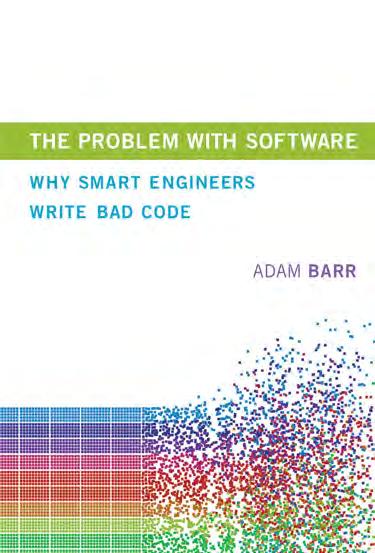
For one thing, Barr points out, academia doesn’t teach programmers what they actually need to know to do their jobs: how to work in a team to create code that works reliably and can be maintained by somebody other than the original authors. As the size and complexity of commercial software have grown, the gap between academic computer science and industry has widened. It’s an open secret that there is little engineering in software engineering, which continues to rely not on codified scientific knowledge but on intuition and experience.
Barr, who worked as a programmer for more than twenty years, describes how the industry has evolved, from the era of mainframes and Fortran to today’s embrace of the cloud. He explains bugs and why software has so many of them, and why today’s interconnected computers offer fertile ground for viruses and worms. The difference between good and bad software can be a single line of code, and Barr includes code to illustrate the consequences of seemingly inconsequential choices by programmers. Looking to the future, Barr writes that the best prospect for improving software engineering is the move to the cloud. When software is a service and not a product, companies will have more incentive to make it good rather than “good enough to ship.”
Adam Barr worked as a programmer and manager at Microsoft for more than twenty years.
An industry insider explains why there is so much bad software—and why academia doesn’t teach programmers what industry wants them to know.
September 6 x 9, 312 pp. 9 illus.
$30.00S/£24.00 cloth 978-0-262-03851-5
ACADEMIC TRADE 89 MITPRESS.MIT.EDU | FALL 2018 technology | media
A look at the origins of an American button-pushing society and the illusion of effortless control at the touch of a finger. September 5 3/8 x 8, 368 pp. 45 illus.

$35.00S/£27.00 cloth 978-0-262-03823-2
science, technology, and society | history of technology
Power Button
A History of Pleasure, Panic, and the Politics of Pushing Rachel Plotnick
Push a button and turn on the television; tap a button and get a ride; click a button and “like” something. The touch of a finger can set an appliance, a car, or a system in motion, even if the user doesn’t understand the underlying mechanisms or algorithms. How did buttons become so ubiquitous? Why do people love them, loathe them, and fear them? In Power Button, Rachel Plotnick traces the origins of today’s push-button society by examining how buttons have been made, distributed, used, rejected, and refashioned throughout history. Focusing on the period between 1880 and 1925, when “technologies of the hand” proliferated (including typewriters, telegraphs, and fingerprinting), Plotnick describes the ways that button pushing became a means for digital command, which promised effortless, discreet, and fool-proof control. Emphasizing the doubly digital nature of button pushing—as an act of the finger and a binary activity (on/off, up/down)—Plotnick suggests that the tenets of precomputational digital command anticipate contemporary ideas of computer users.
Plotnick discusses the uses of early push buttons to call servants, and the growing tensions between those who work with their hands and those who command with their fingers; automation as “automagic,” enabling command at a distance; instant gratification, and the victory of light over darkness; and early twentieth-century imaginings of a future push-button culture. Push buttons, Plotnick tells us, have demonstrated remarkable staying power, despite efforts to cast button pushers as lazy, privileged, and even dangerous.
Rachel Plotnick is Assistant Professor of Communication at the University of North Carolina at Charlotte.
ACADEMIC TRADE 90 FALL 2018 | MITPRESS.MIT.EDU
Energy at the End of the World

An Orkney Islands Saga
Laura Watts
The islands of Orkney, off the northern coast of Scotland, are closer to the Arctic Circle than to London. Surrounded by fierce seas and shrouded by clouds and mist, the islands seem to mark the edge of the known world. And yet they are a center for energy technology innovation, from marine energy to hydrogen fuel networks, attracting the interest of venture capitalists and local communities. In this book, Laura Watts tells a story of making energy futures at the edge of the world.
Orkney, Watts tells us, has been making technology for six thousand years, from arrowheads and stone circles to wave and tide energy prototypes. Artifacts and traces of all the ages—Stone, Bronze, Iron, Viking, Silicon—are visible everywhere. The islanders turned to energy innovation when forced to contend with an energy infrastructure they had outgrown. Today, Orkney is home to the European Marine Energy Centre, established in 2003. There are about forty open-sea marine energy test facilities in the world, many of which draw on Orkney expertise. The islands generate more renewable energy than they use, are growing hydrogen fuel and electric car networks, and have hundreds of locally-owned micro wind turbines and a decade-old smart grid. Mixing storytelling and ethnography, empiricism and lyricism, Watts tells an Orkney energy saga—an account of how the islands are creating their own low-carbon future, in the face of the seemingly impossible. The Orkney Islands, Watts shows, are playing a long game, making energy futures for another six thousand years.
Making local energy futures, from marine energy to hydrogen fuel, at the edge of the world.
November 5 3/8 x 8, 392 pp. 32 color illus.
$35.00S/£27.00 cloth 978-0-262-03889-8
Infrastructures series
Laura Watts, writer, poet, and artist, is Interdisciplinary Senior Lecturer in Energy and Society at University of Edinburgh.
ACADEMIC TRADE 91 MITPRESS.MIT.EDU | FALL 2018 science
Six essays by artificial intelligence pioneer Marvin Minsky on how education can foster inventiveness, paired with commentary by Minsky’s former colleagues and students. October 5 3/8 x 8, 240 pp. 110 illus.
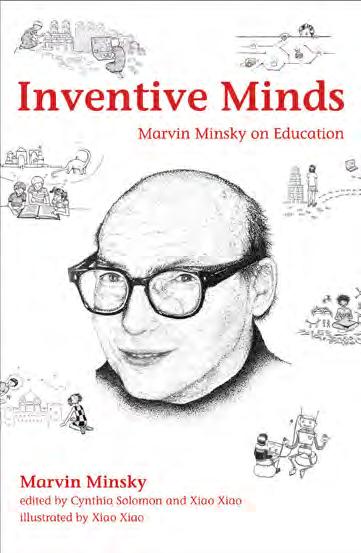
$32.00S/£25.00 cloth 978-0-262-03909-3
education
Inventive Minds
Marvin Minsky on Education Marvin Minsky
edited by Cynthia Solomon and Xiao Xiao illustrated by Xiao Xiao
Marvin Minsky was a pioneering researcher in artificial intelligence whose work led to both theoretical and practical advances. His work was motivated not only by technological advancement but also by the desire to understand the workings of our own minds. Minsky’s insights about the mind provide fresh perspectives on education and how children learn. This book collects for the first time six essays by Minsky on children, learning, and the potential of computers in school to enrich children’s development. In these essays Minsky discusses the shortcomings of conventional education (particularly in mathematics) and considers alternative approaches; reflects on the role of mentors; describes higher-level strategies for thinking across domains; and suggests projects for children to pursue. Each essay is paired with commentary by one of Minsky’s former colleagues or students, which identifies Minsky’s key ideas and connects his writings to current research. Minsky once observed that in traditional teaching, “instead of promoting inventiveness, we focus on preventing mistakes.” These essays offer Minsky’s unique insights into how education can foster inventiveness.
Marvin Minsky (1927–2016) was Toshiba Professor of Media Arts and Sciences and Donner Professor of Electrical Engineering and Computer Science at MIT. He was a cofounder of the MIT Media Lab and a consultant to the One Laptop Per Child project. Cynthia Solomon worked with Marvin Minsky at the MIT AI Lab and at the Atari Research Center. She is the author of Computer Environments for Children (MIT Press). Xiao Xiao worked with Minsky at the MIT Media Lab. She is a computer scientist, artist, pianist, thereminist, and Research Affiliate with the Tangible Media Group at the MIT Media Lab.
Commentary by Hal Abelson, Walter Bender, Alan Kay, Margaret Minsky, Brian Silverman, Gary Stager, Patrick H. Winston
ACADEMIC TRADE 92 FALL 2018 | MITPRESS.MIT.EDU
Howard Hiatt
How This Extraordinary Mentor Transformed Health with Science and Compassion Mark Rosenberg
foreword by Michelle A. Williams, Dean of the Faculty, Harvard T. H. Chan School of Public Health
Howard Hiatt—physician, scientist, advocate for global health, and mentor to generations of healthcare leaders—has spent much of his sevendecade career being ahead of his time. His innovative ideas as head of Harvard’s School of Public Health from 1972 to 1984—about preventive medicine, the incorporation of cutting-edge science into the curriculum, and cross-disciplinary collaboration—met fierce resistance at the time but are now widely recognized building blocks of public health. Hiatt’s interest in global health and health equity equipped him to advocate for a series of younger physicians and researchers, including Paul Farmer and Jim Kim, two founders of Partners in Health, and the prominent health policy expert Don Berwick. This book tells the story of Hiatt’s life and work, with important lessons for today drawn from Hiatt’s 92 years of experience.

Hiatt, born in 1925, attended Harvard College and received an M.D. degree from Harvard Medical School. Before he headed the School of Public Health, he was a modernizing force as chief of medicine at Boston’s Beth Israel Hospital. After his stormy tenure at SPH, he went to Brigham and Women’s as a professor of medicine and a senior physician with a portfolio of his own devising. It was at the Brigham that Hiatt took on the role of mentor, influencing generations of physicians and staking out new territory in the fields of global health and clinical effectiveness. He is still active at 92 as teacher and mentor.
Mark Rosenberg, a physician and former Assistant Surgeon General, was President and CEO of the Task Force for Global Health from 2000–2016. He is on the faculty at Emory University’s School of Medicine and Public Health and served for twenty years at the U.S. Center for Disease Control and Prevention. He is the coauthor of Real Collaboration: What Global Health Needs to Succeed, Violence in America: A Public Health Approach, and Patients: The Experience of Illness
The seven-decade career of Howard Hiatt, a pioneer in public health, advocate for global health and health equity, a mentor to generations of healthcare leaders.
November 6 x 9, 232 pp. 27 illus.
$30.00S/£24.00 cloth 978-0-262-03880-5
ACADEMIC TRADE 93 MITPRESS.MIT.EDU | FALL 2018
public health
art | new media
Weather as Medium
Toward a Meteorological Art
Janine Randerson
biology
Quantitative Biology
Theory, Computational Methods, and Models edited by Brian Munsky, William S. Hlavacek, and Lev S. Tsimring
An exploration of artworks that use weather or atmosphere as the primary medium, creating new coalitions of collective engagement with the climate crisis.
In a time of climate crisis, a growing number of artists use weather or atmosphere as an artistic medium, collaborating with scientists, local communities, and climate activists. Their work mediates scientific modes of knowing and experiential knowledge of weather, probing collective anxieties and raising urgent ecological questions, oscillating between the “big picture systems view” and a ground-based perspective. In this book, Janine Randerson explores a series of meteorological art projects from the 1960s to the present that draw on sources ranging from dynamic, technological, and physical systems to indigenous cosmology.
Randerson finds a precursor to today’s meteorological art in 1960s artworks that were weather-driven and infused with the new sciences of chaos and indeterminacy, and she examines work from this period by artists including Hans Haacke, Fujiko Nakaya, and Aotearoa-New Zealand kinetic sculptor Len Lye. She looks at live experiences of weather in art, in particular Fluxus performance and contemporary art that makes use of meteorological data streams and software. She describes the use of meteorological instruments, including remote satellite sensors, to create affective atmospheres; online projects and participatory performances that create a new form of “social meteorology”; works that respond directly to climate change, many from the Global South; artist-activists who engage with the earth’s diminishing cryosphere; and a speculative art in the form of quasi-scientific experiments. Art’s current eddies of activity around the weather, Randerson writes, perturb the scientific hold on facts and offer questions of value in their place.
October | 7 x 9, 248 pp. | 18 color plates, 50 b&w illus.
$37.00S/£29.00 cloth
978-0-262-03827-0
A Leonardo Book
An introduction to the quantitative modeling of biological processes, presenting modeling approaches, methodology, practical algorithms, software tools, and examples of current research.
The quantitative modeling of biological processes promises to expand biological research from a science of observation and discovery to one of rigorous prediction and quantitative analysis. The rapidly growing field of quantitative biology seeks to use biology’s emerging technological and computational capabilities to model biological processes. This textbook offers an introduction to the theory, methods, and tools of quantitative biology.
The book first introduces the foundations of biological modeling, focusing on some of the most widely used formalisms. It then presents essential methodology for model-guided analyses of biological data, covering such methods as network reconstruction, uncertainty quantification, and experimental design; practical algorithms and software packages for modeling biological systems; and specific examples of current quantitative biology research and related specialized methods. Most chapters offer problems, progressing from simple to complex, that test the reader’s mastery of such key techniques as deterministic and stochastic simulations and data analysis. Many chapters include snippets of code that can be used to recreate analyses and generate figures related to the text. Examples are presented in the three popular computing languages: Matlab, R, and Python. A variety of online resources supplement the the text.
The editors are organizers of the Annual q-bio Summer School, and this book is inspired by the school’s curricula.
Brian Munsky is Assistant Professor in the Department of Chemical and Biological Engineering and the School of Biomedical Engineering at Colorado State University. William S. Hlavacek is a Scientist in the Theoretical Biology and Biophysics Group at Los Alamos National Laboratory. Lev S. Tsimring is a Research Scientist and Associate Director of the BioCircuits Institute at the University of California, San Diego.
August | 8 x 9, 728 pp. | 157 illus. $70.00X/£54.00 cloth 978-0-262-03808-9
FALL 2018 | MITPRESS.MIT.EDU
Janine Randerson is a media artist and curator and Senior Lecturer in the School of Art and Design at Auckland University of Technology.
PROFESSIONAL | ART BIOLOGY 94
Spontaneous Venturing
An Entrepreneurial Approach to Alleviating Suffering in the Aftermath of a Disaster
Dean A. Shepherd and Trenton A. Williams
Qualitative Representations
How People Reason and Learn about the Continuous World
Kenneth D. Forbus
In Spontaneous Venturing, Dean Shepherd and Trenton Williams identify and describe a new approach for responding to disaster and suffering: the local organizing of spontaneous, compassionate, and impromptu actions—the rapid emergence of a compassionate venture. This approach, termed by the authors “spontaneous venturing,” can be more effective than the traditional “command-andcontrol” methods of large disaster relief organizations. It can customize and target resources and deliver them quickly, helping victims almost immediately. For example, during the catastrophic 2009 bushfires in Victoria, Australia—the focal disaster for the book—residents organized an impromptu relief center that collected and distributed urgently needed goods without red tape. Special bonds and friendships formed among the volunteers and victims; some were both volunteer and victim. Many victims were able to mobilize resources despite considerable personal losses.
Identifying a new approach to disaster response: spontaneous, compassionate, and impromptu actions to alleviate suffering.
Shepherd and Williams describe the lasting impact of disaster and tell the stories of Victoria residents who organized in the aftermath of the bushfires. They consider the limitations of traditional disaster relief efforts and explain that when victims take action to help others, they develop behavioral, emotional, and assumptive resilience; venturing leads to social interaction, community connections, and other positive outcomes. Finally, they explore spontaneous venturing in a less-developed country, investigating the activities of Haitians after the devastating 2010 earthquake. The lesson for communities hit by disaster: find opportunities for compassionate action.
November | 6 x 9, 232 pp. | 6 illus.
$35.00S/£27.00 cloth 978-0-262-03887-4
An argument that qualitative representations— symbolic representations that carve continuous phenomena into meaningful units—are central to human cognition.
In this book, Kenneth Forbus proposes that qualitative representations hold the key to one of the deepest mysteries of cognitive science: how we reason and learn about the continuous phenomena surrounding us. Forbus argues that qualitative representations—symbolic representations that carve continuous phenomena into meaningful units—are central to human cognition. Qualitative representations provide a basis for commonsense reasoning, because they enable practical reasoning with very little data; this makes qualitative representations a useful component of natural language semantics. Qualitative representations also provide a foundation for expert reasoning in science and engineering by making explicit the broad categories of things that might happen and enabling causal models that help guide the application of more quantitative knowledge as needed. Qualitative representations are important for creating more human-like artificial intelligence systems with capabilities for spatial reasoning, vision, question-answering, and natural language understanding.
Forbus discusses, among other topics, basic ideas of knowledge representation and reasoning; qualitative process theory; qualitative simulation and reasoning about change; compositional modeling; qualitative spatial reasoning; and learning and conceptual change. His argument is notable both for presenting an approach to qualitative reasoning in which analogical reasoning and learning play crucial roles and for marshaling a wide variety of evidence, including the performance of AI systems. Cognitive scientists will find Forbus’s account of qualitative representations illuminating; AI scientists will value Forbus’s new approach to qualitative representations and the overview he offers.
November | 6 x 9, 432 pp. | 109 illus. $50.00S/£40.00 cloth 978-0-262-03894-2
MITPRESS.MIT.EDU | FALL 2018
business | innovation cognitive science
Dean A. Shepherd is Ray and Milann Siegfried Professor of Entrepreneurship in the Mendoza College of Business at the University of Notre Dame. Trenton A. Williams is Assistant Professor of Entrepreneurship in the Kelley School of Business at Indiana University.
Kenneth D. Forbus is Walter P. Murphy Professor of Computer Science and Professor of Education at Northwestern University. He is an author of Building Problem Solvers and the coeditor of Smart Machines in Education, both published by the MIT Press.
COGNITIVE SCIENCE BUSINESS 95
cognitive science | linguistics
Linguistic Bodies
The Continuity between Life and Language
Ezequiel A. Di Paolo, Elena Clare Cuffari, and Hanne De Jaegher
cognitive science | linguistics
Meaning in the Brain
Giosuè Baggio
Linguistic Bodies offers a fully embodied and fully social treatment of human language without positing mental representations. The authors present the first coherent, overarching theory that connects dynamical explanations of action and perception with language. Arguing from the assumption of a deep continuity between life and mind, they show that this continuity extends to language. Expanding and deepening enactive theory, they offer a constitutive account of language and the co-emergent phenomena of personhood, reflexivity, social normativity, and ideality. Language, they argue, is not something we add to a range of existing cognitive capacities but a new way of being embodied. Each of us is a linguistic body in a community of other linguistic bodies.
A novel theoretical framework for an embodied, non-representational approach to language that extends and deepens enactive theory, bridging the gap between sensorimotor skills and language.
The book describes three distinct yet entangled kinds of human embodiment, organic, sensorimotor, and intersubjective; it traces the emergence of linguistic sensitivities and introduces the novel concept of linguistic bodies; and it explores the implications of living as linguistic bodies in perpetual becoming, applying the concept of linguistic bodies to questions of language acquisition, parenting, autism, grammar, symbol, narrative, and gesture, and to such ethical concerns as microaggression, institutional speech, and pedagogy.
Ezequiel A. Di Paolo is Ikerbasque Research Professor at the Basque Foundation for Science, Spain, and Visiting Research Fellow at the Centre for Computational Neuroscience and Robotics at the University of Sussex. Elena Clare Cuffari is Assistant Professor of Philosophy at Worcester State University. Hanne De Jaegher is Ramón y Cajal Research Fellow in the Department of Logic and Philosophy of Science at the University of the Basque Country, Spain, and Visiting Research Fellow at the Centre for Computational Neuroscience and Robotics at the University of Sussex.
October | 6 x 9, 400 pp. | 12 illus.
$45.00S/£35.00 cloth 978-0-262-03816-4
An argument that the meaning of written or auditory linguistic signals is not derived from the input but results from the brain’s internal construction process.
When we read a text or listen to speech, meaning seems to be given to us instantaneously, as if it were part of the input. In Meaning in the Brain, Giosuè Baggio explains that this is an illusion created by the tremendous speed at which sensory systems and systems for meaning and grammar operate in the brain. Meaning, Baggio argues, is not derived from input but results from the brain’s internal construction process. With this book, Baggio offers the first integrated, multilevel theory of semantics in the brain, describing how meaning is generated during language comprehension, production, and acquisition.
Baggio’s theory draws on recent advances in formal semantics and pragmatics, including vector-space semantics, discourse representation theory, and signaling game theory. It is designed to explain a growing body of experimental results on semantic processing that have accumulated in the absence of a unifying theory since the introduction of electrophysiology and neuroimaging methods.
Baggio argues that there is evidence for the existence of three semantic systems in the brain—relational semantics, interpretive semantics, and evolutionary semantics—and he discusses each in turn, developing neural theories of meaning for all three. Moreover, in the course of his argument, Baggio addresses several long-standing issues in the neuroscience of language, including the role of compositionality as a principle of meaning construction in the brain, the role of sensorymotor processes in language comprehension, and the neural and evolutionary links among meaning, consciousness, sociality, and action.
Giosuè Baggio is Professor of Psycholinguistics at the Norwegian University of Science and Technology.
August | 6 x 9, 376 pp. | 29 color illus. $65.00S/£50.00 cloth 978-0-262-03812-6
FALL 2018 | MITPRESS.MIT.EDU
COGNITIVE SCIENCE 96
cognitive science | philosophy
The Spontaneous Brain
cognitive science | psychology
From
the Mind-Body to the World-Brain Problem Georg Northoff
Handbook of Embodied Cognition and Sport Psychology
edited by Massimiliano L. Cappuccio
An argument for a Copernican revolution in our consideration of mental features—a shift in which the world-brain problem supersedes the mind-body problem.
Philosophers have long debated the mind-body problem— whether to attribute such mental features as consciousness to mind or to body. Meanwhile, neuroscientists search for empirical answers, seeking neural correlates for consciousness, self, and free will. In this book, Georg Northoff does not propose new solutions to the mindbody problem; instead, he questions the problem itself, arguing that it is an empirically, ontologically, and conceptually implausible way to address the existence and reality of mental features. We are better off, he contends, by addressing consciousness and other mental features in terms of the relationship between world and brain; philosophers should consider the world-brain problem rather than the mind-body problem. This calls for a Copernican shift in vantage point—from within the mind or brain to beyond the brain—in our consideration of mental features.
Northoff, a neuroscientist, psychiatrist, and philosopher, explains that empirical evidence suggests that the brain’s spontaneous activity and its spatiotemporal structure are central to aligning and integrating the brain within the world. This spatiotemporal structure allows the brain to extend beyond itself into body and world, creating the “world-brain relation” that is central to mental features. Northoff makes his argument in empirical, ontological, and epistemic-methodological terms. He discusses current models of the brain and applies these models to recent data on neuronal features underlying consciousness and proposes the world-brain relation as the ontological predisposition for consciousness.
October | 6 x 9, 472 pp. | 33 illus.
$50.00X/£40.00 cloth 978-0-262-03807-2
The first systematic collaboration between cognitive scientists and sports psychologists considers the mind-body relationship from the perspective of athletic skill and sports practice.
This landmark work is the first systematic collaboration between cognitive scientists and sports psychologists that considers the mind-body relationship from the perspective of athletic skill and sports practice. With twenty-six chapters by leading researchers, the book connects and integrates findings from fields that range from philosophy of mind to sociology of sport. The chapters show not only that sport can tell scientists how the human mind works but also that the scientific study of the human mind can help athletes succeed. Sports psychology research has always focused on the themes, notions, and models of embodied cognition; embodied cognition, in turn, has found striking confirmation of its theoretical claims in the psychological accounts of sports performance and athletic skill. Athletic skill is a legitimate form of intelligence, involving cognitive faculties no less sophisticated and complex than those required by mathematical problem solving.
After presenting the key concepts necessary for applying embodied cognition to sports psychology, the book discusses skill disruption (the tendency to “choke” under pressure); sensorimotor skill acquisition and how training correlates to the development of cognitive faculties; the intersubjective and social dimension of sports skills, seen in team sports; sports practice in cultural and societal contexts; the notion of “affordance” and its significance for ecological psychology and embodied cognition theory; and the mind’s predictive capabilities, which enable anticipation, creativity, improvisation, and imagination in sports performance.
Massimiliano L. Cappuccio is Associate Professor of Cognitive Science at the College of Humanities and Social Sciences of the United Arab Emirates University, Abu Dhabi.
September | 7 x 9, 792 pp. | 27 illus.
$85.00X/£66.00 cloth 978-0-262-03850-8
MITPRESS.MIT.EDU | FALL 2018
Georg Northoff is Professor and Canada Research Chair in Mind, Brain Imaging, and Neuroethics at the University of Ottawa. He is the author of Unlocking the Brain, Neurophilosophy and the Healthy Mind, and other books.
COGNITIVE SCIENCE 97
neuroscience | cognitive science computational neuroscience
Emergent Brain Dynamics
Prebirth to Adolescence
edited by April A. Benasich and Urs Ribary
An Introductory Course in Computational Neuroscience
Paul Miller
This volume in the Strüngmann Forum Reports series explores the complex mechanisms that accompany the dynamic processes by which the brain evolves and matures. Integrating perspectives from multiple disciplines, the book identifies knowledge gaps and proposes innovative ways forward for this emerging area of cross-disciplinary study. The contributors examine maturation of nonlinear brain dynamics across systems from a developmental perspective and relate these organizing networks to the establishment of normative cognition and pathology seen in many neurodevelopmental disorders.
Experts explore the maturation of nonlinear brain dynamics from a developmental perspective and consider the relationship of neurodevelopmental disorders to early disruption in dynamic coordination.
The book looks at key mechanistic questions, including: What role does dynamic coordination play in the establishment and maintenance of brain networks and structural and functional connectivity? How are local and global functional networks assembled and transformed over normative development? To what degree do oscillatory patterns vary across development? What is the impact of critical periods, and which factors initiate and terminate such periods? It also explores the potential of new technologies and techniques to enhance understanding of normative development and to enable early identification and remediation of neurodevelopmental and neuropsychiatric disorders that may result from early disruption in dynamic coordination.
April A. Benasich is Elizabeth H. Solomon Professor of Developmental Cognitive Neuroscience and Director of the Infancy Studies Laboratory at the Center for Molecular and Behavioral Neuroscience at Rutgers University–Newark, where she is also Director of the Carter Center for Neurocognitive Research. Urs Ribary is Endowed BC LEEF Leadership Chair in Cognitive Neuroscience, Director of the Behavioral and Cognitive Neuroscience Institute (BCNI), and Professor in Psychology, Pediatrics, and Psychiatry at Simon Fraser University and the University of British Columbia in Vancouver.
August | 6 x 9, 344 pp. | 26 color illus., 12 b&w illus.
$45.00X/£35.00 cloth 978-0-262-03863-8
Strüngmann Forum Reports
A textbook for students with limited background in mathematics and computer coding, emphasizing computer tutorials that guide readers in producing models of neural behavior.
This introductory text teaches students to understand, simulate, and analyze the complex behaviors of individual neurons and brain circuits. It is built around computer tutorials that guide students in producing models of neural behavior, with the associated Matlab code freely available online. From these models students learn how individual neurons function and how, when connected, neurons cooperate in a circuit. The book demonstrates through simulated models how oscillations, multistability, post-stimulus rebounds, and chaos can arise within either single neurons or circuits, and it explores their roles in the brain.
The book first presents essential background in neuroscience, physics, mathematics, and Matlab, with explanations illustrated by many example problems. Subsequent chapters cover the neuron and spike production; single spike trains and the underlying cognitive processes; conductance-based models; the simulation of synaptic connections; firing-rate models of large-scale circuit operation; dynamical systems and their components; synaptic plasticity; and techniques for analysis of neuron population datasets, including principal components analysis, hidden Markov modeling, and Bayesian decoding.
Accessible to undergraduates in life sciences with limited background in mathematics and computer coding, the book can be used in a “flipped” or “inverted” teaching approach, with class time devoted to hands-on work on the computer tutorials. It can also be a resource for graduate students in the life sciences who wish to gain computing skills and a deeper knowledge of neural function and neural circuits.
Paul Miller is Associate Professor in the Department of Biology and the Volen National Center for Complex Systems at Brandeis University, where he is also Undergraduate Advising Head for the Neuroscience Program.
October | 7 x 9, 408 pp. | 127 illus.
$50.00X/£40.00 cloth 978-0-262-03825-6
Computational Neuroscience series
FALL 2018 | MITPRESS.MIT.EDU
NEUROSCIENCE 98
computer science
The Little Typer
Daniel P. Friedman and David Thrane Christiansen drawings by Duane Bibby
A program’s type describes its behavior. Dependent types are a firstclass part of a language, and are much more powerful than other kinds of types; using just one language for types and programs allows program descriptions to be as powerful as the programs they describe. The Little Typer explains dependent types, beginning with a very small language that looks very much like Scheme and extending it to cover both programming with dependent types and using dependent types for mathematical reasoning. Readers should be familiar with the basics of a Lisp-like programming language, as presented in the first four chapters of The Little Schemer
The first five chapters of The Little Typer provide the needed tools to understand dependent types; the remaining chapters use these tools to build a bridge between mathematics and programming. Readers will learn that tools they know from programming—pairs, lists, functions, and recursions—can also capture patterns of reasoning. The Little Typer does not attempt to teach either practical programming skills or a fully rigorous approach to type. Instead, it demonstrates the most beautiful aspects as simply as possible, one step at a time.
Daniel P. Friedman is Professor of Computer Science in the School of Informatics, Computing, and Engineering at Indiana University and is the author of many books published by the MIT Press, including The Little Schemer and The Seasoned Schemer (with Matthias Felleisen); The Little Prover (with Carl Eastlund); and The Reasoned Schemer (coauthored with William E. Byrd, Oleg Kiselyov, and Jason Hemann). David Thrane Christiansen is a member of the technical staff at Galois, Inc., in Portland, Oregon.
An introduction to dependent types, demonstrating the most beautiful aspects, one step at a time.
September 7 x 9, 424 pp. 23 illus.
$38.00S/£30.00 paper 978-0-262-53643-1
COMPUTER SCIENCE 99 MITPRESS.MIT.EDU | FALL 2018
Illustration by Duane Bibby, from The Little Typer
computer science computer science
Reinforcement Learning
An Introduction
second edition
Richard
S. Sutton and Andrew G. Barto
Reinforcement learning, one of the most active research areas in artificial intelligence, is a computational approach to learning whereby an agent tries to maximize the total amount of reward it receives while interacting with a complex, uncertain environment.
The significantly expanded and updated new edition of a widely used text on reinforcement learning, one of the most active research areas in artificial intelligence.
In Reinforcement Learning, Richard Sutton and Andrew Barto provide a clear and simple account of the field’s key ideas and algorithms. This second edition has been significantly expanded and updated, presenting new topics and updating coverage of other topics.
Like the first edition, this second edition focuses on core, online learning algorithms, with the more mathematical material set off in shaded boxes. Part I covers as much of reinforcement learning as possible without going beyond the tabular case for which exact solutions can be found. Many algorithms presented in this part are new for the second edition, including UCB, Expected Sarsa, and Double Learning. Part II extends these ideas to function approximation, with new sections on such topics as artificial neural networks and the Fourier basis, and offers expanded treatment of off-policy learning and policy-gradient methods. Part III has new chapters on reinforcement learning’s relationships to psychology and neuroscience, as well as an updated case-studies chapter including AlphaGo and AlphaGoZero, Atari game playing, and IBM Watson’s wagering strategy. The final chapter discusses the future societal impacts of reinforcement learning.
Richard S. Sutton is Professor of Computing Science and AITF Chair in Reinforcement Learning and Artificial Intelligence at the University of Alberta, and also Distinguished Research Scientist at DeepMind. Andrew G. Barto is Professor Emeritus in the College of Computer and Information Sciences at the University of Massachusetts Amherst.
August | 7 x 9, 552 pp. | 115 illus.
$80.00X/£62.00 cloth 978-0-262-03924-6
Adaptive Computation and Machine Learning series
Model Checking
second edition
Edmund M. Clarke, Jr., Orna Grumberg, Daniel Kroening, Doron Peled, and Helmut Veith
Model checking is a verification technology that provides an algorithmic means of determining whether an abstract model— representing, for example, a hardware or software design—satisfies a formal specification expressed as a temporal logic formula. If the specification is not satisfied, the method identifies a counterexample execution that shows the source of the problem. Today, many major hardware and software companies use model checking in practice, for verification of VLSI circuits, communication protocols, software device drives, real-time embedded systems, and security algorithms. This book offers a comprehensive presentation of the theory and practice of model checking, covering the foundations of the key algorithms in depth.
An expanded and updated edition of a comprehensive presentation of the theory and practice of model checking, a technology that automates the analysis of complex systems.
The field of model checking has grown dramatically since the publication of the first edition in 1999, and this second edition reflects the advances in the field. Reorganized, expanded, and updated, the new edition retains the focus on the foundations of temporal logic model checking while offering new chapters that cover topics that did not exist in 1999: propositional satisfiability, SAT-based model checking, counterexample-guided abstraction refinement, and software model checking. The book serves as an introduction to the field suitable for classroom use and as an essential guide for researchers.
Edmund M. Clarke, Jr., is University Emeritus Professor of Computer Science at Carnegie Mellon University. Orna Grumberg is Professor of Computer Science at Technion, Israel Institute of Technology.
Daniel Kroening is Professor of Computer Science at the University of Oxford. Doron Peled is Professor of Computer Science at Bar-Ilan University. Helmut Veith was a Professor on the Faculty of Informatics at Vienna University of Technology (TU Vienna).
November | 7 x 9, 464 pp. | 154 illus.
$75.00X/£58.00 cloth 978-0-262-03883-6
Cyber-Physical Systems Series
FALL 2018 | MITPRESS.MIT.EDU
COMPUTER SCIENCE 100 COMPUTER SCIENCE
computer science | artificial intelligence
Robotics Through Science Fiction
Artificial Intelligence Explained Through Six Classic Robot Short Stories
edited by Robin R. Murphy
computer science | robotics
Introduction to AI Robotics
second edition
Robin R. Murphy
This book presents six classic science fiction stories and commentary that illustrate and explain key algorithms or principles of artificial intelligence. Even though all the stories were originally published before 1973, they help readers grapple with two questions that stir debate even today: how are intelligent robots programmed? and what are the limits of autonomous robots? The stories—by Isaac Asimov, Vernor Vinge, Brian Aldiss, and Philip K. Dick—cover telepresence, behavior-based robotics, deliberation, testing, human-robot interaction, the “uncanny valley,” natural language understanding, machine learning, and ethics. Each story is preceded by an introductory note, “As You Read the Story,” and followed by a discussion of its implications, “After You Have Read the Story.” Together with the commentary, the stories offer a nontechnical introduction to robotics. The stories can also be considered as a set of—admittedly fanciful—case studies to be read in conjunction with more serious study.
Six classic science fiction stories and commentary that illustrate and explain key algorithms or principles of artificial intelligence.
Robin R. Murphy is Raytheon Professor of Computer Science and Engineering at Texas A&M University, where she is also Director of the Center for Robot-Assisted Search and Rescue. She is the author of Introduction to AI Robotics and Disaster Robotics (both published by the MIT Press).
December | 6 x 9, 192 pp. | 6 illus.
$22.00X/£16.99 paper 978-0-262-53626-4
CONTENTS
“Stranger in Paradise” by Isaac Asimov, 1973
“Runaround” by Isaac Asimov, 1942
“Long Shot” by Vernor Vinge, 1972
“Catch That Rabbit” by Isaac Asimov, 1944
“Super-Toys Last All Summer Long” by Brian Aldiss, 1969
“Second Variety” by Philip K. Dick, 1953
A comprehensive survey of artificial intelligence algorithms and programming organization for robot systems, combining theoretical rigor and practical applications.
This textbook offers a comprehensive survey of artificial intelligence (AI) algorithms and programming organization for robot systems. Readers who master the topics covered will be able to design and evaluate an artificially intelligent robot for applications involving sensing, acting, planning, and learning. A background in AI is not required; the book introduces key AI topics from all AI subdisciplines throughout the book and explains how they contribute to autonomous capabilities.
This second edition is a major expansion and reorganization of the first edition, reflecting the dramatic advances made in AI over the past fifteen years. An introductory overview provides a framework for thinking about AI for robotics, distinguishing between the fundamentally different design paradigms of automation and autonomy. The book then discusses the reactive functionality of sensing and acting in AI robotics; introduces the deliberative functions most often associated with intelligence and the capability of autonomous initiative; surveys multi-robot systems and (in a new chapter) human-robot interaction; and offers a “metaview” of how to design and evaluate autonomous systems and the ethical considerations in doing so. New material covers locomotion, simultaneous localization and mapping, human-robot interaction, machine learning, and ethics. Each chapter includes exercises, and many chapters provide case studies. Endnotes point to additional reading, highlight advanced topics, and offer robot trivia.
Robin R. Murphy is Raytheon Professor of Computer Science and Engineering at Texas A&M University, where she is also Director of the Center for Robot-Assisted Search and Rescue. She is the author of Disaster Robotics and the editor of Robotics Through Science Fiction (both published by the MIT Press).
October | 8 x 9, 608 pp. | 191 illus. $90.00X/£70.00 cloth 978-0-262-03848-5
Intelligent Robotics and Autonomous Agents series
MITPRESS.MIT.EDU | FALL 2018
COMPUTER SCIENCE 101
computer science | machine learning
Interactive Task Learning
Humans, Robots, and Agents Acquiring New Tasks through Natural Interactions
edited by Kevin A. Gluck and John E. Laird
cognitive science | linguistics
Changing Minds, Changing Tools
From
Learning Theory to Language Acquisition to Language Change
Vsevolod Kapatsinski
Experts from a range of disciplines explore how humans and artificial agents can quickly learn completely new tasks through natural interactions with each other.
Humans are not limited to a fixed set of innate or preprogrammed tasks. We learn quickly through language and other forms of natural interaction, and we improve our performance and teach others what we have learned. Understanding the mechanisms that underlie the acquisition of new tasks through natural interaction is an ongoing challenge. Advances in artificial intelligence, cognitive science, and robotics are leading us to future systems with human-like capabilities. A huge gap exists, however, between the highly specialized niche capabilities of current machine learning systems and the generality, flexibility, and in situ robustness of human instruction and learning. Drawing on expertise from multiple disciplines, this Strüngmann Forum Report explores how humans and artificial agents can quickly learn completely new tasks through natural interactions with each other.
The contributors consider functional knowledge requirements, the ontology of interactive task learning, and the representation of task knowledge at multiple levels of abstraction. They explore natural forms of interactions among humans as well as the use of interaction to teach robots and software agents new tasks in complex, dynamic environments. They discuss research challenges and opportunities, including ethical considerations, and make proposals to further understanding of interactive task learning and create new capabilities in assistive robotics, healthcare, education, training, and gaming.
Kevin A. Gluck is a Principal Cognitive Scientist at the U.S. Air Force Research Laboratory. John E. Laird is John L. Tischman Professor of Engineering at the University of Michigan.
October | 6 x 9, 344 pp. | 9 color illus., 27 b&w illus. $45.00X/£35.00 cloth 978-0-262-03882-9
Strüngmann Forum Reports
An argument that uses domain-general learning theory to explain recurrent trajectories of language change.
In this book, Vsevolod Kapatsinski argues that language acquisition—often approached as an isolated domain, subject to its own laws and mechanisms— is simply learning, subject to the same laws as learning in other domains and well described by associative models. Synthesizing research in domain-general learning theory as it relates to language acquisition, Kapatsinski argues that the way minds change as a result of experience can help explain how languages change over time and can predict the likely directions of language change—which in turn predicts what kinds of structures we find in the languages of the world. What we know about how we learn (the core question of learning theory) can help us understand why languages are the way they are (the core question of theoretical linguistics).
Taking a dynamic, usage-based perspective, Kapatsinski focuses on diachronic universals, recurrent pathways of language change, rather than synchronic universals, properties that all languages share. Topics include associative approaches to learning and the neural implementation of the proposed mechanisms; selective attention; units of language; a comparison of associative and Bayesian approaches to learning; representation in the mind of visual and auditory experience; the production of new words and new forms of words; and automatization of repeated action sequences. This approach brings us closer to understanding why languages are the way they are, Kapatsinski contends, than approaches premised on innate knowledge of language universals and the language acquisition device.
Vsevolod Kapatsinski is Associate Professor in the Department of Linguistics at the University of Oregon.
August | 6 x 9, 392 pp. | 39 illus. $45.00X/£35.00 cloth 978-0-262-03786-0
FALL 2018 | MITPRESS.MIT.EDU
COMPUTER SCIENCE 102 COGNITIVE SCIENCE
design | computer-human interaction
Designing with the Body
Somaesthetic Interaction Design
Kristina Höök
digital humanities
Numbered Lives
Life and Death in Quantum Media Jacqueline Wernimont
With the rise of ubiquitous technology, data-driven design, and the Internet of Things, our interactions and interfaces with technology are about to change dramatically, incorporating such emerging technologies as shape-changing interfaces, wearables, and movement-tracking apps. A successful interactive tool will allow the user to engage in a smooth, embodied, interaction, creating an intimate correspondence between users’ actions and system response. And yet, as Kristina Höök points out, current design methods emphasize symbolic, language-oriented, and predominantly visual interactions. In Designing with the Body, Höök proposes a qualitative shift in interaction design to an experiential, felt, aesthetic stance that encompasses the entire design and use cycle.
Interaction design that entails a qualitative shift from a symbolic, language-oriented stance to an experiential stance that encompasses the entire design and use cycle.
Höök calls this new approach soma design; it is a process that reincorporates body and movement into a design regime that has long privileged language and logic. Soma design offers an alternative to the aggressive, rapid design processes that dominate commercial interaction design; it allows (and requires) a slow, thoughtful process that takes into account fundamental human values. She argues that this new approach will yield better products and create healthier, more sustainable companies.
Höök outlines the theory underlying soma design and describes motivations, methods, and tools. She offers examples of soma design “encounters” and an account of her own design process. She concludes with “A Soma Design Manifesto,” which challenges interaction designers to “restart” their field—to focus on bodies and perception rather than reasoning and intellect.
September | 6 x 9, 256 pp. | 19 illus.
$30.00S/£24.00 cloth 978-0-262-03856-0
Design Thinking, Design Theory series
A feminist media history of quantification, uncovering the stories behind the tools and technologies we use to count, measure, and weigh our lives and realities.
Anglo-American culture has used media to measure and quantify lives for centuries. Historical journal entries map the details of everyday life, while death registers put numbers to life’s endings. Today we count our daily steps with fitness trackers and quantify births and deaths with digitized data. How are these present-day methods for measuring ourselves similar to those used in the past? In this book, Jacqueline Wernimont presents a new media history of western quantification, uncovering the stories behind the tools and technologies we use to count, measure, and weigh our lives and realities.
Numbered Lives is the first book of its kind, a feminist media history that maps connections not only between past and present-day “quantum media” but between media tracking and long-standing systemic inequalities. Wernimont explores the history of the pedometer, mortality statistics, and the census in England and the United States to illuminate the entanglement of Anglo-American quantification with religious, imperial, and patriarchal paradigms. In Anglo-American culture, Wernimont argues, counting life and counting death are sides of the same coin—one that has always been used to render statistics of life and death more valuable to corporate and state organizations. Numbered Lives enumerates our shared media history, helping us understand our digital culture and inheritance.
December | 7 x 9, 232 pp. | 50 illus.
$32.00S/£25.00 cloth 978-0-262-03904-8
Media Origins series
MITPRESS.MIT.EDU | FALL 2018
Kristina Höök is Professor of Interaction Design at the Royal Institute of Technology (KTH), Stockholm.
Jacqueline Wernimont is Assistant Professor of English at Arizona State University, where she directs the Nexus Digital Research Coop and codirects the Human Security Collaboratory.
DIGITAL HUMANITIES 103 DESIGN
Principles of Commodity Economics and Finance
Daniel P. Ahn
Allocation in Networks
Jens Leth Hougaard foreword by Hervé Moulin
Commodities have become one of the fastest growing asset classes of the last decade and the object of increasing attention from investors, scholars, and policy makers. Yet existing treatments of the topic are either too theoretical, ignoring practical realities, or largely narrative and nonrigorous. This book bridges the gap, striking a balance between theory and practice. It offers a solid foundation in the economic, financial, and political principles underlying commodities markets. The book, which grows out of courses taught by the author at Columbia and Johns Hopkins, can be used by graduate students in economics, finance, and public policy, or as a conceptual reference for practitioners.
A rigorous but practical introduction to the economic, financial, and political principles underlying commodity markets.
After an introduction to basic concepts and a review of the various types of commodities—energy, metals, agricultural products—the book delves into the economic and financial dynamics of commodity markets, with a particular focus on energy. The text covers fundamental demand and supply for resources, the mechanics behind commodity financial markets, and how they motivate investment decisions around both physical and financial portfolio exposure to commodities, and the evolving political and regulatory landscape for commodity markets. Additional special topics include geopolitics, financial regulation, and electricity markets. The book is divided into thematic modules that progress in complexity. Text boxes offer additional, related material and numerous charts and graphs provide further insight into important concepts.
Daniel P. Ahn is Acting Chief Economist at the U.S. Department of State and a Professorial Lecturer at Johns Hopkins University Paul H. Nitze School of Advanced International Studies. He was previously the Chief Commodities Economist at Citibank in New York.
October | 6 x 9, 200 pp. | 99 illus.
$40.00X/£30.00 cloth 978-0-262-03837-9
A comprehensive overview of networks and economic design, presenting models and results drawn from economics, operations research, and computer science; with examples and exercises.
This book explores networks and economic design, focusing on the role played by allocation rules (revenue and cost-sharing schemes) in creating and sustaining efficient network solutions. It takes a normative approach, seeking economically efficient network solutions sustained by distributional fairness, and considers how different ways of allocating liability affect incentives for network usage and development. The text presents an up-to-date overview of models and results currently scattered over several strands of literature, drawing on economics, operations research, and computer science.
The book’s analysis of allocation problems includes such classic models from combinatorial optimization as the minimum cost spanning tree and the traveling salesman problem. It examines the planner’s ability to design mechanisms that will implement efficient network structures, both in large decentralized networks and when there is user-agent information asymmetry. Offering systematic theoretical analyses of various compelling allocation rules in cases of fixed network structures as well as discussions of network design problems, the book covers such topics as tree-structured distribution systems, routing games, organizational hierarchies, the “price of anarchy,” mechanism design, and efficient implementation. Appropriate as a reference for practitioners in network regulation and the network industry or as a text for graduate students, the book offers numerous illustrative examples and end-of-chapter exercises that highlight the concepts and methods presented.
Jens Leth Hougaard is Professor of Applied Microeconomics in the Department of Food and Resource Economics at the University of Copenhagen.
October | 6 x 9, 304 pp. | 101 illus. $50.00X/£40.00 cloth 978-0-262-03864-5
FALL 2018 | MITPRESS.MIT.EDU
economics economics
104 ECONOMICS
The Economics of Philanthropy
Donations and Fundraising
edited by Kimberley Scharf and Mirco Tonin
Recursive Macroeconomic Theory
fourth edition
Lars Ljungqvist and Thomas J. Sargent
Experts bring economic tools to bear on philanthropic activities, addressing topics that range from the determinants of giving to the effectiveness of fundraising techniques.
Economists are increasingly aware of the need to better understand philanthropic activities. In this book, economists address a variety of topics related to the economics of philanthropy, ranging from the determinants of giving to the effectiveness of fundraising techniques. The contributions focus on individual motives for giving and volunteering, and in particular how they affect donation outcomes, fundraising decisions, and public policies toward giving.
Previous research has viewed motives for giving as embedded in formal models of economic behavior with rational agents who maximize their own utility while constrained by a budget. These models, however, have been shown to have poor predictive power, neglecting direct and indirect motives for giving. The contributors consider, among other subjects, the free-riding problem in these models; altruistic, direct, and indirect motives for giving, addressed both theoretically and with lab experiments; the linear public good game; the role of social information; the effectiveness of matching gifts and premiums; motives for unpaid volunteering; subscription models as a way to regulate revenue streams; and increasing reliance on public funds.
Kimberley Scharf is Professor of Economics at the University of Birmingham, UK. Mirco Tonin is Professor of Economic Policy on the Faculty of Economics and Management at the Free University of Bozen-Bolzano, Italy.
Contributors
James Andreoni, Jon Behar, Avner Ben-Ner, Ted Bergstrom, Greg Bose, Sarah Brown, Catherine C. Eckel, Christina Gravert, David H. Herberich, Samantha Horn, Fantingyu Hu, Dean Karlan, Ann-Kathrin Koessler, Benjamin M. Marx, Jonathan Meer, Michael Menietti, Bradley Minaker, Mark Ottoni-Wilhelm, A. Abigail Payne, Maria P. Recalde, Kimberley Scharf, Claudia Schwirplies, Marta Serra-Garcia, Sarah Smith, Karl Taylor, Mette Trier Damgaard, Lise Vesterlund, Laura Villalobos
August | 6 x 9, 280 pp. | 51 illus.
$32.00X/£25.00 cloth 978-0-262-03844-7
CESifo Seminar series
The substantially revised fourth edition of a widely used text, offering both an introduction to recursive methods and advanced material, mixing tools and sample applications.
Recursive methods provide powerful ways to pose and solve problems in dynamic macroeconomics. Recursive Macroeconomic Theory offers both an introduction to recursive methods and more advanced material. Only practice in solving diverse problems fully conveys the advantages of the recursive approach, so the book provides many applications. This fourth edition features two new chapters and substantial revisions to other chapters that demonstrate the power of recursive methods.
One new chapter applies the recursive approach to Ramsey taxation and sharply characterizes the time inconsistency of optimal policies. These insights are used in other chapters to simplify recursive formulations of Ramsey plans and credible government policies. The second new chapter explores the mechanics of matching models and identifies a common channel through which productivity shocks are magnified across a variety of matching models. Other chapters have been extended and refined. For example, there is new material on heterogeneous beliefs in both complete and incomplete markets models; and there is a deeper account of forces that shape aggregate labor supply elasticities in lifecycle models.
The book is suitable for first- and second-year graduate courses in macroeconomics. Most chapters conclude with exercises; many exercises and examples use Matlab or Python computer programming languages.
Lars Ljungqvist is Professor of Economics at the Stockholm School of Economics. Thomas J. Sargent, awarded the 2011 Nobel Prize in Economic Sciences, is Berkley Professor of Economics and Business at New York University and Senior Fellow at the Hoover Institution.
September | 7 x 9, 1,480 pp. $120.00X/£77.00 cloth 978-0-262-03866-9
MITPRESS.MIT.EDU | FALL 2018
economics economics
ECONOMICS 105
A thoroughly revised and updated edition of the leading textbook on government and business policy, presenting the key principles underlying sound regulatory and antitrust policy.
August 8 x 9, 1,056 pp. 183 illus.
$110.00X/£69.00 cloth 978-0-262-03806-5
Economics of Regulation and Antitrust
fifth edition
W. Kip Viscusi, Joseph E. Harrington, Jr., and David E. M. Sappington
Regulation and antitrust are key elements of government policy. This new edition of the leading textbook on government and business policy explains how the latest theoretical and empirical economic tools can be employed to analyze pressing regulatory and antitrust issues. The book departs from the common emphasis on institutions, focusing instead on the relevant underlying economic issues, using state-of-the-art analysis to assess the appropriate design of regulatory and antitrust policy. Extensive case studies illustrate fundamental principles and provide insight on key issues in regulation and antitrust policy.
This fifth edition has been thoroughly revised and updated, reflecting both the latest developments in economic analysis and recent economic events. The text examines regulatory practices through the end of the Obama and beginning of the Trump administrations. New material includes coverage of global competition and the activities of the European Commission; recent mergers, including Comcast-NBC Universal; antitrust in the new economy, including investigations into Microsoft and Google; the financial crisis of 2007–2008 and the Dodd-Frank Act; the FDA approval process; climate change policies; and behavioral economics as a tool for designing regulatory strategies.
W. Kip Viscusi is University Distinguished Professor of Law, Economics, and Management at Vanderbilt University. Joseph E. Harrington, Jr., is Patrick T. Harker Professor in the Department of Business Economics and Public Policy at the Wharton School at the University of Pennsylvania. David E. M. Sappington is an Eminent Scholar in the Department of Economics at the University of Florida.
“How do the authors do it? The book keeps getting better and better. It is only ‘natural’ that they have a monopoly on teaching students, faculty, and policymakers the economics of regulation and antitrust. There is simply no point in my doing an economics of regulation course without having the fifth edition of this book available.”
—Thomas J. Kniesner, University Professor and Chair, Department of Economic Sciences, Claremont Graduate University
“Economics of Regulation and Antitrust continues to be a highly accessible yet comprehensive treatment of the field. It provides the rigorous theoretical underpinnings for understanding a wide range of policy issues and can be used both in advanced undergraduate and masters-level courses. By adding chapters on the new economy and behavioral economics, along with an expanded discussion of issues relating to climate change, the authors have further enhanced the value of this book.”
—Robert M. Feinberg, Professor of Economics, American University
ECONOMICS 106 FALL 2018 | MITPRESS.MIT.EDU
economics
Order without Design
How Markets Shape Cities
Alain Bertaud
Urban planning is a craft learned through practice. Planners make rapid decisions that have an immediate impact on the ground—the width of streets, the minimum size of land parcels, the heights of buildings. The language they use to describe their objectives is qualitative—“sustainable,” “livable,” “resilient”—often with no link to measurable outcomes. Urban economics, on the other hand, is a quantitative science, based on theories, models, and empirical evidence largely developed in academic settings. In this book, the eminent urban planner Alain Bertaud argues that applying the theories of urban economics to the practice of urban planning would greatly improve both the productivity of cities and the welfare of urban citizens.
Bertaud explains that markets provide the indispensable mechanism for cities’ development. He cites the experience of cities without markets for land or labor in pre-reform China and Russia; this “urban planners’ dream” created inefficiencies and waste. Drawing on five decades of urban planning experience in forty cities around the world, Bertaud links cities’ productivity to the size of their labor markets; argues that the design of infrastructure and markets can complement each other; examines the spatial distribution of land prices and densities; stresses the importance of mobility and affordability; and critiques non-market planning objectives in four cities—Paris; New York; London; and Portland, Oregon.
Alain Bertaud is Senior Research Scholar at New York University’s Marron Institute of Urban Management. He has worked as Principal Urban Planner for the World Bank and as an independent consultant and resident urban planner in cities ranging from Bangkok to New York.
November | 7 x 9, 448 pp. | 102 illus.
$40.00S/£30.00 cloth 978-0-262-03876-8
Lectures on Microeconomics
The Big Questions Approach Romans Pancs
This book helps readers master economic concepts and techniques by tackling fundamental economic and political questions through a series of models. It is organized around a sequence of “big questions,” among them: When do markets help translate individuals’ uncoordinated, selfish actions into outcomes that are best for all? Do markets change people, and, if so, for worse or better? Translated into the language of modern economics, do Marx’s ideas have merit? Why is there so much income inequality? Or is there too little? The arguments are in the theorem-proof format, distinguishing results derived in the context of fully specified models from educated speculation. Readers will learn how to pose a question rigorously and how to work toward an answer, and to appreciate that even (especially!) the broadest and most ambitious questions call for a model. The goal of the book is not to indoctrinate but to show readers how to reason toward their own conclusions.
Economic concepts and techniques presented through a series of “big questions,” models that show how to pose a question rigorously and work toward an answer.
The first chapter, on the Walrasian model of general equilibrium, serves as the prerequisite for the rest of the book. The remaining chapters cover less conventional topics, including the morality of markets; matching theory; Marxism, socialism, and the resilience of markets; a formalization of Kant’s categorical imperative; unintended consequences of policy design; and theories of justice. The book can be used as a textbook for advanced undergraduate or graduate students or as a resource for researchers in disciplines that draw on normative economics.
Romans Pancs is Assistant Professor of Economics at Instituto Tecnológico Autónomo de México.
August | 8 x 9, 344 pp. | 66 illus.
$80.00X/£62.00 cloth 978-0-262-03818-8
MITPRESS.MIT.EDU | FALL 2018
economics economics
An argument that operational urban planning can be improved by the application of the tools of urban economics to the design of regulations and infrastructure. ECONOMICS 107
economics | business economics | humanities
Economics of Global Business
Rodrigo Zeidan
Divine Games
Game Theory and the Undecidability of a Superior Being Steven J. Brams
A textbook with innovative real-world macroeconomic analyses of timely policy issues, with case studies and examples from more than fifty countries.
This timely and refreshingly real-world focused textbook examines some of the world’s most critical policy issues through a macroeconomics lens. After presenting analytical foundations, modeling tools, and theoretical perspectives, Economics of Global Business goes a step further than most other texts, with a practical look at the local and multinational tradeoffs facing economic policymakers in more than fifty countries. Topics range from income equality and the financial crisis to GDP, inflation and unemployment, and, notably, one of the first macroeconomic examinations of climate change. Written by a globetrotting economist who teaches and consults on three continents, Economics of Global Business aims not for definitive answers but rather to provide a better understanding of the context-dependent rationales, constraints, and consequences of economic policy decisions.
The book covers long-run and short-run growth (with examples from the United States, China, the European Union, South Korea, Japan, Latin America, Africa, Australia, South Korea, and Vietnam); financial crises and central banks; monetary and fiscal policies; government budgets; currency regimes; climate change and macroeconomics; income inequality; and globalization. All chapters rely on recent and historical examples of economic policy in action. The book is particularly suitable for use as an introduction to macroeconomics for business students.
Rodrigo Zeidan is Associate Professor of Practice of Business and Finance at New York University Shanghai and a Visiting Professor at Brazil’s Fundação Dom Cabral and Copenhagen Business School. His views appear frequently in prominent media platforms in Europe, Asia, and, the United States, including Bloomberg, The Conversation, and Americas Quarterly.
October | 7 x 9, 392 pp. | 176 illus. $65.00X/£50.00 paper 978-0-262-53562-5
A game-theoretical analysis of interactions between a human being and an omnipotent and omniscient godlike being highlights the inherent unknowability of the latter’s superiority.
In Divine Games, Steven Brams analyzes games that a human being might play with a god-like superior being. Drawing on game theory and his own theory of moves, Brams combines the analysis of thorny theological questions—suggested by Pascal’s wager (which considers the rewards and penalties associated with belief or nonbelief in God) and Newcomb’s problem (in which a god-like being has near omniscience)—with the analysis of several stories from the Hebrew Bible. Almost all of these stories involve conflict between God and a human player; their representation as games raises fundamental questions about God’s superiority.
In some games God appears vulnerable (after Adam and Eve eat the forbidden fruit in defiance of His command), in other games His actions seem morally dubious (when He subjects Abraham and Job to extreme tests of their faith), and in still other games He has a propensity to hold grudges (in preventing Moses from entering the Promised Land and in undermining the kingship of Saul). If the behavior of a superior being is indistinguishable from that of an ordinary human being, his existence would appear undecidable, or inherently unknowable. Consequently, Brams argues that keeping an open mind, or being agnostic, about the existence of a superior being, is an appropriate theological stance.
Steven J. Brams is Professor of Politics at New York University. He is the author of Biblical Games: Game Theory and the Hebrew Bible and Game Theory and the Humanities: Bridging Two Worlds, both published by the MIT Press, and other books.
September | 6 x 9, 224 pp. | 25 illus.
$35.00S/£27.00 cloth 978-0-262-03833-1
FALL 2018 | MITPRESS.MIT.EDU
ECONOMICS 108
Our Selfish Tax Laws
Toward Tax Reform That Mirrors Our Better Selves Anthony C. Infanti
The Taxation of Pensions
edited by Robert Holzmann and John Piggott
Most of us think of tax as a pocketbook issue: how much we owe, how much we’ll get back, how much we can deduct. In Our Selfish Tax Laws, Anthony Infanti takes a broader view, considering not just how taxes affect us individually but how the tax system reflects our culture and society. He finds that American tax laws validate and benefit those who already possess power and privilege while starkly reflecting the lines of difference and discrimination in American society based on race, ethnicity, socioeconomic class, gender, sexual orientation and gender identity, immigration status, and disability. Infanti argues that instead of focusing our tax reform discussions on which loopholes to close or which deductions to allow, we should consider how to make our tax system reflect American ideals of inclusivity rather than institutionalizing exclusion.
Why tax law is not just a pocketbook issue but a reflection of what and whom we, as a society, value.
After describing the theoretical and intellectual underpinnings of his argument, Infanti offers two comparative case studies, examining the treatment of housing tax expenditures and the unit of taxation in the United States, Canada, France, and Spain to show how tax law reflects its social and cultural context. Then, drawing on his own work and that of other critical tax scholars, Infanti explains how the discourse surrounding tax reform masks the many ways that the American tax system rewards and reifies privilege. To counter this, Infanti urges us to work together to create a society with a tax system that respects and values all Americans.
Anthony C. Infanti is Christopher C. Walthour, Sr., Professor of Law at the University of Pittsburgh.
September | 6 x 9, 248 pp. $39.00S/£30.00 cloth 978-0-262-03824-9
Theoretical and policy perspectives on the taxation of pension, viewed in an international context.
Policy makers and academic researchers have been preoccupied in recent decades with the design of pension schemes and effective pension system reform. Relatively little attention has been given to the taxation of pensions and, more broadly, the provision of retirement income. In this book, experts from a range of countries explore the interconnection. Their contributions are especially timely, given recent demographic and political developments including population aging that lengthens the time between contribution payment and benefit receipt, the mobility of capital and labor brought about by globalization, and the complexity of pension taxation within and between countries.
In shedding light on these issues, the chapters document the various forms of taxation of pension systems; use economic theory to explain both qualitative and quantitative observations; and consider whether the observed interaction of taxation and pensions is efficient. Theoretical overviews are followed by rigorous analyses of pension taxation in specific countries, including Denmark, Sweden, Portugal, Australia, Germany, the United Kingdom, and the United States.
Robert Holzmann is Member of the Austrian Academy of Sciences and holds honorary positions at the University of New South Wales and the University of Malaya. John Piggott is Director of the ARC Centre of Excellence in Population Ageing Research (CEPAR) and Scientia Professor of Economics at the University of New South Wales.
Contributors
Torben M. Andersen, Spencer Bastani, Hazel Bateman, Sören Blomquist, Axel Börsch-Supan, Jorge Miguel Bravo, Gary Burtless, Rafal Chomik, Helmuth Cremer, Carl Emmerson, Csaba Feher, Bernd Genser, Robert Holzmann, Paul Johnson, Alain Jousten, Christian Keuschnigg, Eric Koepcke, George Kudrna, Jukka Lassila, Luca Micheletto, Pierre Pestieau, John Piggott, Christopher Quinn, Tarmo Valkonen, Alan Woodland
August | 6 x 9, 504 pp. | 48 illus. $40.00X/£30.00 cloth 978-0-262-03832-4
CESifo Seminar series
MITPRESS.MIT.EDU | FALL 2018
economics | policy economics | policy
ECONOMICS 109
engineering environment
Modern HF Signal Detection and Direction-Finding
Jay R. Sklar
The Paradox of Scale
How NGOs Build, Maintain, and Lose Authority in Environmental Governance
Cristina M. Balboa
Detailed descriptions of detection, directionfinding, and signalestimation methods, using consistent formalisms and notation, emphasizing HF antenna array sensing applications.
Adaptive antenna array technology encompasses many powerful interference suppression approaches that exploit spatial differences among signals reaching a radio receiver system. Today, worldwide propagation phenomenology occurring in the High Frequency (HF) radio regime has made such interference common. In this book, Jay Sklar, a longtime researcher at MIT Lincoln Laboratory, presents detailed descriptions of detection, directionfinding, and signal-estimation methods applicable at HF, using consistent formalisms and notation. Modern electronic system technology has made many of these techniques affordable and practical; the goal of the book is to offer practicing engineers a comprehensive and self-contained reference that will encourage more widespread application of these approaches.
The book is based on the author’s thirty years of managing MIT Lincoln Laboratory work on the application of adaptive antenna array technologies to the sensing of HF communication signals. After an overview of HF propagation phenomenology, communication signal formats, and HF receiver architectural approaches, Sklar describes the HF propagation environment in more detail; introduces important modulation approaches and signaling protocols used at HF; discusses HF receiver system architectural features; and addresses signal processor architecture and its implementation. He then presents the technical foundation for the book: the vector model for a signal received at an adaptive array antenna. He follows this with discussions of actual signal processing techniques for detection and direction finding, including specific direction-finding algorithms; geolocation techniques; and signal estimation.
An examination of why NGOs often experience difficulty creating lasting change, with case studies of transnational conservation organizations in Southeast Asia and the Pacific.
Why do nongovernmental organizations face difficulty creating lasting change? How can they be more effective? In this book, Cristina Balboa examines NGO authority, capacity, and accountability to propose that a “paradox of scale” is a primary barrier to NGO effectiveness. This paradox—when what gives an NGO authority on one scale also weakens its authority on another scale—helps explain how NGOs can be seen as an authority on particular causes on a global scale, but then fail to effect change at the local level. Drawing on case studies of transnational conservation organizations in Southeast Asia and the Pacific, The Paradox of Scale explores how NGOs build, maintain, and lose authority over time.
Balboa sets a new research agenda for the study of governance, offering practical concepts and analysis to help NGO practitioners. She introduces the concept of authority as a form of legitimated power, explaining why it is necessary for NGOs to build authority at multiple scales when they create, implement, or enforce rules. Examining the experiences of Conservation International in Papua New Guinea, International Marinelife Alliance in the Philippines, and the Community Conservation Network in Palau, Balboa explains how a paradox of scale can develop even for those NGOs that seem powerful and effective. Interdisciplinary in its approach, The Paradox of Scale offers guidance for interpreting the actions and pressures accompanying work with NGOs, showing why even the most authoritative NGOs often struggle to make a lasting impact.
Cristina M. Balboa is Assistant Professor at the Marxe School of Public and International Affairs, Baruch College, City University of New York.
November | 6 x 9, 248 pp. | 6 illus.
$32.00S/£25.00 paper 978-0-262-53585-4
$90.00X/£70.00 cloth 978-0-262-03877-5
FALL 2018 | MITPRESS.MIT.EDU
Jay R. Sklar is Senior Staff Member at MIT Lincoln Laboratory. August | 7 x 9, 368 pp. | 3 color illus., 126 b&w illus. $125.00X/£97.00 cloth 978-0-262-03829-4 MIT Lincoln Laboratory Series
ENGINEERING 110 ENVIRONMENT
environment | economics environment | international policy
Agrobiodiversity
Integrating Knowledge for a Sustainable Future edited by Karl S. Zimmerer and Stef de Haan
Titans of the Climate Explaining Policy Process in the United States and China
Wide-ranging environmental phenomena—including climate change, extreme weather events, and soil and water availability—combine with such socioeconomic factors as food policies, dietary preferences, and market forces to affect agriculture and food production systems on local, national, and global scales. The increasing simplification of food systems, the continuing decline of plant species, and the ongoing spread of pests and disease threaten biodiversity in agriculture as well as the sustainability of food resources. Complicating the situation further, the multiple systems involved—cultural, economic, environmental, institutional, and technological—are driven by human decision making, which is inevitably informed by diverse knowledge systems. The interactions and linkages that emerge necessitate an integrated assessment if we are to make progress toward sustainable agriculture and food systems.
Experts discuss the challenges faced in agrobiodiversity and conservation, integrating disciplines that range from plant and biological sciences to economics and political science.
This volume in the Strüngmann Forum Reports series offers insights into the challenges faced in agrobiodiversity and sustainability and proposes an integrative framework to guide future research, scholarship, policy, and practice. The contributors offer perspectives from a range of disciplines, including plant and biological sciences, food systems and nutrition, ecology, economics, plant and animal breeding, anthropology, political science, geography, law, and sociology. Topics covered include evolutionary ecology, food and human health, the governance of agrobiodiversity, and the interactions between agrobiodiversity and climate and demographic change.
Karl S. Zimmerer is Professor of Environment and Society in the Departments of Geography and Agricultural Economics, Sociology, and Education at Pennsylvania State University, where he is also Director of the GeoSyntheSES Lab. Stef de Haan is an Agrobiodiversity and Food Systems researcher at the International Center for Tropical Agriculture (CIAT).
November | 6 x 9, 400 pp. | 4 color illus., 9 b&w illus. $45.00X/£35.00 cloth 978-0-262-03868-3
Strüngmann Forum Reports
How the planet’s two largest greenhouse gas emitters navigate climate policy.
The United States and China together account for a disproportionate 45 percent of global carbon dioxide emissions. In 2014, then-President Obama and Chinese President Xi Jinping announced complementary efforts to limit emissions, paving the way for the Paris Agreement. And yet, with President Trump’s planned withdrawal from the Paris accords and Xi’s consolidation of power—as well as mutual mistrust fueled by misunderstanding—the climate future is uncertain. In Titans of the Climate, Kelly Sims Gallagher and Xiaowei Xuan examine how the planet’s two largest greenhouse gas emitters develop and implement climate policy. The goal is, through dispassionate analysis, to help readers understand the challenges, constraints, and opportunities in each country.
Gallagher—a former U.S. climate policymaker—and Xuan—a member of a Chinese policy think tank—describe the specific drivers—political, economic, and social—of climate policies in both countries and map the differences between policy outcomes. They characterize the U.S. approach as “deliberative incrementalism”; the Chinese, meanwhile, engage in “strategic pragmatism.”
Kelly Sims Gallagher is Professor of Energy and Environmental Policy at Tufts University’s Fletcher School. She is the author of China Shifts Gears and The Globalization of Clean Energy Technology, both published by the MIT Press. Xiaowei Xuan is Senior Research Fellow in the Department of Development Strategy and Regional Economy at the Development Research Center of the State Council of the People’s Republic of China.
November | 6 x 9, 248 pp. | 10 illus.
$28.00S/£22.00 paper 978-0-262-53584-7
$84.00X/£65.00 cloth 978-0-262-03875-1
American and Comparative Environmental Policy series
MITPRESS.MIT.EDU | FALL 2018
Kelly Sims Gallagher and Xiaowei Xuan forewords by John P. Holdren and Zhang Junkuo
ENVIRONMENT 111
The politics of scientific advice across four environmental conflicts in Chile, when the state acted as a “neutral broker” rather than protecting the common good. August 6 x 9, 280 pp. 10 illus.
$32.00S/£25.00 paper 978-0-262-53563-2
$90.00X/£70.00 cloth 978-0-262-03820-1
Urban and Industrial Environments series
As I was finishing this manuscript, British citizens voted to leave the European Union and U.S. citizens elected Donald J. Trump president. Both elections unleashed commentary on the rise of “post-truth” democracies, the influence of “alternative facts,” and the demise of liberal ideals in which science has high symbolic value. The environment again became a key site of conflict––so much so that scientists in the United States marched on Washington with placards reading, “facts are our friends.” Though not directly related, the events that happened in Chile hold cautionary lessons for societies (and environments) where the status and value of science is in dispute.
—from Science and Environment in Chile
environment | Latin America studies
Science and Environment in Chile
The Politics of Expert Advice in a Neoliberal Democracy Javiera Barandiarán
In Science and Environment in Chile, Javiera Barandiarán examines the consequences for environmental governance when the state lacks the capacity to produce an authoritative body of knowledge. Focusing on the experience of Chile after it transitioned from dictatorship to democracy, she examines a series of environmental conflicts in which the state tried to act as a “neutral broker” rather than the protector of the common good. She argues that this shift in the role of the state—occurring in other countries as well—is driven in part by the political ideology of neoliberalism, which favors market mechanisms and private initiatives over the actions of state agencies. Chile has not invested in environmental science labs, state agencies with in-house capacities, or an ancillary network of trusted scientific advisers—despite the growing complexity of environmental problems and increasing popular demand for more active environmental stewardship. Unlike a high modernist “empire” state with the scientific and technical capacity to undertake large-scale projects, Chile’s model has been that of an “umpire” state that purchases scientific advice from markets.
After describing the evolution of Chilean regulatory and scientific institutions during the transition, Barandiarán describes four environmental crises that shook citizens’ trust in government: the near-collapse of the farmed salmon industry when an epidemic killed millions of fish; pollution from a paper and pulp mill that killed off or forced out thousands of black-neck swans; a gold mine that threatened three glaciers; and five controversial mega-dams in Patagonia.
“What is the relationship between science and democracy? Barandiarán offers compelling answers to this question by exploring what happens when a 2,600mile stretch of the planet is governed by a state that embraces free-market ideology while experiencing rapid industrialization and growing social demands for sustainability. Chile’s experience carries important lessons for anyone concerned with the role of science in environmental policy.”
—Paul Steinberg, Professor of Political Science and Environmental Policy and Malcolm Lewis Chair of Sustainability and Society, Harvey Mudd College
Javiera Barandiarán is Assistant Professor in the Global Studies Department at the University of California, Santa Barbara.
ENVIRONMENT 112 FALL 2018 | MITPRESS.MIT.EDU
Urgency in the Anthropocene
Amanda H. Lynch and Siri Veland
Is this the Anthropocene? The age in which humans have become a geological force, leaving indelible signs of their activities on the earth. The narrative of the Anthropocene so far is characterized by extremes, emergencies, and exceptions—a tale of apocalypse by our own hands. The sense of ongoing crisis emboldens policy and governance responses that challenge established systems of sovereignty and law. The once unacceptable—geoengineering technology, for example, or authoritarian decision making—are now anticipated and even demanded. In this book, Amanda Lynch and Siri Veland propose a reframing of the Anthropocene—seeing it not as a race against catastrophe but as an age of emerging coexistence with earth system variability.
Lynch and Veland examine the interplay between our new state of ostensible urgency and the means by which this urgency is identified and addressed. They examine how societies, including indigenous societies, have understood such interplays; explore how extreme weather and climate weave into the Anthropocene narrative; consider the tension between the short time scale of disasters and the longer time scale of sustainability; and discuss both international and national approaches to Anthropocene governance. Finally, they argue for an Anthropocene of coexistence that embraces both human dignity and sustainability.
Amanda H. Lynch is Sloan Lindemann and George Lindemann Jr. Distinguished Professor of Environmental Studies at Brown University, where she is also Director of the Institute at Brown for Environment and Society and Professor of Earth, Environmental, and Planetary Sciences. Siri Veland is Assistant Professor of Environmental Studies at the Brown Institute for Environment and Society at Brown University and Senior Researcher at Nordland Research Institute, Norway.
We invite a sense of commonality in a shared world undergoing rapid change: our aim is to pose the questions that Anthropocene urgency is raising, among those who see themselves as promoters of the Anthropocene schema and those who may not. This invitation is also a challenge—to find new epistemologies for coexistence in this age of humans.
—from the Preface, Urgency in the Anthropocene
A proposal to reframe the Anthropocene as an age of actual and emerging coexistence with earth system variability, encompassing both human dignity and environmental sustainability.
November 6 x 9, 232 pp. 11 illus.
$30.00S/£24.00 paper 978-0-262-53576-2
$90.00X/£70.00 cloth 978-0-262-03870-6
ENVIRONMENT 113 MITPRESS.MIT.EDU | FALL 2018 environment
policy
|
game studies game studies
Gaming the Iron Curtain
How Teenagers and Amateurs in Communist Czechoslovakia Claimed the Medium of Computer Games
Jaroslav Švelch
Transgression in Games and Play
edited by Kristine Jørgensen and Faltin Karlsen
How amateur programmers in 1980s Czechoslovakia discovered games as a medium, using them not only for entertainment but also as a means of self-expression.
Aside from the exceptional history of Tetris, very little is known about gaming culture behind the Iron Curtain. But despite the scarcity of home computers and the absence of hardware and software markets, Czechoslovakia hosted a remarkably active DIY microcomputer scene in the 1980s, producing close to two hundred games that were by turns creative, inventive, and politically subversive. In Gaming the Iron Curtain, Jaroslav Švelch offers the first social history of gaming and game design in 1980s Czechoslovakia, and the first book-length treatment of computer gaming in any country of the Soviet bloc.
Švelch describes how amateur programmers in 1980s Czechoslovakia discovered games as a medium, using them not only for entertainment but also as a means of self-expression. Sheltered in state-supported computer clubs, local programmers fashioned games into a medium of expression that, unlike television or the press, was neither regulated nor censored. In the final years of Communist rule, Czechoslovak programmers were among the first in the world to make activist games about current political events, anticipating trends observed decades later in independent or experimental titles. Drawing from extensive interviews as well as political, economic, and social history, Gaming the Iron Curtain tells a compelling tale of gaming the system, introducing us to individuals who used their ingenuity to be active, be creative, and be heard.
Jaroslav Švelch is Postdoctoral Fellow in the Department of Information Science and Media Studies at the University of Bergen and Assistant Professor of Media Studies at Charles University, Prague.
November | 6 x 9, 376 pp. | 52 illlus. $45.00S/£35.00 cloth 978-0-262-03884-3
Game Histories series
Contributors from a range of disciplines explore boundary-crossing in videogames, examining both transgressive game content and transgressive player actions.
Video gameplay can include transgressive play practices in which players act in ways meant to annoy, punish, or harass other players. Videogames themselves can include transgressive or upsetting content, including excessive violence. Such boundary-crossing in videogames belies the general idea that play and games are fun and non-serious, with little consequence outside the world of the game. In this book, contributors from a range of disciplines explore transgression in video games, examining both game content and player actions.
The contributors consider the concept of transgression in games and play, drawing on discourses in sociology, philosophy, media studies, and game studies; offer case studies of transgressive play, considering, among other things, how gameplay practices can be at once playful and violations of social etiquette; investigate players’ emotional responses to game content and play practices; examine the aesthetics of transgression, focusing on the ways that game design can be used for transgressive purposes; and discuss transgressive gameplay in a societal context. By emphasizing actual player experience, the book offers a contextual understanding of content and practices usually framed as simply problematic.
Kristine Jørgensen is Professor of Media Studies at Bergen University, Norway, and the author of Gameworld Interfaces (MIT Press). Faltin Karlsen is Professor of Media Studies at Kristiania University College, Norway, and the author of A World of Excesses: Online Games and Excessive Playing
Contributors
Fraser Allison, Kristian A. Bjørkelo, Kelly Boudreau, Marcus Carter, Mia Consalvo, Rhys Jones, Kristine Jørgensen, Faltin Karlsen, Tomasz Z. Majkowski, Alan Meades, Torill Elvira Mortensen, Víctor Navarro-Remesal, Holger Pötzsch, John R. Sageng, Tanja Sihvonen, Jaakko Stenros, Ragnhild Tronstad, Hanna Wirman
January | 7 x 9, 320 pp. | 14 illus. $40.00S/£30.00 cloth 978-0-262-03865-2
FALL 2018 | MITPRESS.MIT.EDU
GAME STUDIES 114
history of technology
Technology in America
A History of Individuals and Ideas third edition
edited by Carroll Pursell
science, technology, and society | history of science
The Body Populace
Military Statistics and Demography in Europe before the First World War
Heinrich Hartmann translated by Ellen Yutzy Glebe
The new edition of a popular collection that traces the history of American invention from the age of the artisan to the era of Silicon Valley.
This volume traces the history of American technology—its inventions and inventors—from the age of the artisan to the era of Silicon Valley. The focus on inventors acknowledges that technology is a fundamental form of human behavior and that, ultimately, it is people who have the ideas, design the machines, and build the institutions.
These accessible and succinct essays chronicle the work of the famous—among them, Thomas Jefferson, Eli Whitney, and Thomas Alva Edison—and of the sometimes forgotten—including Ellen Swallow Richards, the founder of the home economics movement. One illuminating essay shows how Buster Keaton and Charlie Chaplin helped Americans confront the modern technological age.
This third edition retains the content of the first two editions and adds three new essays: on Rachel Carson and the rise of the environmental movement; on A. C. Gilbert and the development of an American toy industry; and on Lewis Latimer and the struggle of African Americans to gain recognition as professional inventors and engineers.
Carroll Pursell is Adeline Barry Davee Distinguished Professor of History (Emeritus) at Case Western Reserve University and Distinguished Honorary Professor of History at the Australian National University.
Contributors
Lawrence Badash, George Basalla, Robert V. Bruce, Jean Christie, Gail Cooper, Ruth Schwartz Cowan, James J. Flink, Barton C. Hacker, Samuel P. Hays, Brooke Hindle, Thomas Parke Hughes, Reese V. Jenkins, John A. Kouwenhoven, Edwin T. Layton Jr., W. David Lewis, Hugo A. Meier, Carroll Pursell, Adam Rome, Bruce Sinclair, Merritt Roe Smith, Darwin H. Stapleton, John William Ward, James C. Williams
November | 6 x 9, 336 pp. | 51 illus.
$30.00X/£24.00 paper 978-0-262-53577-9
In pre–World War I Europe, individual fitness was increasingly related to building and preserving collective society. Army recruitment offered the most important opportunity to screen male citizens’ fitness, raising questions of how to define fitness for soldiers and how to translate this criteria outside the military context.
How data gathered from national conscriptions in pre–World War I Europe influenced understandings of population fitness and redefined society as a collective body.
In this book, Heinrich Hartmann explores the historical circumstances that shaped collective understandings of fitness in Europe before World War I and how these were intertwined with a fear of demographic decline and degeneration. This dynamic gained momentum through the circulation of knowledge among European nations, but also through the scenarios of military confrontations.
Hartmann provides a science history of military statistics in Germany, France, and Switzerland in the decades preceding World War I, considering how information gathered during national conscriptions generated data about the health and fitness of the population. Defined by masculine concepts, conscription examinations went far beyond the individuals they tested and measured. Scholars of the time aspired to pin down the “nation” in concrete numerical terms, drawing on data from examinations to redefine society as a “collective body” that could be counted, measured, and examined. The Body Populace provides a timely contribution to the growing historiography of Big Data. It sheds light on a crucial moment in nineteenth and early twentieth century European history—when statistical data and demographical knowledge shaped new notions of masculinity, fostered fears of degeneration, and gave rise to eugenic thinking.
Heinrich Hartmann is Assistant Professor of History at the University of Basel, Switzerland.
December | 6 x 9, 208 pp. | 18 illus $35.00X/£27.00 paper 978-0-262-53632-5
Transformations: Studies in the History of Science and Technology
MITPRESS.MIT.EDU | FALL 2018
HISTORY OF SCIENCE 115
information science information science
Search Foundations
Toward a Science of Technology-Mediated Experience
Sachi Arafat and Elham Ashoori
Digital Lifeline?
ICTs for Refugees and Displaced Persons edited by Carleen F. Maitland
A call to redirect the intellectual focus of information retrieval and science (IR&S) toward the phenomenon of technologymediated experience.
In this book, Sachi Arafat and Elham Ashoori issue a call to reorient the intellectual focus of information retrieval and science (IR&S) away from search and related processes toward the more general phenomenon of technologymediated experience. Technology-mediated experience accounts for an increasing proportion of human lived experience; the phenomenon of mediation gets at the heart of the human-machine relationship. Framing IR&S more broadly in this way generalizes its problems and perspectives, dovetailing them with those shared across disciplines dealing with socio-technical phenomena. This reorientation of IR&S requires imagining it as a new kind of science: a science of technology-mediated experience (STME). Arafat and Ashoori not only offer detailed analysis of the foundational concepts underlying IR&S and other technical disciplines but also boldly call for a radical, systematic appropriation of the sciences and humanities to create a better understanding of the humantechnology relationship.
Arafat and Ashoori discuss the notion of progress in IR&S and consider ideas of progress from the history and philosophy of science. They argue that progress in IR&S requires explicit linking between technical and nontechnical aspects of discourse. They develop a network of basic questions and present a discursive framework for addressing these questions. With this book, Arafat and Ashoori provide both a manifesto for the reimagining of their field and the foundations on which a reframed IR&S would rest.
Sachi Arafat is Assistant Professor at the Faculty of Information and Computer Sciences, King Abdulaziz University, Saudi Arabia, and a Honorary Research Fellow at the School of Mathematics and Computer Science, University of Stirling. Elham Ashoori is a Data Scientist at Conduent, London.
November | 6 x 9, 424 pp. | 1 illus.
$60.00X/£47.00 cloth 978-0-262-03859-1
History and Foundations of Information Science series
Interdisciplinary perspectives on the role of new information technologies, including mobile phones, wireless networks, and biometric identification, in the global refugee crisis.
Today’s global refugee crisis has mobilized humanitarian efforts to help those fleeing persecution and armed conflict at all stages of their journey. Aid organizations are increasingly employing new information technologies in their mission, taking advantage of proliferating mobile phones, remote sensors, wireless networks, and biometric identification systems. Digital Lifeline? examines the use of these technological innovations by the humanitarian community, exploring operations and systems that range from forecasting refugee flows to providing cellular and internet connectivity to displaced persons. The contributors, from disciplines as diverse as international law and computer science, offer a variety of perspectives on forced migration, technical development, and user behavior, drawing on field work in countries including Jordan, Lebanon, Rwanda, Germany, Greece, the United States, and Canada.
The chapters consider such topics as the use of information technology in refugee status determination; ethical and legal issues surrounding biometric technologies; information technology within organizational hierarchies; the use of technology by refugees; access issues in refugee camps; the scalability and sustainability of information technology innovations in humanitarian work; geographic information systems and spatial thinking; and the use of “big data” analytic techniques. Finally, the book identifies policy research directions, develops a unified research agenda, and offers practical suggestions for conducting displacement research.
Contributors
Elizabeth Belding, Karen E. Fisher, Daniel Iland, Lindsey Kingston, Carleen F. Maitland, Susan F. Martin, Galya Ben-Arieh Ruffer, Paul Schmitt, Lisa Singh, Brian Tomaszewski, Mariya Zheleva
Available | 6 x 9, 304 pp. | 23 illus. $45.00X/£35.00 paper 978-0-262-53508-3
Information
Policy series
FALL 2018 | MITPRESS.MIT.EDU
Carleen F. Maitland is Associate Professor in the College of Information Sciences and Technology at Pennsylvania State University, where she also serves as Codirector of the Institute for Information Policy.
INFORMATION SCIENCE 116
Documenting Aftermath
Event Epistemology and the Informatics of Disaster Megan Finn
Coping with Illness Digitally
Stephen A. Rains
When an earthquake happens in California today, residents may look to the United States Geological Survey for online maps that show the quake’s epicenter, turn to Twitter for government bulletins and the latest news, check Facebook for updates from friends and family, and count on help from the Federal Emergency Management Agency (FEMA). One hundred and fifty years ago, however, FEMA and other government agencies did not exist, and information came by telegraph and newspaper. In Documenting Aftermath, Megan Finn explores changing public information infrastructures and how they shaped people’s experience of disaster, examining postearthquake information and communication practices in three Northern California earthquakes: the 1868 Hayward Fault earthquake, the 1906 San Francisco earthquake and fire, and the 1989 Loma Prieta earthquake. She then analyzes the institutions, policies, and technologies that shape today’s postdisaster information landscape.
An examination of how changing public information infrastructures shaped people’s experience of earthquakes in Northern California in 1868, 1906, and 1989.
Finn argues that information orders—complex constellations of institutions, technologies, and practices—influence how we act in, experience, and document events. What Finn terms event epistemologies, constituted both by historical documents and by researchers who study them, explain how information orders facilitate particular possibilities for knowledge. After the 1868 earthquake, the Chamber of Commerce telegraphed reassurances to out-of-state investors while local newspapers ran sensational earthquake narratives; in 1906, families and institutions used innovative techniques for locating people; and in 1989, government institutions and the media developed a symbiotic relationship in information dissemination. Today, government disaster response plans and new media platforms imagine different sources of informational authority yet work together shaping disaster narratives.
September | 6 x 9, 280 pp. | 19 illus.
$39.00X/£30.00 cloth 978-0-262-03821-8 Infrastructures series
An examination of “digital coping” involving the use of communication technologies, particularly social media, in responding to illness.
Communication technologies have become a valuable resource for responding to the profound challenges posed by illness. Medical websites make it possible to find information about specific health conditions, e-mail provides a means to communicate with health care providers, social network sites can be used to solidify existing relationships, online communities provide opportunities for expanding support networks, and blogs offer a forum for articulating illnessrelated experiences. In this book, Stephen Rains examines this kind of “digital coping” involving the use of communication technologies, particularly social media, in responding to illness. Synthesizing a diverse body of existing empirical research, Rains offers the first book-length exploration of what it means to cope with illness digitally.
Rains examines the implications of digital communication technologies on a series of specific challenges raised by illness and discusses the unique affordances of these technologies as coping resources. He considers patients’ motivations for forging relationships online and the structure of those networks; the exchange of social support and the outcomes of sharing illness experiences; online health information searches by patients and surrogates; the effects of internet use on patient-provider communication; and digital coping mechanisms for end-of-life and bereavement, including telehospice, social media memorials, and online grief support. Finally, Rains presents an original model of digital coping that builds on issues discussed to summarize how and with what effects patients use communication technologies to cope with illness.
Stephen A.
August | 6 x 9, 248 pp. $35.00X/£27.00 cloth 978-0-262-03828-7
MITPRESS.MIT.EDU | FALL 2018
information science | communications information science | communications
Megan Finn is Assistant Professor in the Information School at the University of Washington, Seattle.
Rains is Professor of Communication at the University of Arizona, where he also holds appointments in the Department of Psychology and the Arizona Cancer Center.
INFORMATION SCIENCE 117
information science | digital culture
The Politics of Mass Digitization
Nanna Bonde Thylstrup
information science | economics
Digital Economies at Global Margins
edited by Mark Graham
A new examination of mass digitization as an emerging sociopolitical and sociotechnical phenomenon that alters the politics of cultural memory.
Today, all of us with internet connections can access millions of digitized cultural artifacts from the comfort of our desks. Institutions and individuals add thousands of new cultural works to the digital sphere every day, creating new central nexuses of knowledge. How does this affect us politically and culturally? In this book, Nanna Bonde Thylstrup approaches mass digitization as an emerging sociopolitical and sociotechnical phenomenon, offering a new understanding of a defining concept of our time.
Arguing that digitization has become a global cultural political project, Thylstrup draws on case studies of different forms of mass digitization—including Google Books, Europeana, and the shadow libraries Monoskop, lib.ru, and Ubuweb—to suggest a different approach to the study of digital cultural memory archives. She constructs a new theoretical framework for understanding mass digitization that focuses on notions of assemblage, infrastructure, and infrapolitics. Mass digitization does not consist merely of neutral technical processes, Thylstrup argues, but of distinct subpolitical processes that give rise to new kinds of archives and new ways of interacting with the artifacts they contain. With this book, she offers important and timely guidance on how mass digitization alters the politics of cultural memory to impact our relationship with the past and with one another.
Nanna Bonde Thylstrup is Assistant Professor at the Department of Aesthetics and Culture, University of Copenhagen. She is affiliated with several large-scale collaborative research projects exploring the role of archives, infrastructures, and cultural memory institutions in the age of digitization and big data.
December | 6 x 9, 216 pp. | 2 illus.
$35.00S/£27.00 cloth 978-0-262-03901-7
Investigations of what increasing digital connectivity and the digitalization of the economy mean for people and places at the world’s economic margins.
Between 2012 and 2017, more than one billion people became new internet users. Once, digital connectivity was confined to economically prosperous parts of the world; now internet users make up a majority of the world’s population. In this book, contributors from a range of disciplines and locations investigate the impact of increased digital connectivity on people and places at the world’s economic margins. Does the advent of a digitalized economy mean that those in economic peripheries can transcend spatial, organizational, social, and political constraints—or do digital tools and techniques tend to reinforce existing inequalities?
The contributors present a diverse set of case studies, reporting on digitalization in countries ranging from Chile to Kenya to the Philippines, and develop a broad range of theoretical positions. They consider, among other things, data-driven disintermediation, women’s economic empowerment and gendered power relations, digital humanitarianism and philanthropic capitalism, the spread of innovation hubs, and two cases of the reversal of core and periphery in digital innovation.
Mark Graham is Professor of Internet Geography at the Oxford Internet Institute at the University of Oxford and a Faculty Fellow at the Alan Turing Institute. He is the editor (with William H. Dutton) of Society and the Internet: How Networks of Information and Communication Are Changing Our Lives
January | 6 x 9, 376 pp. | 35 illus.
$38.00X/£30.00 paper 978-0-262-53589-2
International Development Research Centre
FALL 2018 | MITPRESS.MIT.EDU
118 INFORMATION SCIENCE INFORMATION SCIENCE
The
Archived Web
Doing History in the Digital Age
Niels Brügger
Remarks on the
Phonological
Evolution of Russian in Comparison with the Other Slavic Languages
Roman Jakobson translated by Ronald F. Feldstein
An original methodological framework for approaching the archived web, both as a source and as an object of study in its own right.
As life continues to move online, the web becomes increasingly important as a source for understanding the past. But historians have yet to formulate a methodology for approaching the archived web as a source of study. How should the history of the present be written? In this book, Niels Brügger offers an original methodological framework for approaching the web of the past, both as a source and as an object of study in its own right.
While many studies of the web focus solely on its use and users, Brügger approaches the archived web as a semiotic, textual system in order to offer the first book-length treatment of its scholarly use. While the various forms of the archived web can challenge researchers’ interactions with it, they also present a range of possibilities for interpretation. The Archived Web identifies characteristics of the online web that are significant now for scholars, investigates how the online web became the archived web, and explores how the particular digitality of the archived web can affect a historian’s research process. Brügger offers suggestions for how to translate traditional historiographic methods for the study of the archived web, focusing on provenance, creating an overview of the archived material, evaluating versions, and citing the material. The Archived Web lays the foundations for doing web history in the digital age, offering important and timely guidance for today’s media scholars and tomorrow’s historians.
Brügger is Professor and Head of the Centre for Internet Studies at Aarhus University, Denmark, and Head of NetLab.
October | 6 x 9, 200 pp. | 2 illus.
$30.00X/£24.00 cloth 978-0-262-03902-4
The first English translation of a classic and groundbreaking work in historical phonology.
This is the first English translation of a groundbreaking 1929 work in historical phonology by the renowned linguist Roman Jakobson, considered the founder of modern structural linguistics. A revolutionary treatment of the phonological evolution of Russian in relation to other Slavic languages, the book introduced a new type of historical linguistics that focused on the systematic reasons behind phonological change. Rather than treating such changes as haphazard, Jakobson here presents a “teleological,” purposeful approach to language evolution. He concludes by placing his book in the context of the exciting structural developments of the era, including Einstein’s theories, Cezanne’s art, and Lev Berg’s nomogenesis.
The original Russian version of the book was lost during the 1939 German invasion of Brno, Czechoslovakia, and the only edition available until now has been the French translation by Louis Brun. Thus this first English translation offers many linguists their first opportunity to read a major early work of Jakobson. Ronald Feldstein, a leading Slavicist and phonologist in his own right, has not only translated the text from French to English; he has also worked to reconstruct something as close to the missing original as possible. Feldstein’s end-of-chapter annotations provide explanatory context for particularly difficult passages.
Roman Jakobson (1896–1982) was one of the greatest linguists of the twentieth century. Educated in Moscow and Prague, he taught at Masaryk University, Columbia University, Harvard University, and MIT. His many published works include Six Lectures on Sound and Meaning (MIT Press). Ronald F. Feldstein is Professor Emeritus of Slavic and East European Languages and Cultures at Indiana University Bloomington.
November | 6 x 9, 224 pp. | 16 illus. $45.00X/£35.00 cloth 978-0-262-03869-0
MITPRESS.MIT.EDU | FALL 2018
internet studies linguistics
Niels
LINGUISTICS 119 INTERNET STUDIES
linguistics linguistics
Features of Person
From the Inventory of Persons to Their Morphological Realization
Peter Ackema and Ad Neeleman
Cardinals
The Syntax and Semantics of Cardinal-Containing Expressions
Tania Ionin and Ora Matushansky
A proposal that person features do not have inherent content but are used to navigate a “person space” at the heart of every pronominal expression.
This book offers a significant reconceptualization of the person system in natural language. The authors, leading scholars in syntax and its interfaces, propose that person features do not have inherent content but are used to navigate a “person space” at the heart of every pronominal expression. They map the journey of person features in grammar, from semantics through syntax to the system of morphological realization. Such an in-depth cross-modular study allows the development of a theory in which assumptions made about the behavior of a given feature in one module bear on possible assumptions about its behavior in other modules.
The authors’ new theory of person, built on a sparse set of two privative person features, delivers a typologically adequate inventory of persons; captures the semantics of personal pronouns, impersonal pronouns, and R-expressions; accounts for aspects of their syntactic behavior; and explains patterns of person-related syncretism in the realization of pronouns and inflectional endings. The authors discuss numerous observations from the literature, defend a number of theoretical choices that are either new or not generally accepted, and present novel empirical findings regarding phenomena as different as honorifics, number marking, and unagreement.
Peter Ackema is Reader in Linguistics at the University of Edinburgh. Ad Neeleman is Professor of Linguistics at University College London.
November | 6 x 9, 336 pp.
$40.00S/£30.00 paper 978-0-262-53561-8
$80.00X/£62.00 cloth 978-0-262-03819-5
Linguistic Inquiry Monographs series
An argument that complex cardinals are not extralinguistic but built using standard syntax and standard principles of semantic composition.
In Cardinals, Tania Ionin and Ora Matushansky offer a semantic and syntactic analysis of nominal expressions containing complex cardinals (for example, two hundred and thirtyfive books). They show that complex cardinals are not an extra-linguistic phenomenon (as is often assumed) but built using standard syntax and standard principles of semantic composition. Complex cardinals can tell us as much about syntactic structure and semantic composition as other linguistic expressions.
Ionin and Matushansky show that their analysis accounts for the internal composition of cardinal-containing constructions cross-linguistically, providing examples from more than fifteen languages. They demonstrate that their proposal is compatible with a variety of related phenomena, including modified numerals, measure nouns, and fractions. Ionin and Matushansky show that a semantic or syntactic account that captures the behavior of a simplex cardinal (such as five) does not automatically transfer to a complex cardinal (such as five thousand and forty-six) and propose a compositional analysis of complex cardinals. They consider the lexical categories of simplex cardinals and their role in the construction of complex cardinals; examine in detail the numeral systems of selected languages, including Slavic and Semitic languages; discuss linguistic constructions that contain cardinals; address extra-linguistic conventions on the construction of complex cardinals; and, drawing on data from Modern Hebrew, Basque, Russian, and Dutch, show that modified numerals and partitives are compatible with their analysis.
Tania Ionin is Associate Professor of Linguistics at the University of Illinois at Urbana–Champaign. Ora Matushansky is Research Director at Centre National de Recherche Scientifique, Paris.
January | 6 x 9, 400 pp. | 2 illus.
$40.00S/£30.00 paper 978-0-262-53578-6
$80.00X/£62.00 cloth 978-0-262-03873-7
Linguistic Inquiry Monographs series
FALL 2018 | MITPRESS.MIT.EDU
LINGUISTICS 120
linguistics mathematics | computer science
Phonology
A Formal Introduction
Alan Bale and Charles Reiss
Mathematics of Big Data
Spreadsheets, Databases, Matrices, and Graphs
Jeremy Kepner
and Hayden Jananthan
An introduction to generative phonology using tools of basic set theory, logic, and combinatorics.
This textbook introduces phonological theory as a branch of cognitive science for students with minimal background in linguistics. The authors use basic math and logic, including set theory, some rules of inference, and basic combinatorics, to explain phonology, and use phonology to teach the math and logic. The text is unique in its focus on logical analysis, its use of toy data, and its provision of some interpretation rules for its phonological rule syntax.
The book’s eight parts cover preliminary and background material; the motivation for phonological rules; the development of a formal model for phonological rules; the basic logic of neutralization rules; the traditional notions of allophony and complementary distribution; the logic of rule interaction, presented in terms of function composition; a survey of such issues as length, tone, syllabification, and metathesis; and features and feature logic, with a justification of decomposing segments into features and treating segments as sets of (valued) features. End-of-chapter exercises help students apply the concepts presented. Much of the discussion and many of the exercises rely on toy data, but more “real” data is included toward the end of the book. Exercises available online can be used as homework or in-class quizzes.
Alan Bale and Charles Reiss are colleagues in the Linguistics Program at Concordia University, Montreal.
October | 7 x 9, 400 pp. | 6 illus.
$45.00X/£35.00 cloth 978-0-262-03838-6
The first book to present the common mathematical foundations of big data analysis across a range of applications and technologies.
Today, the volume, velocity, and variety of data are increasing rapidly across a range of fields, including internet search, healthcare, finance, social media, wireless devices, and cybersecurity. Indeed, these data are growing at a rate beyond our capacity to analyze them. The tools— including spreadsheets, databases, matrices, and graphs—developed to address this challenge all reflect the need to store and operate on data as whole sets rather than as individual elements. This book presents the common mathematical foundations of these data sets that apply across many applications and technologies. Associative arrays unify and simplify data, allowing readers to look past the differences among the various tools and leverage their mathematical similarities in order to solve the hardest big data challenges.
The book first introduces the concept of the associative array in practical terms, presents the associative array manipulation system D4M (Dynamic Distributed Dimensional Data Model), and describes the application of associative arrays to graph analysis and machine learning. It provides a mathematically rigorous definition of associative arrays and describes the properties of associative arrays that arise from this definition. Finally, the book shows how concepts of linearity can be extended to encompass associative arrays. Mathematics of Big Data can be used as a textbook or reference by engineers, scientists, mathematicians, computer scientists, and software engineers who analyze big data.
Jeremy Kepner is an MIT Lincoln Laboratory Fellow, Founder and Head of the MIT Lincoln Laboratory Supercomputing Center, and Research Affiliate in MIT’s Mathematics Department. Hayden Jananthan is a PhD candidate in the Department of Mathematics at Vanderbilt University.
August | 7 x 9, 448 pp. | 99 illus. $80.00X/£62.00 cloth 978-0-262-03839-3
MIT Lincoln Laboratory Series
MITPRESS.MIT.EDU | FALL 2018
121 LINGUISTICS MATHEMATICS
management management
Out of the Crisis
W. Edwards Deming foreword by Kevin Edwards Cahill
Long-term commitment to new learning and new philosophy is required of any management that seeks transformation. The timid and the fainthearted, and the people that expect quick results, are doomed to disappointment. —from Out of the Crisis
Deming’s classic work on management, based on his famous 14 Points for Management.
In his classic Out of the Crisis, W. Edwards Deming describes the foundations for a completely new and transformational way to lead and manage people, processes, and resources. Translated into twelve languages and continuously in print since its original publication, it has proved highly influential. Research shows that Deming’s approach has high levels of success and sustainability. Readers today will find Deming’s insights relevant, significant, and effective in business thinking and practice. This edition includes a foreword by Deming’s grandson, Kevin Edwards Cahill.
According to Deming, American companies require nothing less than a transformation of management style and of governmental relations with industry. In Out of the Crisis, originally published in 1982, Deming offers a theory of management based on his famous 14 Points for Management. Management’s failure to plan for the future, he claims, brings about loss of market, which brings about loss of jobs. Management must be judged not only by the quarterly dividend, but by innovative plans to stay in business, protect investment, ensure future dividends, and provide more jobs through improved product and service. In simple, direct language, Deming explains the principles of management transformation and how to apply them.
W. Edwards Deming (1900–1993) was an international consultant in quality and productivity management. In 1987, he was awarded the National Medal of Technology and Innovation by President Ronald Reagan.
October | 6 x 9, 432 pp. | 68 illus. $35.00S/£27.00 paper 978-0-262-53594-6
The New Economics for Industry, Government, Education
third edition
W. Edwards Deming foreword by Kevin Edwards Cahill
It would be better if everyone would work together as a system, with the aim for everybody to win. What we need is cooperation and transformation to a new style of management.
A new edition of a book that details the system of transformation underlying the 14 Points for Management presented in Deming’s Out of the Crisis
—from The New Economics for Industry, Government, Education
In this book, W. Edwards Deming details the system of transformation that underlies the 14 Points for Management presented in Out of the Crisis
The Deming System of Profound Knowledge, as it is called, consists of four parts: appreciation for a system, knowledge about variation, theory of knowledge, and psychology. Describing the prevailing management style as a prison, Deming shows applying the System of Profound Knowledge increases productivity, quality, and people’s joy in work and joy in learning. Another outcome is short-term and long-term success in the market. Indicative of Deming’s philosophy is his advice to abolish performance reviews on the job, to look deeper than spreadsheets for opportunities, and even to rethink how we teach and manage our schools. Moreover, Deming’s method enables organizations to make accurate predictions, which is a valuable tool in today’s uncertain economic climate.
This third edition features a new chapter (written by business consultant and Deming expert Kelly L. Allan) that explains the relevance of Deming’s management method, and case studies from organizations that have adopted Deming’s System of Profound Knowledge, and offers guidance on how organizations can effectively “do Deming.”
W. Edwards Deming (1900–1993), the author of Out of the Crisis, was an international consultant in quality and productivity management. In 1987, he was awarded the National Medal of Technology and Innovation by President Ronald Reagan.
October | 6 x 9, 240 pp. | 38 illus.
$35.00S/£27.00 paper 978-0-262-53593-9
FALL 2018 | MITPRESS.MIT.EDU
PROFESSIONAL 122 MANAGEMENT
philosophy philosophy
Blockheads!
Essays on Ned Block’s Philosophy of Mind and Consciousness
edited by Adam Pautz and Daniel Stoljar
What’s Left of Human Nature?
A Post-Essentialist, Pluralist, and Interactive Account of a Contested Concept
Maria Kronfeldner
Perhaps more than any other philosopher of mind, Ned Block synthesizes philosophical and scientific approaches to the mind; he is unique in moving back and forth across this divide, doing so with creativity and intensity. Over the course of his career, Block has made groundbreaking contributions to our understanding of intelligence, representation, and consciousness. Blockheads! (the title refers to Block’s imaginary counterexample to the Turing test—and to the Block-enthusiast contributors) offers eighteen new essays on Block’s work along with substantive and wide-ranging replies by Block. The essays and responses not only address Block’s past contributions but are rich with new ideas and argument. They importantly clarify many key elements of Block’s work, including his pessimism concerning such thought experiments as Commander Data and the Nation of China; his more general pessimism about intuitions and introspection in the philosophy of mind; the empirical case for an antifunctionalist, biological theory of phenomenal consciousness; the fading qualia problem for a biological theory; the link between phenomenal consciousness and representation (especially spatial representation); and the reducibility of phenomenal representation. Many of the contributors to Blockheads! are prominent philosophers themselves, including Tyler Burge, David Chalmers, Frank Jackson, and Hilary Putnam.
New essays on the philosophy of Ned Block, with substantive and wide-ranging responses by Block.
Adam Pautz is Professor of Philosophy at Brown University. Daniel Stoljar is Professor of Philosophy at Australian National University.
Contributors
Ned Block, Bill Brewer, Richard Brown, Tyler Burge, Marisa Carrasco, David Chalmers, Frank Jackson, Hakwan Lau, Geoffrey Lee, Janet Levin, Joseph Levine, William G. Lycan, Brian P. McLaughlin, Adam Pautz, Hilary Putnam, Sydney Shoemaker, Susanna Siegel, Nicholas Silins, Daniel Stoljar, Michael Tye, Sebastian Watzl
November | 7 x 9, 616 pp. | 29 illus. $60.00S/£47.00 cloth 978-0-262-03872-0
Human nature has always been a foundational issue for philosophy. What does it mean to have a human nature? Is the concept the relic of a bygone age? What is the use of such a concept? What are the epistemic and ontological commitments people make when they use the concept?
A philosophical account of human nature that defends the concept against dehumanization, Darwinian, and developmentalist challenges.
In What’s Left of Human Nature? Maria Kronfeldner offers a philosophical account of human nature that defends the concept against contemporary criticism. In particular, she takes on challenges related to social misuse of the concept that dehumanizes those regarded as lacking human nature (the dehumanization challenge); the conflict between Darwinian thinking and essentialist concepts of human nature (the Darwinian challenge); and the consensus that evolution, heredity, and ontogenetic development result from nurture and nature.
After answering each of these challenges, Kronfeldner presents a revisionist account of human nature that minimizes dehumanization and does not fall back on outdated biological ideas. Her account is post-essentialist because it eliminates the concept of an essence of being human; pluralist in that it argues that there are different things in the world that correspond to three different post-essentialist concepts of human nature; and interactive because it understands nature and nurture as interacting at the developmental, epigenetic, and evolutionary levels. On the basis of this, she introduces a dialectical concept of an ever-changing and “looping” human nature. Finally, noting the essentially contested character of the concept and the ambiguity and redundancy of the terminology, she wonders if we should simply eliminate the term “human nature” altogether.
Maria Kronfeldner is Associate Professor in the Department of Philosophy at Central European University, Budapest.
October | 6 x 9, 320 pp. | 12 illus. $45.00S/£35.00 cloth 978-0-262-03841-6
Life and Mind series
MITPRESS.MIT.EDU | FALL 2018
PHILOSOPHY 123
philosophy philosophy
New Methuselahs
The Ethics of Life Extension
John K. Davis
The Meaning of Language
second edition
Robert M. Martin and Heidi Savage with Melissa Ebbers
An examination of the ethical issues raised by the possibility of human life extension, including its desirability, unequal access, and the threat of overpopulation.
Life extension—slowing or halting human aging—is now being taken seriously by many scientists. Although no techniques to slow human aging yet exist, researchers have successfully slowed aging in yeast, mice, and fruit flies, and have determined that humans share aging-related genes with these species. In New Methuselahs, John Davis offers a philosophical discussion of the ethical issues raised by the possibility of human life extension. Why consider these issues now, before human life extension is a reality? Davis points out that, even today, we are making policy and funding decisions about human life extension research that have ethical implications. With New Methuselahs, he provides a comprehensive guide to these issues, offering policy recommendations and a qualified defense of life extension.
After an overview of the ethics and science of life extension, Davis considers such issues as the desirability of extended life; whether refusing extended life is a form of suicide; the Malthusian threat of overpopulation; equal access to life extension; and life extension and the right against harm. In the end, Davis sides neither with those who argue that there are no moral objections to life enhancement nor with those who argue that the moral objections are so strong that we should never develop it. Davis argues that life extension is, on balance, a good thing and that we should fund life extension research aggressively, and he proposes a feasible and just policy for preventing an overpopulation crisis.
John K. Davis is Professor of Philosophy at California State University, Fullerton.
August | 6 x 9, 368 pp. | 17 illus.
$40.00S/£30.00 cloth 978-0-262-03813-3
Basic Bioethics series
A new edition of a comprehensive introduction to the philosophy of language, substantially updated and reorganized.
The philosophy of language aims to answer a broad range of questions about the nature of language, including “what is a language?” and “what is the source of meaning?” This accessible comprehensive introduction to the philosophy of language begins with the most basic properties of language and only then proceeds to the phenomenon of meaning. The second edition has been significantly expanded and reorganized, putting the original content in a contemporary context and offering substantial new material, with extended discussions and entirely new chapters.
After establishing the basics, the book discusses general criteria for an adequate theory of meaning, takes a first pass at describing meaning at an abstract level, and distinguishes between meaning and other related phenomena. Building on this, the book then addresses various specific theories of meaning, beginning with early foundational theories and proceeding to more contemporary ones. New to this edition are expanded discussions of Chomsky’s work and compositional semantics, among other topics, and new chapters on such subjects as propositions, Montague grammar, and contemporary theories of language. Each chapter has technical terms in bold, followed by definitions, and offers a list of main points and suggested further readings. The book is suitable for use in undergraduate courses in philosophy and linguistics. Some background in philosophy is assumed, but knowledge of philosophy of language is not necessary.
Robert M. Martin is Professor of Philosophy (retired) at Dalhousie University, Halifax. Heidi Savage is Assistant Professor of Philosophy and Women and Gender Studies at SUNY Geneseo. Melissa Ebbers is a Visiting Fellow at the Australian National University.
October | 6 x 9, 368 pp. | 19 illus.
$35.00X/£27.00 paper 978-0-262-53573-1
FALL 2018 | MITPRESS.MIT.EDU
PHILOSOPHY 124
Responsible Brains
Neuroscience, Law, and Human Culpability
William Hirstein, Katrina L. Sifferd, and Tyler K. Fagan
Holographic Quantum Matter
Sean A. Hartnoll, Andrew Lucas, and Subir Sachdev
When we praise, blame, punish, or reward people for their actions, we are holding them responsible for what they have done. Common sense tells us that what makes human beings responsible has to do with their minds and, in particular, the relationship between their minds and their actions. Yet the empirical connection is not necessarily obvious. The “guilty mind” is a core concept of criminal law, but if a defendant on trial for murder were found to have serious brain damage, which brain parts or processes would have to be damaged for him to be considered not responsible, or less responsible, for the crime? What mental illnesses would justify legal pleas of insanity? In Responsible Brains, philosophers William Hirstein, Katrina Sifferd, and Tyler Fagan examine recent developments in neuroscience that point to neural mechanisms of responsibility. Drawing on this research, they argue that evidence from neuroscience and cognitive science can illuminate and inform the nature of responsibility and agency. They go on to offer a novel and comprehensive neuroscientific theory of human responsibility.
An examination of the relationship between the brain and culpability that offers a comprehensive neuroscientific theory of human responsibility.
The authors’ core hypothesis is that responsibility is grounded in the brain’s prefrontal executive processes, which enable us to make plans, shift attention, inhibit actions, and more. The authors develop the executive theory of responsibility and discuss its implications for criminal law. Their theory neatly bridges the folk-psychological concepts of the law and neuroscientific findings.
William
December | 6 x 9, 296 pp. | 2 color illus., 2 b&w illus.
$45.00S/£35.00 cloth 978-0-262-03878-2
A comprehensive overview of holographic methods in quantum matter, written by pioneers in the field.
This book, written by pioneers in the field, offers a comprehensive overview of holographic methods in quantum matter. It covers influential developments in theoretical physics, making the key concepts accessible to researchers and students in both high energy and condensed matter physics. The book provides a unique combination of theoretical and historical context, technical results, extensive references to the literature, and exercises. It will give readers the ability to understand the important problems in the field, both those that have been solved and those that remain unsolved, and will enable them to engage directly with the current literature.
The book describes a particular interface between condensed matter physics, gravitational physics, and string and quantum field theory made possible by holographic duality. The chapters cover such topics as the essential workings of the holographic correspondence; strongly interacting quantum matter at a fixed commensurate density; compressible quantum matter with a variable density; transport in quantum matter; the holographic description of symmetry broken phases; and the relevance of the topics covered to experimental challenges in specific quantum materials. Holographic Quantum Matter promises to be the definitive presentation of this material.
Sean A. Hartnoll is Associate Professor of Physics at Stanford University and was the recipient of the New Horizons Prize in Physics in 2015. Andrew Lucas is a Gordon and Betty Moore Fellow in Theoretical Condensed Matter Physics at Stanford University. Subir Sachdev is Herchel Smith Professor of Physics at Harvard University and the author of Quantum Phase Transitions. He was awarded the Lars Onsager Prize from the American Physical Society in 2018.
Available | 7 x 9, 408 pp. | 51 illus.
$65.00X/£50.00 cloth 978-0-262-03843-0
MITPRESS.MIT.EDU | FALL 2018
philosophy | neuroscience physics
Hirstein is the author of Brain Fiction: Self-Deception and the Riddle of Confabulation (MIT Press) and Professor of Philosophy at Elmhurst College, Illinois, where Katrina L. Sifferd is Professor of Philosophy and Tyler K. Fagan is Lecturer in Philosophy.
PHYSICS 125 PHILOSOPHY
political science | energy studies
Escaping the Energy Poverty Trap
When and How Governments Power the Lives of the Poor
Michaël Aklin, Patrick Bayer, S. P. Harish, and Johannes Urpelainen
political science | technology
Cyberspace and International Relations
The Co-Evolution Dilemma
Nazli Choucri and David D. Clark
In today’s industrialized world, almost everything we do consumes energy. While industrialized countries enjoy all the amenities of modern energy, more than a billion people in the developing world still lack energy access. Why is energy poverty persistent in some countries and not in others? Offering the first comprehensive political science account of energy poverty, Escaping the Energy Poverty Trap explores why governments have or have not been able to lead in providing modern energy to their least advantaged citizens.
The first comprehensive political science account of energy poverty, arguing that governments can improve energy access for their citizens through appropriate policy design.
Focusing on access to modern cooking fuels and household electrification, the authors develop a new political-economic theory that introduces government interest, institutional capacity, and local accountability as key determinants of energy access. They draw on case studies from India, East Asia, Africa, and Latin America to offer the optimistic conclusion that governments can improve institutional capacity and local accountability through appropriate policy design. Energy poverty is a policy problem, the authors assert, and engaging with it as such offers new opportunities not only for ensuring equal energy access, but also for political, economic, and environmental development.
Michaël Aklin is Assistant Professor of Political Science at the University of Pittsburgh, and coauthor (with Johannes Urpelainen) of Renewables (MIT Press). Patrick Bayer is Lecturer in International Relations at the University of Glasgow. S. P. Harish is Assistant Professor of Government at the College of William & Mary.
Johannes Urpelainen is Prince Sultan bin Abdulaziz Professor of Energy, Resources, and Environment at Johns Hopkins School of Advanced International Studies (SAIS), Founding Director of the Initiative for Sustainable Energy Policy (ISEP).
November | 6 x 9, 320 pp. | 10 illus.
$35.00S/£27.00 paper 978-0-262-53586-1
$90.00X/£70.00 cloth 978-0-262-03879-9
In our increasingly digital world, data flows define the international landscape as much as the flow of materials and people. How is cyberspace shaping international relations, and how are international relations shaping cyberspace?
A foundational analysis of the co-evolution of the internet and international relations, examining resultant challenges for individuals, organizations, firms, and states.
In this book, Nazli Choucri and David Clark offer a foundational analysis of the co-evolution of cyberspace (with the internet as its core) and international relations, examining resultant challenges for individuals, organizations, and states.
The authors examine the pervasiveness of power and politics in the digital realm, finding that the internet is evolving much faster than the tools for regulating it. This creates a “coevolution dilemma”—a new reality in which digital interactions have enabled weaker actors to influence or threaten stronger actors, including the traditional state powers. Choucri and Clark develop a new method for addressing control in the internet age, “control point analysis,” and apply it to a variety of situations, including major actors in the international and digital realms: the United States, China, and Google. In doing so they lay the groundwork for a new international relations theory that reflects the reality in which we live—one in which the international and digital realms are inextricably linked and evolving together.
Nazli Choucri is Professor of Political Science at MIT, Director of the Global System for Sustainable Development (GSSD), and the author of Cyberpolitics in International Relations (MIT Press). David D. Clark is a Senior Research Scientist at the MIT Computer Science and Artificial Intelligence Laboratory, codirector of the MIT Communications Futures Program, and author of Designing an Internet (MIT Press).
November | 6 x 9, 440 pp. | 77 illus. $45.00S/£35.00 cloth 978-0-262-03891-1
Information Policy series
FALL 2018 | MITPRESS.MIT.EDU
POLITICAL SCIENCE 126
psychology urban studies | environment
Analyzing Memory
The Formation, Retention, and Measurement of Memory
Richard A. Chechile foreword by Raymond S. Nickerson
Promises of the Political
Insurgent Cities in a Post-Political Environment
Erik Swyngedouw
The field of memory research is subdivided into many separate and non-overlapping topic areas that often employ specialized tools and models. This book offers an accessible synthesis of memory research that explores how memory works, how it is organized, and how it changes dynamically. Written by an expert in the field, it can be used by undergraduate and graduate students of psychology and as a reference by researchers who want to fill in gaps in their knowledge. The book focuses on three general topics that cover a vast amount of research in the field: how a memory representation is created, how the cognitive processes of storage and retrieval can be studied and measured, and the process of encoding information and its varying degrees of effectiveness.
An accessible synthesis of memory research that discusses the creation of memory representations, the processes of storage and retrieval, and the effectiveness of encoding information.
Specific subjects addressed include habituation and sensitization, and the neurobiological changes that underlie them; evidence for a cognitive component underlying Pavlovian conditioning; biological constraints on a cognitive model of memory; an information-processing framework for memory; misconceptions about memory, including the static memory myth and the permanent memory myth; model-based measurement of storage and retrieval processes; a critique of the concept of memory strength; the distinction between implicit and explicit memory; and learning and repetition.
Although the writing is accessible to the nonspecialist, the density of information is high. The text avoids jargon, and a glossary defines key terms. The notes expand on technical details and point to interesting related ideas.
October | 7 x 9, 640 pp. | 18 color illus., 60 b&w illus.
$65.00X/£50.00 cloth 978-0-262-03842-3
The possibility of a new emancipatory and democratizing politics, explored through the lens of recent urban insurgencies.
In Promises of the Political, Erik Swyngedouw explores whether progressive and emancipatory politics is still possible in a postpolitical era. Activists and scholars have developed the concept of post-politicization to describe the process by which “the political” is replaced by techno-managerial governance. If the political domain has been systematically narrowed into a managerial apparatus in which consensual governance prevails, where can we find any possibility of a new democratic politics? Swyngedouw examines this question through the lens of recent urban insurgencies. In Zuccotti Park, Paternoster Square, Taksim Square, Tahrir Square, Hong Kong, and elsewhere, he argues, insurgents have gathered to choreograph new configurations of the democratic.
Swyngedouw grounds his argument in urban and ecological processes, struggles, and conflicts through which postpoliticization has become institutionally entrenched. He casts “the city” and “nature” as emblematic of the construction of post-democratic modes of governance. He describes the disappearance of the urban polis into the politics of neoliberal planetary urbanization; and he argues that the political-managerial framing of “nature” and the environment contributes to the formation of depoliticized governance—most notably in the impotent politics of climate change. Finally, he explores the possibilities for a reassertion of the political, considering whether—after the squares are cleared, the tents folded, and everyday life resumes— the urban uprisings of the last several years signal a return of the political.
Erik Swyngedouw is Professor of Geography at Manchester University and the author of Liquid Power: Contested Hydro-Modernities in Twentieth-Century Spain (MIT Press).
August | 6 x 9, 232 pp.
$30.00S/£24.00 paper 978-0-262-53565-6
$90.00X/£70.00 cloth 978-0-262-03822-5
MITPRESS.MIT.EDU | FALL 2018
Richard A. Chechile is Professor of Psychology and Brain Science at Tufts University.
URBAN STUDIES 127 PSYCHOLOGY
A series of conversations about science in graphic form, on subjects that range from the science of cooking to the multiverse. October 8 1/4 x 10, 246 pp. 248 color illus.
$19.95T/£14.99 paper 978-0-262-53608-0 cloth 2017 978-0-262-03723-5
The Dialogues
Conversations about the Nature of the Universe
Clifford V. Johnson foreword by Frank Wilczek, 2004 Nobel Laureate in Physics Physicist Clifford Johnson thinks that we should have more conversations about science. Science should be on our daily conversation menu, along with topics like politics, books, sports, or the latest prestige cable drama. Conversations about science, he tells us, shouldn’t be left to the experts.
In The Dialogues, Johnson invites us to eavesdrop on a series of nine conversations, in graphic-novel form—written and drawn by Johnson— about “the nature of the universe.” The conversations take place all over the world, in museums, on trains, in restaurants, in what may or may not be Freud’s favorite coffeehouse. The conversationalists are men, women, children, experts, and amateur science buffs. The topics of their conversations range from the science of cooking to the multiverse and string theory. The graphic form is especially suited for physics; one drawing can show what it would take many words to explain.


Clifford V. Johnson, Professor of Physics at the University of Southern California, gives many public lectures about his research and appears often in television documentaries as an expert. He has been science advisor for several movies and television series, including Marvel’s Thor: Ragnarok and the National Geographic Channel’s Genius
“A most unusual visual eavesdropping on a cast of intelligent, relatable characters discussing some of the most fascinating frontiers of science.” —Maria Popova, Brain Pickings
“I found The Dialogues to be compelling, and the use of the graphic novel format only deepened that impression.” —Adam Frank, NPR
“The author shows himself to be a highly talented graphic artist as well as being a distinguished theoretician.” —Andrew Crumley, The Spectator
128 FALL 2018 | MITPRESS.MIT.EDU
NOW IN PAPERBACK
science | graphic novels
history | environment music | design
Energy and Civilization
A History
Vaclav Smil

Energy is the only universal currency; it is necessary for getting anything done. In this monumental history, Vaclav Smil provides a comprehensive account of how energy has shaped society, from pre-agricultural foraging societies through today’s fossil fuel–driven civilization. Humans are the only species that can systematically harness energies outside their bodies, using the power of their intellect and an enormous variety of artifacts— from the simplest tools to internal combustion engines and nuclear reactors. The epochal transition to fossil fuels affected everything: agriculture, industry, transportation, weapons, communication, economics, urbanization, quality of life, politics, and the environment. Smil describes humanity’s energy eras in panoramic and interdisciplinary fashion, offering readers a magisterial overview.
Vaclav Smil is Distinguished Professor Emeritus at the University of Manitoba. He is the author of forty books, including Power Density: A Key to Understanding Energy Sources and Uses and Made in the USA: The Rise and Retreat of American Manufacturing, both published by the MIT Press. In 2010 he was named by Foreign Policy as one of the Top 100 Global Thinkers. In 2017 Bill Gates wrote on his website that “I’d read just about any topic he found interesting and wanted to dissect.”
“I wait for new Smil books the way some people wait for the next Star Wars movie.”
—Bill Gates, 2017 Best Books List
“[A] magisterial history of how advances in energy technology . . . have driven and underpinned the advances of humanity.”
New Scientist
“Original and enlightening. . . . Read it and be dazzled.”
Nature
October | 6 x 9, 568 pp. | 113 illus.
$19.95T/£14.99 paper 978-0-262-53616-5
cloth 2017 978-0-262-03577-4
Designed for Hi-Fi Living
The Vinyl LP in Midcentury America
Janet Borgerson and Jonathan Schroeder foreword by Daniel Miller
The sleek hi-fi console in a well-appointed midcentury American living room might have had a stack of albums by musicians like Frank Sinatra, Elvis Presley, or Patti Page. It was just as likely to have had a selection of LPs from slightly different genres, with such titles as Cocktail Time, Music for a Chinese Dinner at Home, The Perfect Background Music for Your Home Movies, Honeymoon in Hawaii, Strings for a Space Age, or Cairo! The Music of Modern Egypt. The brilliantly hued, full-color cover art might show an ideal listener, an ideal living room, an ideal tourist in an exotic landscape—or even an ideal space traveler. In Designed for Hi-Fi Living, Janet Borgerson and Jonathan Schroeder listen to and look at these vinyl LPs, scouring the cover art and the liner notes, and find that these albums offered a guide for aspirational Americans who yearned to be modern in postwar consumer culture.
Janet Borgerson is a Visiting Fellow at City, University of London. Jonathan Schroeder is William A. Kern Professor of Communications at Rochester Institute of Technology. Borgerson and Schroeder are coauthors of From Chinese Brand Culture to Global Brands: Insights from Aesthetics, Fashion and History
“Through the magical window of the LP cover they let us rediscover the phantasmagorias of postwar America. I love this book.”
—Daniel Birnbaum, Director of Moderna Museet in Stockholm and contributing editor of Artforum
“This book makes a great gift for the music lover who loves midcentury design and travel.”

—Tom Schnabel, KCRW
October | 8 x 8, 440 pp. | 147 color illus.
$22.95T/£17.99 paper 978-0-262-53601-1
cloth 2017 978-0-262-03623-8
129 MITPRESS.MIT.EDU | FALL 2018
NOW IN PAPERBACK
art science | Buddhism
Book from the Ground
Xu Bing
Following his classic work Book from the Sky, the Chinese artist
Xu Bing presents a new graphic novel—one composed entirely of symbols and icons that are universally understood. Xu Bing spent seven years gathering materials, experimenting, revising, and arranging thousands of pictograms to construct the narrative of Book from the Ground. The result is a readable story without words, an account of twenty-four hours in the life of “Mr. Black,” a typical urban white-collar worker.
Xu Bing’s narrative, using an exclusively visual language, could be published anywhere, without translation or explication; anyone with experience in contemporary life—anyone who has internalized the icons and logos of modernity, from smiley faces to transit maps to menus—can understand it.
Xu Bing is an internationally acclaimed artist whose work has been shown and collected by museums and galleries including the National Art Museum of China; the British Museum; the Museum of Contemporary Art, Los Angeles; the Museum of Modern Art; the Metropolitan Museum of Art; and the Arthur M. Sackler Gallery at the Smithsonian Museum. He is a recipient of a MacArthur “genius” grant and is currently serving as Vice President of the Central Academy of Art, Beijing. Based in Beijing, he maintains a studio in Brooklyn.
“It’s only by being willing to change and adapt and evolve that the novel—be it of prose or of comics—can continue to live up to the promise of its name. Xu Bing’s Book from the Ground: From Point to Point is just that. The rarest of novels. One that’s legitimately new.” —Tim Peters, Los Angeles Review of Books
October | 5 3/8 x 8 3/8, 128 pp.
$14.95T/£11.99 paper 978-0-262-53622-6
cloth 2014 978-0-262-02708-3
Beyond the Self

Conversations between Buddhism and Neuroscience Matthieu Ricard and Wolf Singer
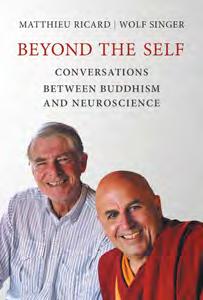
Buddhism shares with science the task of examining the mind empirically; it has pursued, for two millennia, direct investigation of the mind through penetrating introspection. Neuroscience, on the other hand, relies on third-person knowledge in the form of scientific observation.
In this book, Matthieu Ricard, a Buddhist monk trained as a molecular biologist, and Wolf Singer, a distinguished neuroscientist—close friends, continuing an ongoing dialogue—offer their perspectives on the mind, the self, consciousness, the unconscious, free will, epistemology, meditation, and neuroplasticity. Ricard and Singer’s wide-ranging conversation stages an enlightening and engaging encounter between Buddhism’s wealth of experiential findings and neuroscience’s abundance of experimental results.
Matthieu Ricard, a Buddhist monk, trained as a molecular biologist before moving to Nepal to study Buddhism. He is the author (with his father, Jean-François Revel) of The Monk and the Philosopher, The Quantum and the Lotus (with Trinh Thuan), Happiness, The Art of Meditation, Altruism: The Power of Compassion, and A Plea for the Animals. He has published several books of photography, including Motionless Journey and Tibet: An Inner Journey, and is the French interpreter for the Dalai Lama. Wolf Singer, a neuroscientist, is Emeritus Director of the Max Planck Institute for Brain Research.
“Wisdom, relevant to how we can best lead our lives, is the core of this very readable, accessible, and even entertaining book. To be savored, enjoyed, and enlightened, in a thoroughly enjoyable book.” —Paul Ekman, Professor Emeritus of Psychology, University of California, San Francisco; author of Emotions Revealed and Telling Lies
October | 6 x 9, 296 pp. $17.95T/£13.99 paper 978-0-262-53614-1
cloth 2017 978-0-262-03694-8
FALL 2018 | MITPRESS.MIT.EDU
NOW IN PAPERBACK 130
education higher education
Lifelong Kindergarten
Cultivating Creativity through Projects, Passion, Peers, and Play
Mitchel Resnick foreword by Ken Robinson
In kindergartens these days, children spend more time with math worksheets and phonics flashcards than building blocks and finger paint. Kindergarten is becoming more like the rest of school. In Lifelong Kindergarten, learning expert Mitchel Resnick argues for exactly the opposite: the rest of school (even the rest of life) should be more like kindergarten. Drawing on experiences from more than thirty years at MIT’s Media Lab, Resnick discusses new technologies and strategies for engaging young people in creative learning experiences.
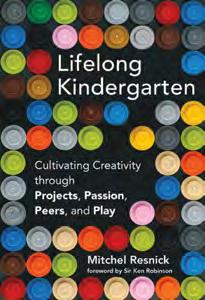
He tells stories of how children are programming their own games, stories, and inventions, and collaborating through remixing, crowdsourcing, and large-scale group projects. To thrive in today’s fast-changing world, people of all ages must learn to think and act creatively—and the best way to do that is by focusing more on imagining, creating, playing, sharing, and reflecting, just as children do in traditional kindergartens.
Mitchel Resnick, an expert in educational technologies, is Professor of Learning Research at the MIT Media Lab. He has worked closely with the LEGO toy company for thirty years, collaborating with them on such innovative projects as the LEGO Mindstorms robotics kits, and he holds the LEGO endowed chair at MIT. He leads the team developing the Scratch programming software and online community, and he is cofounder of the Computer Clubhouse project, a network of after-school learning centers for youth from low-income communities.
“Inspiring.” People Magazine (People Picks)
August | 5 3/8 x 8, 208 pp. | 7 illus.
$16.95T/£13.99 paper 978-0-262-53613-4
cloth 2017 978-0-262-03729-7
Robot-Proof
Higher Education in the Age of Artificial Intelligence Joseph E.

Aoun
Driverless cars are hitting the road, powered by artificial intelligence. Robots can climb stairs, open doors, win Jeopardy, analyze stocks, work in factories, find parking spaces, advise oncologists. In the past, automation was considered a threat to low-skilled labor. Now, many high-skilled functions, including interpreting medical images, doing legal research, and analyzing data, are within the skill sets of machines. How can higher education prepare students for their professional lives when professions themselves are disappearing? In Robot-Proof, Northeastern University president
Joseph Aoun proposes a way to educate the next generation of college students to invent, to create, and to discover—to fill needs in society that even the most sophisticated artificial intelligence agent cannot.
Aoun lays out the framework for a new discipline, humanics, which builds on our innate strengths and prepares students to compete in a labor market in which smart machines work alongside human professionals. Students will need data literacy to manage the flow of big data, and technological literacy to know how their machines work, but human literacy—the humanities, communication, and design—to function as a human being. Life-long learning opportunities will support their ability to adapt to change.
The only certainty about the future is change. Higher education based on the new literacies of humanics can equip students for living and working through change.
Joseph E. Aoun is President of Northeastern University.
“This book is an authoritative call for action and a compelling model for the next step in the evolution of higher education. Aoun offers an optimistic—and more important, realistic—vision of how we can educate ourselves for an AI economy.”
—Jeffrey S. Bornstein, Vice Chairman & Chief Financial Officer, GE
August | 5 3/8 x 8, 216 pp. $17.95T/£13.99 paper 978-0-262-53597-7
cloth 2017 978-0-262-03728-0
131 MITPRESS.MIT.EDU | FALL 2018
NOW IN PAPERBACK
politics | education history | technology
Safe Spaces, Brave Spaces
Diversity and Free Expression in Education
John Palfrey
foreword by Alberto Ibargüen
Safe spaces, trigger warnings, microaggressions, the disinvitation of speakers, demands to rename campus landmarks—debate over these issues began in lecture halls and on college quads but ended up on op-ed pages in the New York Times and the Wall Street Journal, on cable news, and on social media. Some of these critiques had merit, but others took a series of cheap shots at “crybullies” and “snowflakes” who needed to be coddled and protected from the real world. Few questioned the assumption that colleges must choose between free expression and diversity. In Safe Spaces, Brave Spaces, John Palfrey argues that the essential democratic values of diversity and free expression can, and should, coexist on campus.
Palfrey proposes an innovative way to support both diversity and free expression on campus: creating safe spaces and brave spaces. In safe spaces, students can explore ideas and express themselves without feeling marginalized. In brave spaces—classrooms, lecture halls, public forums—the search for knowledge is paramount, even if some discussions may make certain students uncomfortable.
John Palfrey is Head of School at Phillips Academy, Andover, coauthor of Born Digital: How Children Grow Up in a Digital Age, and author of the MIT Press Essential Knowledge volume Intellectual Property Strategy
“Safe Spaces, Brave Spaces is a must-read for faculty and administrators, but also for students, parents, and the wider public.”
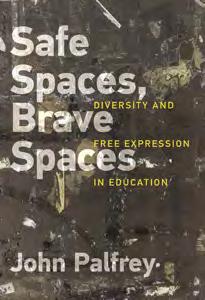
—Jonathan Fanton, President, American Academy of Arts and Sciences
August | 5 3/8 x 8, 192 pp. | 1 illus. $16.95T/£13.99 paper 978-0-262-53596-0
cloth 2017 978-0-262-03714-3
The Chinese Typewriter A History

Thomas S. Mullaney
Chinese writing is character based, the one major world script that is neither alphabetic nor syllabic. Through the years, the Chinese written language encountered presumed alphabetic universalism in the form of Morse Code, Braille, stenography, Linotype, punch cards, word processing, and other systems developed with the Latin alphabet in mind. In this book, Thomas Mullaney describes a fascinating series of experiments, prototypes, failures, and successes in the century-long quest for a workable Chinese typewriter. One of the first Chinese typewriters constructed was invented by a Christian missionary, who organized characters by common usage. Under Mao, clerks and secretaries experimented with alternative ways of organizing characters on their tray beds, inventing an input method that was the first instance of “predictive text.” Today, after more than a century of resistance against the alphabetic, not only have Chinese characters prevailed, they form the linguistic substrate of the vibrant world of Chinese information technology. The Chinese Typewriter, not just an “object history” but grappling with broad questions of technological change and global communication, shows how this happened.
“[A] surprisingly engaging read. . . . Mullaney balances the light with the heavy, dotting a provocative counter-history of language and technology with absorbing little asides.” New Yorker
“A fascinating and extensive study into the characteristics of the Chinese language.”
—Ai Weiwei
October | 6 x 9, 504 pp. | 86 illus. $18.95T/£14.99 paper 978-0-262-53610-3
cloth 2017 978-0-262-03636-8
FALL 2018 | MITPRESS.MIT.EDU
Thomas S. Mullaney is Associate Professor of History at Stanford University and the author of Coming to Terms with the Nation: Ethnic Classification in Modern China
NOW IN PAPERBACK 132
philosophy | computer-human interaction communication | travel
Robot Sex
Social and Ethical Implications
edited by John Danaher and Neil McArthur
Sexbots are coming. Given the pace of technological advances, it is inevitable that realistic robots specifically designed for people’s sexual gratification will be developed in the not-toodistant future. Despite popular culture’s fascination with the topic, and the emergence of the much-publicized Campaign Against Sex Robots, there has been little academic research on the social, philosophical, moral, and legal implications of robot sex. This book fills the gap, offering perspectives from philosophy, psychology, religious studies, economics, and law on the possible future of robot-human sexual relationships.
John Danaher is a Lecturer in the Law School at the National University of Ireland, Galway, and the author of the popular blog Philosophical Disquisitions Neil McArthur is Associate Professor of Philosophy and Director of the Centre for Professional and Applied Ethics at the University of Manitoba. He is a regular contributor to VICE and the author of David Hume’s Political Theory
Contributors
Marina Adshade, Thomas Arnold, Julie Carpenter, John Danaher, Brian Earp, Lily Eva Frank, Joshua D. Goldstein, Michael Hauskeller, Noreen Herzfeld, Neil McArthur, Mark Migotti, Ezio di Nucci, Sven Nyholm, Steve Petersen, Anders Sandberg, Matthias Scheutz, Litska Strikwerda, Nicole Wyatt
“The point of this book is to tease out the distinguishing characteristics of robots so we’re ready when it’s time to develop laws about them.”
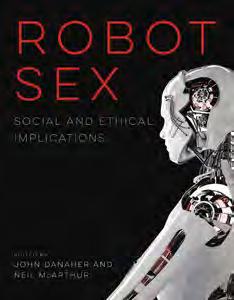
—Wendy M Grossman, ZDNet UK Book Reviews
September | 7 x 9, 328 pp. | 6 illus.
$19.95T/£14.99 paper 978-0-262-53602-8
cloth 2017 978-0-262-03668-9
Getting Through
The Pleasures and Perils of Cross-Cultural Communication

Roger J. Kreuz and Richard M. Roberts
We can learn to speak other languages, but do we truly understand what we are saying? How much detail should we offer when someone asks how we are? How close should we stand to our conversational partners? In Getting Through, Roger Kreuz and Richard Roberts offer a guide to understanding and being understood in different cultures. If someone hisses “I’m fine!” though clenched teeth, we can assume that she’s not really fine. But sometimes the context, cultural or otherwise, is more nuanced. For example, a visitor from another country might be taken aback when an American offers a complaint (“Cold out today!”) as a greeting. And should you apologize the same way in Tokyo as you would in Toledo? Kreuz and Roberts help us navigate such subtleties. The more we understand one another, the better we can communicate, and the better we can communicate, the more we can avoid conflict.
Roger J. Kreuz is Professor of Psychology and Associate Dean in the College of Arts and Sciences at the University of Memphis. Richard M. Roberts, a Foreign Service Officer in the US Department of State, taught psychology in Europe and Asia with the University of Maryland University College.
“Roger Kreuz and Richard Roberts explore cross-cultural communications, pulling together research from across the social sciences and sprinkling in their own funny anecdotes. The delightful result offers fascinating insights into how we use language.”
The Commercial Appeal, USA Today
August | 5 3/8 x 8, 304 pp. | 17 illus.
$17.95T/£13.99 paper 978-0-262-53609-7
cloth 2017 978-0-262-03631-3
133 MITPRESS.MIT.EDU | FALL 2018
NOW IN PAPERBACK
business | innovation digital culture
Innovating
A Doer’s Manifesto for Starting from a Hunch, Prototyping Problems, Scaling Up, and Learning to Be Productively Wrong
Luis Perez-Breva
Innovation is the subject of countless books and courses, but there’s very little out there about how you actually innovate. Innovation and entrepreneurship are not one and the same, although aspiring innovators often think of them that way. They are told to get an idea and a team and to build a show-and-tell for potential investors. In Innovating, Luis Perez-Breva describes another approach—a doer’s approach developed over a decade at MIT and internationally in workshops, classes, and companies. He shows that to start innovating it doesn’t require an earth-shattering idea; all it takes is a hunch. Anyone can do it. By prototyping a problem and learning by being wrong, innovating can be scaled up to make an impact. As Perez-Breva demonstrates, “no thing is new” at the outset of what we only later celebrate as innovation. Perez-Breva describes how to create a kit for innovating, and outlines questions that will help you think in new ways. Finally, he shows how to systematize what you’ve learned: to advocate, communicate, scale up, manage innovating continuously, and document.
Luis Perez-Breva, an innovator and entrepreneur, is a Lecturer and Research Scientist at MIT’s School of Engineering and the originator and Lead Instructor of the MIT Innovation Teams Program.
“Innovating is an extraordinary book—whip-smart, original, and engagingly written.”
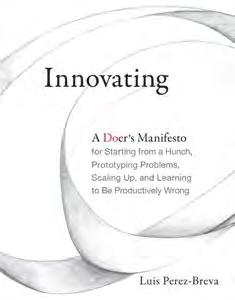
—Amy Chua, John M. Duff, Jr. Professor of Law, Yale University; author of Battle Hymn of the Tiger Mother and coauthor of The Triple Package
August | 7 x 9, 424 pp. | 34 illus.
$24.95T/£20.00 paper 978-0-262-53612-7
cloth 2016 978-0-262-03535-4
What Algorithms Want Imagination in the Age of Computing
Ed Finn
We depend on—we believe in—algorithms to help us get a ride, choose which book to buy, execute a mathematical proof. In this book, Ed Finn considers how the algorithm—in practical terms, “a method for solving a problem”—has its roots not only in mathematical logic but also in cybernetics, philosophy, and magical thinking. Drawing on sources that range from Neal Stephenson’s Snow Crash to Diderot’s Encyclopédie, from Adam Smith to the Star Trek computer, Finn explores the gap between theoretical ideas and pragmatic instructions. He examines the development of intelligent assistants like Siri, the rise of algorithmic aesthetics at Netflix, Ian Bogost’s satiric Facebook game Cow Clicker, and the revolutionary economics of Bitcoin. Finn describes Google’s goal of anticipating our questions, Uber’s cartoon maps and black box accounting, and what Facebook tells us about programmable value. If we want to understand the gap between abstraction and messy reality, Finn argues, we need to build a model of “algorithmic reading” and scholarship that attends to process, spearheading a new experimental humanities.

Ed Finn is Founding Director of the Center for Science and the Imagination at Arizona State University, where he is also Assistant Professor with a joint appointment in the School of Arts, Media, and Engineering and the Department of English.
“Insightful.” Los Angeles Review of Books “[A]n impressive contribution to how we should understand and respond to a rapidly developing and ubiquitous cultural landscape.”
—3:AM Magazine
October | 6 x 9, 272 pp. | 17 illus.
$17.95T/£13.99 paper 978-0-262-53604-2
cloth 2017 978-0-262-03592-7
FALL 2018 | MITPRESS.MIT.EDU
NOW IN PAPERBACK 134
science | technology game studies | popular culture
Plato and the Nerd
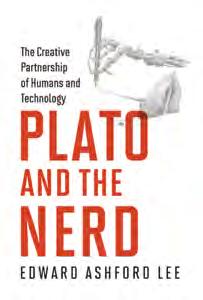
The Creative Partnership of Humans and Technology
Edward Ashford Lee
In this book, Edward Ashford Lee makes a bold claim: that the creators of digital technology have a boundless medium for creativity. Technology has advanced to the point where progress seems limited not by any physical constraints but only by our human imagination. Writing for both literate technologists and numerate humanists, Lee makes a case for engineering—creating technology—as both an intellectual and a deeply creative process. Explaining why digital technology has been so transformative and so liberating, Lee argues that the real power of technology stems from the way humans are able to partner with it.
Lee explores how engineers use models and abstraction to build inventive artificial worlds and to give us things that we never dreamed of—for example, the ability to carry in our pockets everything humans have ever published. He argues, however, that artificial intelligence’s goal of reproducing human cognitive functions in computers vastly underestimates the potential of these machines. In his view, technology is able to augment our cognitive and physical capabilities while we nurture, develop, and propagate the systems themselves. Complementarity is more likely than competition.
Edward Ashford Lee is the Robert S. Pepper Distinguished Professor in the Department of Electrical Engineering and Computer Sciences at the University of California, Berkeley, and the coauthor (with Sanjit Arunkumar Seshia) of Introduction to Embedded Systems: A Cyber-Physical Systems Approach
“Edward Ashford Lee has written a wise and witty book that is truly delightful to read, arguing beautifully for the deep connection between human cognition and technology.”
—Schahram Dustdar, Professor of Computer Science, TU Wien, Austria
October | 6 x 9, 288 pp. | 60 illus.
$17.95T/£13.99 paper 978-0-262-53642-4
cloth 2017 978-0-262-03648-1
Atari Age
The Emergence of Video Games in America
Michael Z. Newman
In Atari Age, Michael Newman charts the emergence of video games in America from ball-and-paddle games to hits like Space Invaders and Pac-Man, describing their relationship to other amusements and technologies and showing how they came to be identified with the middle class, youth, and masculinity. Newman shows that the “new media” of video games were understood in varied, even contradictory ways. They were family fun (but mainly for boys), better than television (but possibly harmful), and educational (but a waste of computer time).
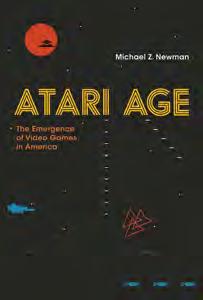
Drawing on a range of sources—including the games and their packaging; coverage in the popular, trade, and fan press; social science research of the time; advertising and store catalogs; and representations in movies and television—Newman describes the series of cultural contradictions through which the identity of the emerging medium worked itself out. Then, as now, many worried about the impact of video games on players, while others celebrated video games for familiarizing kids with technology essential for the information age.
Michael Z. Newman is Associate Professor in the Department of Journalism, Advertising, and Media Studies at the University of Wisconsin–Milwaukee.
“[A]n engaging story that is accessible to those beyond the usual closed circuit of hardcore gaming fans. . . . Such a comprehensive history hints at how much further games can evolve.”
Bookforum
“Historians, game studies researchers, readers who grew up with classic video games, or their descendants who never experienced them, will find this book fascinating.”
Choice
October | 6 x 9, 264 pp. | 45 illus.
$16.95T/£13.99 paper 978-0-262-53611-0
cloth 2017 978-0-262-03571-2
135 MITPRESS.MIT.EDU | FALL 2018
NOW IN PAPERBACK
humanities mathematics
Fantasies of the Library
 Anna-Sophie Springer and Etienne Turpin
Anna-Sophie Springer and Etienne Turpin
This book lets readers experience the library anew. It imagines, and enacts, the library as both keeper of books and curator of ideas—as a platform of the future.
Fantasies of the Library includes an essay on the institutional ordering principles of book collections; a conversation with the proprietors of the Prelinger Library in San Francisco; reflections on the role of cultural memory and the archive; and a dialogue with a new media theorist about experiments at the intersection of curatorial practice and open source ebooks. The reader emerges from this book-as-exhibition with the growing conviction that the library is not only a curatorial space but a bibliological imaginary, ripe for the exploration of consequential paginated affairs. The physicality of the book— and this book—“resists the digital,” argues coeditor Etienne Turpin, “but not in a nostalgic way.”
Anna-Sophie Springer, a curator and writer, is the codirector (with Charles Stankievech) of K. Verlag, an independent publishing imprint and curatorial-editorial platform (Berlin and Toronto). Etienne Turpin is the founding director of anexact office, a design research practice based in Jakarta.
“Playful pagination creates unexpected juxtapositions which reveal the limits of linearity; this book-as-exhibition reminds us that reality is full of irregularities and unforeseen layers. These fantasies of the library are more real than fiction.”
—Ute Meta Bauer, Professor and Founding Director, NTU CCA Singapore
August | 5 1/8 x 8 1/4, 160 pp. | 30 color illus., 15 b&w illus.
$16.95T/£13.99 paper 978-0-262-53617-2
cloth 2016 978-0-262-03520-0
Foolproof, and Other Mathematical Meditations
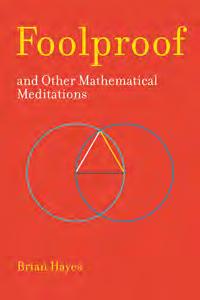
Brian Hayes
Brian Hayes wants to convince us that mathematics is too important and too much fun to be left to the mathematicians. Foolproof, and Other Mathematical Meditations is his entertaining and accessible exploration of mathematical terrain both far-flung and nearby, bringing readers tidings of mathematical topics from Markov chains to Sudoku. Hayes, a nonmathematician, argues that mathematics is not only an essential tool for understanding the world but also a world unto itself, filled with objects and patterns that transcend earthly reality. In a series of essays, Hayes sets off to explore this exotic terrain, and takes the reader with him. Whether he’s tracing the genealogy of a well-worn anecdote about a famous mathematical prodigy, or speculating about what would happen to a lost ball in the nth dimension, or explaining that there are such things as quasirandom numbers, Hayes wants readers to share his enthusiasm. Even when some of these essays involve a hike up the learning curve, the view from the top is worth it.
Brian Hayes is Senior Contributing Writer at American Scientist. His writing has appeared in Scientific American, The Sciences, Wired, the New York Times Book Review, the New Republic, and other publications.
“[A] brilliant book.”—Popular Science
“This compilation is a treasure trove of high-quality mathematical exposition.” MAA Review
October | 6 x 9, 248 pp. | 69 illus.
$17.95T/£13.99 paper 978-0-262-53607-3
cloth 2017 978-0-262-03686-3
FALL 2018 | MITPRESS.MIT.EDU
NOW IN PAPERBACK 136
Faster, Smarter, Greener
The Future of the Car and Urban Mobility
Venkat Sumantran, Charles Fine, and David Gonsalvez
The twentieth century was the century of the automobile; the twenty-first will see mobility dramatically re-envisioned. This book, by three experts from industry and academia, envisions a new world of mobility that is connected, heterogeneous, intelligent, and personalized (the CHIP architecture). City administrators are shifting from designing cities for cars to designing cities for people. Nations and cities will increasingly employ targeted user fees and offer subsidies to nudge consumers toward more sustainable modes. The sharing economy is coaxing many consumers to shift from being owners of assets to being users of services. The auto industry is responding with connected cars that double as virtual travel assistants and by introducing autonomous driving. The CHIP architecture embodies an integrated, multimode mobility system that builds on ubiquitous connectivity, electrified and autonomous vehicles, and a marketplace open to innovation and entrepreneurship. An innovative mobility architecture reconfigured for this century is a social and economic necessity; this book charts a course for achieving it.
Venkat Sumantran is Chairman of Celeris Technologies, and has more than thirty years of experience heading organizations in the auto industry in the United States, Europe, and Asia. Charles Fine is Chrysler LGO Professor at MIT Sloan and the Founding President of the Asia School of Business, Kuala Lumpur. David Gonsalvez is CEO and Rector at MIT’s Malaysia Institute for Supply Chain Innovation.
“If you want to understand the connected, intelligent, and personalized future of urban transportation, and help shape it, then read this book.”

—Erik Brynjolfsson, Director of the MIT Initiative on the Digital Economy; coauthor of Machine, Platform, Crowd: Harnessing Our Digital Future
September | 6 x 9, 352 pp. | 58 illus. $19.95T/£14.99 paper 978-0-262-53620-2
cloth 2017 978-0-262-03666-5
Progress and Confusion
The State of Macroeconomic Policy edited by Olivier Blanchard, Raghuram Rajan, Kenneth Rogoff, and Lawrence H. Summers

In April of 2015, the International Monetary Fund gathered leading economists, both academics and policymakers, to address the shape of future macroeconomic policy. This book is the result, with prominent figures—including Ben Bernanke, John Taylor, and Paul Volcker— offering essays that address topics that range from the measurement of systemic risk to foreign exchange intervention. The chapters address whether we have entered a “new normal” of low growth, negative real rates, and deflationary pressures, with contributors taking opposing views; whether new financial regulation has stemmed systemic risk; the effectiveness of macro prudential tools; monetary policy, the choice of inflation targets, and the responsibilities of central banks; fiscal policy, stimulus, and debt stabilization; the volatility of capital flows; and the international monetary and financial system, including the role of international policy coordination.
Olivier Blanchard is C. Fred Bergsten Senior Fellow at the Peterson Institute for International Economics, Washington, D.C. Raghuram Rajan is Katherine Dusak Miller Distinguished Service Professor of Finance at the University of Chicago Booth School of Business. Kenneth Rogoff is Thomas D. Cabot Professor of Public Policy and Professor of Economics at Harvard University. Lawrence H. Summers is Charles W. Eliot University Professor and President Emeritus at Harvard University.
“The global financial crisis and Great Recession exposed weaknesses in regulation and policy, and they and the sluggish aftermath have shaken the intellectual underpinnings of macroeconomics. The lingering uncertainties, explored here, are a worry—and a welcome antidote to hubris.”
—Harvard Magazine
August | 6 x 9, 312 pp. | 46 illus., 5 tables $21.95T/£16.99 paper 978-0-262-53599-1
cloth 2016 978-0-262-03462-3
137 MITPRESS.MIT.EDU | FALL 2018
technology
urbanism |
economics
NOW IN PAPERBACK
business | technology business | technology
Tap
Unlocking the Mobile Economy

Anindya Ghose
Consumers create a data trail by tapping their phones; businesses can tap into this trail to harness the power of the more than three-trillion-dollar mobile economy. In Tap, Anindya Ghose, a global authority on the mobile economy, welcomes us to the mobile economy of smartphones, smarter companies, and valueseeking consumers. Drawing on his extensive research in the United States, Europe, and Asia, and on a variety of realworld examples from companies including Alibaba, China Mobile, Coke, Facebook, SK Telecom, Telefónica, and Travelocity, Ghose shows how when mobile advertising is done well, the smartphone plays the role of a personal concierge—a butler, not a stalker. With Tap, Ghose highlights the true influence mobile wields over shoppers, the behavioral and economic motivations behind that influence, and the lucrative opportunities it represents.
Anindya Ghose is the Heinz Riehl Chair Professor of Business at New York University’s Leonard N. Stern School of Business, where he holds a joint appointment in the Information, Operations and Management Science, and Marketing Departments. In 2017 Thinkers50 identified him among the 30 management thinkers most likely to shape the future of how organizations are managed and led. His opinion pieces and research have been featured on the BBC, CNBC, MSNBC, NPR, NBC, and in The Economist, the New York Times, WIRED, Time, the Financial Times, and the Wall Street Journal
“This book is required reading for anyone who wants to understand how mobile technology is changing our businesses, our economy, and our lives.”
—Hal Varian, Chief Economist, Google
September | 6 x 9, 240 pp. | 11 illus.
$17.95T/£13.99 paper 978-0-262-53605-9
cloth 2017 978-0-262-03627-6
The Inversion Factor
How to Thrive in the IoT Economy
Linda Bernardi, Sanjay Sarma, and Kenneth Traub
In the past, companies found success with a product-first orientation; they made a thing that did a thing. The Inversion Factor explains why the companies of today and tomorrow will have to abandon the product-first orientation. The authors explain how the introduction of “smart” objects connected by the Internet of Things signals fundamental changes for business. The IoT, where real and digital coexist, is powering new ways to meet human needs. Companies that know this include giants like Amazon, Airbnb, Uber, Google, Tesla, and Apple, as well as less famous companies like Tile, Visenti, and Augury. The authors offer a blueprint for businesses making the transition to inversion and interviews with leaders of major companies and game-changing startups.
Linda Bernardi is a serial technology entrepreneur and author. Formerly Chief Innovation Officer for IoT & Cloud at IBM, she runs the technology strategy firm StraTerra Partners. Sanjay Sarma is Vice President for Open Learning and Fred Fort Flowers (1941) and Daniel Fort Flowers (1941) Professor of Mechanical Engineering at MIT. The late Kenneth Traub, a consultant with thirty years of experience in software engineering, was the cofounder and technical advisor to five high technology startups.
“The authors take us on an important and necessary exploration of this journey toward inversion, one that looks beyond narrow product strategies to breakthroughs built on innovation, technology, and culture.”

—Satya Nadella, CEO, Microsoft
September | 6 x 9, 240 pp. | 1 illus.
$17.95T/£13.99 paper 978-0-262-53598-4
cloth 2017 978-0-262-03727-3
FALL 2018 | MITPRESS.MIT.EDU
NOW IN PAPERBACK 138
Leading from Within Conscious Social Change and Mindfulness for Social Innovation
 Gretchen Ki Steidle
Gretchen Ki Steidle
Gretchen Steidle knows first-hand the personal transformation that mindfulness practice can bring. But she doesn’t believe that transformation stops at personal wellbeing. In Leading from Within, Steidle describes the ways that personal investment in self-awareness shapes leaders who are able to inspire change in others, build stronger relationships, and design innovative and more sustainable solutions. With this book, she offers a roadmap for integrating mindfulness into every aspect of social change. Steidle offers mindfulness practices for individuals and groups, presents the neuroscientific evidence for its benefits, and argues for its relevance to social change. She writes about her own experiences, including her work helping women to found their own grassroots social ventures in postconflict Africa. Steidle also draws from the work of change agents in the United States to showcase applications of conscious social change to timely issues like immigration, racism, policing, and urban violence. Through personal stories and practical guidance, Steidle delivers both the inspiration and tools of this innovative approach to social transformation.
Gretchen Ki Steidle is Founder and President of Global Grassroots, a nonprofit organization that works with women and girls to be leaders of conscious social change in their communities. She gives lectures and workshops worldwide.
“Detailed and impressive.” Mindful “Gretchen Steidle’s approach to applying mindfulness and empathy to social entrepreneurship will help you lead, innovate, and advance social change effectively and happily.”
—Bill Drayton, Founder and CEO, Ashoka
September | 6 x 9, 264 pp. | 6 illus.
$17.95T/£13.99 paper 978-0-262-53618-9
cloth 2017 978-0-262-03719-8
Maintenance Architecture
Hilary Sample
Maintenance plays a crucial role in the production and endurance of architecture, yet architects for the most part treat maintenance with indifference. The discipline of architecture values the image of the new over the lived-in, the photogenic empty and stark building over a messy and labored one. But homes need to be cleaned and buildings and cities need to be maintained, and architecture no matter its form cannot escape from such realities.
In Maintenance Architecture, Hilary Sample offers an inventive examination of the architectural significance of maintenance through a series of short texts and images about specific buildings, materials, and projects.
Sample looks particularly at the private home, exhibition pavilion, and high-rise urban building, giving special attention to buildings constructed with novel and developing materials, technologies, and precise detailing in relation to endurance. A selection of artworks make the usually invisible aspects of maintenance visible, from Martha Rosler’s Cleaning the Drapes to Iñigo Manglano-Ovalle’s The Kiss.
Hilary Sample is an internationally recognized and award-winning architect and cofounder of MOS, based in New York. City. She is the coauthor of An Unfinished Encyclopedia of Scale Figures without Architecture

“Sample’s Maintenance Architecture gives architectural history some much needed maintenance and repair of those spaces hidden by our focus on the heroic in buildings.”
The Building Centre
“This book opens up a world of maintenance-intimacy to contemporary critical scrutiny and design.”
—Ana Miljački, Associate Professor of Architecture, MIT
September | 6 x 9, 208 pp. | 50 color illus., 36 b&w illus.
$19.95T/£14.99 paper 978-0-262-53526-7
cloth 2016 978-0-262-03497-5
139 MITPRESS.MIT.EDU | FALL 2018
management | psychology architecture
NOW IN PAPERBACK
environment | business science, technology, and society | history
Dirty Gold
How Activism Transformed the Jewelry Industry
Michael John Bloomfield
Gold mining can be a dirty business. It creates immense amounts of toxic materials that are difficult to dispose of. Mines are often developed without community consent, and working conditions for miners can be poor. Income from gold has funded wars. And consumers buy wedding rings and gold chains not knowing about any of this.
In Dirty Gold, Michael Bloomfield shows what happened when Earthworks, a small Washingtonbased NGO, launched a campaign for ethically sourced gold in the consumer jewelry market, targeting Tiffany and other major firms. The unfolding of the campaign and its effect on the jewelry industry offer a lesson in the growing influence of business in global environmental politics. Taking a firm-level view, Bloomfield examines the different opportunities for and constraints on corporate political mobilization within the industry.
Michael John Bloomfield is Lecturer (Assistant Professor) in International Development in the Department of Social and Policy Sciences at the University of Bath. He was previously Departmental Lecturer in Global Governance at the University of Oxford and also taught at the London School of Economics.
“A fascinating, insightful study of how some retailers have addressed the challenge of making jewelry production more socially responsible.”

—David Vogel, Solomon P. Lee Chair in Business Ethics, Haas School of Business, University of California, Berkeley
August | 6 x 9, 272 pp. | 5 illus.
$17.95T/£13.99 paper 978-0-262-53600-4
cloth 2017 978-0-262-03578-1
Earth System Governance series
Fascist Pigs
Technoscientific Organisms and the History of Fascism

Tiago Saraiva
In the fascist regimes of Mussolini’s Italy, Salazar’s Portugal, and Hitler’s Germany, the first mass mobilizations involved wheat engineered to take advantage of chemical fertilizers, potatoes resistant to late blight, and pigs that thrived on national produce. Food independence was an early goal of fascism; indeed, as Tiago Saraiva writes in Fascist Pigs, fascists were obsessed with projects to feed the national body from the national soil. Saraiva shows how such technoscientific organisms as specially bred wheat and pigs became important elements in the institutionalization and expansion of fascist regimes. The pigs, the potatoes, and the wheat embodied fascism.
In Nazi Germany, only plants and animals conforming to the new national standards would be allowed to reproduce. Pigs that didn’t efficiently convert German-grown potatoes into pork and lard were eliminated. Saraiva’s highly original account—the first systematic study of the relation between science and fascism—argues that the “back to the land” aspect of fascism should be understood as a modernist experiment involving geneticists and their organisms, mass propaganda, overgrown bureaucracy, and violent colonialism.
Tiago Saraiva is Associate Professor in the Department of History at Drexel University and Associated Researcher at the Institute of Social Sciences of the University of Lisbon.
Winner, 2017 Pfizer Award sponsored by the History of Science Society
“Exemplary.”
—Technology and Culture
August | 6 x 9, 344 pp. | 64 illus. $19.95T/£14.99 paper 978-0-262-53615-8
cloth 2016 978-0-262-03503-3
Inside Technology series
FALL 2018 | MITPRESS.MIT.EDU
NOW IN PAPERBACK 140
urban studies | environment philosophy
Global Cities
Urban Environments in Los Angeles, Hong Kong, and China
Robert Gottlieb and Simon Ng
Over the past four decades, Los Angeles, Hong Kong, and key urban regions of China have emerged as global cities— in financial, political, cultural, environmental, and demographic terms. In this book, Robert Gottlieb and Simon Ng trace the global emergence of these urban areas and compare their responses to a set of six urban environmental issues. Though these cities have different patterns of development, all three have experienced major environmental changes in a relatively short period of time. Gottlieb and Ng document how each has dealt with challenges posed by ports and the movement of goods, air pollution, water supply, and water quality, the food system, transportation, and public and private space. Finally they discuss the possibility of change brought about by policy initiatives and social movements.

Robert Gottlieb is Emeritus Professor of Urban & Environmental Policy and founder and former Director of the Urban and Environmental Policy Institute at Occidental College. He is the author of Reinventing Los Angeles: Nature and Community in the Global City (MIT Press) and other books. Simon Ng is an independent consultant and former Chief Research Officer at Civic Exchange, a public policy think tank in Hong Kong.
“This is a book bursting with insight. It briskly addresses key issues with a wealth of information.” South China Morning Post “Thoroughly researched and extremely detailed.”—Civil Engineering
August | 6 x 9, 472 pp. | 37 illus.
$21.95T/£16.99 paper 978-0-262-53606-6
cloth 2017 978-0-262-03591-0
Urban and Industrial Environments series
Understanding Ignorance
The Surprising Impact of What We Don’t Know Daniel R.
DeNicola
Ignorance is trending. Lack of experience, not expertise, becomes a credential. Fake news and repeated falsehoods are accepted and shape firm belief. Ignorance about American government and history is so alarming that the ideal of an informed citizenry now seems quaint. Conspiracy theories and false knowledge thrive. This may be the Information Age, but we do not seem to be well informed.
In this book, philosopher Daniel DeNicola explores ignorance—its abundance, its endurance, and its consequences. DeNicola argues that ignorance is more than a lack or a void, and that it has dynamic and complex interactions with knowledge. Taking a broadly philosophical approach, DeNicola examines many forms of ignorance, using the metaphors of ignorance as place, boundary, limit, and horizon. Ignorance is neither pure nor simple. Its practical effects range from the inconsequential to the momentous. It is a scourge, but, DeNicola argues daringly, it may also be a refuge, a value, even an accompaniment to virtue.

“[A] breath of fresh air. . . . [A] lively, wide-ranging, yet systematic study of the interrelationships between knowledge and ignorance and the agents involved with both.”
Choice
August | 6 x 9, 264 pp.
$17.95T/£13.99 paper 978-0-262-53603-5
cloth 2017 978-0-262-03644-3
141 MITPRESS.MIT.EDU | FALL 2018
Daniel R. DeNicola is Chair and Professor of Philosophy at Gettysburg College and the author of Learning to Flourish: A Philosophical Exploration of Liberal Education
NOW IN PAPERBACK
higher education media | education
Building the Intentional University

Minerva and the Future of Higher Education
edited by Stephen M. Kosslyn and Ben Nelson foreword by Bob Kerrey
Higher education is in crisis. It is too expensive, ineffective, and impractical for many of the world’s students. Many have speculated about changing higher education, but Minerva has actually created a new kind of university program. Its founders raised the funding, assembled the team, devised the curriculum and pedagogy, recruited the students, hired the faculty, and implemented a bold vision of a new and improved higher education. The Minerva curriculum focuses on “practical knowledge” (knowledge students can use to adapt to a changing world). It equips students with the cognitive tools they need to succeed in the world after graduation, building the core competencies of critical thinking, creative thinking, effective communication, and effective interaction. This book offers readers both the story of this grand and sweeping idea and a blueprint for transforming higher education.
Stephen M. Kosslyn is Founding Dean and Chief Academic Officer of the Minerva Schools at KGI (the Keck Graduate Institute) and John Lindsley Professor of Psychology in Memory of William James, Emeritus, at Harvard University. He is the author of Image and Brain: The Resolution of the Imagery Debate (MIT Press). Ben Nelson is Founder, Chairman, and CEO of Minerva. A visionary with a passion to reinvent higher education, he spent more than ten years at Snapfish, serving five years as CEO.
“If you care about learning—K-12, Higher Education, or corporate— you’ll benefit from reading Building the Intentional University. You won’t find a more systematic design based in learning science.”
—Education Week
August | 6 x 9, 456 pp. | 9 illus.
$30.00S/£24.00 paper 978-0-262-53619-6
cloth 2017 978-0-262-03715-0
Worried About the Wrong Things
Youth, Risk, and Opportunity in the Digital World Jacqueline Ryan Vickery
It’s a familiar narrative in both real life and fiction, from news reports to television storylines: a young person is bullied online, or targeted by an online predator, or exposed to sexually explicit content. In this book, Jacqueline Ryan Vickery argues that there are other urgent concerns about young people’s online experiences besides porn, predators, and peers. We need to turn our attention to inequitable opportunities for participation in a digital culture. Technical and material obstacles prevent low-income and other marginalized young people from the positive, communitybuilding, and creative experiences that are possible online. Vickery explains that cautionary tales about online risk have shaped the way we think about technology and youth. Vickery addresses how the discourses of risk regulate and control technology, then turns to the online practices of youth at a low-income, minority-majority Texas high school. Ultimately, she shows that opportunity-driven expectations can guide young people’s online experiences in ways that balance protection and agency.

“For anyone interested in a searing perspective on the pitfalls of our current approach to the use of media resources in the high school classroom, this book provides a clear, historically grounded, and eminently readable chronicle, with clearly articulated guidance and advice on how best to shift our approach moving forward.”
—Holly Willis, Afterimage
August | 6 x 9, 360 pp.| 9 illus.
$25.00S/£20.00 paper 978-0-262-53621-9
cloth 2017 978-0-262-03602-3
The John D. and Catherine T. MacArthur Foundation Series on Digital Media and Learning
FALL 2018 | MITPRESS.MIT.EDU
Jacqueline Ryan Vickery is Assistant Professor in the Department of Media Arts at the University of North Texas.
NOW IN PAPERBACK 142
Nautilus is a different kind of science magazine. It delivers deep, undiluted, narrative storytelling that brings bigpicture science into today’s most important conversations. It challenges readers to consider the common themes that run through the sciences and connect them to philosophy, culture, and art.
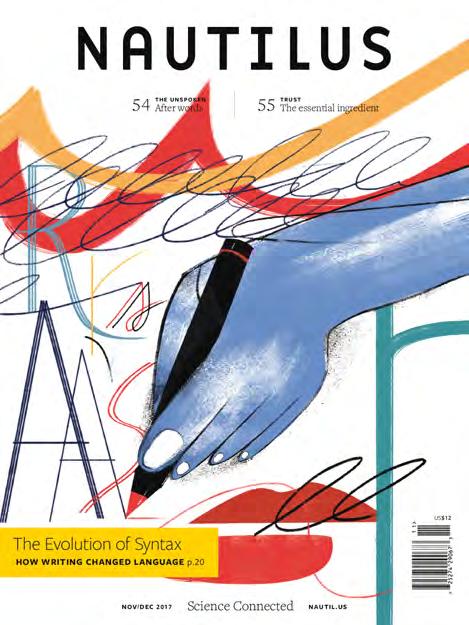
The print edition of Nautilus is a copublication of the MIT Press and NautilusThink. Digital content is housed at nautil.us.
ASME Award for Best Style and Design of a magazine cover, for the September/October 2015 print edition.
“The Man Who Tried to Redeem the World with Logic” was selected for inclusion in The Best American Science and Nature Writing 2016 .
Nautilus was chosen as an Honoree in the Web: Best Writing (Editorial) category at the 20th Annual Webby Awards.
“How to Restart an Ecosystem” was chosen as an Honoree in the Online Video—General Film: Science & Education category at the 20th Annual Webby Awards.
National Magazine Award for General Excellence in the category of Literature, Science, and Politics.
“America Is Getting the Science of Sun Exposure Wrong” won the American Society of Journalists and Authors’ June Roth Award for an Outstanding Medical Article.
The Webby Awards Best General Website: Science.
Bi-monthly | 128 pp. per issue | 7 1/2 x 10, illustrated ISSN 2372-1758 | E-ISSN 2372-1766 mitpressjournals.org/ntls
Available to booksellers through the MIT Press
Nautilus 24 January/February 2018 $12.00T/£9.95 paper 978-0-262-53489-5
Nautilus 25 March/April 2018 $12.00T/£9.95 paper 978-0-262-53546-5
Nautilus 26 May/June 2018 $12.00T/£9.95 paper 978-0-262-53548-9
Nautilus 27 July/August 2018 $12.00T/£9.99 paper 978-0-262-53644-8
Nautilus 28 September/October 2018 $12.00T/£9.99 paper 978-0-262-53645-5
Nautilus 29 November/December 2018 $12.00T/£9.99 paper 978-0-262-53646-2
143 MITPRESS.MIT.EDU | FALL 2018
JOURNALS
science
Journal of Design and Science
The Journal of Design and Science (JoDS) captures the antidisciplinary ethos of the MIT Media Lab. Like the Lab, it opens new connections between science and design, encouraging discourse that breaks down the barriers between traditional academic disciplines. It explores not only the design of science, but also the science of design.
JoDS is shepherded by a team led by MIT Media Lab Director Joi Ito, and published in partnership with the MIT Press.
Open Access mitpress.mit.edu/jods
ARTMargins
Sven Spieker, executive editor
Karen Benezra, Francesca Dal Lago Octavian Eșanu, Anthony Gardner, Angela Harutyunyan, and Andrew Weiner, editors
ARTMargins publishes scholarly articles and essays about contemporary art, media, architecture, and critical theory. The journal is devoted to art practices and visual culture in the emerging global margins, from North Africa and the Middle East to the Americas, Eastern and Western Europe, Asia and Australasia.
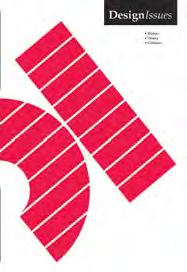
Triannual, ISSN 2162-2574 | February/June/October 128 pp. per issue | 6 x 9, illustrated http://mitpressjournals.org/artmargins
Dædalus
Phyllis S. Bendell,

managing editor
Drawing on the nation’s foremost scholars in the arts, sciences, humanities, and social sciences, Dædalus, Journal of the American Academy of Arts and Sciences, explores the frontiers of knowledge and issues of public importance.
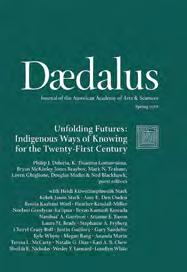
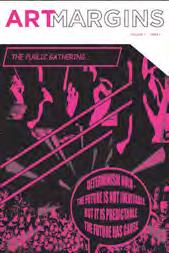
Quarterly, ISSN 0011-5266 | Winter/ Spring/Summer/Fall 144 pp. per issue | 7 x 10 http://mitpressjournals.org/daedalus

PAJ: A Journal of Performance and Art
 Bonnie Marranca, editor
Bonnie Marranca, editor
PAJ explores innovative work in theatre, performance art, dance, video, writing, technology, sound, and music, bringing together all live arts in thoughtful cultural dialogue.
Triannual, ISSN 1520-281X January/May/September 128 pp. per issue | 7 x 10, illustrated http://mitpressjournals.org/paj
Design Issues
Bruce Brown, Richard Buchanan, Carl DiSalvo, Dennis P. Doordan, Kipum Lee, Victor Margolin, and Ramia Mazé, editors
The first American academic journal to examine design history, theory, and criticism, Design Issues provokes inquiry into the cultural and intellectual issues surrounding design. Special guest-edited issues concentrate on particular themes, such as human-computer interface, service design, design for development, and product design methodology.
Quarterly, ISSN 0747-9360 | Winter/Spring/Summer/Autumn 112 pp. per issue | 7 x 10, illustrated http://mitpressjournals.org/di
October
Rosalind Krauss, Annette Michelson, George Baker, Yve-Alain Bois, Benjamin H. D. Buchloh, Leah Dickerman, Devin Fore, Hal Foster, Denis Hollier, David Joselit, Carrie Lambert-Beatty, Mignon Nixon, and Malcolm Turvey, editors
At the forefront of art criticism and theory, October focuses critical attention on the contemporary arts—film, painting, music, media, photography, performance, sculpture, and literature—and their various contexts of interpretation.
Quarterly, ISSN 0162-2870 | Winter/Spring/Summer/Fall 160 pp. per issue | 7 x 9, illustrated http://mitpressjournals.org/october
FALL 2018 | MITPRESS.MIT.EDU 144
arts & humanities arts & humanities
JOURNALS
TDR/The Drama Review
Richard Schechner, editor
TDR traces the broad spectrum of performances—studying performances in their aesthetic, social, economic, and political contexts. Long known as the basic resource for current scholarship in performance studies, TDR continues to be a lively forum.
Quarterly, ISSN 1054-2043 Spring, Summer, Fall, Winter 192 pp. per issue | 7 x 10, illustrated http://mitpressjournals.org/tdr
African Arts
edited by the African Arts Consortium: UCLA, Rhodes University, University of Florida, and University of North Carolina at Chapel Hill
African Arts presents original research and critical discourse on traditional, contemporary, and popular African arts and expressive cultures. Since 1967, the journal has reflected the dynamism and diversity of several fields of humanistic study, publishing richly illustrated articles in full color, incorporating the most current theory, practice, and intercultural dialogue.
Quarterly, ISSN 0001-9933 | Spring/Summer/Autumn/Winter 88-100 pp. per issue | 8 1/2 x 11, illustrated http://mitpressjournals.org/aa
Published by the James S. Coleman African Studies Center, UCLA, and distributed by the MIT Press
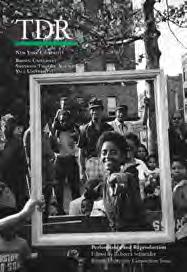
Computer Music Journal
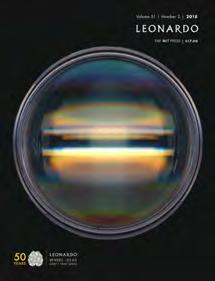
Douglas Keislar, editor
For more than four decades, Computer Music Journal has been the leading publication about computer music, concentrating fully on digital sound technology and all musical applications of computers. It is an essential resource for musicians, composers, scientists, engineers, computer enthusiasts, and anyone exploring the wonders of computergenerated sound.
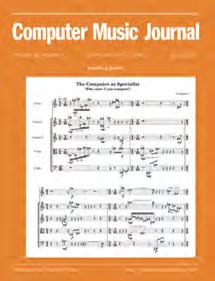
Quarterly, ISSN 0148-9267 | Spring/Summer/Fall/Winter 128 pp. per issue | 8 1/2 x 11, illustrated http://mitpressjournals.org/cmj
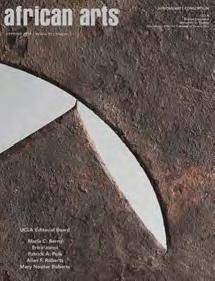
Leonardo/ Leonardo Music Journal
Roger F. Malina, executive editor Nicolas Collins, editor-in-chief
Leonardo is the leading international journal in the application of contemporary science and technology to the arts and music. The companion annual journal, Leonardo Music Journal (including Annual Audio Series), features the latest in music, multimedia art, sound science, and technology.
Six issues per year, ISSN 0024-094X | February/April/June/August/ October/December | 112 pp. per issue | 8 1/2 x 11, illustrated http://mitpressjournals.org/leon
Grey Room
Zeynep Çelik Alexander, Lucia Allais, Eric C.H. de Bruyn, Noam M. Elcott, Byron Hamann, John Harwood, Matthew C. Hunter, editors

Grey Room brings together scholarly and theoretical articles from the fields of architecture, art, media, and politics to forge a cross-disciplinary discourse uniquely relevant to contemporary concerns. Publishing some of the most interesting and original work within these disciplines, Grey Room has positioned itself at the forefront of the most current aesthetic and critical debates.
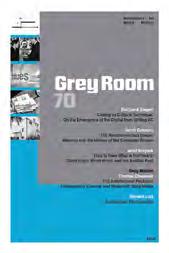
Quarterly, ISSN 1526-3819 | Winter/Spring/Summer/Fall 128 pp. per issue | 6 3/4 x 9 5/8, illustrated http://mitpressjournals.org/grey
Thresholds
Established in 1992, Thresholds is the annual peer-reviewed journal produced by the MIT Department of Architecture. Each independently themed issue features content from leading scholars and practitioners in the fields of architecture, art, and culture. The Thresholds advisory board, composed of internationally recognized figures in various fields of art culture, drives the development of each issue through intellectual support and the pursuit of high quality submissions from fine arts, design, graphics, media arts and sciences, film, photography, and more.
Annual | Founded: 1992 | ISSN 1091-711X | E-ISSN 2575-7338 mitpressjournals.org/thld
145 MITPRESS.MIT.EDU | FALL 2018 JOURNALS
arts & humanities arts &
NEW!
humanities
science and technology
Open Mind: Discoveries in Cognitive Science
 Richard N. Aslin, editor
Richard N. Aslin, editor
Open Mind provides a new venue for the highest quality, most innovative work in cognitive science, offering affordable open access publishing, concise and accessible articles, and quick turnaround times for authors. The journal covers the broad array of content areas within cognitive science using approaches from cognitive psychology, computer science and mathematical psychology, cognitive neuroscience and neuropsychology, comparative psychology and behavioral anthropology, decision sciences, and theoretical and experimental linguistics.
Open Access | Quarterly | February/May/August/November
170 pp. per issue | 8 1/2 x 11 | Founded: 2017 | E-ISSN: 2470-2986 mitpressjournals.org/opmi
Computational Psychiatry
Peter Dayan and Read Montague, editors
Computational Psychiatry publishes original research articles and reviews that involve the application, analysis, or invention of theoretical, computational, and statistical approaches to mental function and dysfunction. Topics include brain modeling over multiple scales and levels of analysis, and the use of these models to understand psychiatric dysfunction, its remediation, and the sustenance of healthy cognition through the lifespan. The journal also has a special interest in computational issues pertaining to related areas such as law and education.
Continuous Publication | Founded: 2017 | E-ISSN: 2397-6227 8 1/2 x 11 | mitpressjournals.org/cpsy
Network Neuroscience
Olaf Sporns, editor
Network Neuroscience features innovative scientific work that significantly advances our understanding of network organization and function in the brain across all scales, from molecules and neurons to circuits and systems.
Quarterly | E-ISSN 2472-1751 | Winter/Spring/Summer/Fall
330 pp. per issue | 8 1/2 x 11 | Founded: 2017 mitpressjournals.org/netn
economics | political science | international affairs | history
American Journal of Health Economics
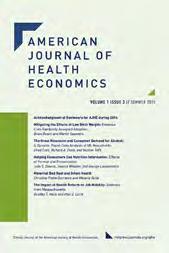
Frank Sloan, editor-in-chief
The American Journal of Health Economics (AJHE) provides a forum for the indepth analysis of institutional health care systems and individual health behaviors. Subjects of interest include the impact of the Affordable Care Act, pharmaceutical regulation, the rise of obesity, the influence of aging populations, and much more. The journal is published by the MIT Press for the American Society of Health Economists (ASHEcon).
Quarterly, ISSN 2332-3493 | Winter/Spring/ Summer/Fall 144 pp. per issue | 6 x 9 http://mitpressjournals.org/ajhe
International Security
Steven E. Miller, editor-in-chief Sean M. Lynn-Jones and Owen R. Coté Jr., editors
International Security publishes lucid, well-documented essays on the full range of contemporary security issues, including the growing importance of environmental, demographic, and humanitarian issues, and the rise of global terrorist networks.
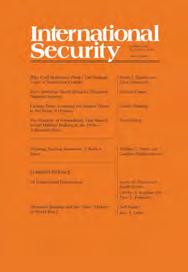
Quarterly, ISSN 0162-2889 | Summer/Fall/Winter/Spring 208 pp. per issue | 6 3/4 x 10 http://mitpressjournals.org/is Published by the MIT Press for the Belfer Center for Science and International Affairs, Harvard University
The Journal of Interdisciplinary History
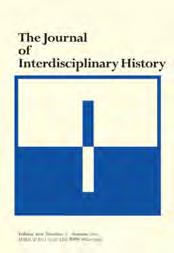
Robert I. Rotberg, Theodore K. Rabb, and Reed Ueda, editors
The Journal of Interdisciplinary History features substantive articles, research notes, review essays, and book reviews that combine the study of history, spanning all geographic areas and periods, with other scholarly disciplines.
Quarterly, ISSN 0022-1953 | Summer/Autumn/Winter/Spring 192 pp. per issue | 5 3/4 x 9 http://mitpressjournals.org/jih
FALL 2018 | MITPRESS.MIT.EDU 146
JOURNALS
MITCogNet
From the MIT Press
CogNet is an indispensable resource for cutting-edge primary research on the human mind. With an expanding collection of nearly 800 books, 6 journals, and 12 major reference works, CogNet provides unparalleled access to over 435,000 pages of DRM-free content.
MITCogNet
From the MIT Press
Find out for yourself what scholars at Caltech, Princeton, Tufts, and the National Institutes of Health already know: CogNet is the essential tool for research in the brain and cognitive sciences. With DRM-free content, COUNTER4 usage reporting, and a beautiful responsive website.
cognet.mit.edu
A dynamic space where creative communities connect, linking the arts and science and technology, ARTECA is a curated collection, housing thousands of pages of DRM-free book and journal content from the MIT Press. This includes nearly 200 books and 500 journal issues from 4,000 contributors, with new content added regularly.
ARTECA will become a space for artists, practitioners, researchers, and educators to store, explore, and discuss their content—a space to archive work, gray literature, ephemera, and more.
arteca.mit.edu
Stay in touch with the MIT Press
Newsletter
Sign up for our e-newsletter to hear about new books and to receive exclusive discounts and offers: mitpress.mit.edu/ subscribe
Podcast
Hear directly from our authors through our Author Podcasts: mitpress.mit.edu/multimedia


Blog
The MIT PressLog chronicles news about MIT Press authors and books: mitpress.mit.edu/ blog
BITS
Read excerpts from influential MIT Press books on subjects ranging from gaming to sustainability, from virtual communities to energy, from economics to architecture at the MIT Press BITS: mitpress.mit.edu/BITS
follow us




@mitpress
mitpress.mit.edu
THE DIGITAL MIT PRESS
147 MITPRESS.MIT.EDU | FALL 2018
NORTH AMERICAN BOOKSELLERS
Orders should be sent to:
The MIT Press c/o TriLiteral LLC 100 Maple Ridge Drive Cumberland, RI 02864-1769 USA
For Orders and Customer Service: Tel: 800 405 1619 | Fax: 800 406 9145
E-mail Orders: orders@triliteral.org
E-mail Customer Service: customer.care@triliteral.org Online: http://mitpress.mit.edu
For inquiries regarding sales representation in the United States and Canada, contact: David Goldberg Sales Manager
The MIT Press
One Rogers Street Cambridge, MA 02142-1209 USA
Tel: 617 253 8838 | Fax: 617 253 1709 e-mail: mitpress_sales@mit.edu
For inquiries regarding bulk purchases in the United States, contact: Christopher Eyer Sales Coordinator Tel: 617 258 0584 | Fax: 617 253 1709 e-mail: cweyer@mit.edu
Return Policy:
The return policy of our distribution center is: returned books must be in resalable condition. No permission is required, but invoice information must be provided or a penalty discount will be used. No returns accepted 18 months from invoice date.
US booksellers may send returns to: MIT Press Returns c/o TriLiteral LLC 100 Maple Ridge Drive Cumberland, RI 02864-1769 USA
Canadian booksellers may send returns to: TriLiteral c/o APC 45 Mural Street Richmond Hill ON L48 1J4 Canada
Individuals:
Books from the MIT Press are available at fine booksellers worldwide. Individuals who wish to order directly from the publisher may do so through our website or by calling our toll-free number.
The MIT Press Guarantee:
If for any reason you are not satisfied with a book you receive, return it to us within 10 days and we will promptly refund your payment.
Examination copies are available at the discretion of the MIT Press to qualified instructors of appropriate courses.
Please address inquiries to: Michelle Pullano Textbook Manager
Tel: 617 253 3620 | Fax: 617 253 1709 e-mail: mitpress_textbooks@mit.edu
Review Copy Requests:
Please submit review copy requests on the letterhead of the publication to the Publicity Department. Fax: 617 253 1709 e-mail: mitpress-publicity@mit.edu
Subsidiary and International Rights:
For information on subsidiary and international rights, please contact: Bill Smith Director of Business Development One Rogers Street Cambridge, MA 02142-1209 USA
Tel: 617 253 0629 | Fax: 617 253 1709 smithwmj@mit.edu
For permissions, please contact: Pam Quick e-mail: quik@mit.edu
Publication Dates:
Books will be shipped 2 to 4 weeks prior to publication date listed in catalog.
Discount Codes: T: Trade Discount S: Short Discount X: Text Discount
Prices are subject to change without notice. Contact the sales department at the MIT Press for discount schedules. The MIT Press Agency Plan offers special discounts to booksellers who stock scholarly and professional books. For details, contact the Sales Manager, Tel: 617 253 8838, Fax: 617 253 1709, e-mail: mitpress_sales@mit.edu
FALL 2018 | MITPRESS.MIT.EDU 148 JOURNALS ORDER INFORMATION | BOOK DIVISION
INTERNATIONAL SALES AND PROMOTION
U.S. Office: Asia, Australia, New Zealand, Central America, Mexico, South America
Address for information: Jessica Lawrence-Hurt International Sales Manager The MIT Press One Rogers Street, Cambridge, MA 02142-1209 USA Tel: 617 258 0582 | Fax: 617 253 1709 e-mail: jclh@mit.edu
Address for orders: The MIT Press c/o Triliteral LLC 100 Maple Ridge Drive Cumberland, RI 02864-1769 USA Tel: 401 531 2800 | Fax: 401 531 2802 e-mail: orders@triliteral.org
European Sales Office: United Kingdom, Continental Europe, Eire, India, Pakistan, the Middle East, Israel, Africa
Andrew Brewer, Managing Director University Press Group 57 Cobnar Road, Sheffield, S8 8QA, United Kingdom Tel: 44 0 114 274 0129 | Mobile: 44 0 7967 031856 e-mail: andrew.brewer@virgin.net
Address for information: Lois Edwards, Business Manager University Press Group LEC1 New Era Estate Oldlands Way, Bognor Regis West Sussex, PO22 9NQ, United Kingdom Tel: 44 0 1243 842165 | Fax: 44 0 1243 842167 e-mail: lois@upguk.com
Address for orders: John Wiley & Sons, Ltd. European Distribution Centre New Era Estate Oldlands Way, Bognor Regis West Sussex, PO22 9NQ, United Kingdom
Overseas orders: Tel: 44 1243 843294
Dial-free orders in UK only: Tel: 0800 243407 | Fax: 44 0 1243 843296
E-mail Customer Service: customer@wiley.com
European Marketing Office: For publicity and promotion inquiries contact: The MIT Press Suite 2, 1 Duchess Street, London, W1W 6AN, United Kingdom Tel: 44 0 207 306 0603 e-mail: info@mitpress.org.uk
REPRESENTATION AND DISTRIBUTION
Australia, New Zealand: Representation and Distribution Footprint Books 4/8 Jubilee Avenue Warriewood NSW 2102 Australia
Tel: 61 02 9997 3973 | Fax: 61 02 9997 3185 e-mail: info@footprint.com.au www.footprint.com.au
Canada: Representation
Mical Moser Tel: 718 781 2770 | Fax: 514 224 3412 email: micalmoser@me.com
China: Representation
Ms. Wei Zhao Everest Intl Publishing Services 1-1-2002 Wang Jing SOHO No. 1 East Futong Avenue Chaoyang District Beijing 100102 Tel: (86 10) 5707 6180 e-mail: wzbooks@aol.com or wzbooks@163.com Europe: Austria, Croatia, Czech Republic, Germany, Greece, Hungary, Netherlands, Portugal, Russia, Slovenia, Spain: Representation
Dominique Bartshukoff University Press Group 2 Place d’Anvers Paris, 75009, France Tel: 33 1 44 63 02 41 e-mail: dsbartshukoff@gmail.com
Publication in the United Kingdom, Continental Europe, Eire, India, Pakistan, the Middle East, Israel, and Africa will be approximately one month later than the date given for each title in the catalog. Prices are subject to change without notice.
For information about examination copy requests go to: http://mitpress.mit.edu/services/instructors
149 MITPRESS.MIT.EDU | FALL 2018 149 ORDER INFORMATION | BOOK DIVISION
Europe: Belgium, France, Italy, Poland, Scandinavia, Switzerland: Representation
Peter Jacques
University Press Group 278 Manchester Road, Isle of Dogs London, E14 3HW
United Kingdom
Tel: +44 7966 288593 e-mail: peter@jjacques.demon.co.uk
Europe: UK and Eire: Sales Manager
Ben Mitchell
University Press Group
62 Fairford House, Kennington Lane London, SE11 4HR United Kingdom
Tel: 44 0 207 735 7455 | Mobile: 44 0 7766 913593 e-mail: ben.mitchell.upg@gmail.com
Hong Kong and Japan: Representation
Rockbook
Gilles Fauveau Exprime 5F 10-10 Ichibancho Chiyoda-ku 102-0082 Tokyo Japan Tel: 81 (0) 9039624650 e-mail: gfauveau@rockbook.net
India, Pakistan, Nepal, Bhutan, Sri Lanka, Bangladesh: Representation
Rajeev Das
Senior Manager (Sales & Product)
Penguin Random House India Pvt.Ltd. 7th Floor, Infinity Tower C DLF Cyber City, Gurgaon – 122 002, Haryana India
Tel: +91-124-4785615 Mobile: +91-97400 57900 Email: rdas@penguinrandomhouse.in
Latin America: Representation
James Papworth
Itsabook 20 Monro Drive Guildford GU2 9PS United Kingdom Tel: +44 7802848778 e-mail: papworthjames@gmail.com
Middle East: Algeria, Cyprus, Israel, Jordan, Malta, Morocco, Palestine, Tunisia, Turkey: Representation
Claire de Gruchy, Avicenna Partnership Ltd. P.O. Box 501, Witney, Oxfordshire OX28 9JL
United Kingdom
Tel: 44 0 7771 887843 | Fax: 44 0 1865 882966 e-mail: claire_degruchy@yahoo.co.uk
Middle East: Bahrain, Egypt, Iran, Iraq, Kuwait, Lebanon, Libya, Sultanate of Oman, Qatar, Saudia Arabia, Syria, UAE: Representation
Bill Kennedy, Avicenna Partnership Ltd. P.O. Box 501, Witney, Oxfordshire OX28 9JL
United Kingdom
Tel: +44 7802 244457 | Fax: 44 1387 247375 e-mail: AvicennaBK@gmail.com
SE Asia: Brunei, Cambodia, Indonesia, Laos, Malaysia, Myanmar, Philippines, Singapore, Thailand, Vietnam: Representation
Ian Pringle, APD Singapore PTE LTD 52 Genting Lane #06-05 Ruby Land Complex 1 Singapore 349560 Tel: 65 6749 3551 | Fax: 65 6749 3552 e-mail: ian@apdsing.com www.apdsing.com
South Korea: Representation Se-Yung Jun and Min-Hwa Yoo ICK (Information and Culture Korea) 49, Donggyo-Ro 13-Gil, Mapo-Gu Seoul South Korea 03997 Tel: 82 2 3141 4791 | Fax: 82 2 3141 7733 e-mail: cs.ick@ick.co.kr
Taiwan: Representation Chiafeng Peng BK Norton 5F, 60, Roosevelt Rd. Sec. 4 Taipei 100 Taiwan Tel: 886 2 6632 0088 | Fax: 886 2 6632 9772 e-mail: chiafeng@bookman.com.tw
FALL 2018 | MITPRESS.MIT.EDU 150 ORDER INFORMATION | BOOK DIVISION
THE MIT PRESS IS REPRESENTED THROUGHOUT THE WORLD BY THE FOLLOWING OUTSTANDING RIGHTS REPRESENTATION:
Agência Riff | Brazil
Joao Paulo Riff | joaopaulo@agenciariff.com.br
Corto Literary Agency | Bulgaria, Serbia, Croatia, Macedonia, Czech Republic, Slovenia, Slovakia, and Hungary
Diana Matulić | diana@cortoliterary.com
Bardon Media Agency | China
Ivan Zhang | ivan@bardonchinese.com
Bardon Media Agency | Taiwan
Luisa Yeh | luisa@bardonchinese.com
Anna Jarota Agency | France
Anna Jarota | ajarot a@ajafr.com
The Berlin Agency | Germany
Frauke Jung-Lindemann | jung-lindemann@t-online.de
O.A. Literary Agency | Greece
Michael Avramides | amichael@otenet.gr
Maxima Creative Agency | Indonesia
Santo Manurung | santo@cbn.net.id
Deborah Harris Agency | Israel
Efrat Lev | efrat@thedeborahharrisagency.com
Reiser Literary Agency | Italy
Roberto Gilodi | roberto.gilodi@reiseragency.it
The English Agency | Japan
Tsutomu Yawata | tsutomu_yawata@eaj.co.jp
Korea Copyright Center | Korea
Korea | Joeun Lee, jelee@kccseoul.com
Sebes & Bisseling Literary Agency | Netherlands, Sweden, Finland, Norway, Denmark
Stéphanie Nooteboom | nooteboom@sebes.nl
Graal Ltd. | Poland
Lukasz Wrobel | lukasz.wrobel@graal.com.pl
Ilidio Matos Agencia Literaria | Portugal
Gonçalo Gama Pinto, goncalo.gamapinto@ilidiomatos.com
The Kessler Agency | Romania
Roxana Sahanagiu | roxana@kessler-agency.ro
Alexander Korzhenevski Agency (AKA) | Russia
Igor Korzhenevski | igor.akagency@gmail.com
Agencia Literaria Carmen Balcells | Spain
Ivette Antoni | i.antoni@ag-balcells.com
The Kayi Agency | Turkey
Fusun Kayi | fusun@nkliterar yagency.com
For all other translation rights queries, please contact:
Bill Smith
Director of Business Development
The MIT Press
One Rogers Street, Cambridge MA 02142-1209
Tel: 617-253-0629
smithwmj@mit.edu
Killian Press provides print and e-book production and distribution services for self-published works by MIT faculty and alumni.

Dr. James R. Killian (1904–1988) was an MIT alumnus who became the tenth president of MIT (1948–1959) and then chairman of the MIT Corporation. In 1932 he helped found the Technology Press, now the MIT Press.
Nanjing Never Cries A Novel Hong Zheng

Set in the city of Nanjing during the time of the Sino-Japanese war (1937–1945), this novel tells the story of four people caught up in the violence and tumult of these years: John Winthrop and his MIT classmate, the brilliant Chinese physicist Calvin Ren (Ren Kewen); Judy, Calvin’s Chinese-American wife; and the beautiful and determined young woman Chen May.
Vivid and disturbing, Nanjing Never Cries offers a compelling story of the horror of war and the power of love and friendship.
Hong Zheng began his academic career as an Assistant Professor at MIT in 1965 and became a full Professor at MIT in 1969. He is a member of the Academia Sinica. His work with T. T. Wu on high energy scattering was mentioned on the front page of the New York Times in March 1973. He is working on the theory of dark matter.
$29.95T/£24.00 cloth 978-1-944347-00-0
151 MITPRESS.MIT.EDU | FALL 2018
KILLIAN PRESS
Ackema, Features of Person 120
After Kathy Acker, Kraus 72
Agrobiodiversity, Zimmerer 111
Ahn, Principles of Commodity Economics and Finance 104
AI Advantage, Davenport 14 Ai Weiwei, Ai 19
Ai, Ai Weiwei 19
Aklin, Escaping the Energy Poverty Trap 126 Alice and Bob Meet the Wall of Fire, Lin 35
Allocation in Networks, Hougaard 104
Altered States of Consciousness, Wittmann 27
An Unfinished Encyclopedia of Scale Figures without Architecture, Meredith 53 Analyzing Memory, Chechile 127
Anxiety and the Equation, Johnson 45 Aoun, Robot-Proof 131
Arafat, Search Foundations 116 Architecture and Action, Yoon 66
Archived Web, Brügger 119
Atari Age, Newman 135
Atlas of Poetic Botany, Hallé 7 Atom, Challoner 18
Autobiography of a Transgender Scientist, Barres 9 Badiou, German Philosophy 51
Baggio, Meaning in the Brain 96
Balboa, The Paradox of Scale 110 Bale, Phonology 121
Barandiarán, Science and Environment in Chile 112
Barr, The Problem With Software 89 Barres, The Autobiography of a Transgender Scientist 9
Batty, Inventing Future Cities 29
Benasich, Emergent Brain Dynamics 98 Berardi, Breathing 76
Berger, Extremism 31
Bernardi, The Inversion Factor 138 Bertaud, Order without Design 107 Beyond the Self, Ricard 130
Bierut, Culture Is Not Always Popular 12 Bits to Bitcoin, Day 5 Blanchard, Progress and Confusion 137 Blockchain and the New Architecture of Trust, Werbach 43 Blockheads!, Pautz 123
Bloomfield, Dirty Gold 140 Blueprint, Plomin 3 Bodies Beneath, Fowler 85
Body Populace, Hartmann 115
Bollyky, Plagues and the Paradox of Progress 1 Bomb Culture, Nuttall 80 Book from the Ground, Xu 130
Borgerson, Designed for Hi-Fi Living 129 Brams, Divine Games 108 Breathing, Berardi 76
Broadcast 41, Stabile 69
Brodell, Butch Heroes 8
Brown, Writers Under Surveillance 21
Bruce Nauman, Walsh 63
Brügger, The Archived Web 119 Building the Intentional University, Kosslyn 142 Butch Heroes, Brodell 8
Cappuccio, Handbook of Embodied Cognition and Sport Psychology 97
Caradec, Dictionary of Gestures 11
Carbon Capture, Herzog 32
Cardinals, Ionin 120
Ceruzzi, GPS 31
Challoner, The Atom 18
Changing Minds Changing Tools, Kapatsinski 102
Chechile, Analyzing Memory 127
Chinese Pleasure Book, Nylan 77
Chinese Typewriter, Mullaney 132
Choucri, Cyberspace and International Relations 126
Clark, Designing an Internet 47 Clarke, Model Checking, second edition 100 Consciousness Demystified, Feinberg 44
Contact Warhol, Phelan 30
Coping with Illness Digitally, Rains 117 Cost-Benefit Revolution, Sunstein 2 Craft Weed, Stoa 25
Craft, Harrod 62
Culture Is Not Always Popular, Bierut 12 Cyberspace and International Relations, Choucri 126
Danaher, Robot Sex 133
Davenport, The AI Advantage 14 Davis, New Methuselahs 124
Day, Bits to Bitcoin 5 de Silva, Perspecta 51 55
Dead Fashion Girl, Vermorel 79
Death Algorithm and Other Digital Dilemmas, Simanowski 49 Decamous, Invisible Colors 48
Deep Learning Revolution, Sejnowski 20 Deming, Out of the Crisis, 122
Deming, The New Economics for Industry, Government, Education, third edition 122 DeNicola, Understanding Ignorance 141
Design Unbound, Volume 1: Designing for Emergence, Pendleton-Jullian 40
Design Unbound, Volume 2: Ecologies of Change, Pendleton-Jullian 40
Designed for Hi-Fi Living, Borgerson 129
Designing an Internet, Clark 47 Designing with the Body, Höök 103
Di Paolo, Linguistic Bodies 96
Dialogues, Johnson 128
Díaz, Evil Empire 67
Dictionary of Gestures, Caradec 11
Digital Economies at Global Margins, Graham 118 Digital Lifeline?, Maitland 116 Dimensionism, Malloy 58
Dirty Gold, Bloomfield 140
Discursive Design, Tharp 41 Dissidence, Leduc 59
Divine Games, Brams 108
Documenting Aftermath, Finn 117 Economics of Global Business, Zeidan 108 Economics of Philanthropy, Scharf 105
Economics of Regulation and Antitrust, fifth edition, Viscusi 106 Electric Light, Isenstadt 54
Emanuel, What We Know about Climate Change, updated edition 36
Emergent Brain Dynamics, Benasich 98 Emre, Once and Future Feminist 68 Energy and Civilization, Smil 129 Energy at the End of the World, Watts 91 Eriksson, Spotify Teardown 38
Erlanger, Garage 23
Escaping the Energy Poverty Trap, Aklin 126 Evil Empire, Díaz 67
Extremism, Berger 31
Fantasies of the Library, Springer 136 Fascination, Killian 75
Fascist Pigs, Saraiva 140
Faster, Smarter, Greener, Sumantran 137 Faunus, Machin 81
Features of Person, Ackema 120
Feinberg, Consciousness Demystified 44
Finn, Documenting Aftermath 117
Finn, What Algorithms Want 134
Foolproof, and Other Mathematical Meditations, Hayes 136
Forbus, Qualitative Representations 95
Fowler, The Bodies Beneath 85
Frankel, Picturing Science and Engineering 13
Friedman, The Little Typer 99
Gallagher, Titans of the Climate 111
Gaming the Iron Curtain, Švelch 114
Ganz Blythe, Why Art Museums? 61
Garage, Erlanger 23
Garcia, School Choice 33
Gehl, Weaving the Dark Web 87
Geissler, Seasonal Associate 74
Genius Checklist, Simonton 6
German Philosophy, Badiou 51
Gerrish, How Smart Machines Think 17
Getting Through, Kreuz 133
Ghose, Tap 138
Global Cities, Gottlieb 141
Gluck, Interactive Task Learning 102
Gottlieb, Global Cities 141
GPS, Ceruzzi 31
Graham, Digital Economies at Global Margins 118
Gunkel, Robot Rights 88
Hailey, Slab City 24
Hallé, Atlas of Poetic Botany 7
Handbook of Embodied Cognition and Sport Psychology, Cappuccio 97
Haptics, Jones 32
Harle, Of Mud and Flame 83
Harrod, Craft 62
Hartmann, The Body Populace 115
Hartnoll, Holographic Quantum Matter 125 Hayes, Foolproof, and Other Mathematical Meditations 136
Herzog, Carbon Capture 32
Hirstein, Responsible Brains 125
Holmes, Mismatch 16
Holographic Quantum Matter, Hartnoll 125
Holzmann, The Taxation of Pensions 109
Höök, Designing with the Body 103
Hougaard, Allocation in Networks 104
How History Gets Things Wrong, Rosenberg 28
How Smart Machines Think, Gerrish 17
Howard Hiatt, Rosenberg 93
Howard, The Jean Freeman Gallery Does Not Exist 56
Inclusive Academy, Stewart 10
Indiana, Vile Days 73
Infanti, Our Selfish Tax Laws 109
Innovating, Perez-Breva 134
Interactive Task Learning, Gluck 102
Introduction to AI Robotics, second edition, Murphy 101
Introductory Course in Computational Neuroscience, Miller 98
Inventing Future Cities, Batty 29
Inventive Minds, Minsky 92
Inversion Factor, Bernardi 138
Invisible Colors, Decamous 48
Ionin, Cardinals 120
Isenstadt, Electric Light 54
Jakobson, Remarks on the Phonological Evolution of Russian in Comparison with the Other Slavic Languages 119
Jean Freeman Gallery Does Not Exist, Howard 56
Johnson, Anxiety and the Equation 45
Johnson, The Dialogues 128
Jones, Haptics 32
Jørgensen, Transgression in Games and Play 114
Kaji-O'Grady, Laboratory Lifestyles 46
Kapatsinski, Changing Minds Changing Tools 102
Kemp-Welch, Networking the Bloc 60
Kepner, Mathematics of Big Data 121
Killian, Fascination 75
Kosslyn, Building the Intentional University 142
INDEX 152 FALL 2018 | MITPRESS.MIT.EDU
Kraus, After Kathy Acker 72
Kraus, Social Practices 71
Kreuz, Getting Through 133
Kronfeldner, What's Left of Human Nature? 123
Laboratory Lifestyles, Kaji-O'Grady 46
Leading from Within, Steidle 139 Lectures on Microeconomics, Pancs 107
Leduc, Dissidence 59
Lee, Plato and the Nerd 135
Left to Our Own Devices, Morris 22
Liberty Realm, Ward 82
Lifelong Kindergarten, Resnick 131 Lin, Alice and Bob Meet the Wall of Fire 35
Lin, The Prime Number Conspiracy 34
Linguistic Bodies, Di Paolo 96
Little Typer, Friedman 99
Ljungqvist, Recursive Macroeconomic Theory, fourth edition 105
Lynch, Urgency in the Anthropocene 113 Machin, Faunus 81
Maintenance Architecture, Sample 139 Maitland, Digital Lifeline? 116
Malloy, Dimensionism 58
Many Splendored Things, Paasonen 70
Martin, Meaning Of Language, second edition 124
Mathematics of Big Data, Kepner 121
Meaning in the Brain, Baggio 96
Meaning Of Language, second edition, Martin 124
Meredith, An Unfinished Encyclopedia of Scale Figures without Architecture 53
Miller, An Introductory Course in Computational Neuroscience 98
Million Years of Music, Tomlinson 78
Minsky, Inventive Minds 92 Mismatch, Holmes 16
MIT Sloan Management Review, When Innovation Moves at Digital Speed 39 Model Checking, second edition, Clarke 100 Modern HF Signal Detection and Direction-Finding, Sklar 110
Morris, Left to Our Own Devices 22
Mullaney, The Chinese Typewriter 132
Munsky, Quantitative Biology 94
Murphy, Introduction to AI Robotics, second edition 101
Murphy, Robotics Through Science Fiction 101
Networking the Bloc, Kemp-Welch 60
Neufeld, Spaceflight 33
New Economics for Industry, Government, Education, third edition, Deming 122
New Methuselahs, Davis 124
Newman, Atari Age 135
Northoff, The Spontaneous Brain 97
Numbered Lives, Wernimont 103
Nuttall, Bomb Culture 80
Nylan, The Chinese Pleasure Book 77
Of Mud and Flame, Harle 83
Once and Future Feminist, Emre 68
Order without Design, Bertaud 107
Our Selfish Tax Laws, Infanti 109
Out of the Crisis, Deming 122
Overgrown, Raxworthy 37
Paasonen, Many Splendored Things 70
Palfrey, Safe Spaces, Brave Spaces 132
Pancs, Lectures on Microeconomics 107
Paradox of Scale, Balboa 110
Pautz, Blockheads! 123
Pendleton-Jullian, Design Unbound, Volume 1: Designing for Emergence 40
Pendleton-Jullian, Design Unbound, Volume 2: Ecologies of Change 40
Perez-Breva, Innovating 134 Perspecta 51, de Silva 55
Phelan, Contact Warhol 30
Phonology, Bale 121
Picturing Science and Engineering, Frankel 13
Plagues and the Paradox of Progress, Bollyky 1 Plato and the Nerd, Lee 135
Playing Smart, Togelius 42 Plomin, Blueprint 3
Plotnick, Power Button 90
Politics of Mass Digitization, Thylstrup 118
Portrait of the Manager as a Young Author, Schönthaler 52
Power Button, Plotnick 90
Prime Number Conspiracy, Lin 34
Principles of Commodity Economics and Finance, Ahn 104
Problem With Software, Barr 89 Progress and Confusion, Blanchard 137 Promises of the Political, Swyngedouw 127 Pursell, Technology in America, third edition 115
Qualitative Representations, Forbus 95
Quantitative Biology, Munsky 94
Rains, Coping with Illness Digitally 117 Randerson, Weather as Medium 94
RATED SAVX, Savage Pencil 84
Raxworthy, Overgrown 37
Recursive Macroeconomic Theory, fourth edition, Ljungqvist 105
Reinforcement Learning, second edition, Sutton 100
Remarks on the Phonological Evolution of Russian in Comparison with the Other Slavic Languages, Jakobson 119
Resnick, Lifelong Kindergarten 131
Responsible Brains, Hirstein 125
Ricard, Beyond the Self 130 Richon, Walker Evans 65
Robot Rights, Gunkel 88
Robot Sex, Danaher 133
Robot-Proof, Aoun 131
Robotics Through Science Fiction, Murphy 101
Rosenberg, How History Gets Things Wrong 28
Rosenberg, Howard Hiatt 93
Russian Dada 1914–1924, Tupitsyn 57
Safe Spaces, Brave Spaces, Palfrey 132
Sample, Maintenance Architecture 139
Saraiva, Fascist Pigs 140
Savage Pencil, RATED SAVX 84
Scharf, The Economics of Philanthropy 105 Schönthaler, Portrait of the Manager as a Young Author 52
School Choice, Garcia 33 Science and Environment in Chile, Barandiarán 112
Search Foundations, Arafat 116 Seasonal Associate, Geissler 74
Sejnowski, The Deep Learning Revolution 20 Shepherd, Spontaneous Venturing 95 Sherrie Levine, Singerman 64
Simanowski, The Death Algorithm and Other Digital Dilemmas 49
Simanowski, Waste 50
Simonton, The Genius Checklist 6
Singerman, Sherrie Levine 64
Sklar, Modern HF Signal Detection and Direction-Finding 110 Slab City, Hailey 24
Smil, Energy and Civilization 129 Smith, The Tales Teeth Tell 15 Social Practices, Kraus 71 Spaceflight, Neufeld 33
Spontaneous Brain, Northoff 97 Spontaneous Venturing, Shepherd 95 Spotify Teardown, Eriksson 38
Springer, Fantasies of the Library 136
Stabile, The Broadcast 41 69
Steidle, Leading from Within 139
Stewart, An Inclusive Academy 10
Stoa, Craft Weed 25
Sumantran, Faster, Smarter, Greener 137 Sunstein, The Cost-Benefit Revolution 2 Sutton, Reinforcement Learning, second edition 100
Švelch , Gaming the Iron Curtain 114
Swyngedouw, Promises of the Political 127
Tales Teeth Tell, Smith 15
Tap, Ghose 138
Taxation of Pensions, Holzmann 109
Technology in America, third edition, Pursell 115
Tharp, Discursive Design 41
There is a Graveyard That Dwells in Man, Tibet 86
Thylstrup, The Politics of Mass Digitization 118
Tibet, There is a Graveyard That Dwells in Man 86
Titans of the Climate, Gallagher 111
Togelius, Playing Smart 42
Tomlinson, A Million Years of Music 78
Transgression in Games and Play, Jørgensen 114 Tupitsyn, Russian Dada 1914–1924 57
Twitterbots, Veale 4
Understanding Ignorance, DeNicola 141
Urgency in the Anthropocene, Lynch 113 Veale, Twitterbots 4
Vermorel, Dead Fashion Girl 79
Vickery, Worried About the Wrong Things 142
Vile Days, Indiana 73
Viscusi, Economics of Regulation and Antitrust, fifth edition 106
Walker Evans, Richon 65 Walsh, Bruce Nauman 63 Ward, Liberty Realm 82 Waste, Simanowski 50
Watts, Energy at the End of the World 91 Weather as Medium, Randerson 94 Weaving the Dark Web, Gehl 87
Werbach, The Blockchain and the New Architecture of Trust 43
Wernimont, Numbered Lives 103
What Algorithms Want, Finn 134
What We Know about Climate Change, updated edition, Emanuel 36
What's Left of Human Nature?, Kronfeldner 123 When Innovation Moves at Digital Speed, MIT Sloan Management Review 39 Why Art Museums?, Ganz Blythe 61
Wittmann, Altered States of Consciousness 27 Wolff, You'll see this message when it is too late 26
Worried About the Wrong Things, Vickery 142 Writers Under Surveillance, Brown 21 Xu, Book from the Ground 130
Yoon, Architecture and Action 66 You'll see this message when it is too late, Wolff 26
Zeidan, Economics of Global Business 108 Zimmerer, Agrobiodiversity 111
INDEX 153 MITPRESS.MIT.EDU | FALL 2018
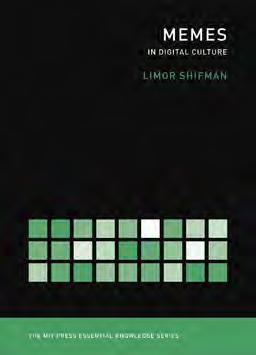

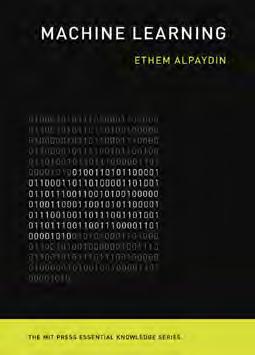
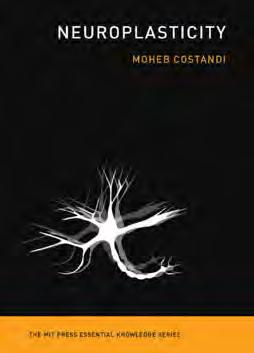

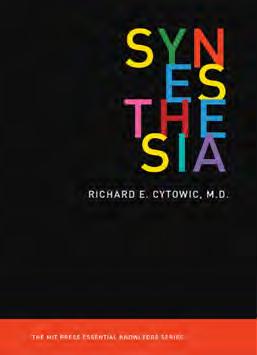
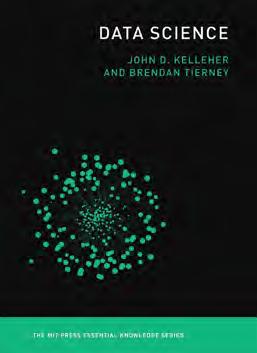

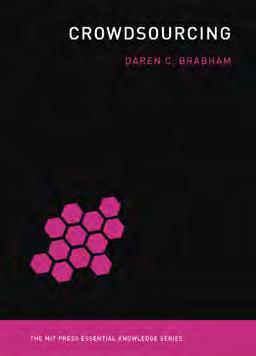


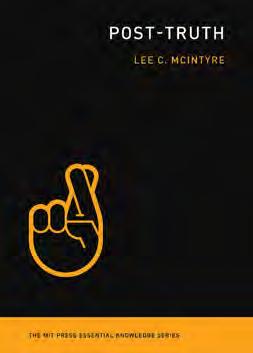
154 FALL 2018 | MITPRESS.MIT.EDU TRADE THE MIT PRESS ESSENTIAL KNOWLEDGE SERIES
Machine Learning
Ethem Alpaydin
$15.95T/£11.95 paper 978-0-262-52951-8
Free Will
Mark Balaguer
$15.95T/£11.95 paper 978-0-262-52579-4
The Book
Amaranth Borsuk
$15.95T/£11.95 paper 978-0-262-53541-0
Crowdsourcing
Daren C. Brabham
$15.95T/£11.95 paper 978-0-262-51847-5
Information and Society
Michael Buckland
$15.95T/£11.95 paper 978-0-262-53338-6
Computing
Paul E. Ceruzzi
$15.95T/£11.95 paper 978-0-262-51767-6
Information and the Modern Corporation
James W. Cortada $15.95T/£11.95 paper 978-0-262-51641-9
Neuroplasticity
Moheb Costandi
$15.95T/£11.95 paper 978-0-262-52933-4
Paradox Margaret Cuonzo
$15.95T/£11.95 paper 978-0-262-52549-7
Synesthesia
Richard E. Cytowic, M.D. $15.95T/£11.95 paper 978-0-262-53509-0
The Internet of Things
Samuel Greengard
$15.95T/£11.95 paper 978-0-262-52773-6
MOOCs
Jonathan Haber
$15.95T/£11.95 paper 978-0-262-52691-3
Auctions
Timothy P. Hubbard and Harry J. Paarsch
$15.95T/£11.95 paper 978-0-262-52853-5
Robots
John Jordan
$15.95T/£11.95 paper 978-0-262-52950-1
Data Science
John D. Kelleher and Brendan Tierney
$15.95T/£11.95 paper 978-0-262-53543-4
Post-Truth
Lee McIntyre
$15.95T/£11.95 paper 978-0-262-53504-5
The Future
Nick Montfort
$15.95T/£11.95 paper 978-0-262-53481-9
Self-Tracking
Gina Neff and Dawn Nafus $15.95T/£11.95 paper 978-0-262-52912-9
Understanding Beliefs
Nils J. Nilsson
$15.95T/£11.95 paper 978-0-262-52643-2
Intellectual Property Strategy John Palfrey
$15.95T/£11.95 paper 978-0-262-51679-2
Machine Translation
Thierry Poibeau
$15.95T/£11.95 paper 978-0-262-53421-5
Metadata
Jeffrey Pomerantz
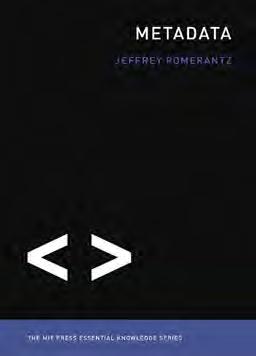
$15.95T/£11.95 paper 978-0-262-52851-1
Sustainability
Kent E. Portney
$15.95T/£11.95 paper 978-0-262-52850-4
Waves
Fredric Raichlen
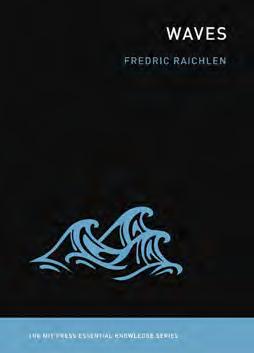
$15.95T/£11.95 paper 978-0-262-51823-9
Cloud Computing Nayan B. Ruparelia $15.95T/£11.95 paper 978-0-262-52909-9
The Technological Singularity Murray Shanahan
$15.95T/£11.95 paper 978-0-262-52780-4
Memes in Digital Culture
Limor Shifman
$15.95T/£11.95 paper 978-0-262-52543-5
Open Access Peter Suber $15.95T/£11.95 paper 978-0-262-51763-8
The Conscious Mind Zoltan Torey $15.95T/£11.95 paper 978-0-262-52710-1
The Mind–Body Problem
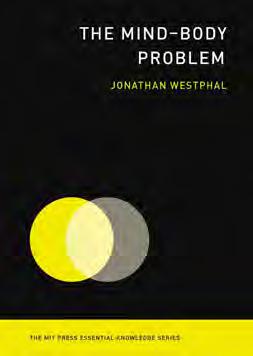
Jonathan Westphal
$15.95T/£11.95 paper 978-0-262-52956-3
155 MITPRESS.MIT.EDU | FALL 2018
TRADE THE MIT PRESS ESSENTIAL KNOWLEDGE SERIES

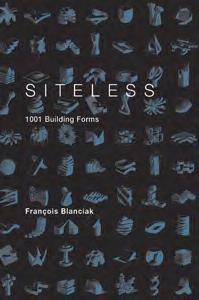




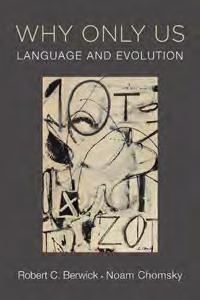
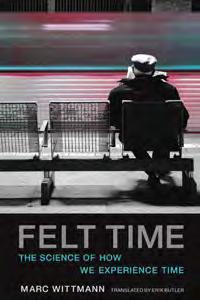
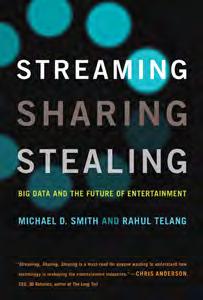
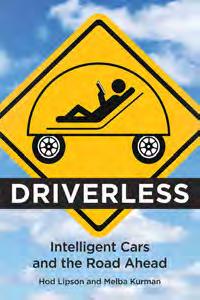
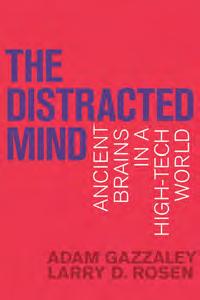

FALL 2018 | MITPRESS.MIT.EDU 156 JOURNALS PAPERBACK HIGHLIGHTS $15.95T 978-1-58435-034-7 $17.95T/£13.99 paper 978-0-262-53443-7 $17.95T/£13.99 paper 978-0-262-53447-5 $33.95T/£27.00 paper 978-0-262-73154-6 $18.95T/£14.99 paper 978-0-262-02630-7 $15.95T/£12.99 paper 978-0-262-53354-6 19.95T/£14.99 paper 978-0-262-53452-9 $16.95T/£13.99 paper 978-0-262-52520-6 $16.95T/£13.99 paper 978-0-262-52548-0 $15.95T/ £12.99 paper 978-0-262-53349-2 $17.95T/£13.99 paper 978-0-262-52996-9 $16.95T paper 978-0-262-53519-9


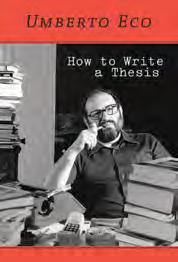


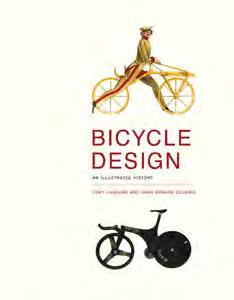



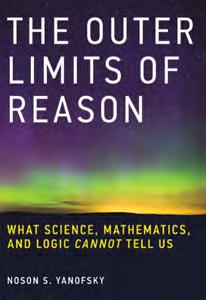


157 MITPRESS.MIT.EDU | FALL 2018 PAPERBACK HIGHLIGHTS $16.95T/£13.99 paper 978-0-262-53350-8 $20.95T/£16.99 paper 978-0-262-52713-2 $25.95T/£20.00 paper 978-0-262-68150-6 $28.95T/£23.00 paper 978-0-262-61106-0 $19.95T/£14.99 paper 978-0-262-52984-6 $16.95T/£13.99 paper 978-0-262-53355-3 $17.95T paper 978-0-262-53341-6 $16.95T/£13.99 paper 978-0-262-51699-0 $18.95T/£14.99 paper 978-0-262-53352-2 $19.95T/£14.99 paper 978-0-262-52998-3 $26.95T/£21.00 paper 978-0-262-52970-9 $12.95T/£9.99 paper
978-0-262-53530-4

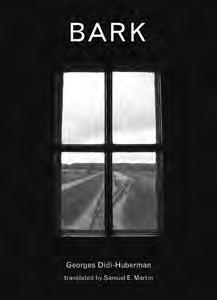
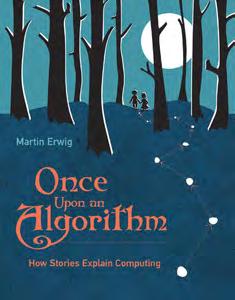

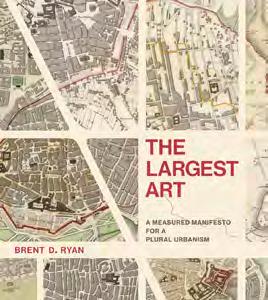




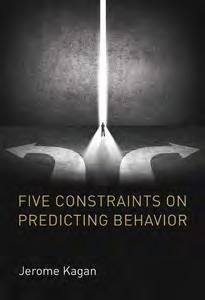

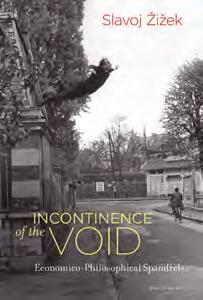
FALL 2018 | MITPRESS.MIT.EDU 158 RECENT HIGHLIGHTS $29.95T/£24.00 cloth 978-0-262-03661-0 $16.95T/£13.99 cloth 978-0-262-03684-9 $27.95T/£22.00 cloth 978-0-262-03663-4 $35.00S/£27.00 cloth 978-0-262-03579-8 $44.95T/£35.00 cloth 978-0-262-03667-2 $14.95T/£11.99 paper 978-0-262-53436-9 $34.95T/£27.00 cloth 978-0-262-03678-8 $29.95T/£24.00 paper 978-0-262-53429-1 $38.00S/£30.00 cloth 978-0-262-03691-7 $30.00S/£24.00 cloth 978-0-262-03652-8 $29.95T/£24.00 cloth 978-0-262-03649-8 $29.95T/£24.00 cloth 978-0-262-03681-8

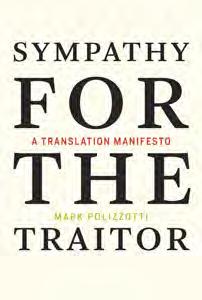




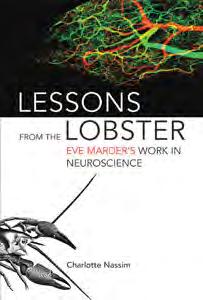


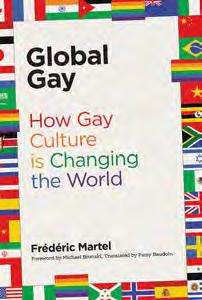
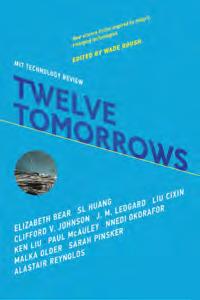

159 MITPRESS.MIT.EDU | FALL 2018 RECENT HIGHLIGHTS
cloth
$22.95T/£17.99 cloth
cloth
$19.95T/£14.99 paper 978-0-262-03764-8 $24.95T/£20.00 cloth
$29.95T/£24.00 cloth
cloth
$19.95T/£14.99 paper 978-0-262-03796-9 $29.95T/£24.00 cloth 978-0-262-03768-6
cloth
$29.95T/£24.00
978-0-262-03776-1
978-0-262-03799-0 $29.95T/£24.00
978-0-262-03770-9 $19.95T/£14.99 paper 978-0-262-03777-8
978-0-262-03800-3
978-0-262-03772-3 $27.95T/£22.00
978-0-262-03778-5
$27.95T/£22.00
978-0-262-03781-5 $19.95T/£14.99 paper 978-0-262-53542-7
$14.95T/£11.99 cloth 978-0-262-03711-2


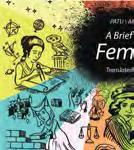
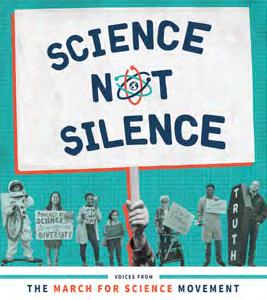
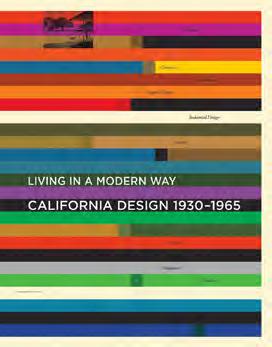
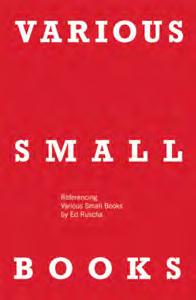



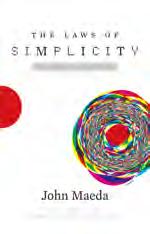



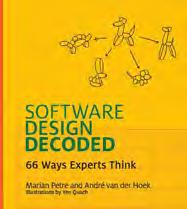
FALL 2017 | MITPRESS.MIT.EDU 160 GIFT BOOKS
$19.95T/£14.99 cloth 978-0-262-03518-7
$17.95T/£10.95 cloth 978-0-262-06266-4 $17.95T/£10.95 cloth 978-0-262-01621-6 $29.95T/£24.00 cloth 978-0-262-02760-1 $23.95T/£18.99 cloth 978-0-262-13472-9 $49.95T/£40.00 cloth 978-0-262-01349-9 $43.95T/£34.00 cloth 978-0-262-01877-7 $40.95T/£32.00 cloth 978-0-262-01520-2
$49.95T/£40.00 cloth 978-0-262-03480-7
$65.95T/£51.00 cloth 978-0-262-01607-0 $14.95T/£11.99 paper 978-0-262-03810-2
GIFT BOOKS









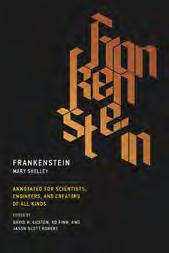

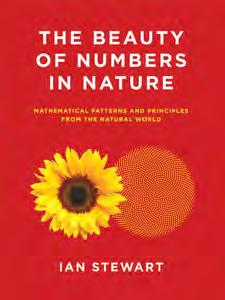

$19.95T/£14.99 paper 978-0-262-53328-7 $34.95T/£27.00 cloth 978-0-262-03574-3 $37.95T/£30.00 cloth 978-0-262-13302-9 $24.95T cloth 978-0-262-03635-1 $210.95T/£166.00cloth 978-0-262-23033-9 $55.95T/£44.00 cloth 978-0-262-02901-8 $43.95T/£36.95 cloth 978-0-262-01548-6 $34.95T/£27.00 paper 978-0-262-52928-0 GIFT BOOKS $24.95T cloth 978-0-262-53428-4 $100.00T/£77.00 cloth 978-0-262-03696-2


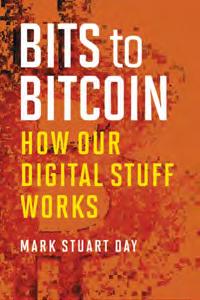



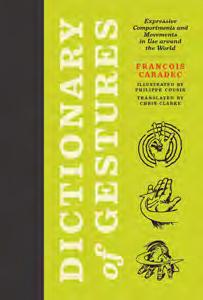
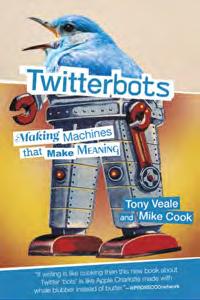
NONPROFIT ORG. US POSTAGE PAID PERMIT NO. 54518 BOSTON, MA 02142 THE MIT PRESS One Rogers Street Cambridge,
02142-1209
978-0-262-53647-9 9 780262536479 90000
MA
USA

 Cover photo copyright Felice C. Frankel, from Picturing Science and Engineering
Illustration from Atlas of Poetic Botany.
Cover photo copyright Felice C. Frankel, from Picturing Science and Engineering
Illustration from Atlas of Poetic Botany.


 Cass R. Sunstein
Cass R. Sunstein




 Francis Hallé with Éliane Patriarca translated by Erik Butler
Francis Hallé with Éliane Patriarca translated by Erik Butler












 Helfand
Helfand
 Felice C. Frankel
Felice C. Frankel











 Morris foreword by Sherry Turkle
Morris foreword by Sherry Turkle







 Michael Batty
Michael Batty

















 Kevin Werbach
Kevin Werbach













 edited by Michael Meredith, Hilary Sample, & MOS foreword by Martino Srierli afterword by Raymund Ryan
edited by Michael Meredith, Hilary Sample, & MOS foreword by Martino Srierli afterword by Raymund Ryan



 Christopher Howard
Christopher Howard







 Chiong, Fidel A. Danieli, Isabel Graw, Rosalind Krauss, Janet Kraynak, Pamela M. Lee, John Miller, Robert Pincus-Witten, Joan Simon, Robert Slifkin, Marcia Tucker, Anne M. Wagner, Taylor Walsh, and Jeffrey Weiss
Chiong, Fidel A. Danieli, Isabel Graw, Rosalind Krauss, Janet Kraynak, Pamela M. Lee, John Miller, Robert Pincus-Witten, Joan Simon, Robert Slifkin, Marcia Tucker, Anne M. Wagner, Taylor Walsh, and Jeffrey Weiss




 edited by Junot Díaz
edited by Junot Díaz




 Chris Kraus
Chris Kraus


 Gary Indiana
edited by Bruce Hainley
Gary Indiana
edited by Bruce Hainley




 Heike Geissler is a freelance German writer and translator based in Leipzig. She has published a number of books, including the novel Rosa, which was awarded the Alfred Döblin Prize in 2001.
Heike Geissler is a freelance German writer and translator based in Leipzig. She has published a number of books, including the novel Rosa, which was awarded the Alfred Döblin Prize in 2001.





 Franco “Bifo” Berardi
Franco “Bifo” Berardi



 Fred Vermorel
Fred Vermorel



 edited by Matthew Harle and James Machin
edited by Matthew Harle and James Machin


 edited by David Tibet
edited by David Tibet

 David
David





















 Anna-Sophie Springer and Etienne Turpin
Anna-Sophie Springer and Etienne Turpin





 Gretchen Ki Steidle
Gretchen Ki Steidle













 Bonnie Marranca, editor
Bonnie Marranca, editor






 Richard N. Aslin, editor
Richard N. Aslin, editor












































































































